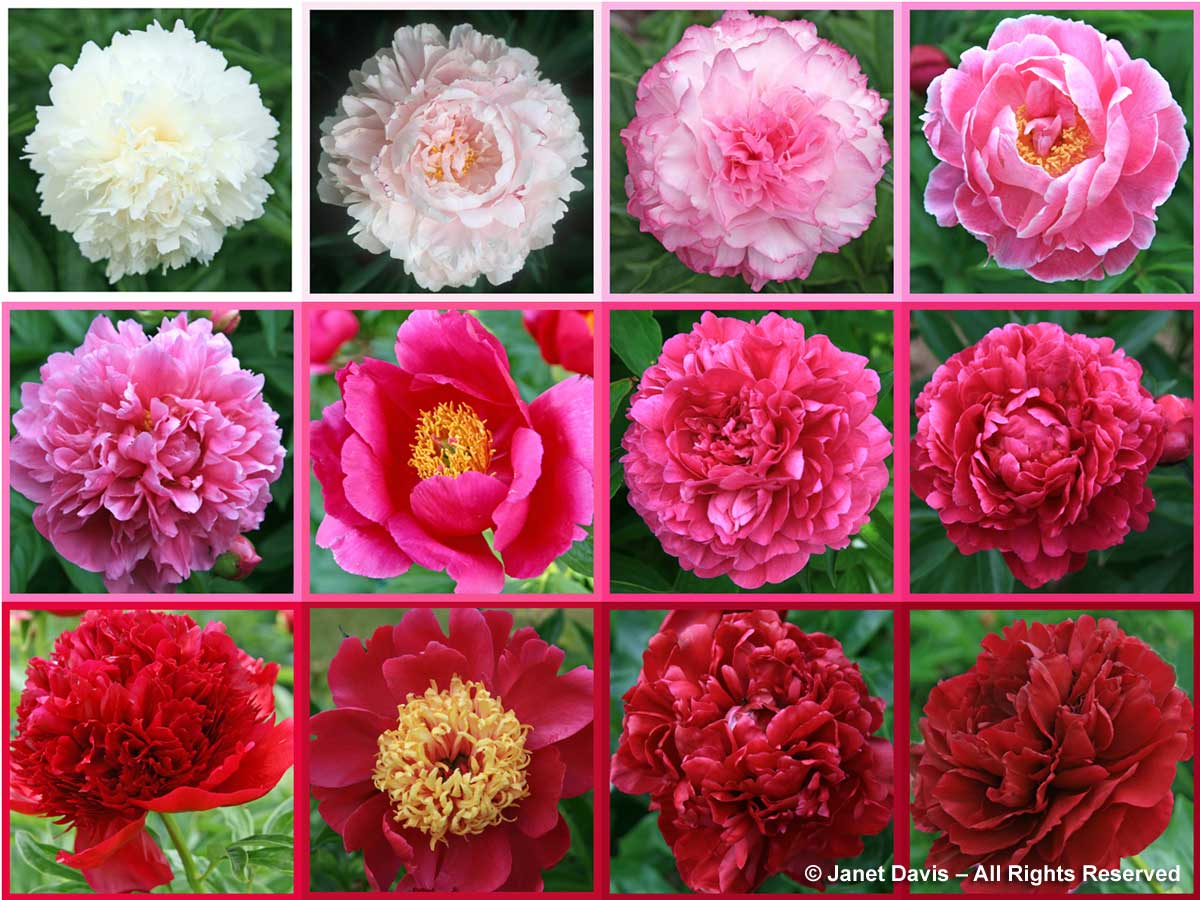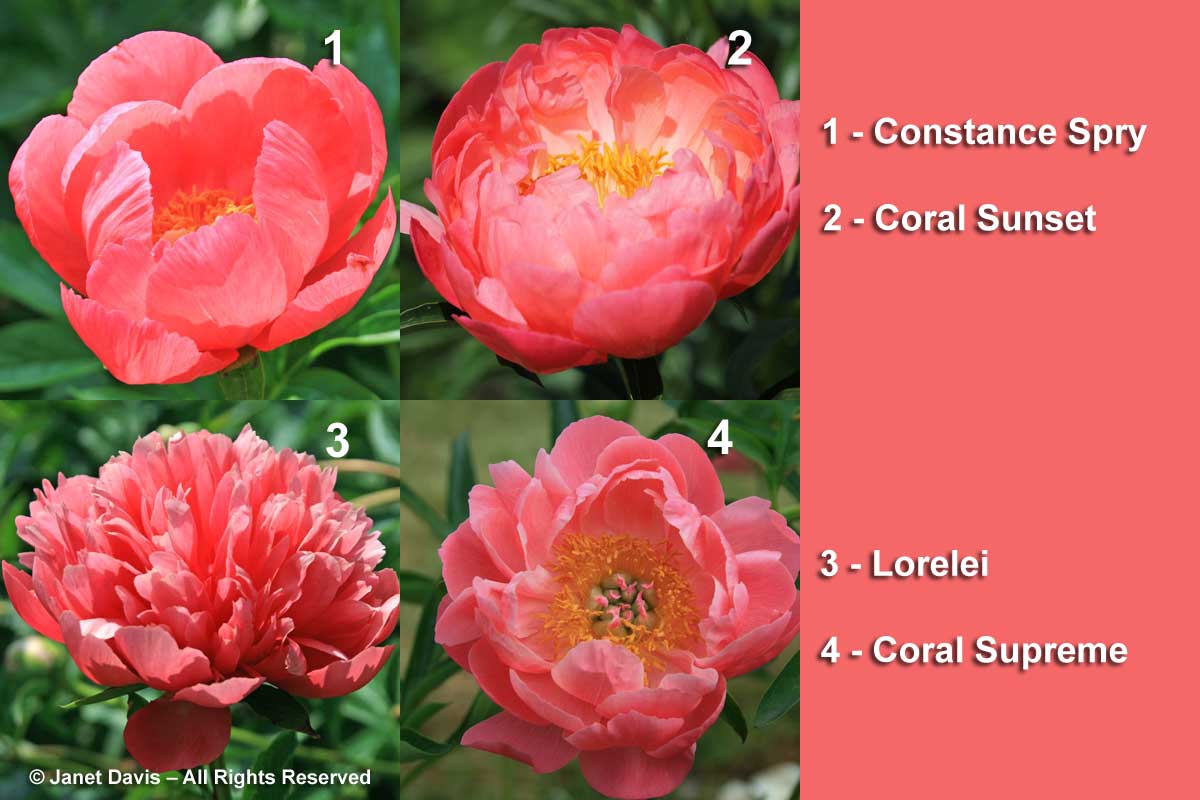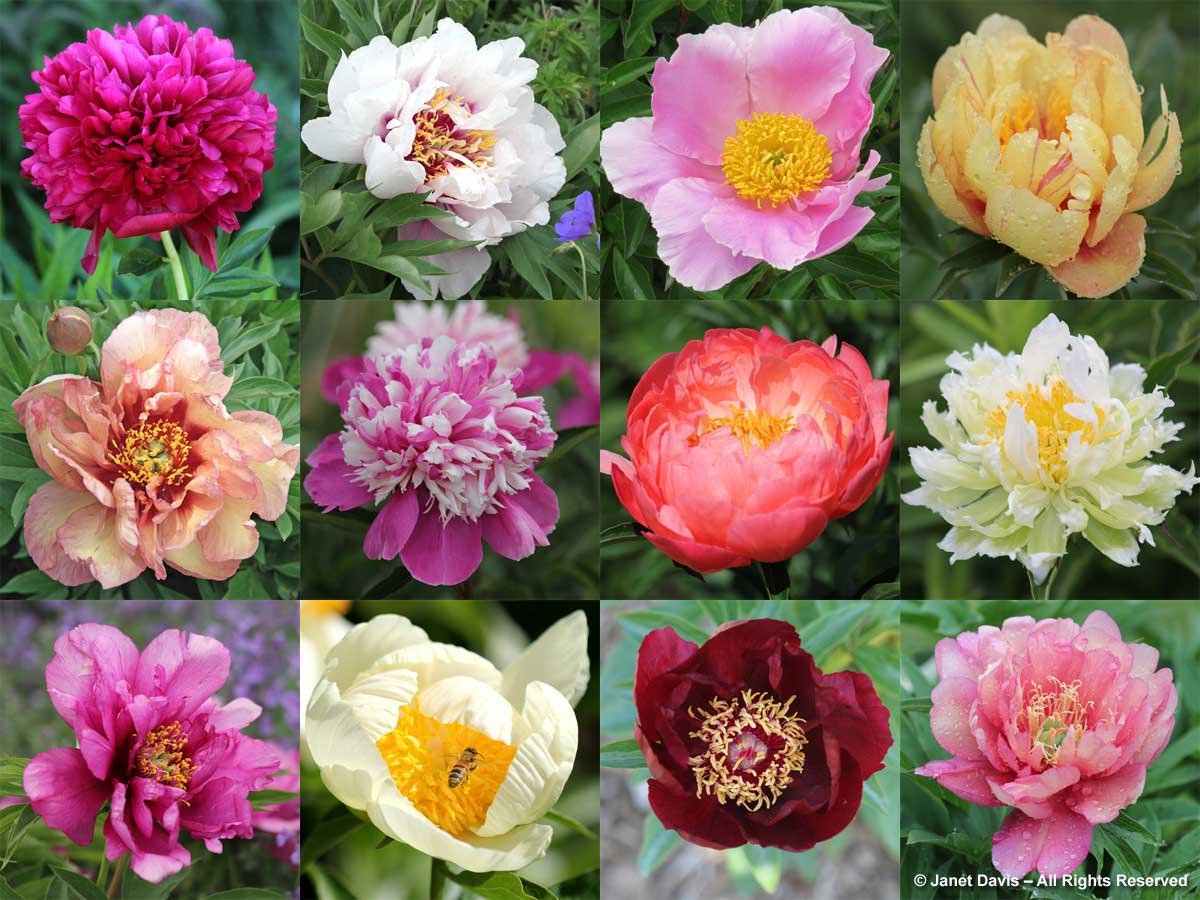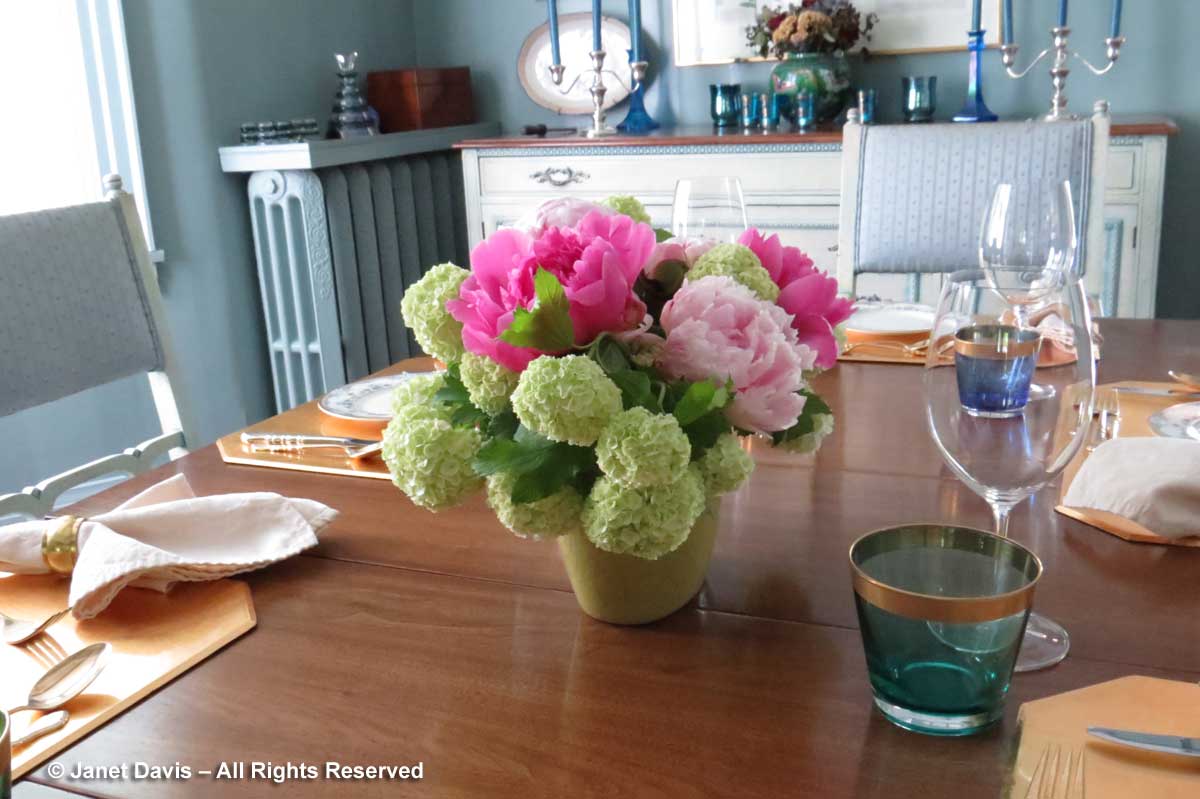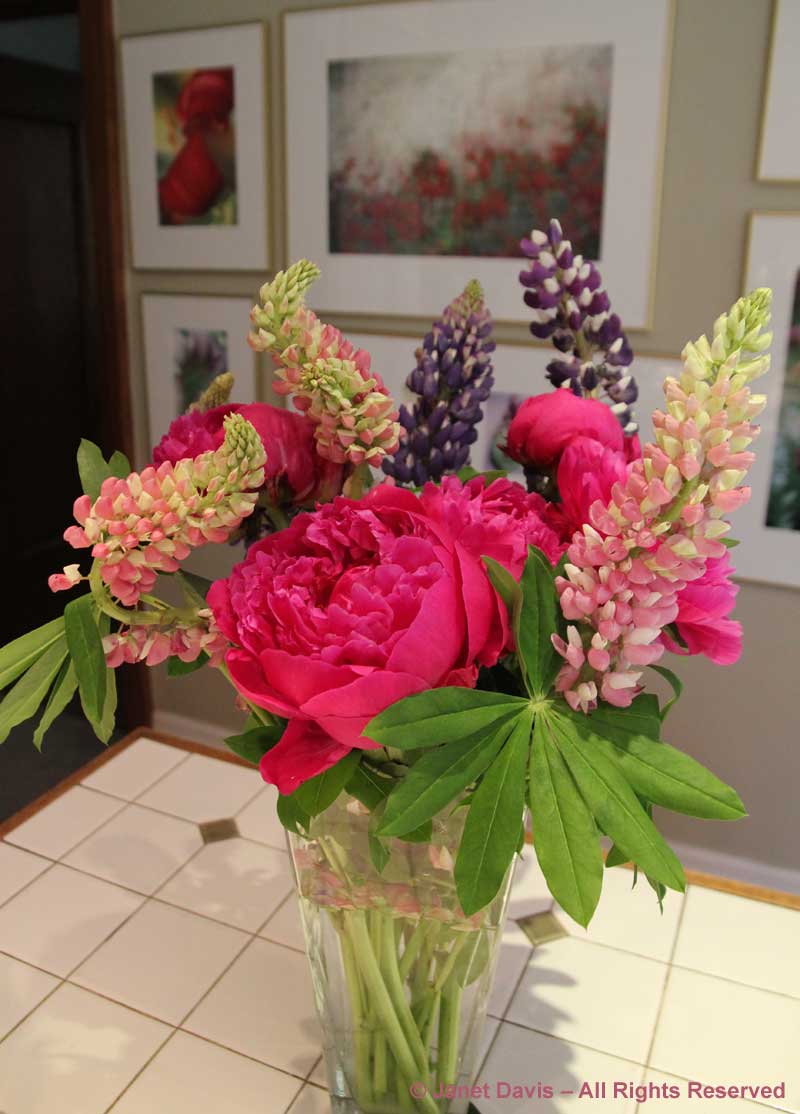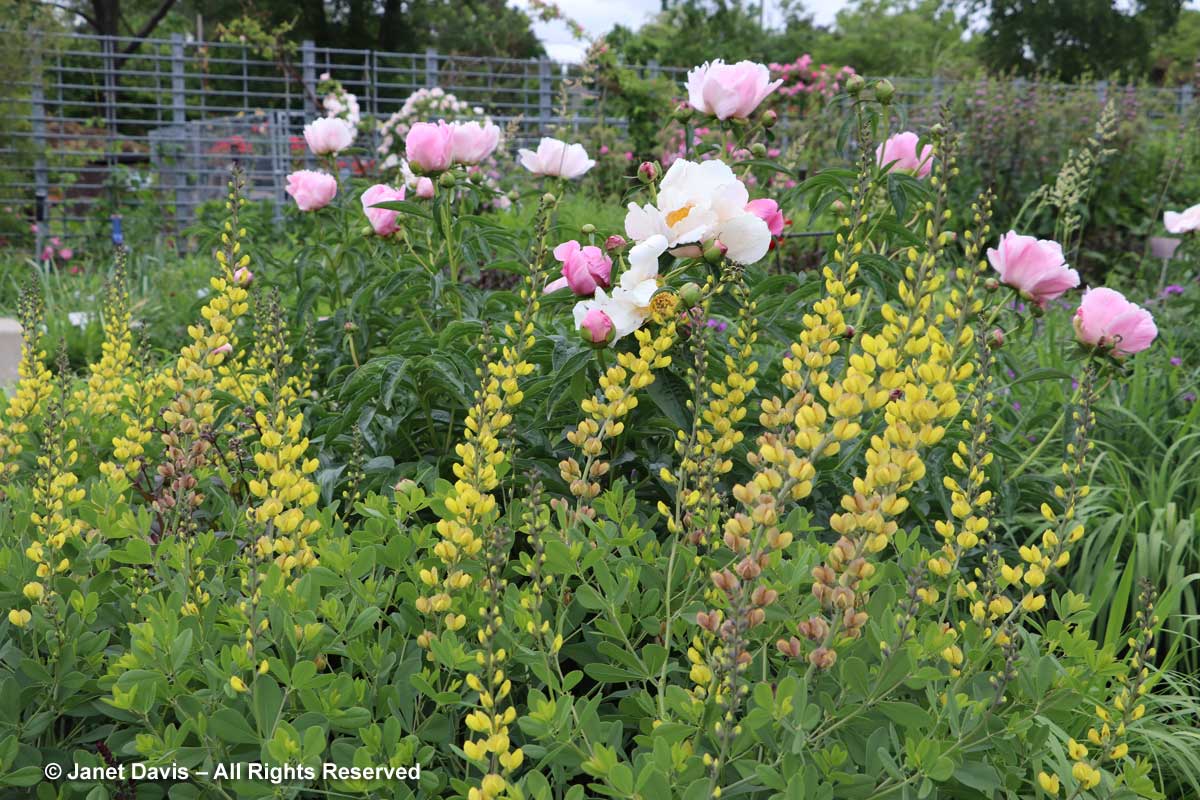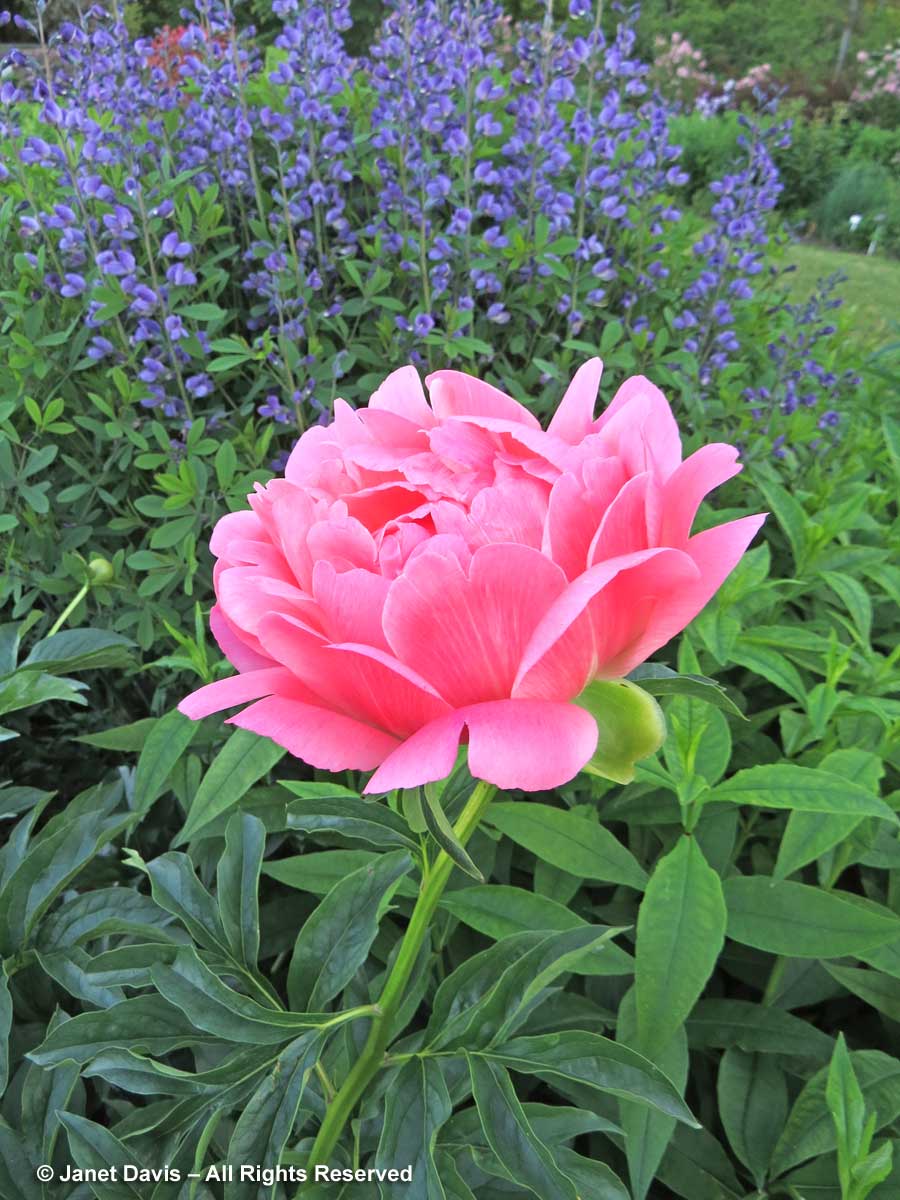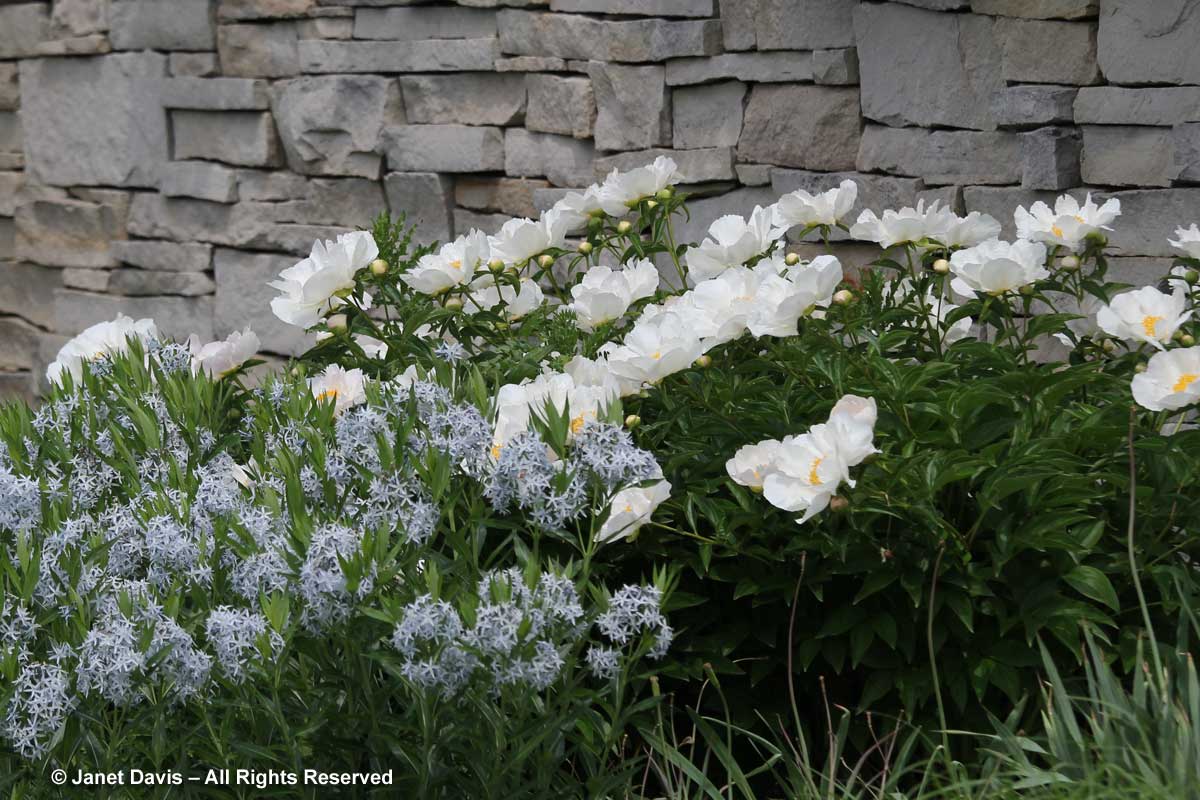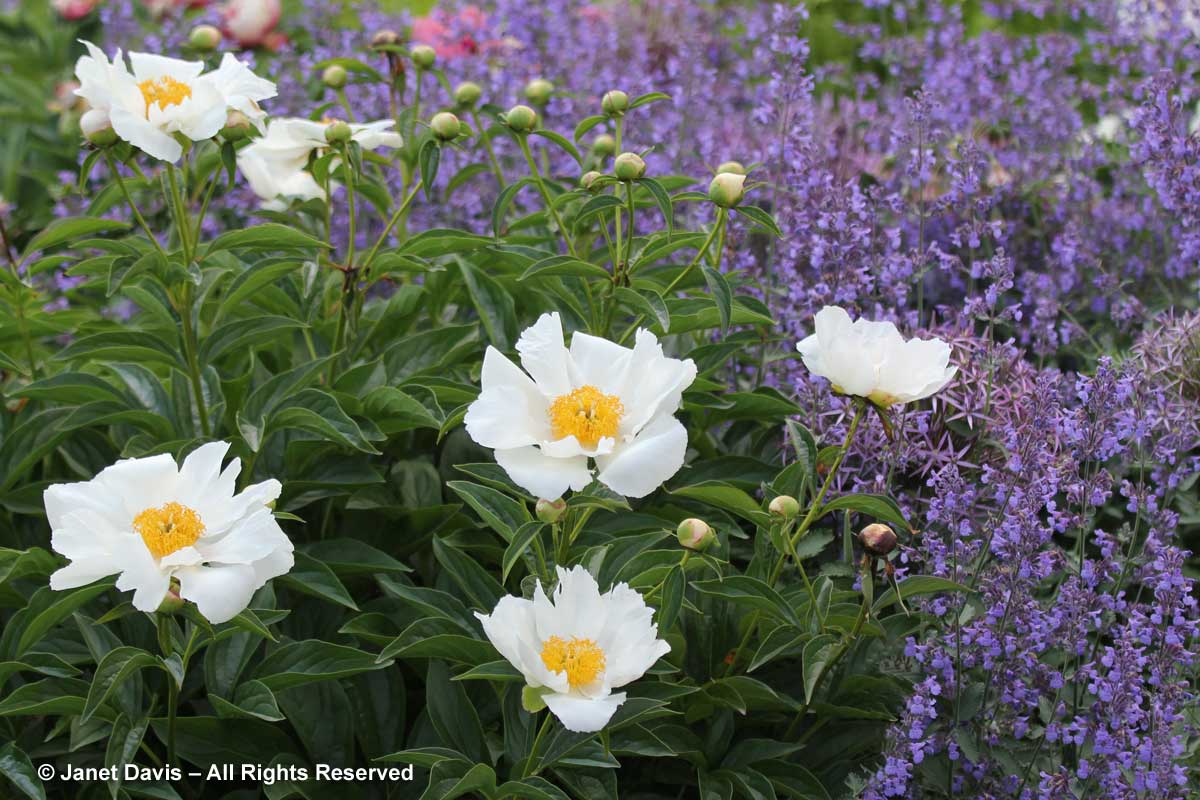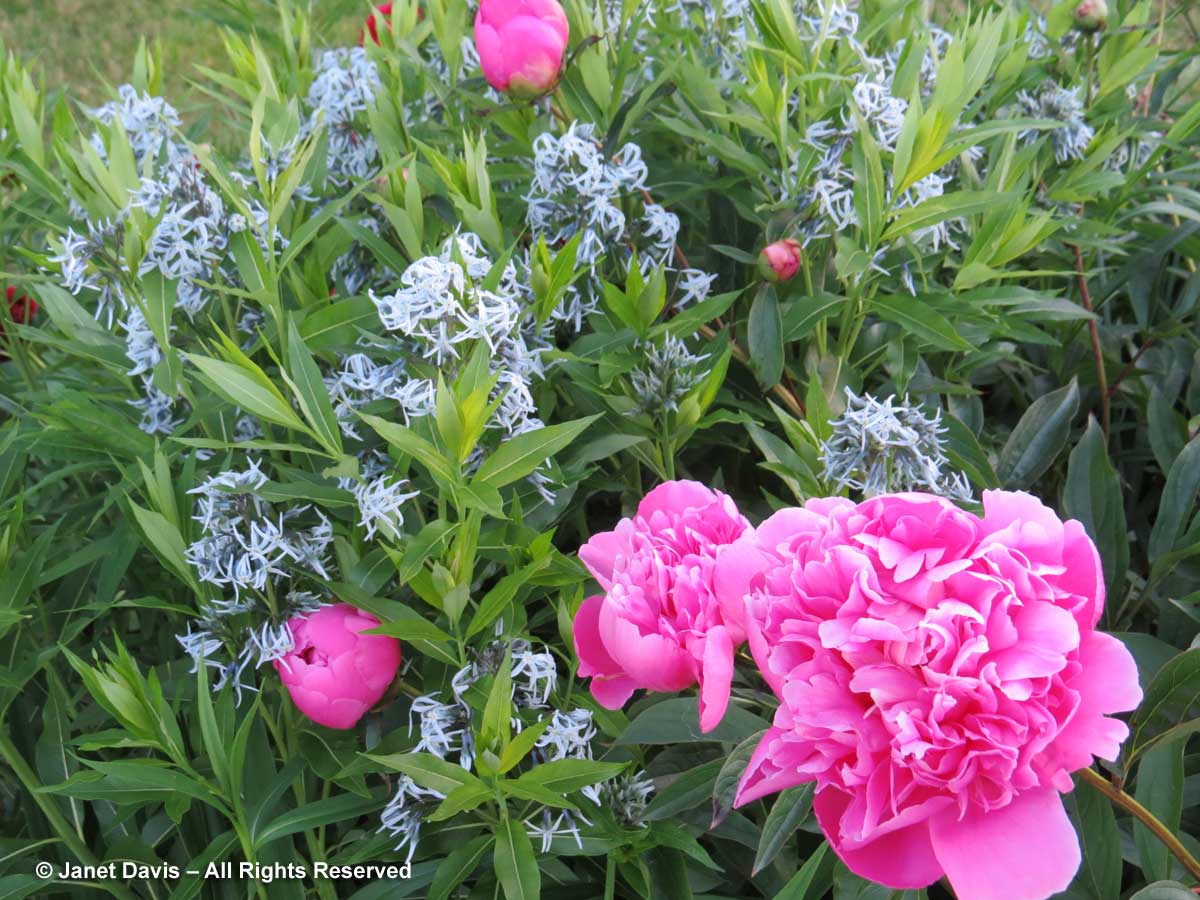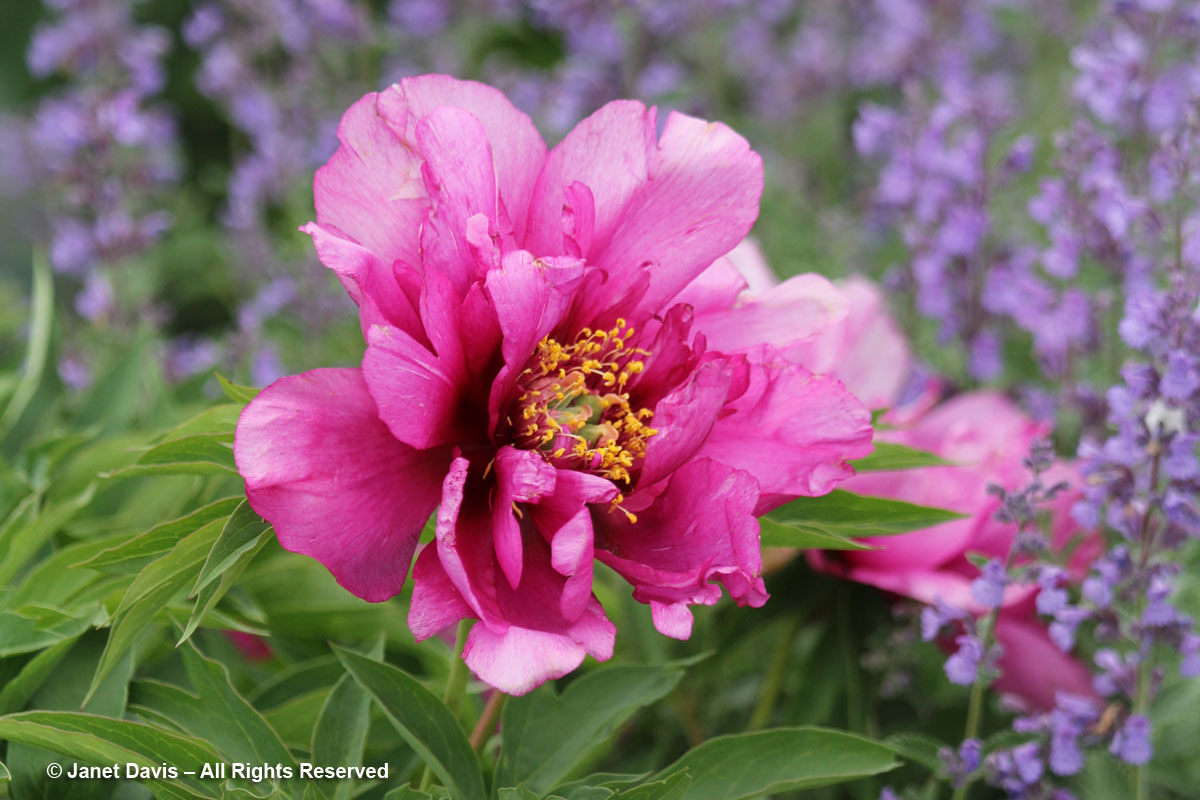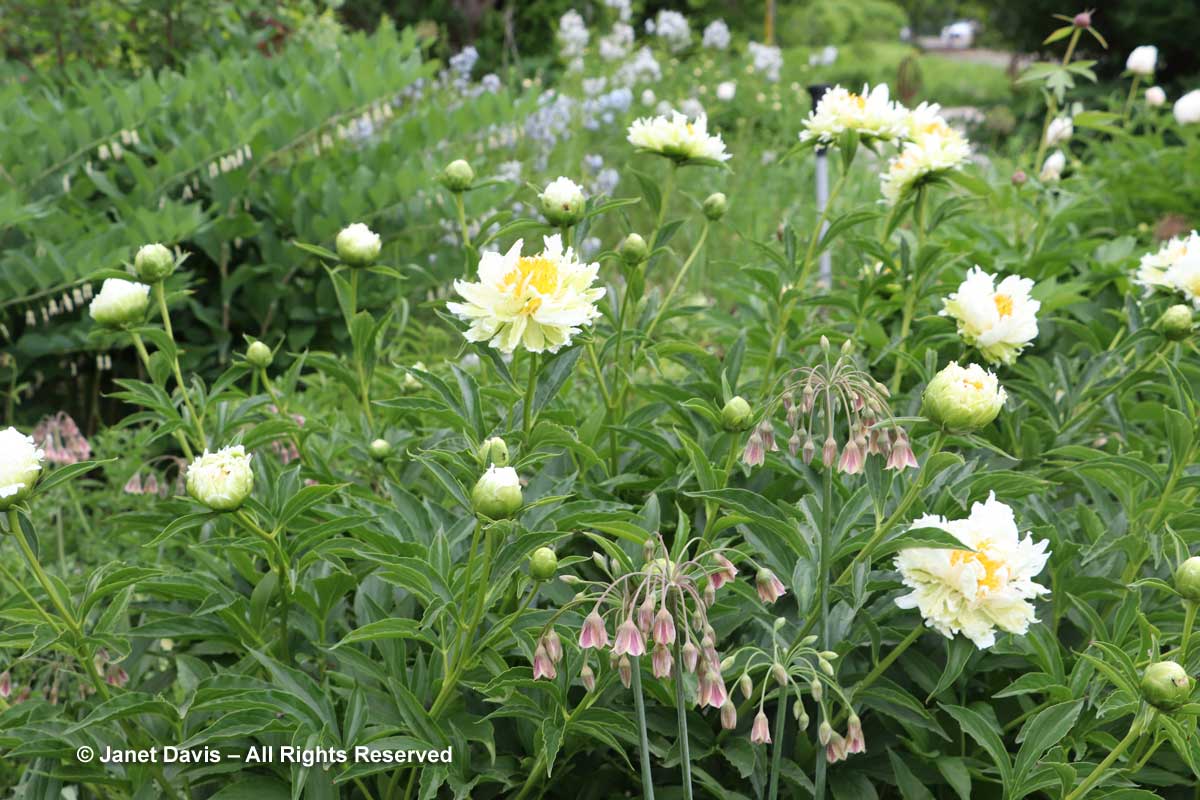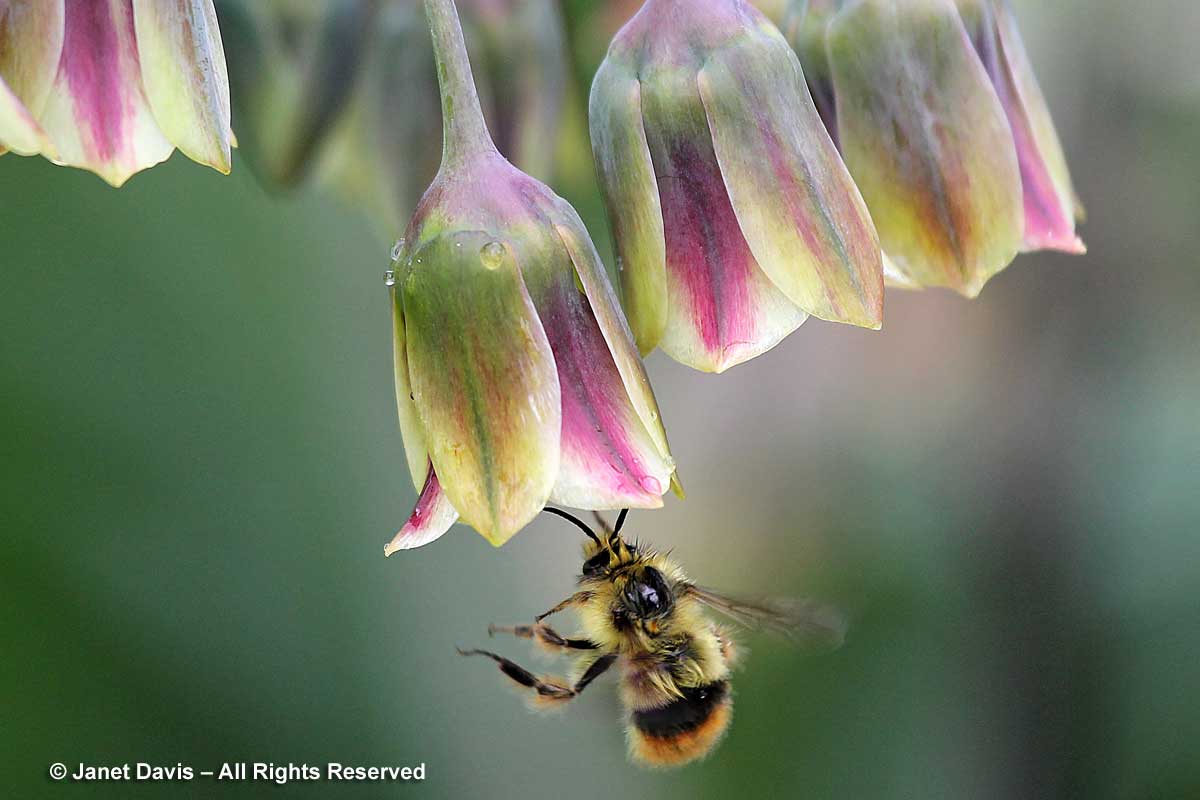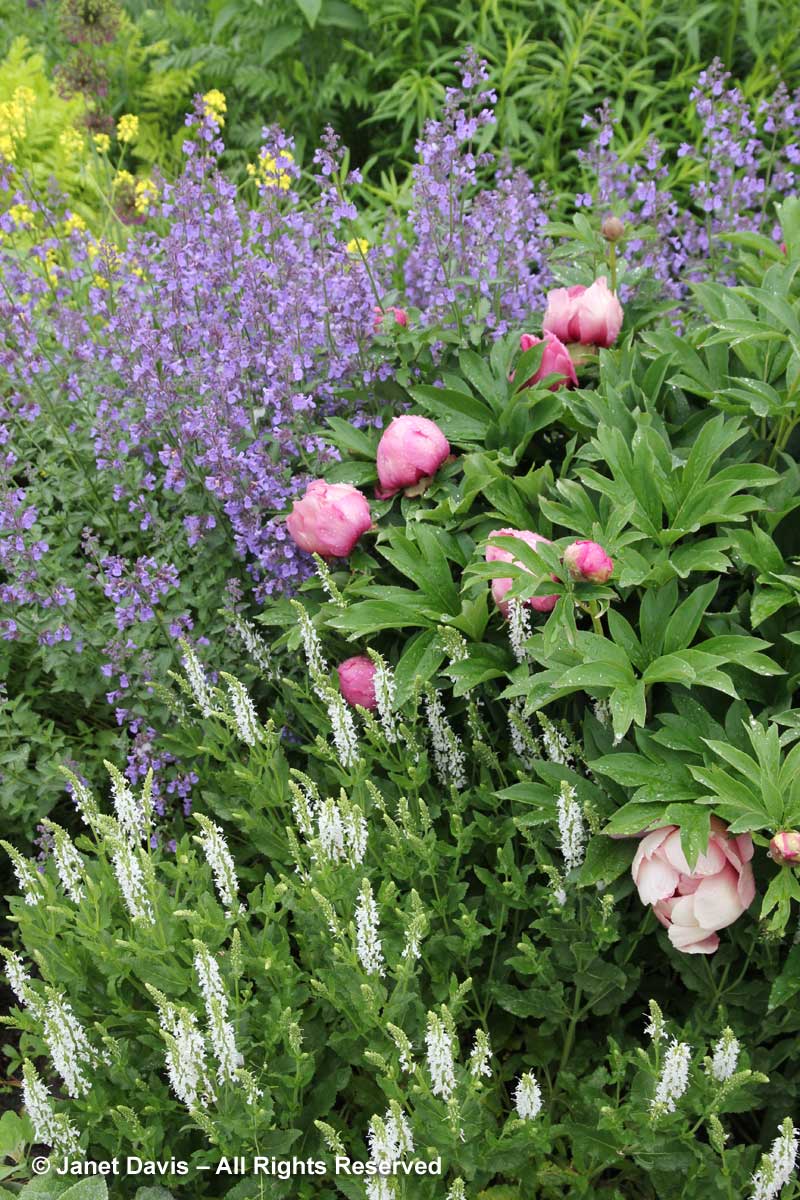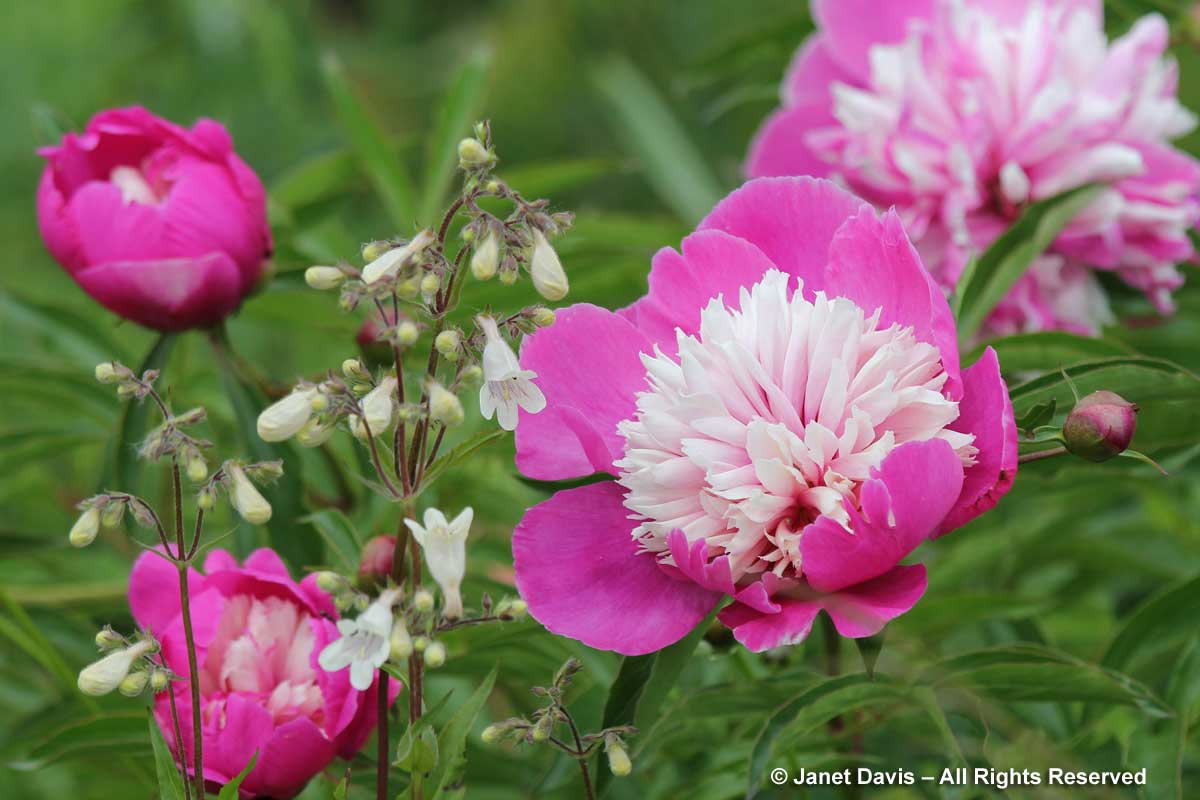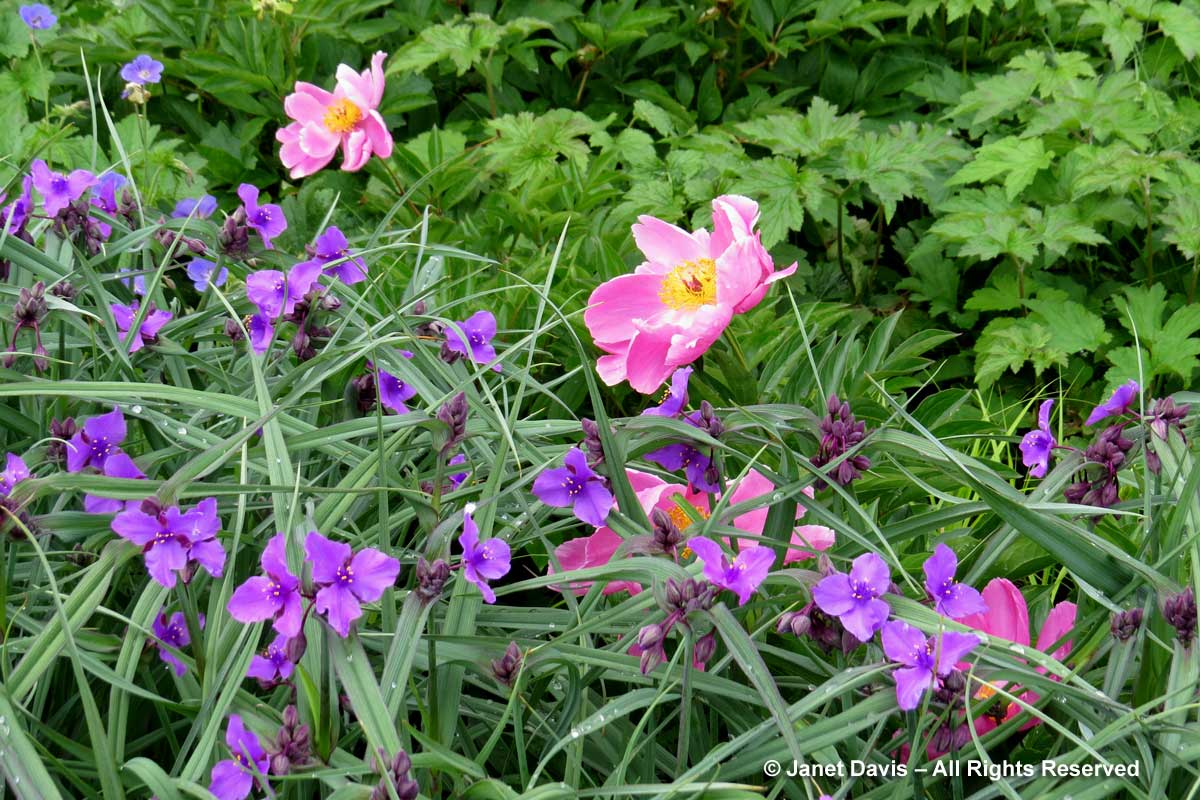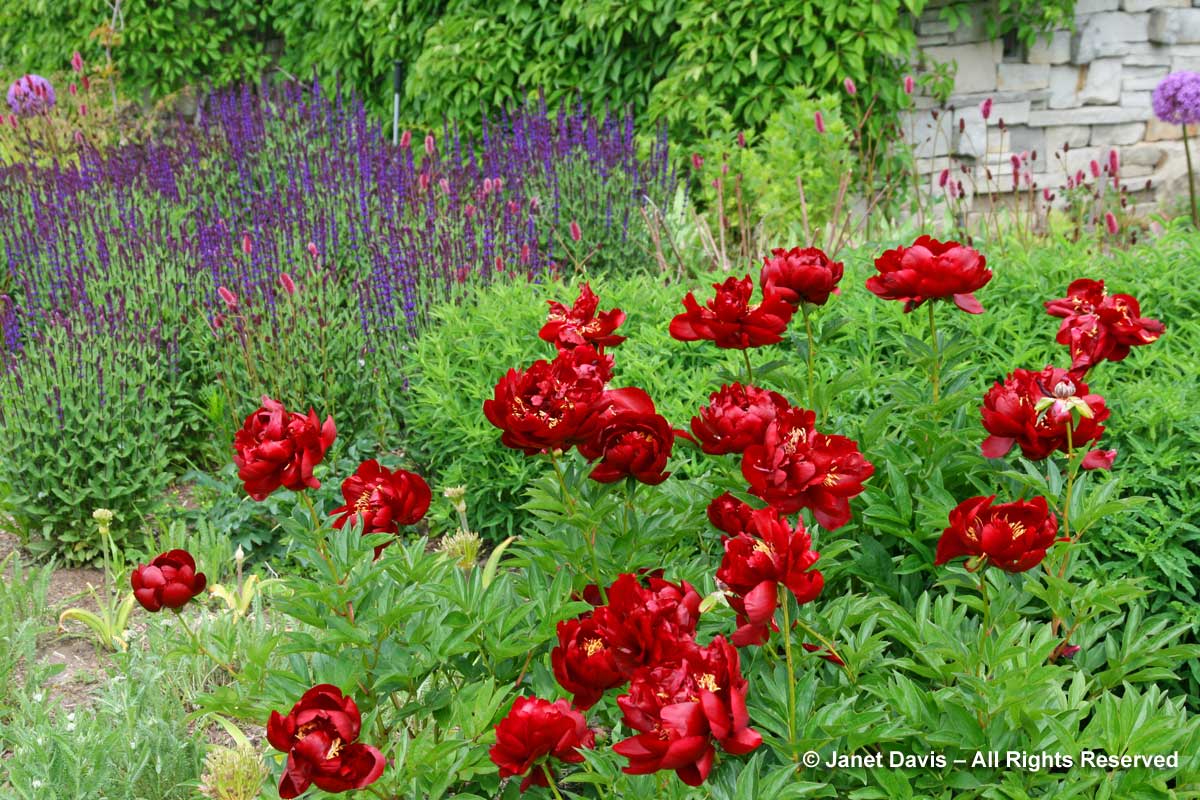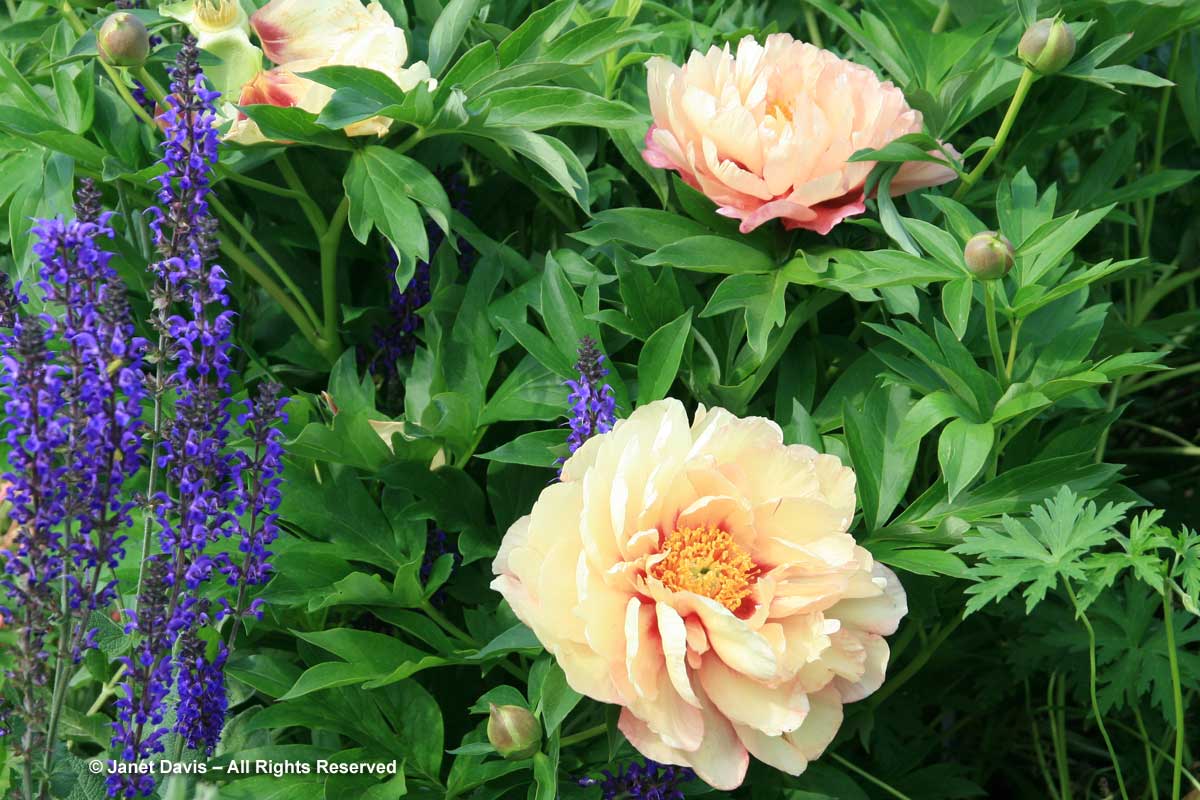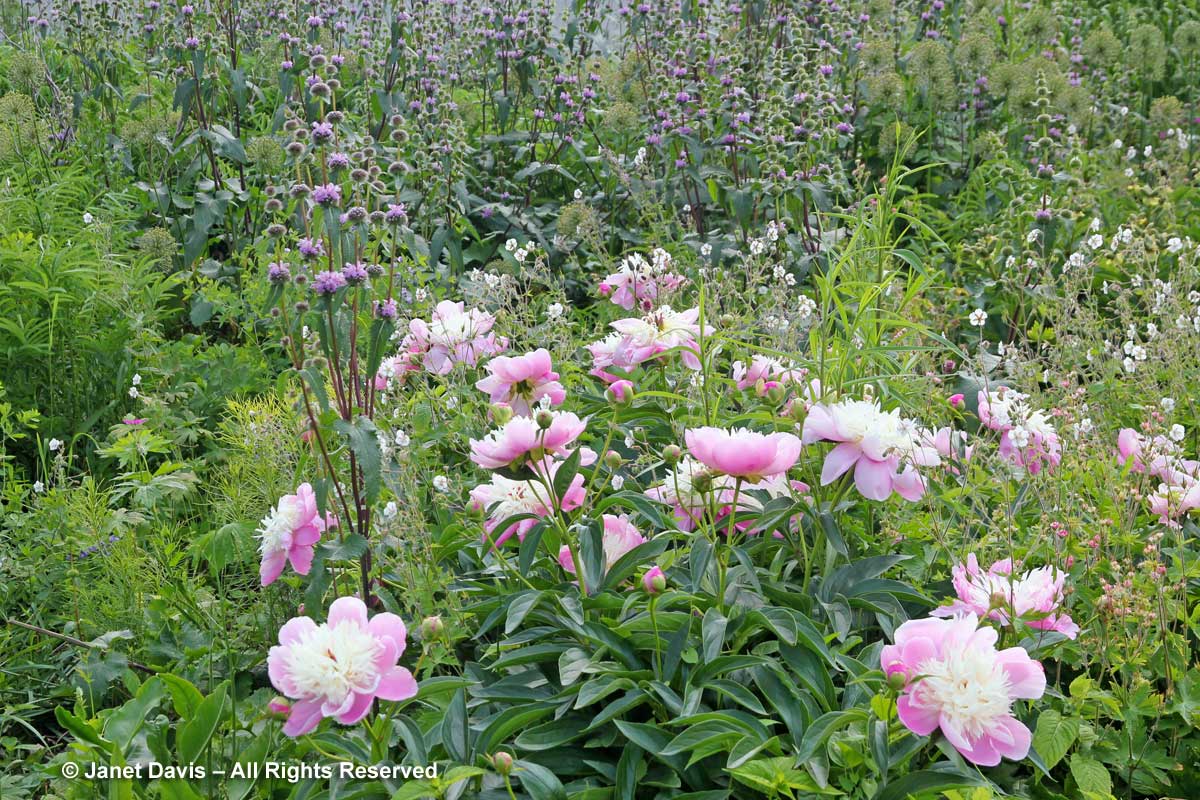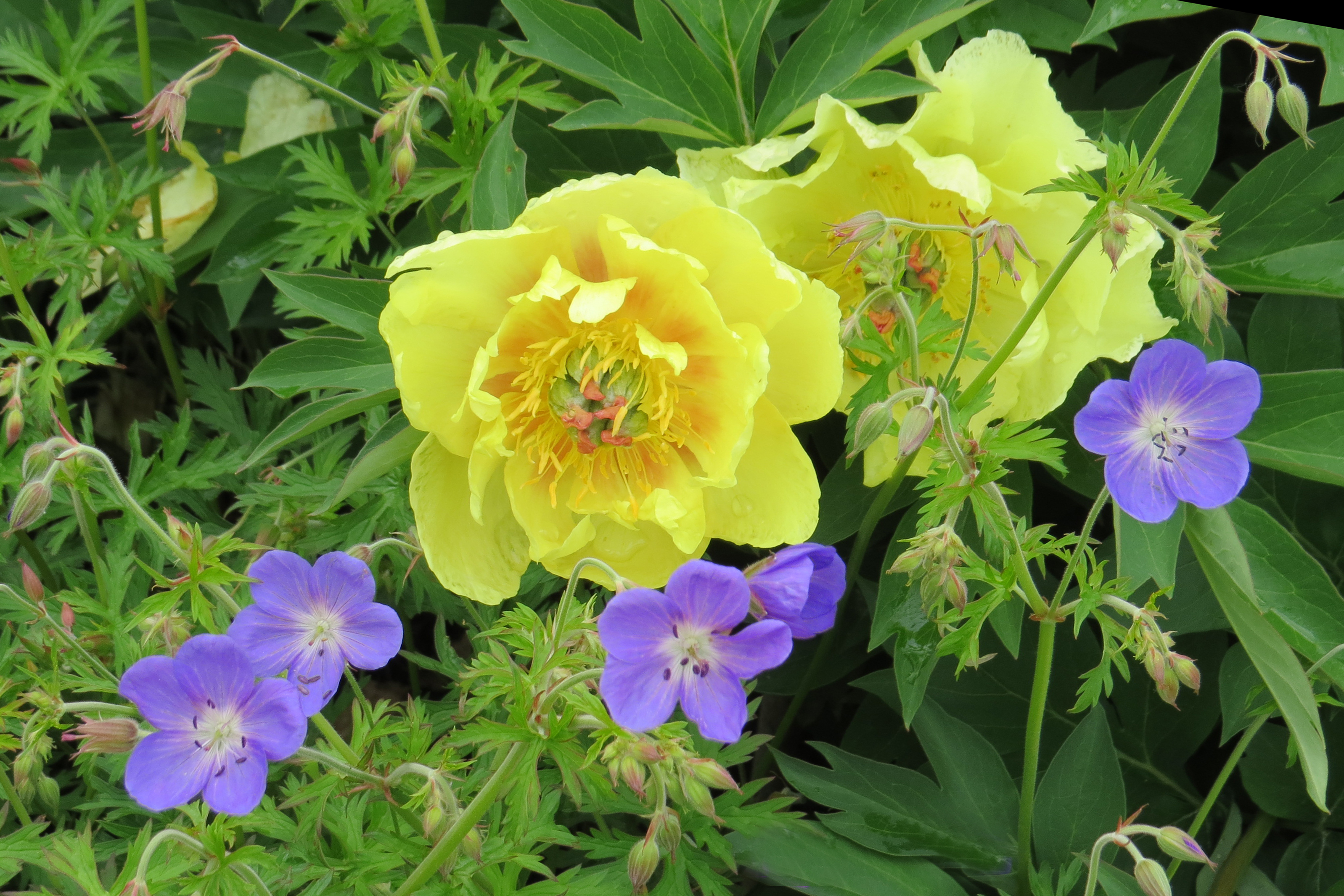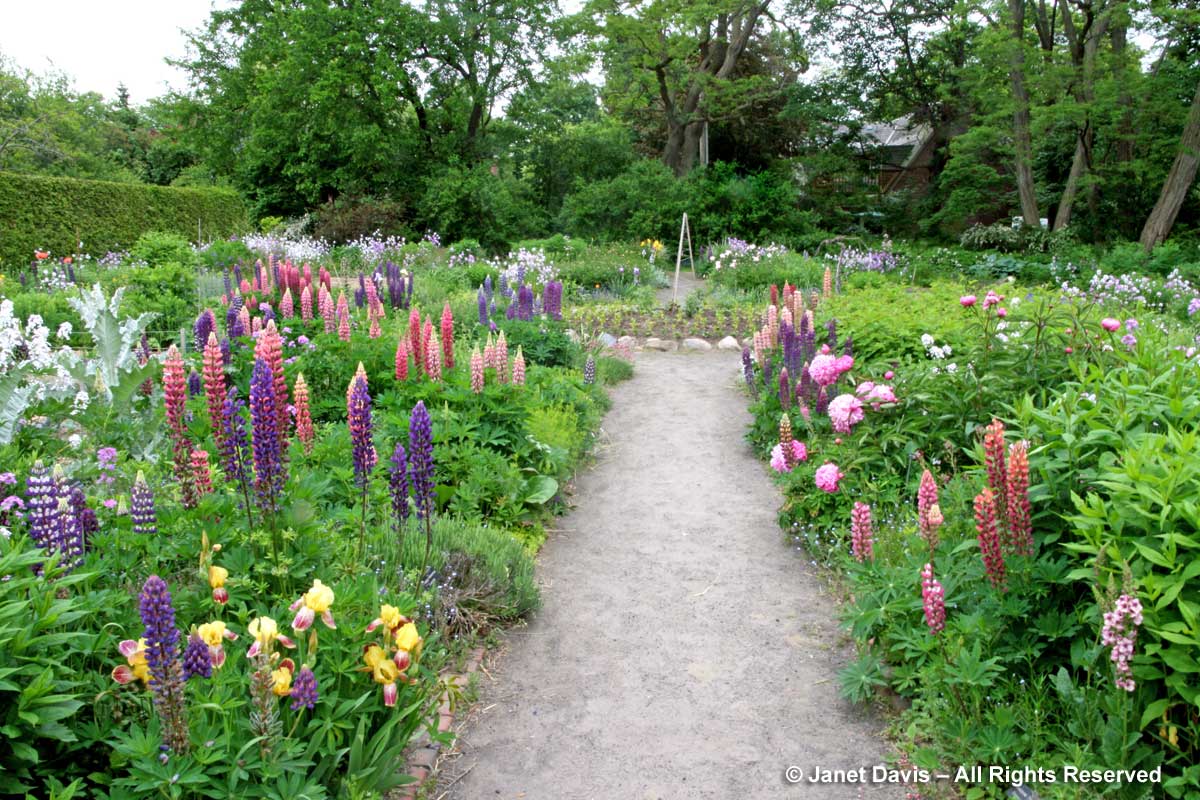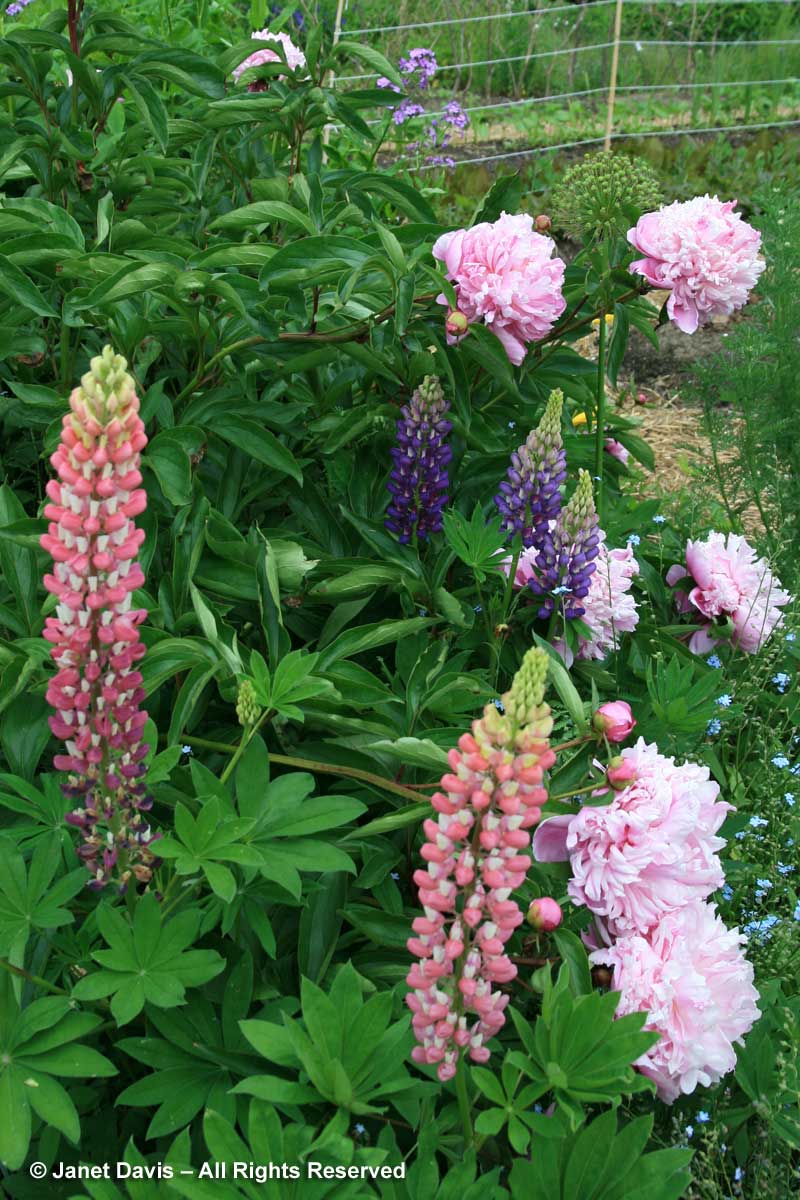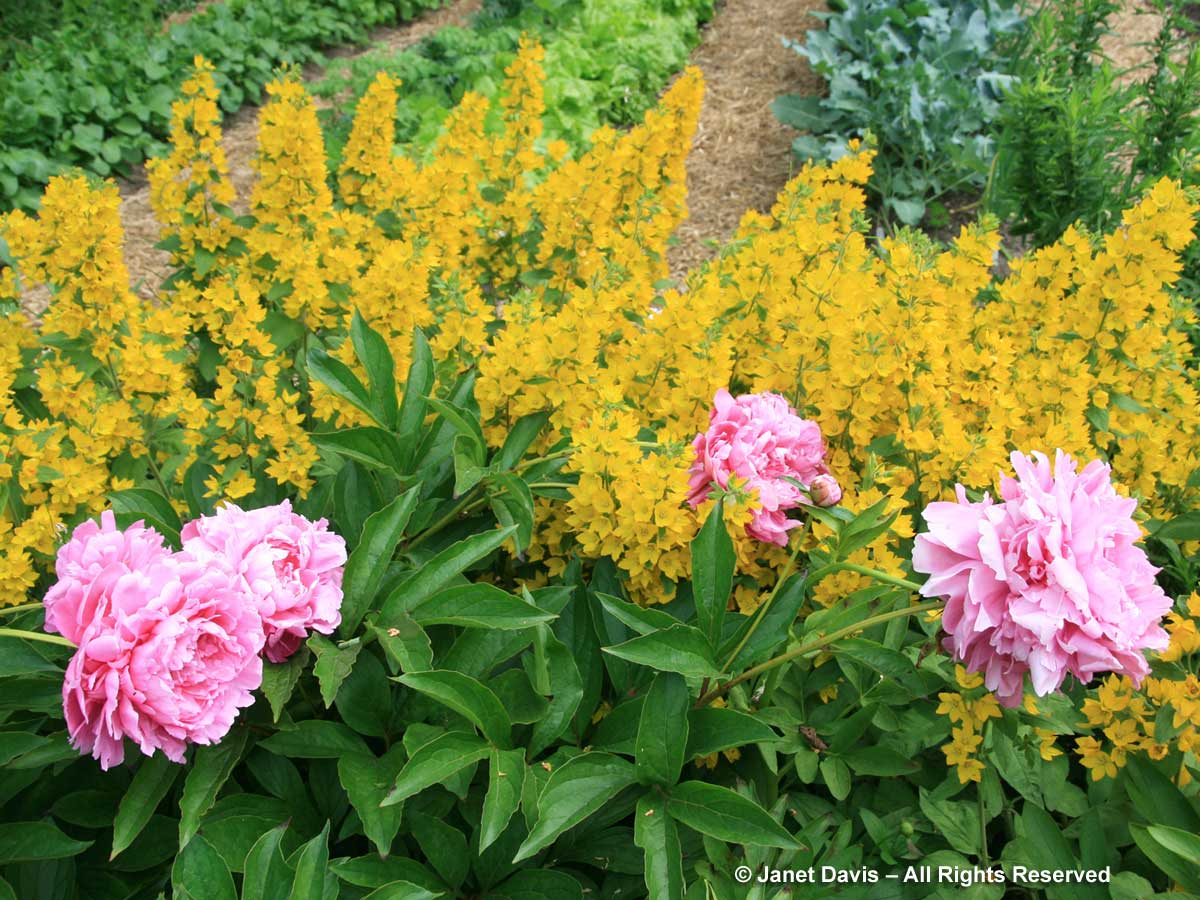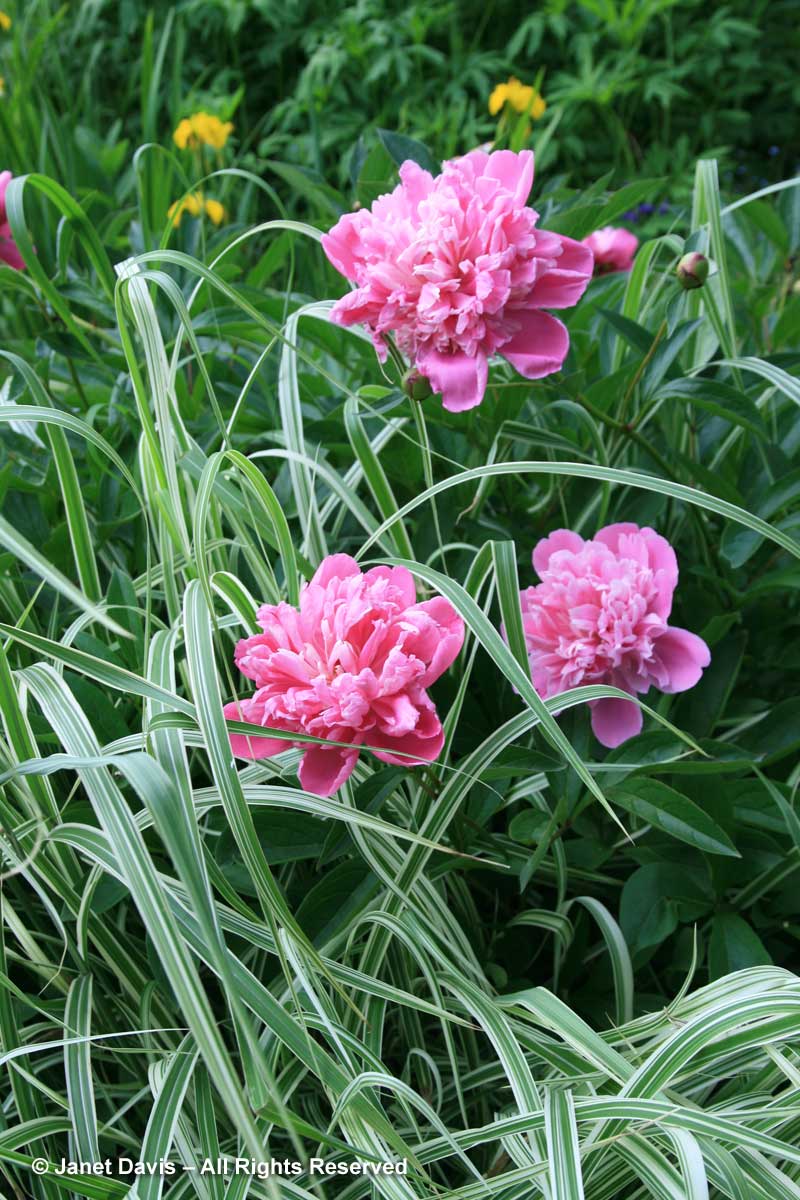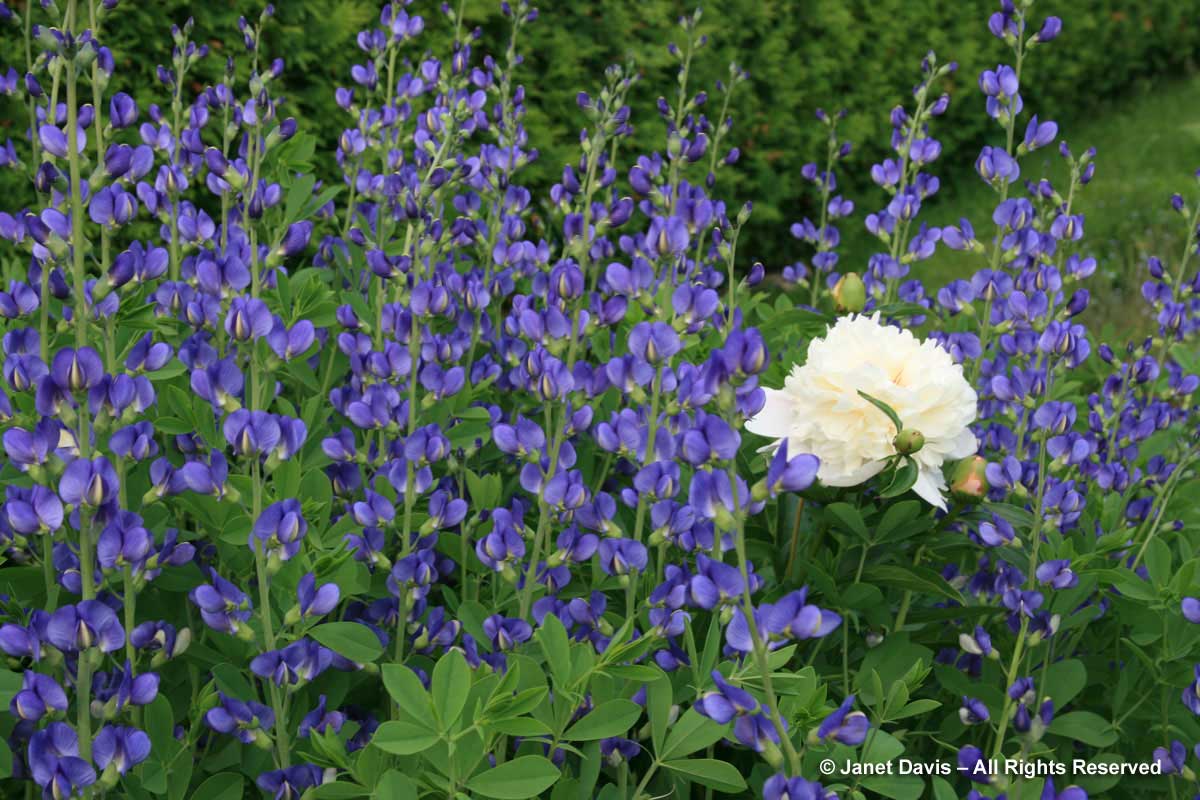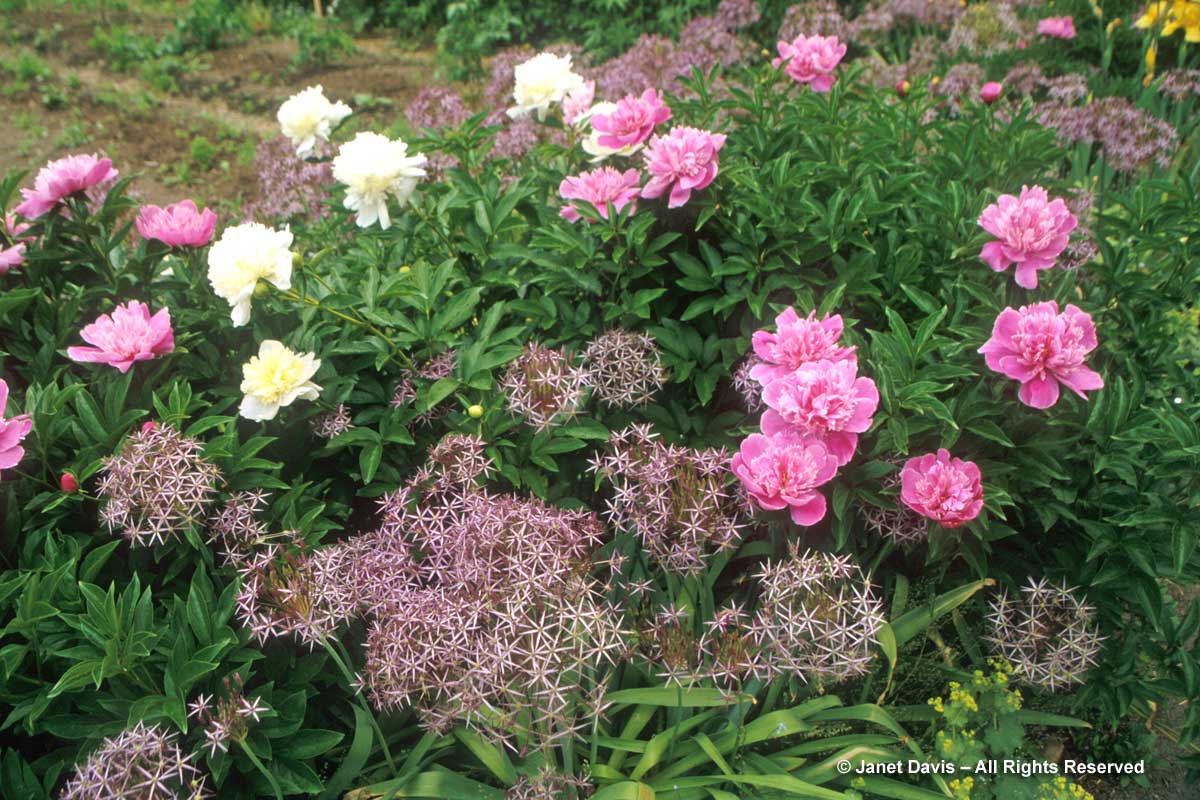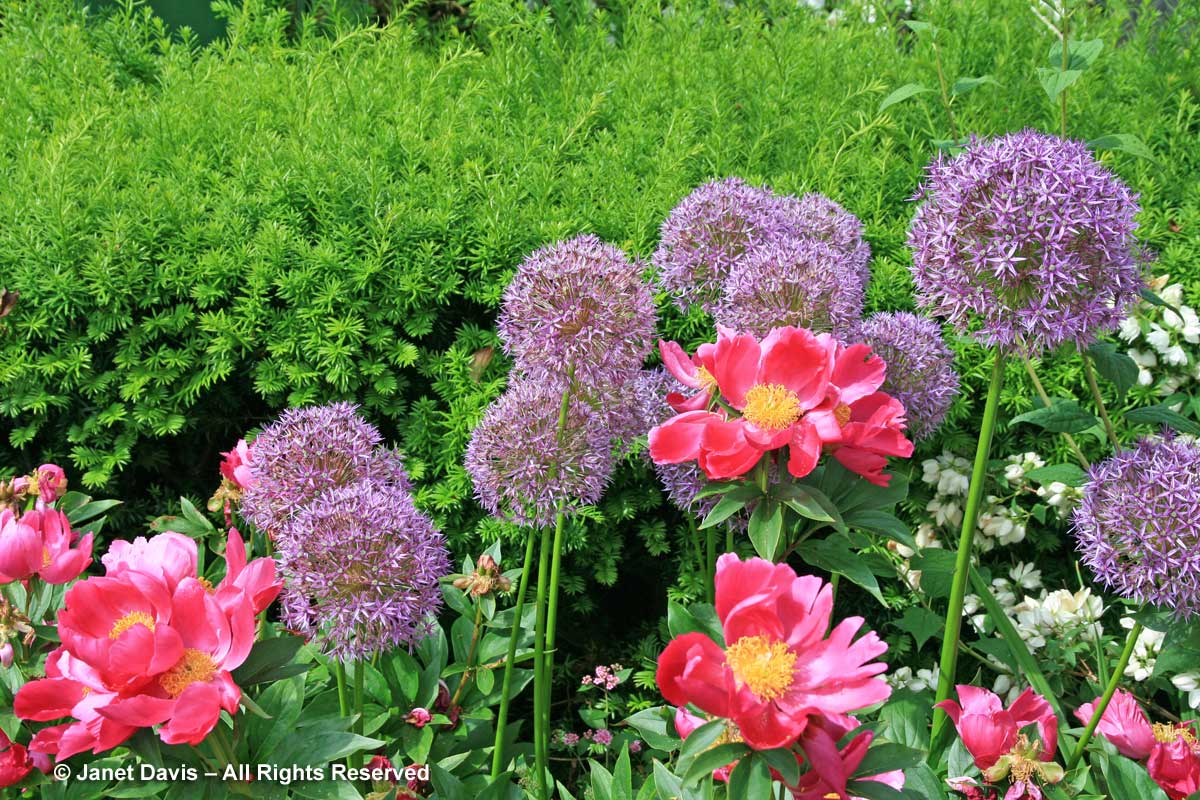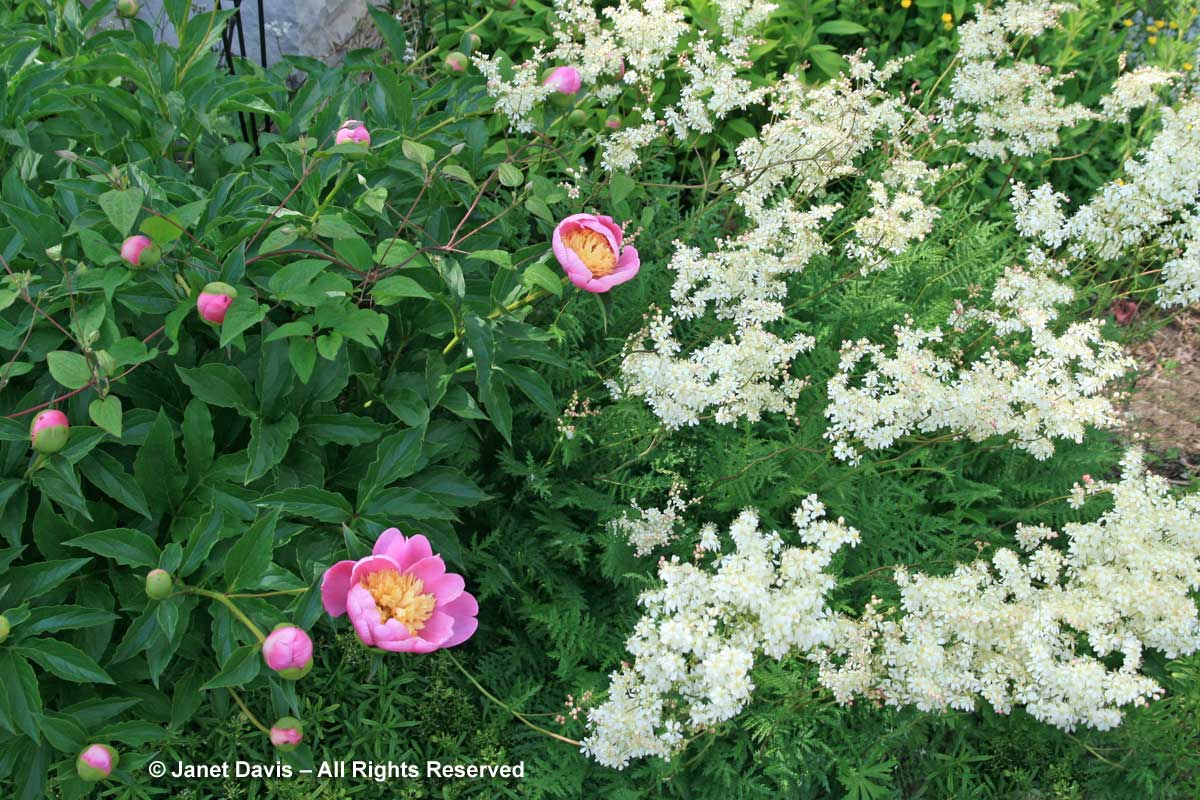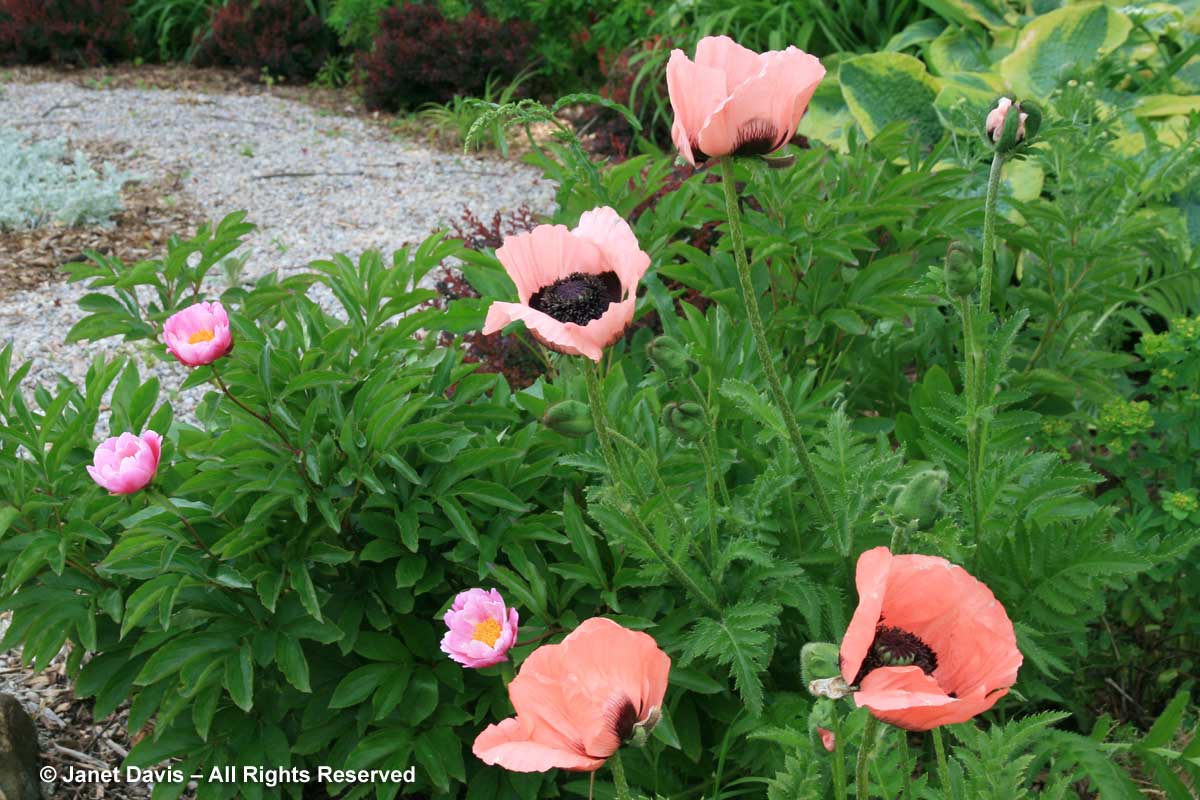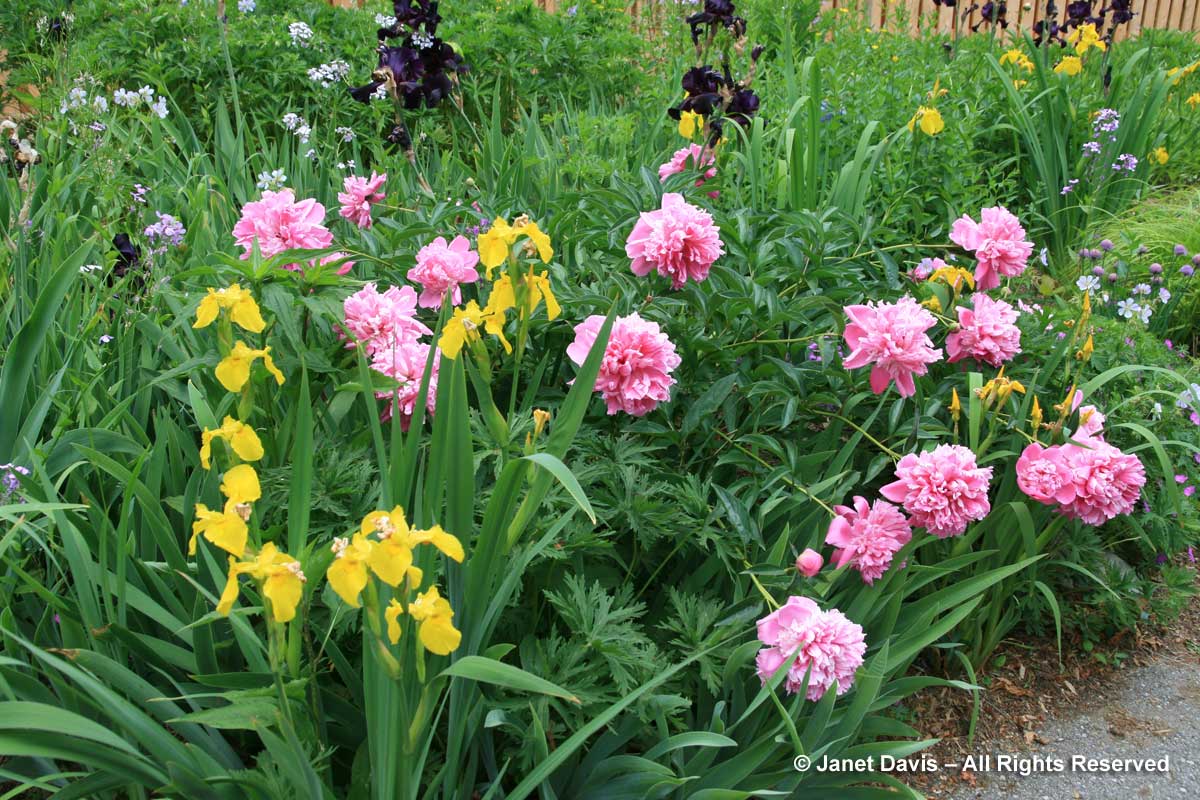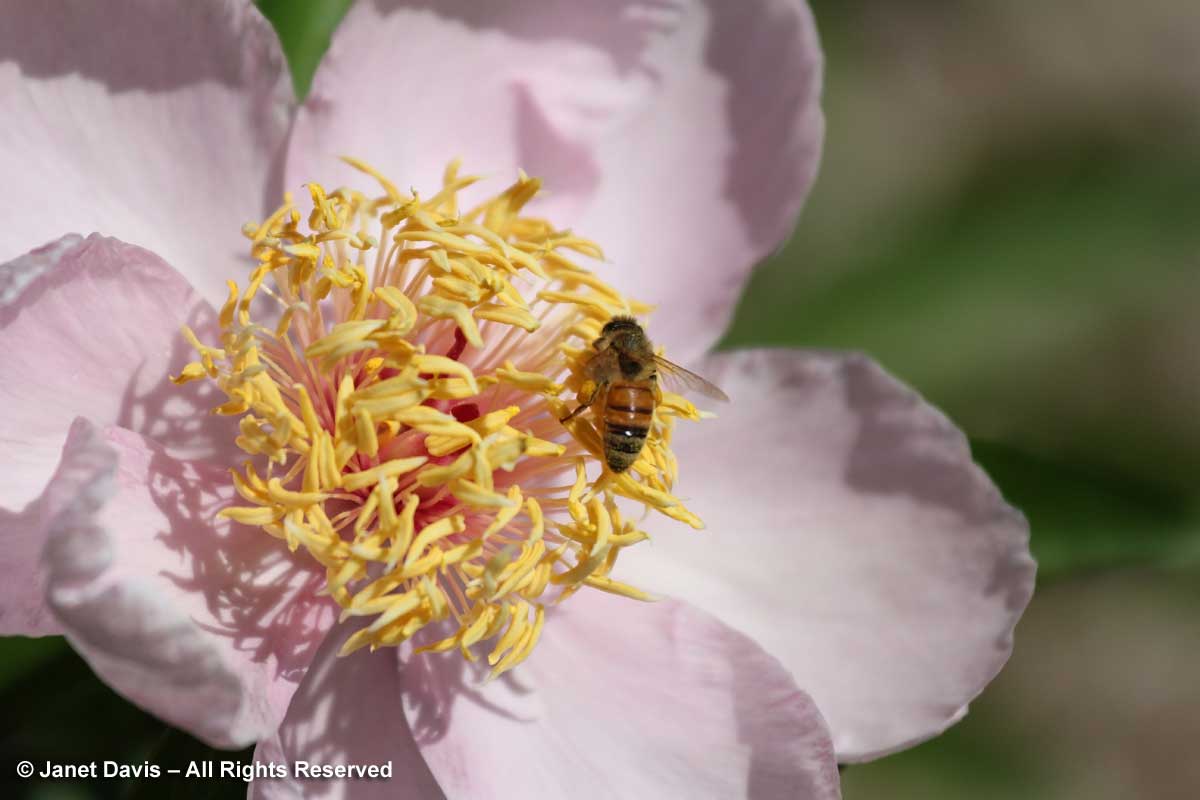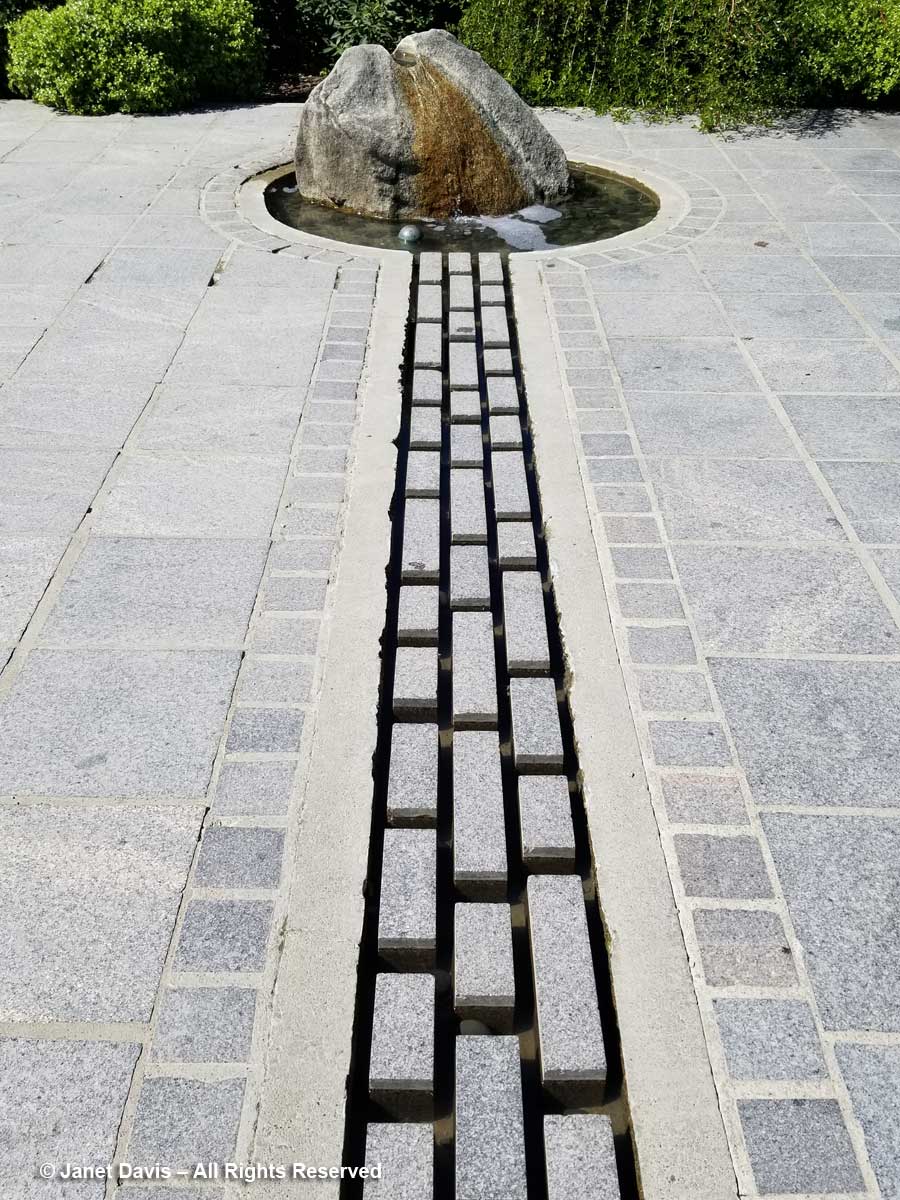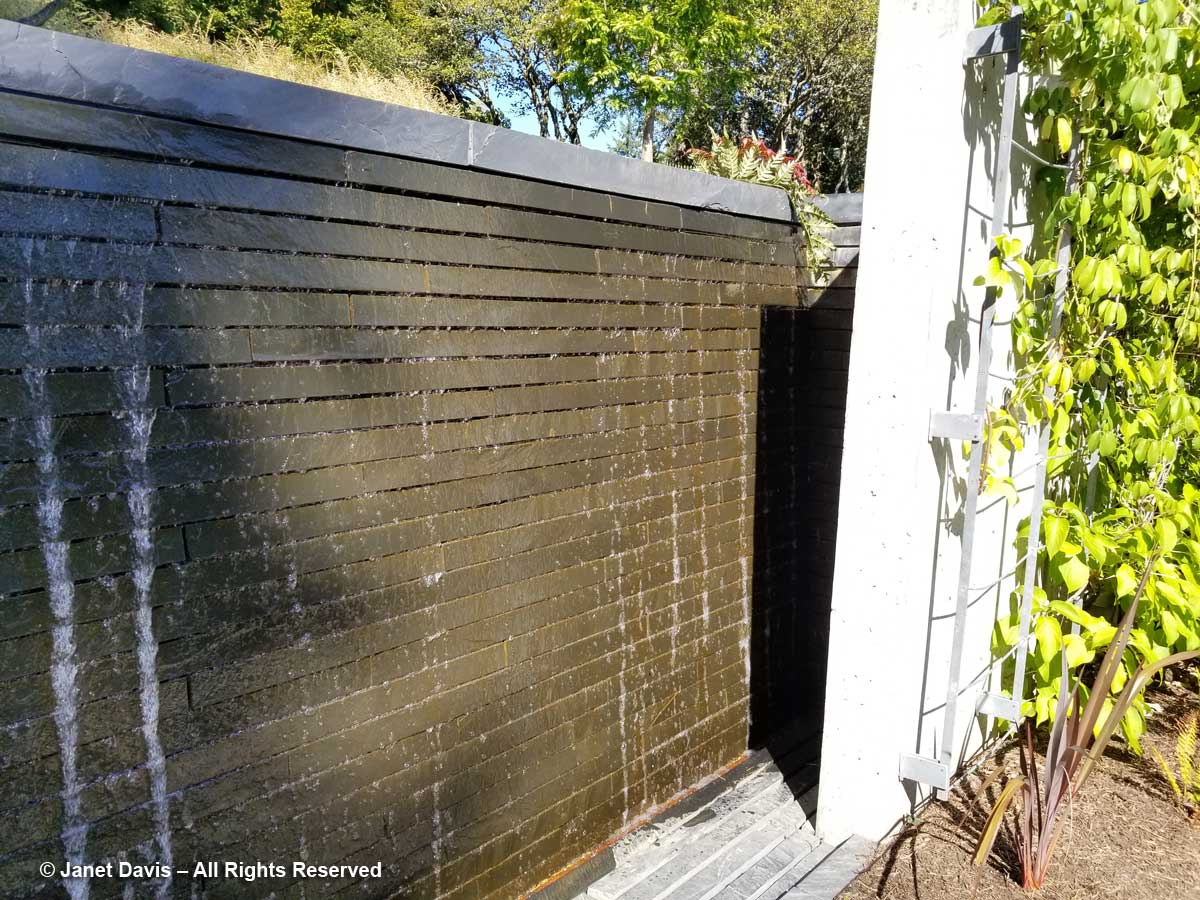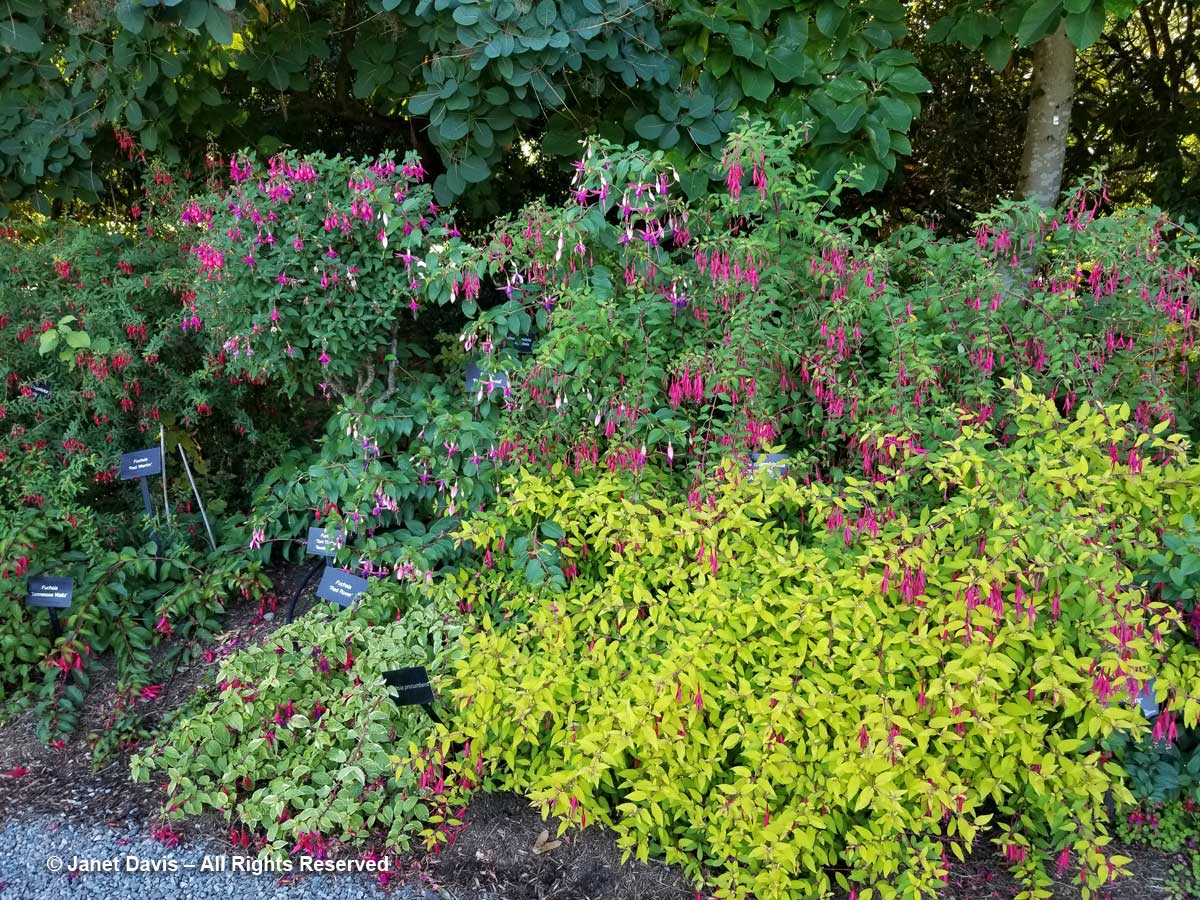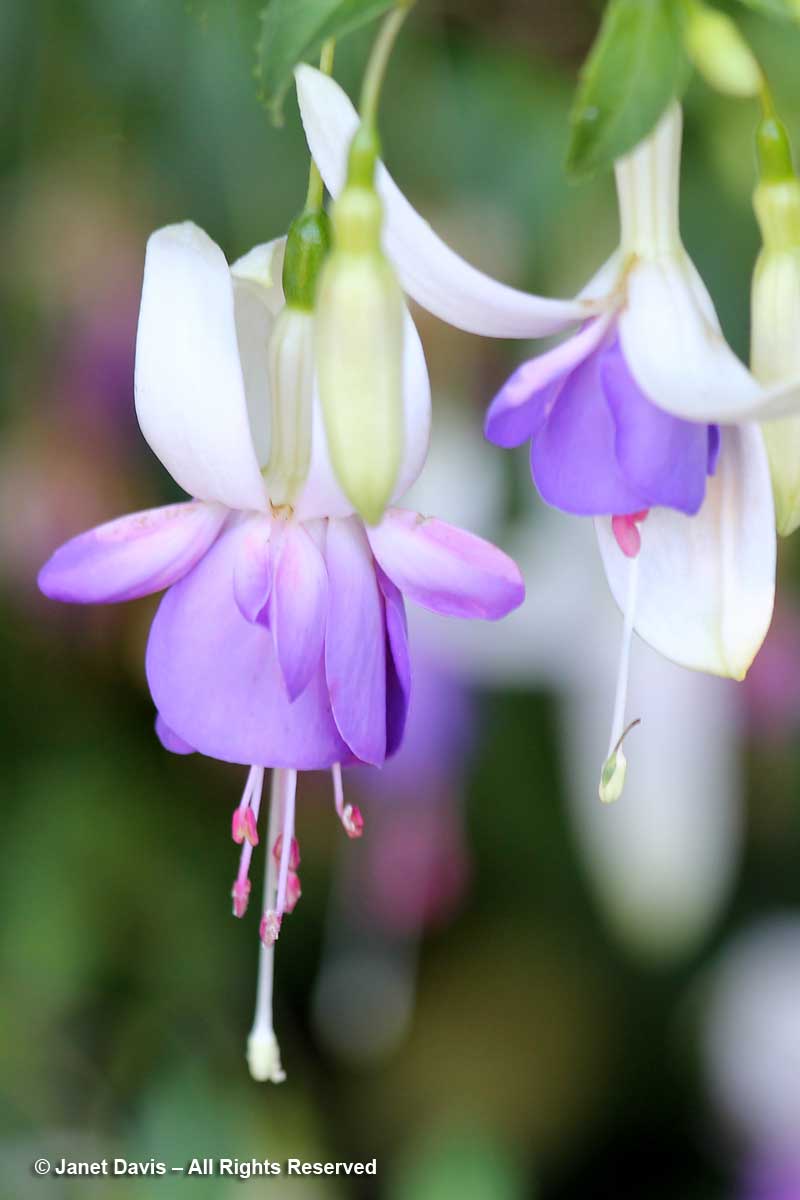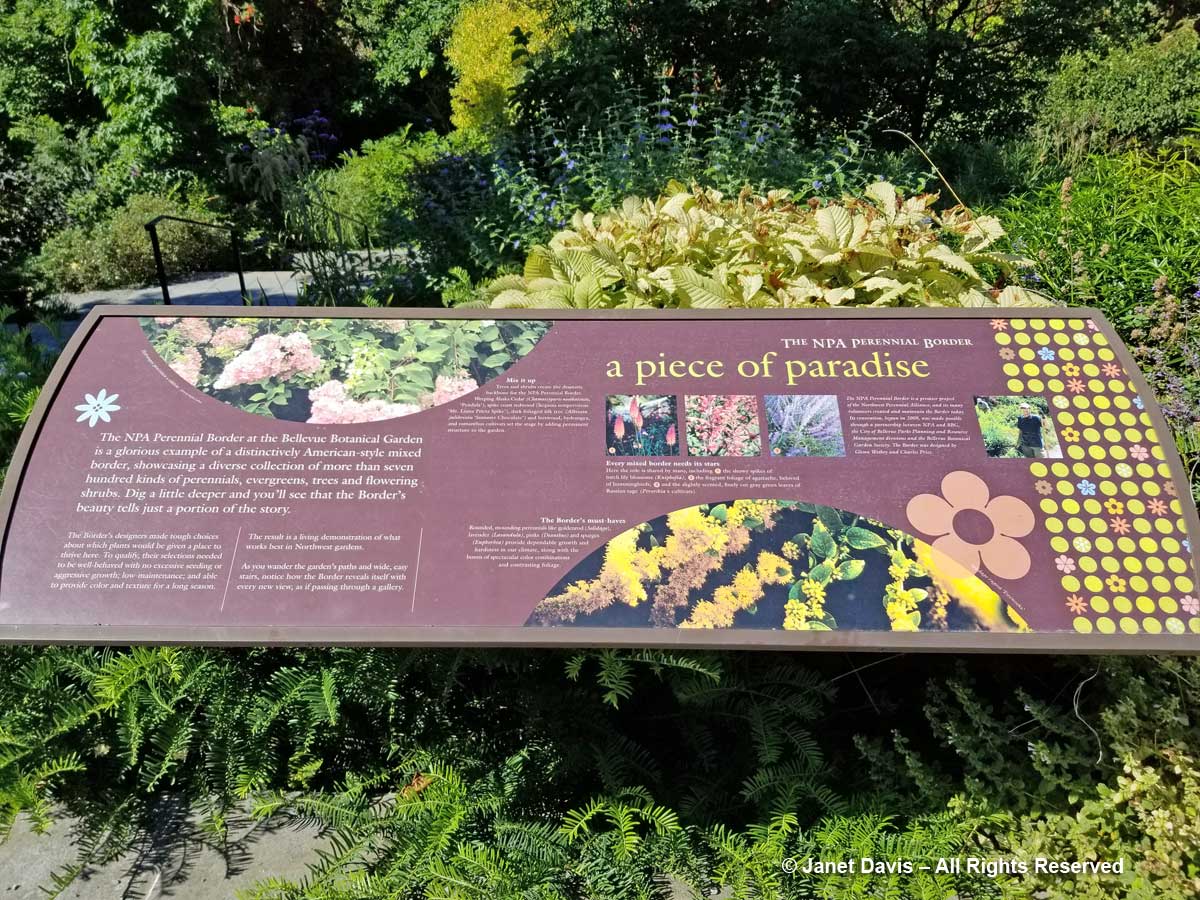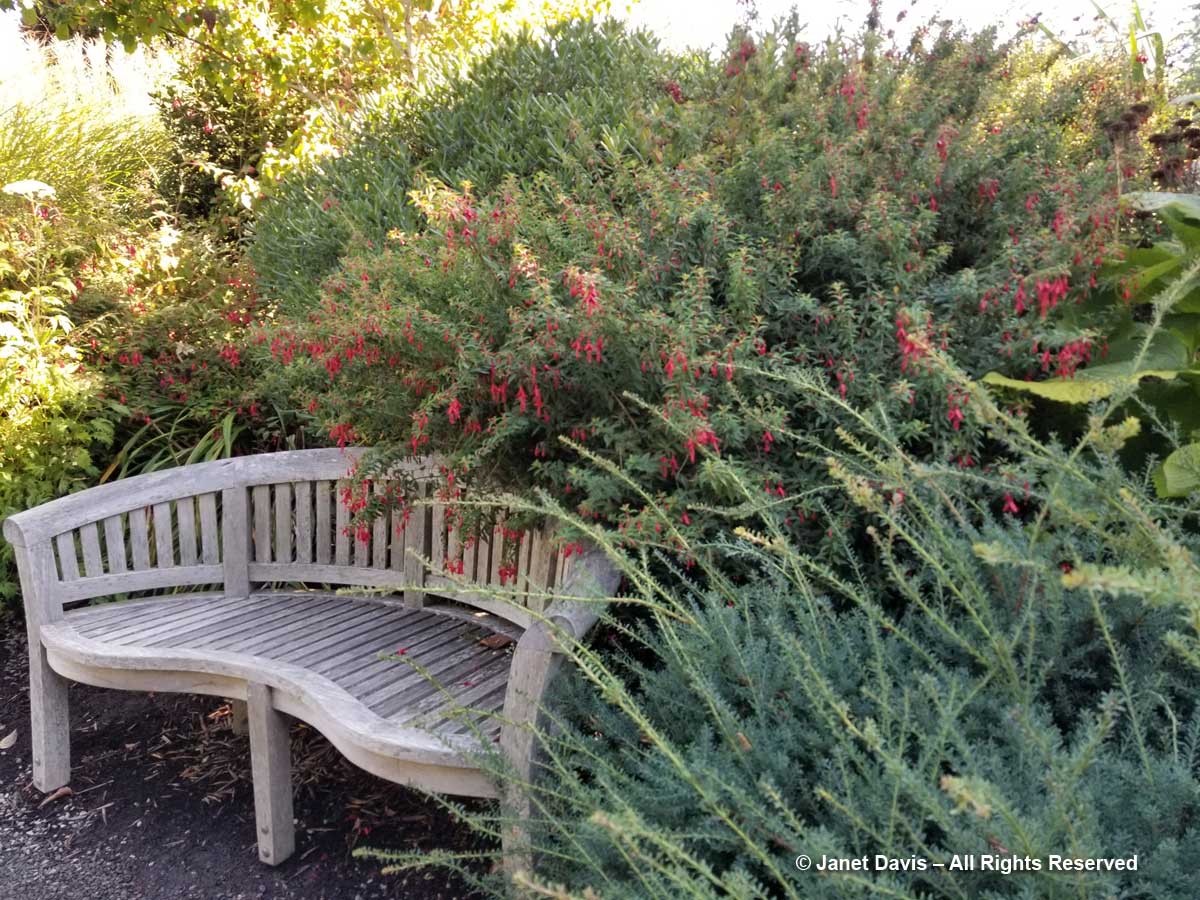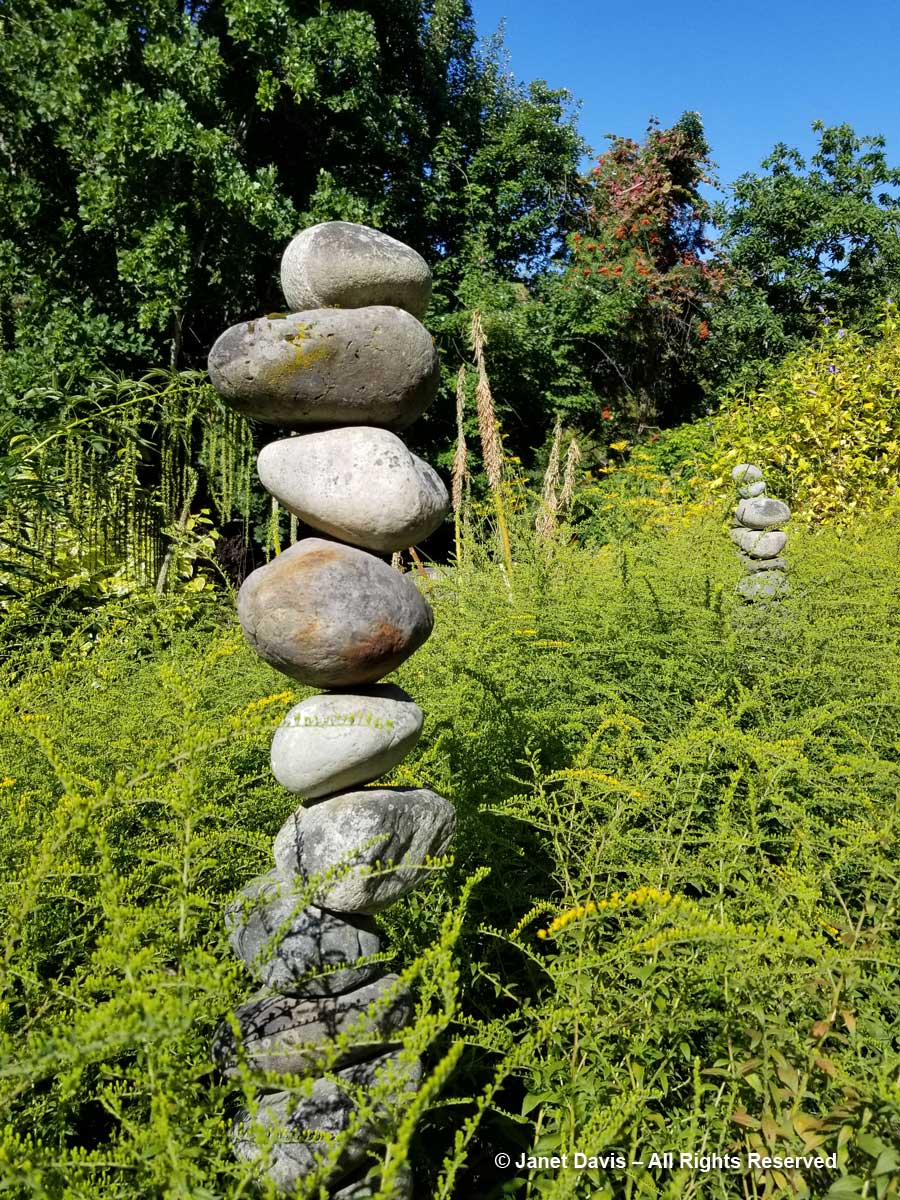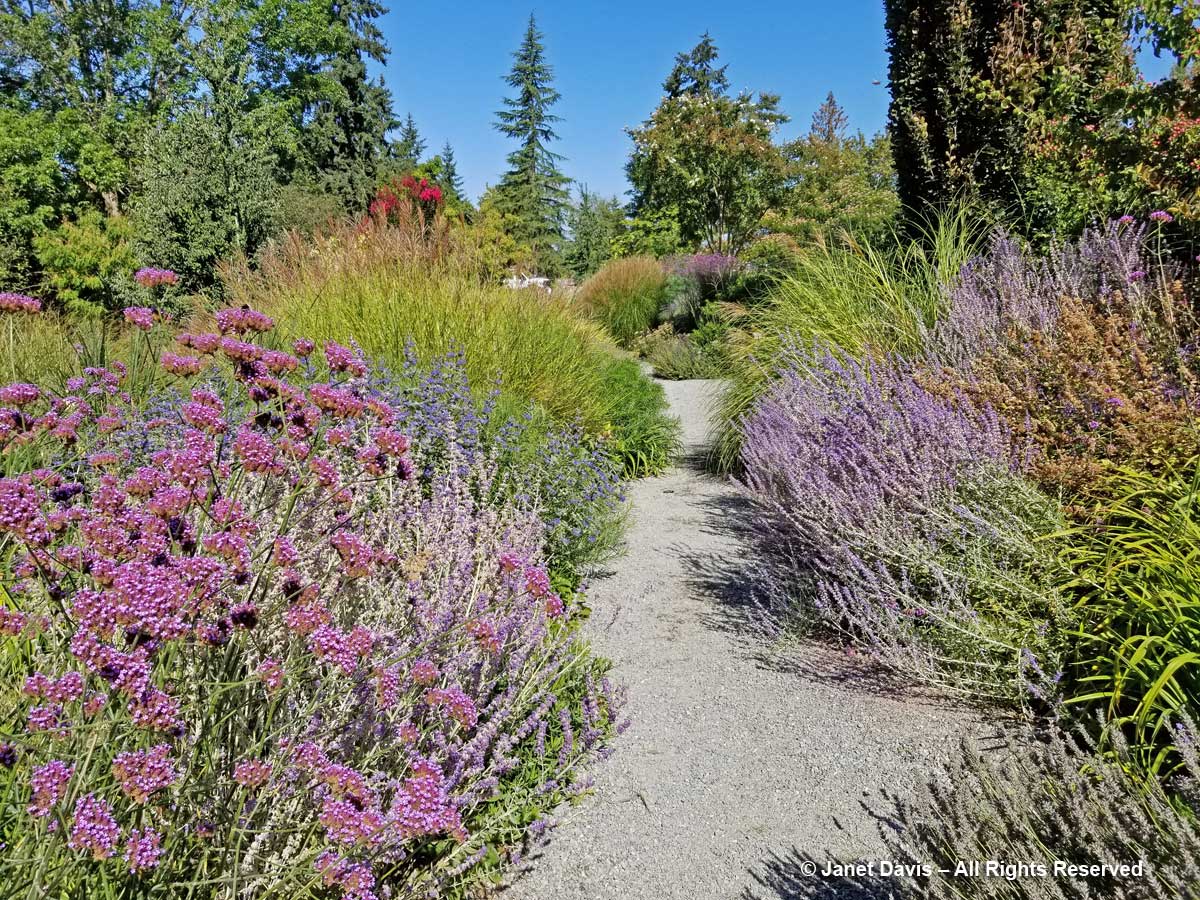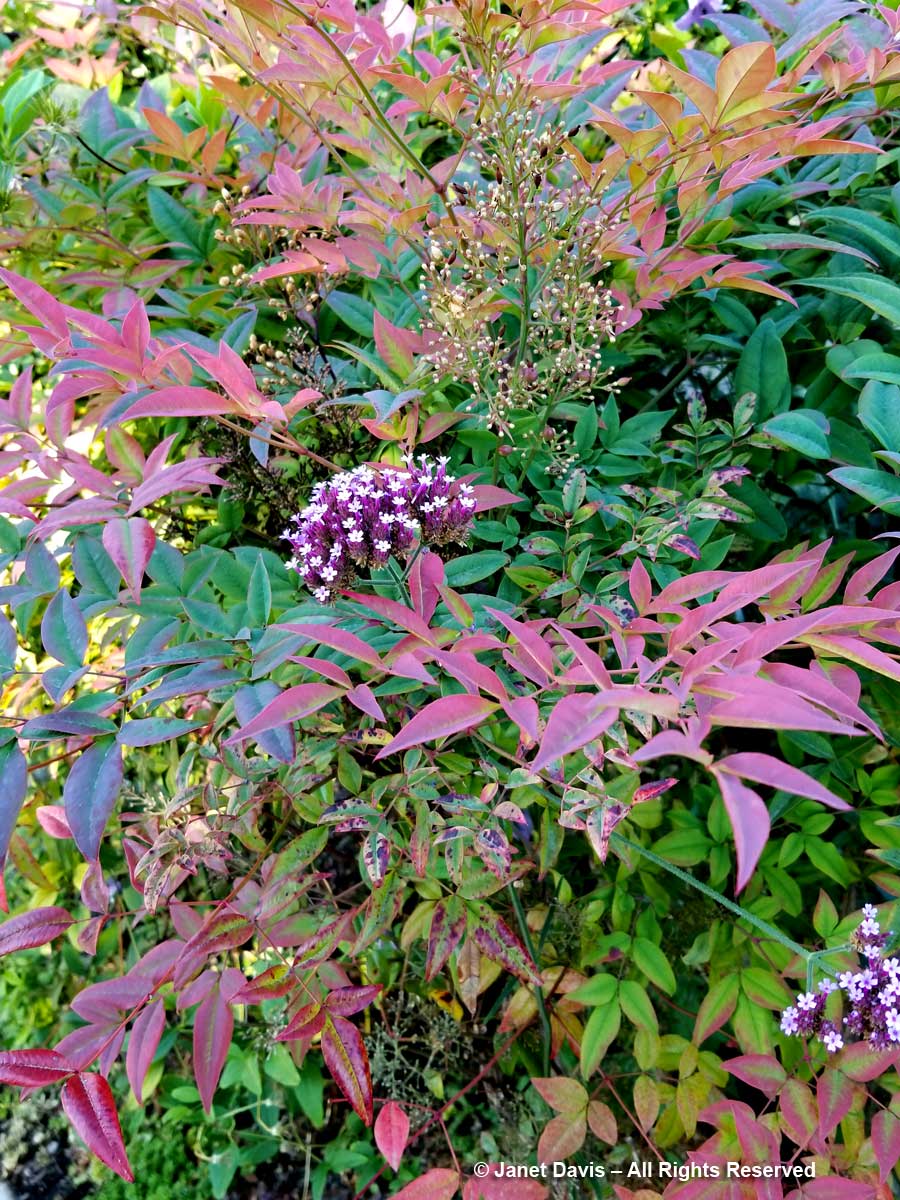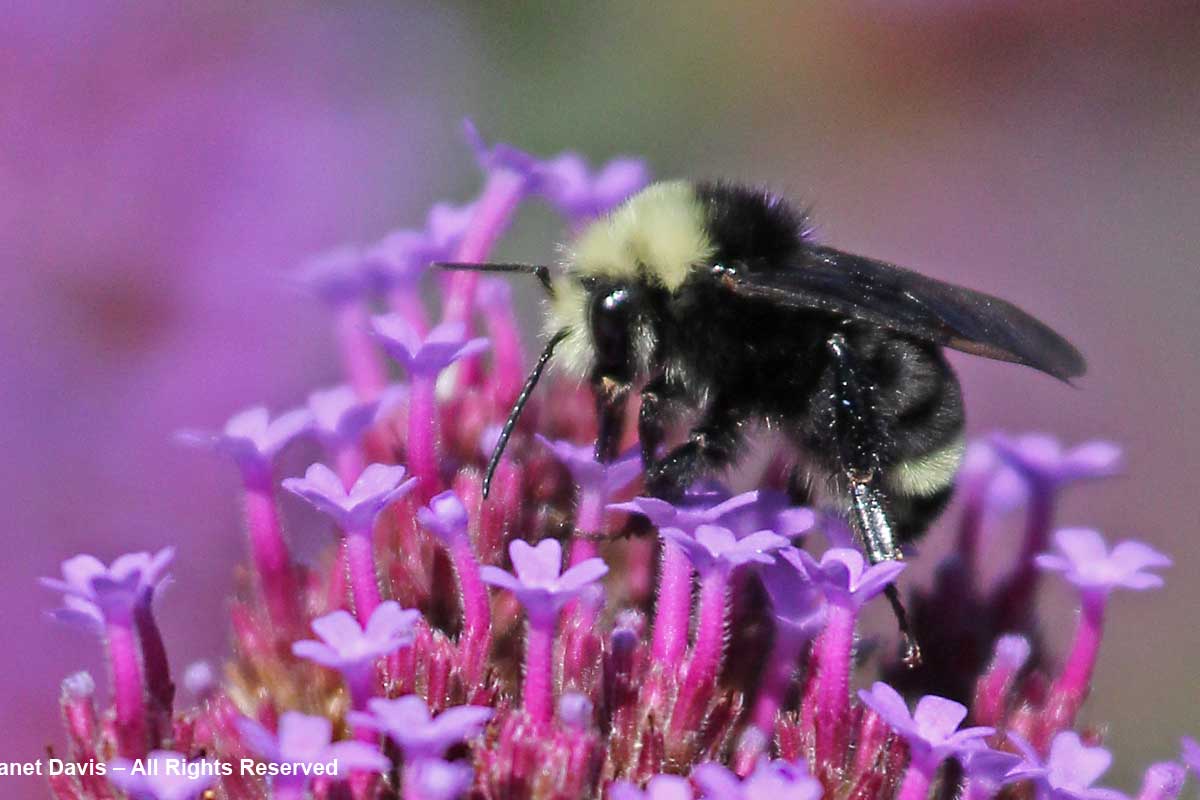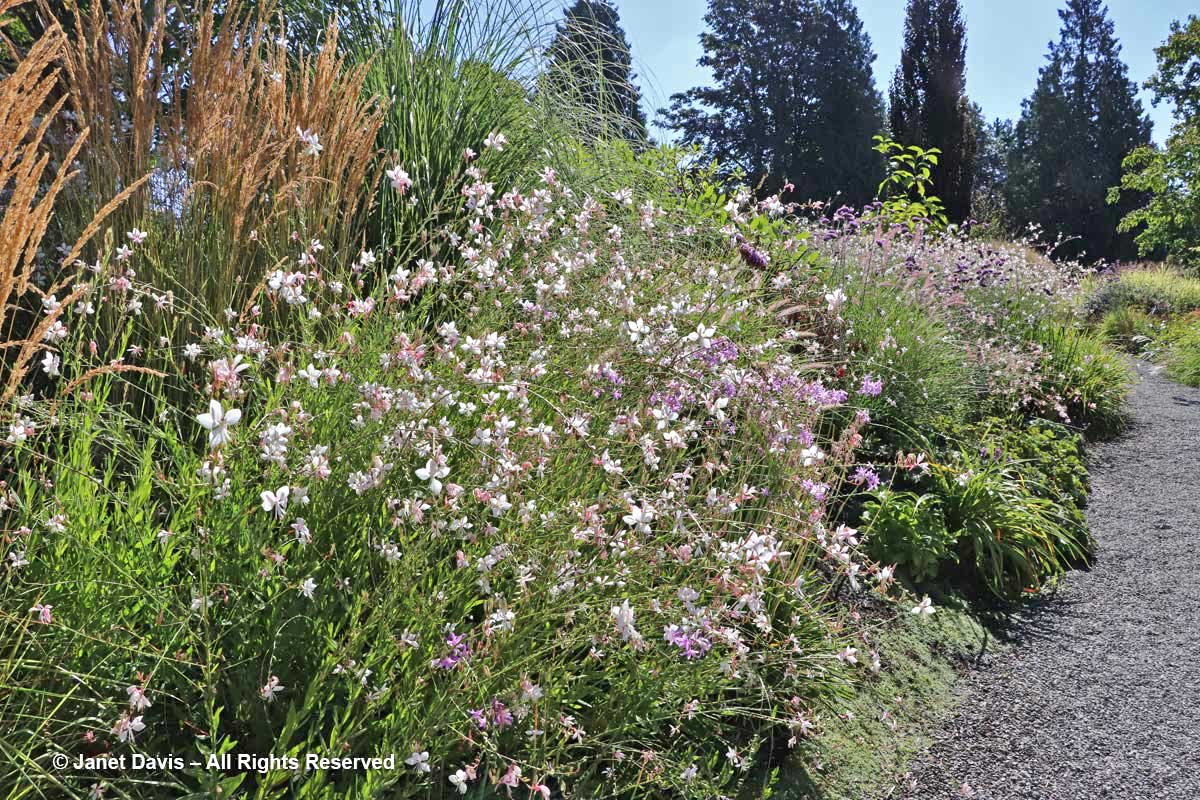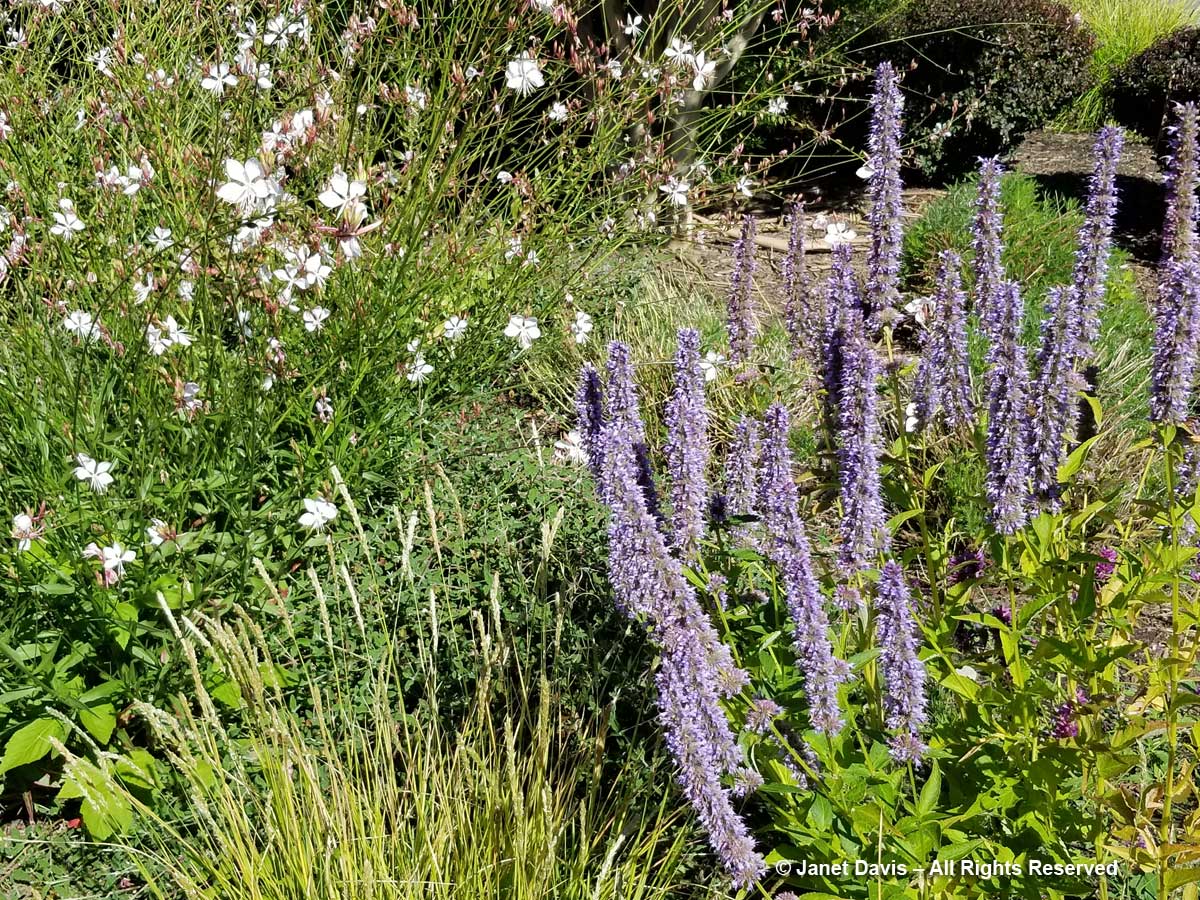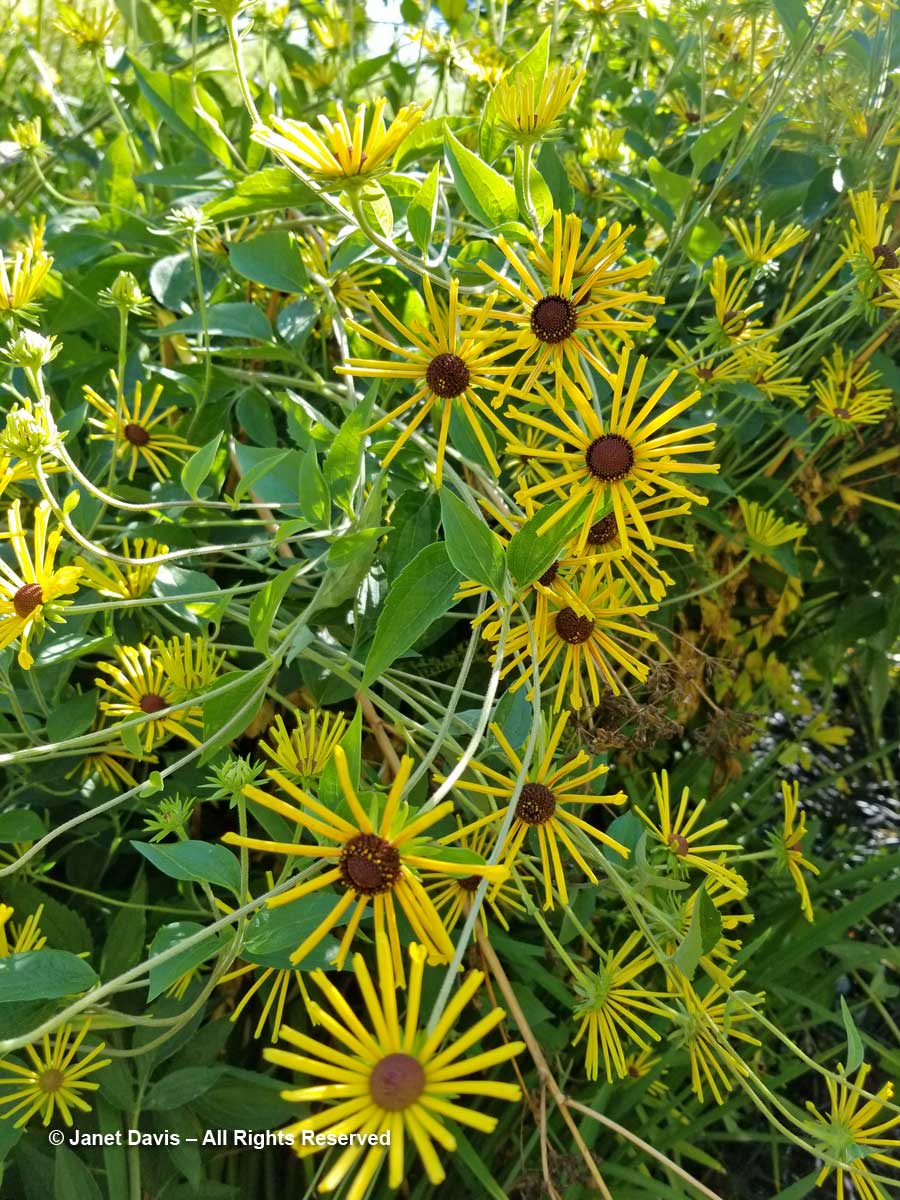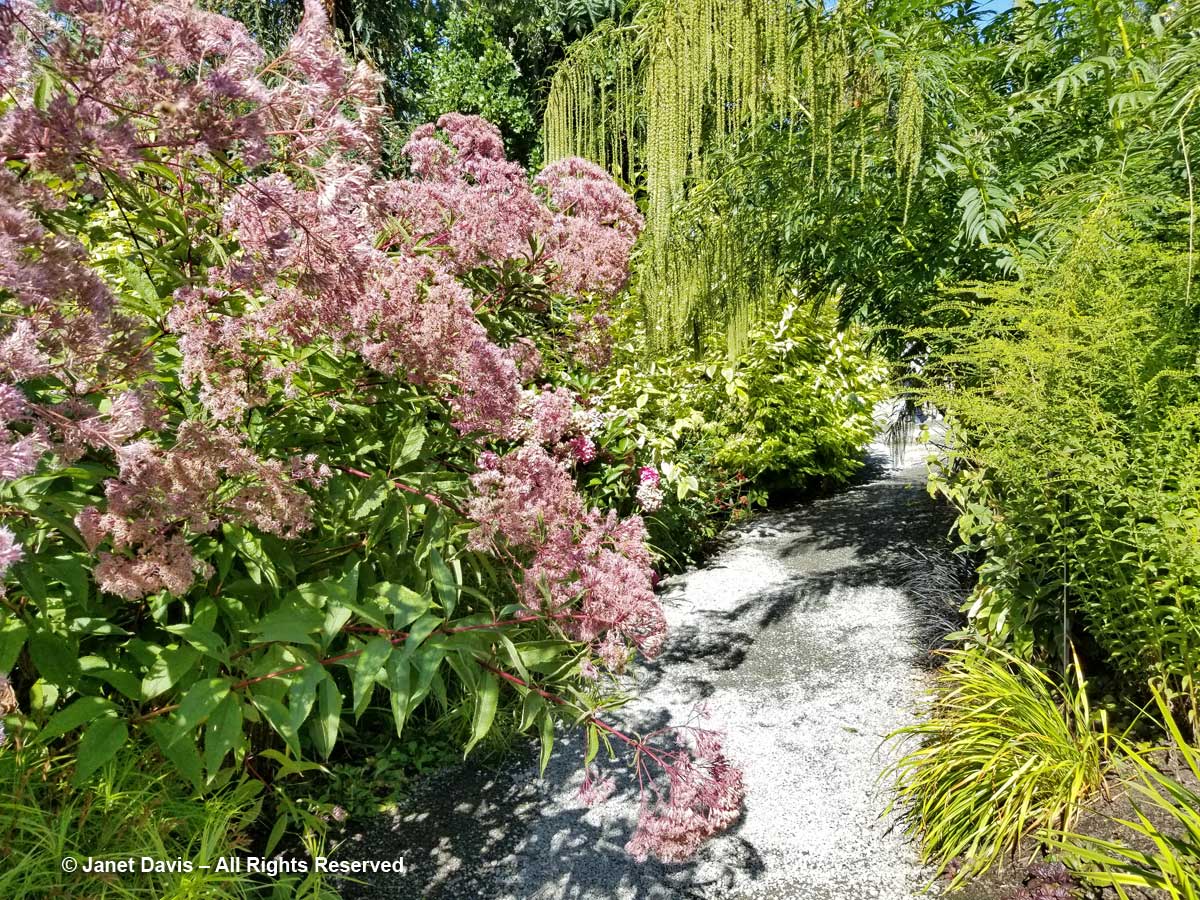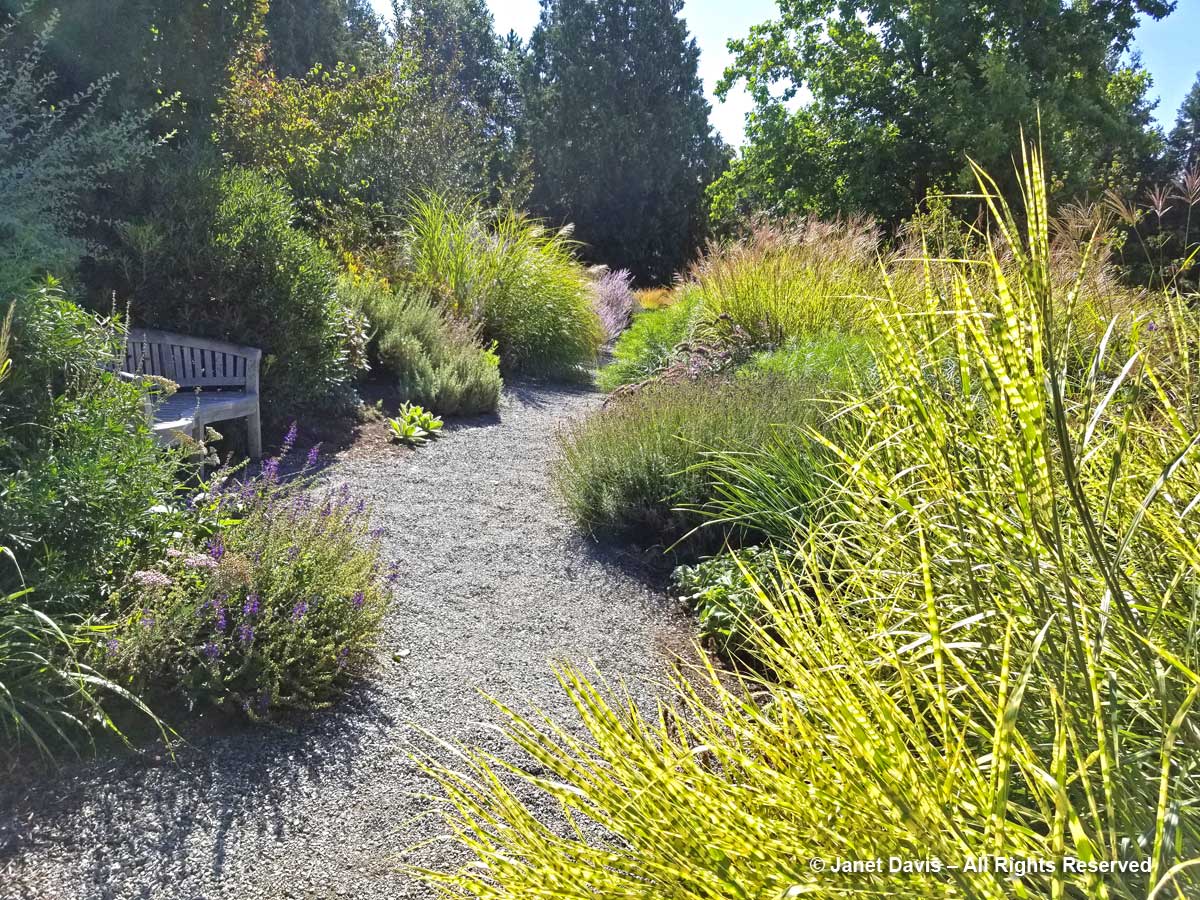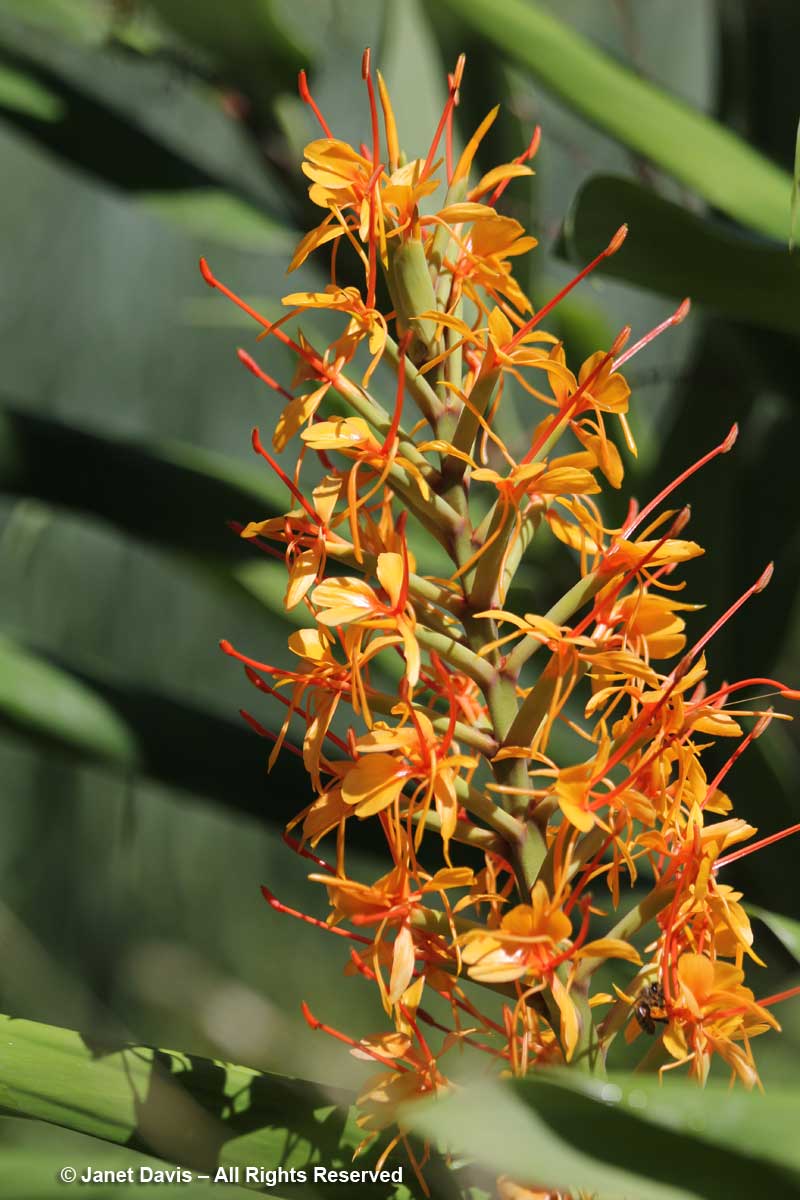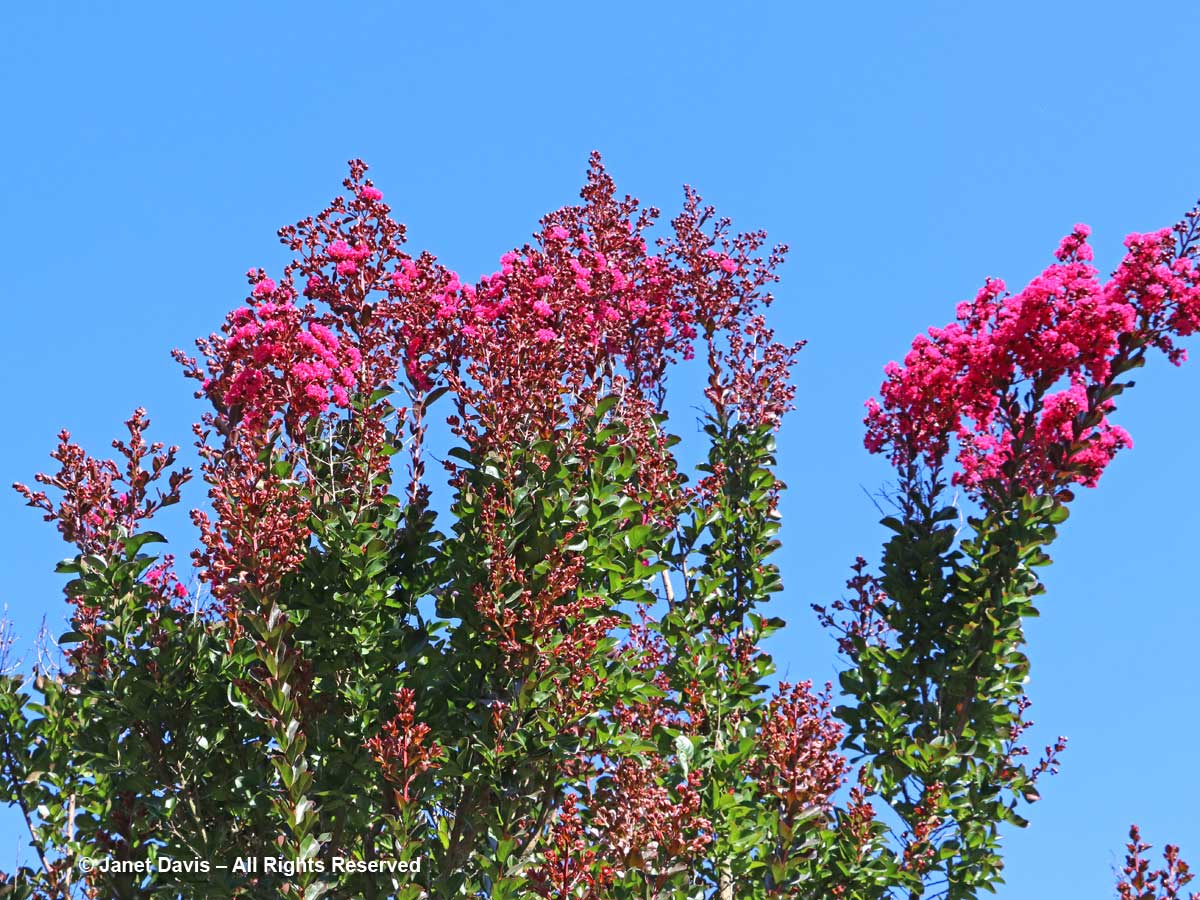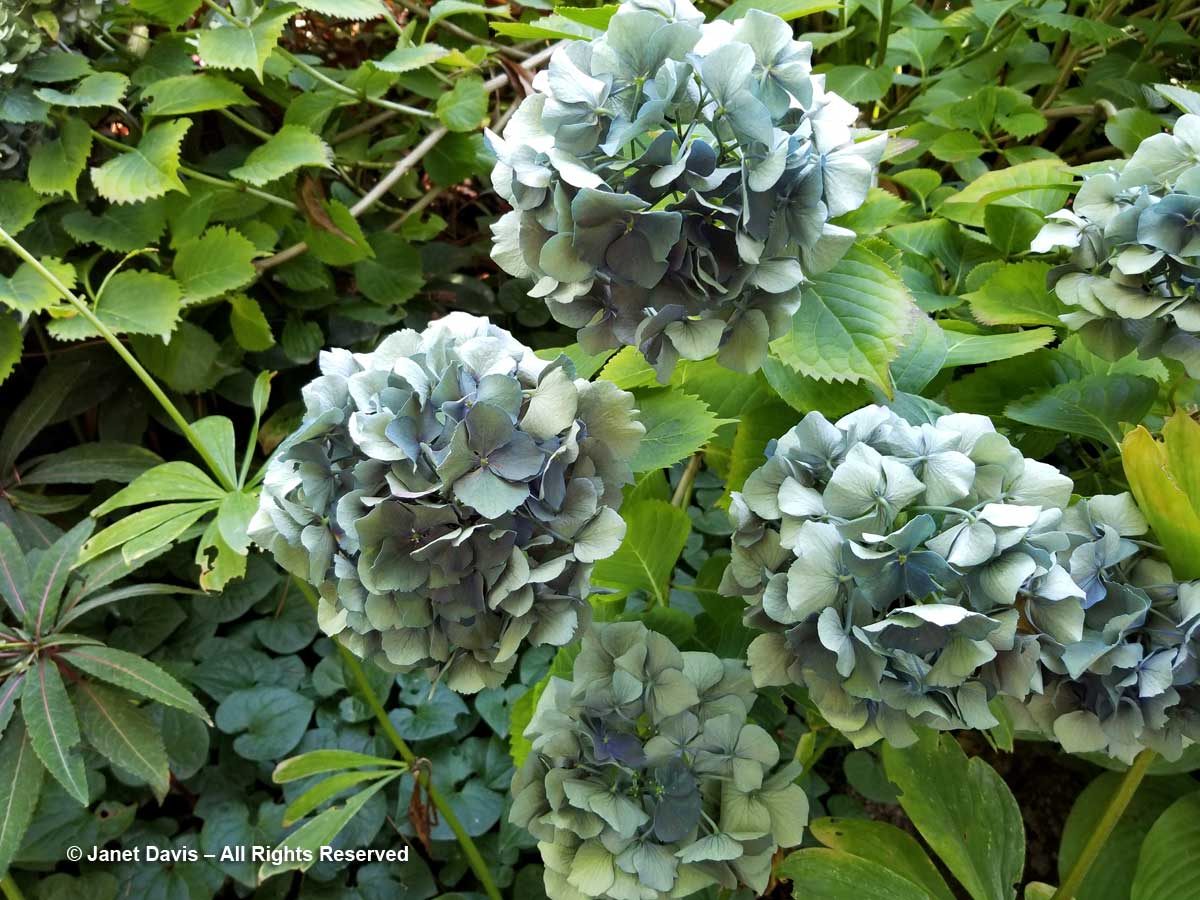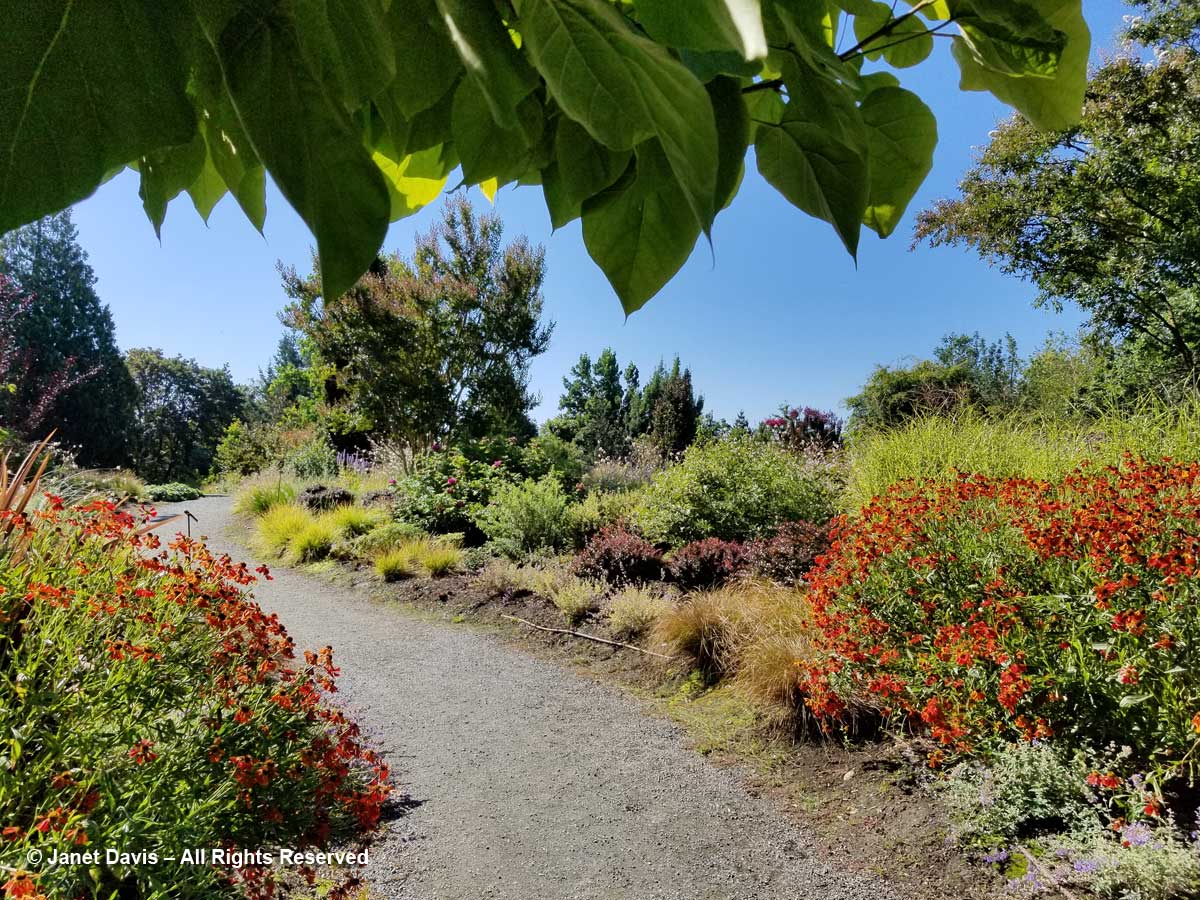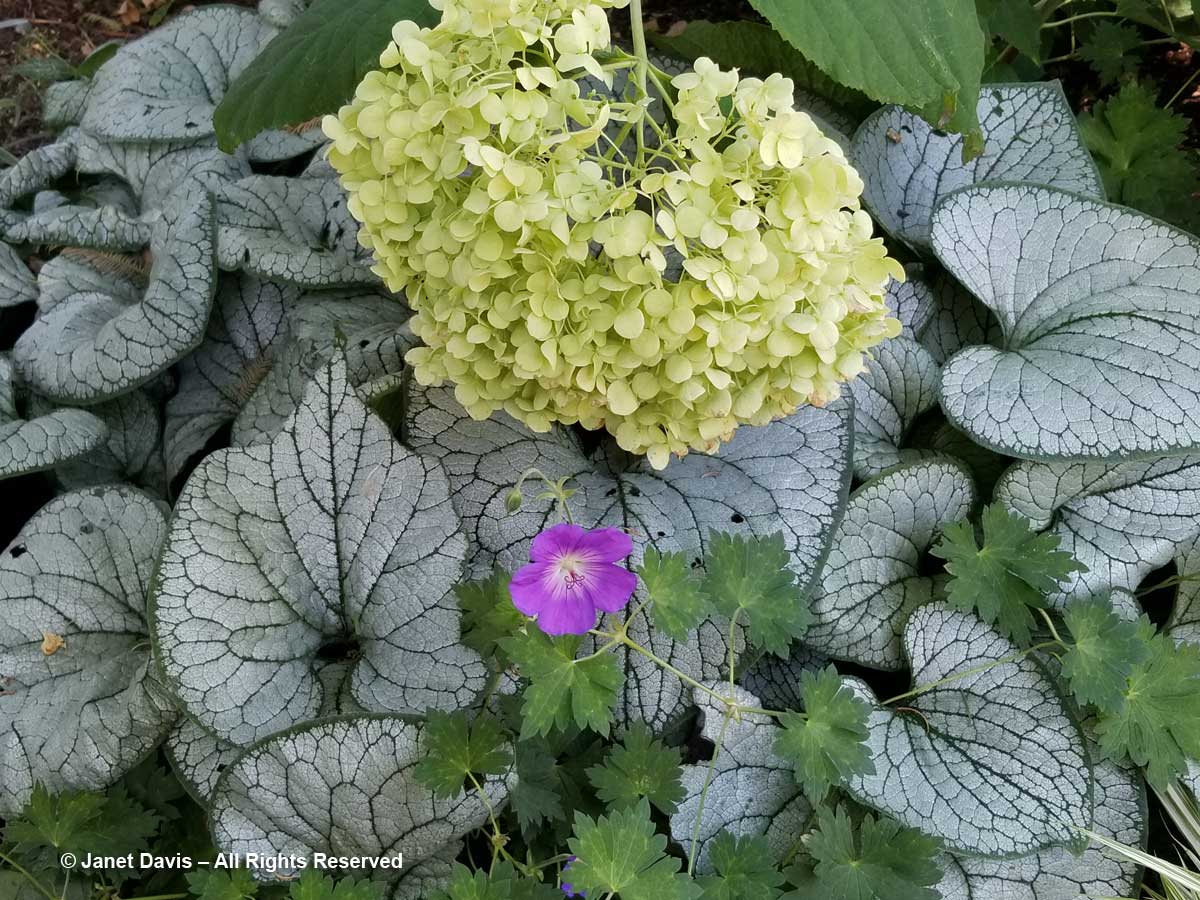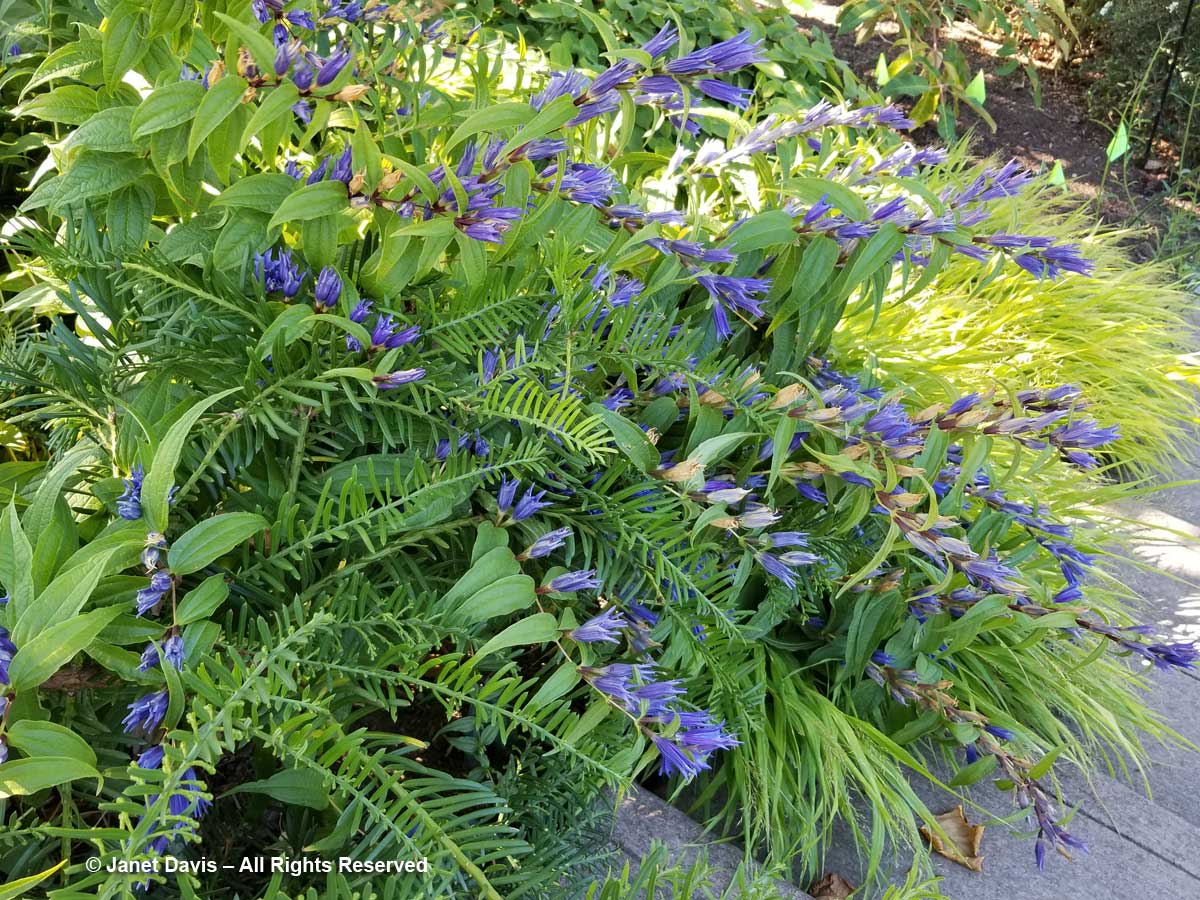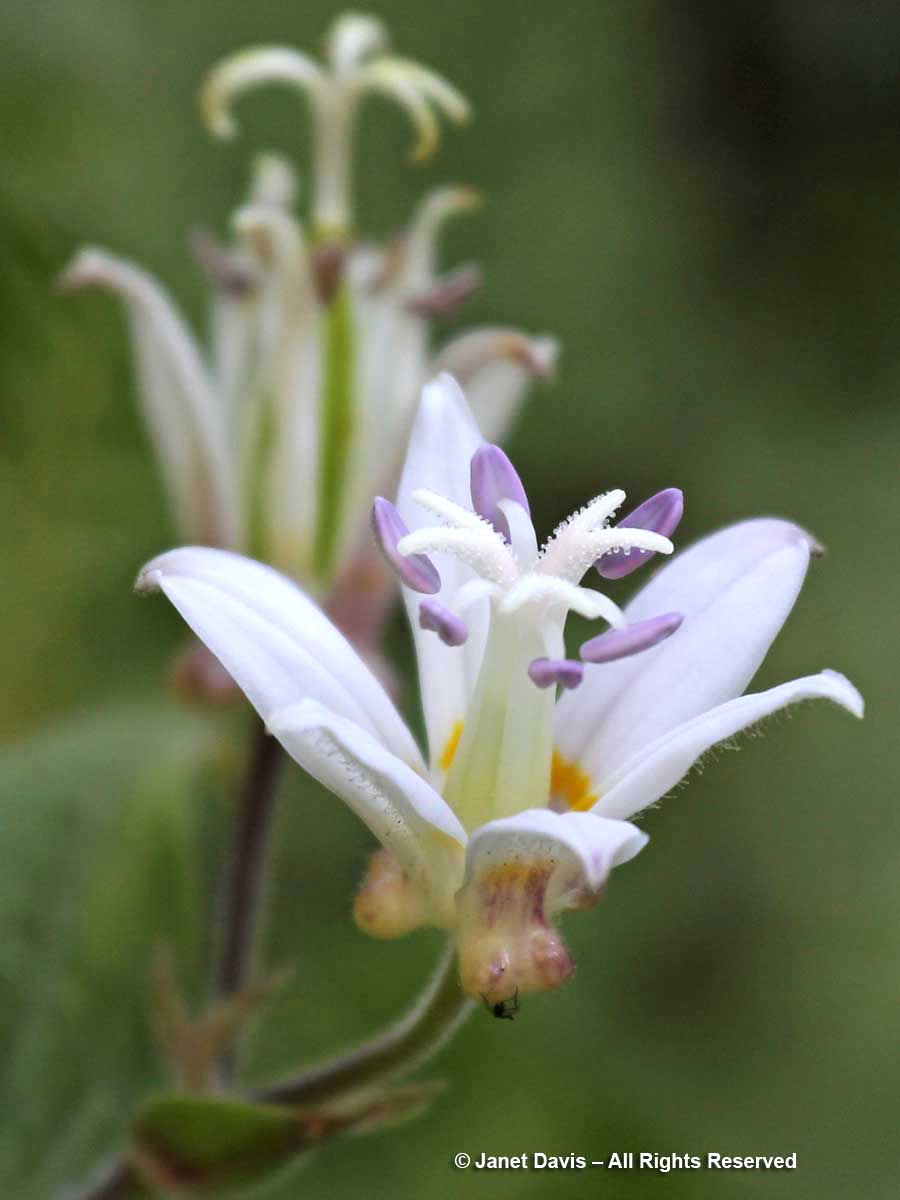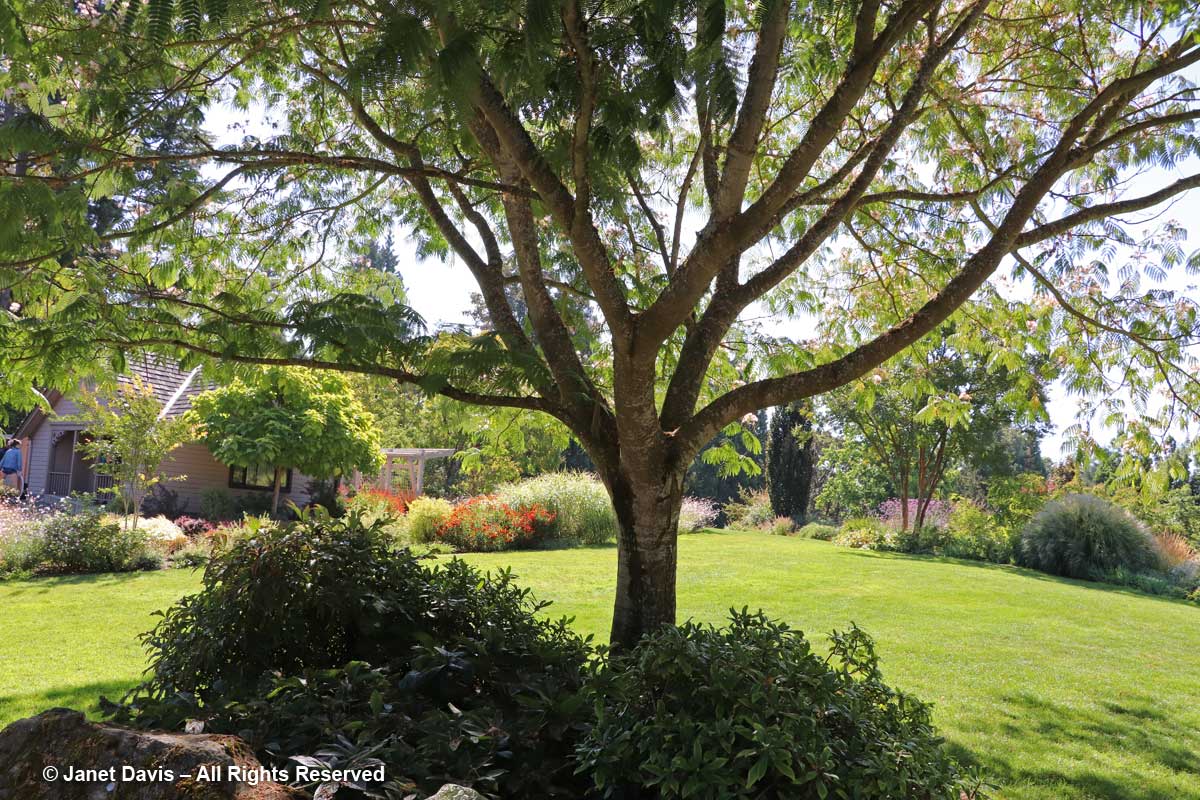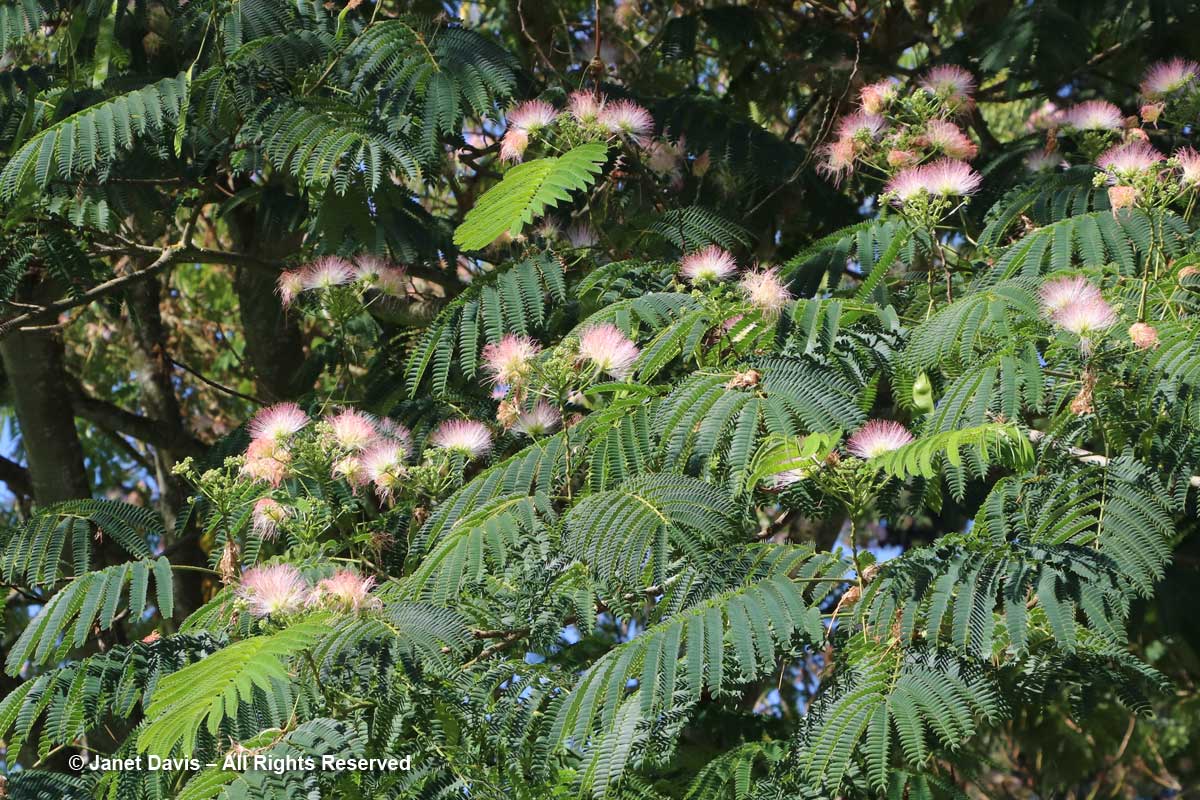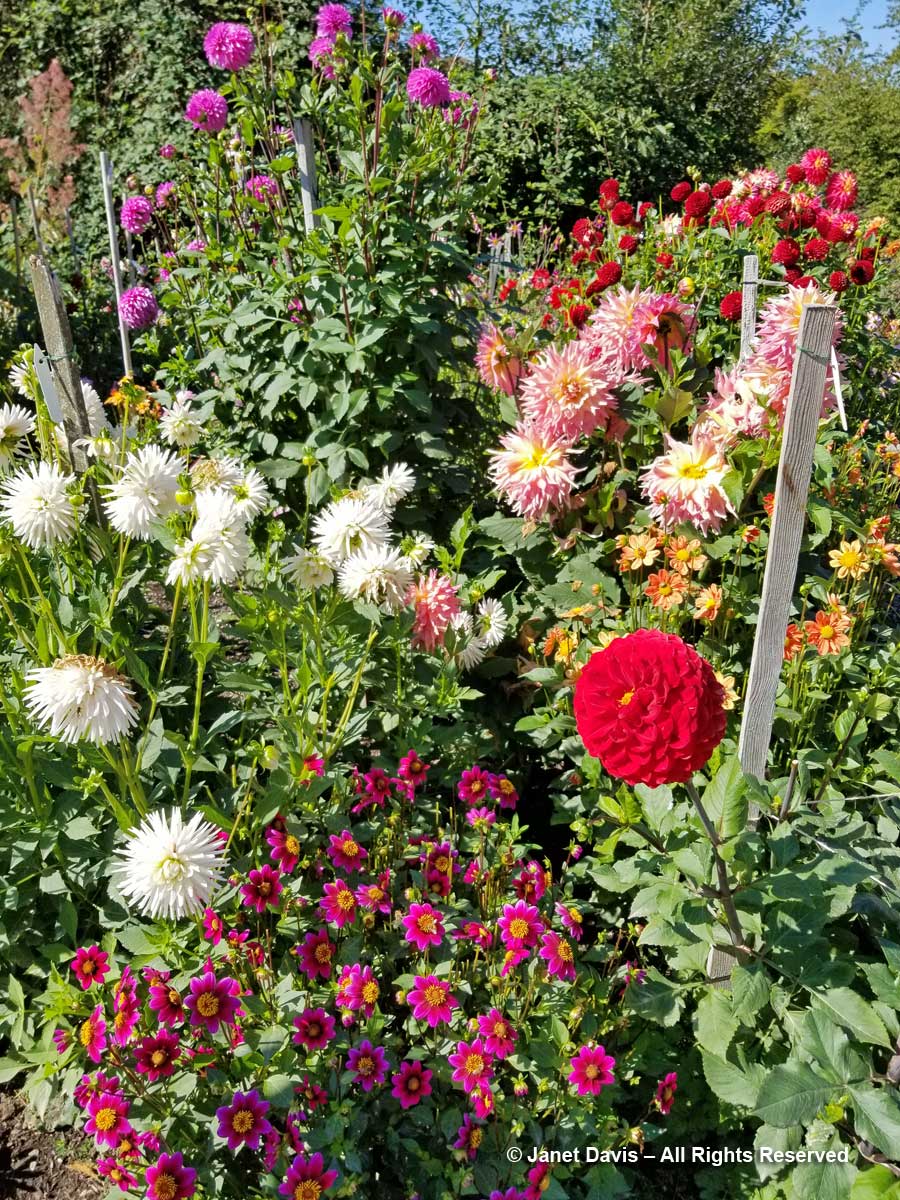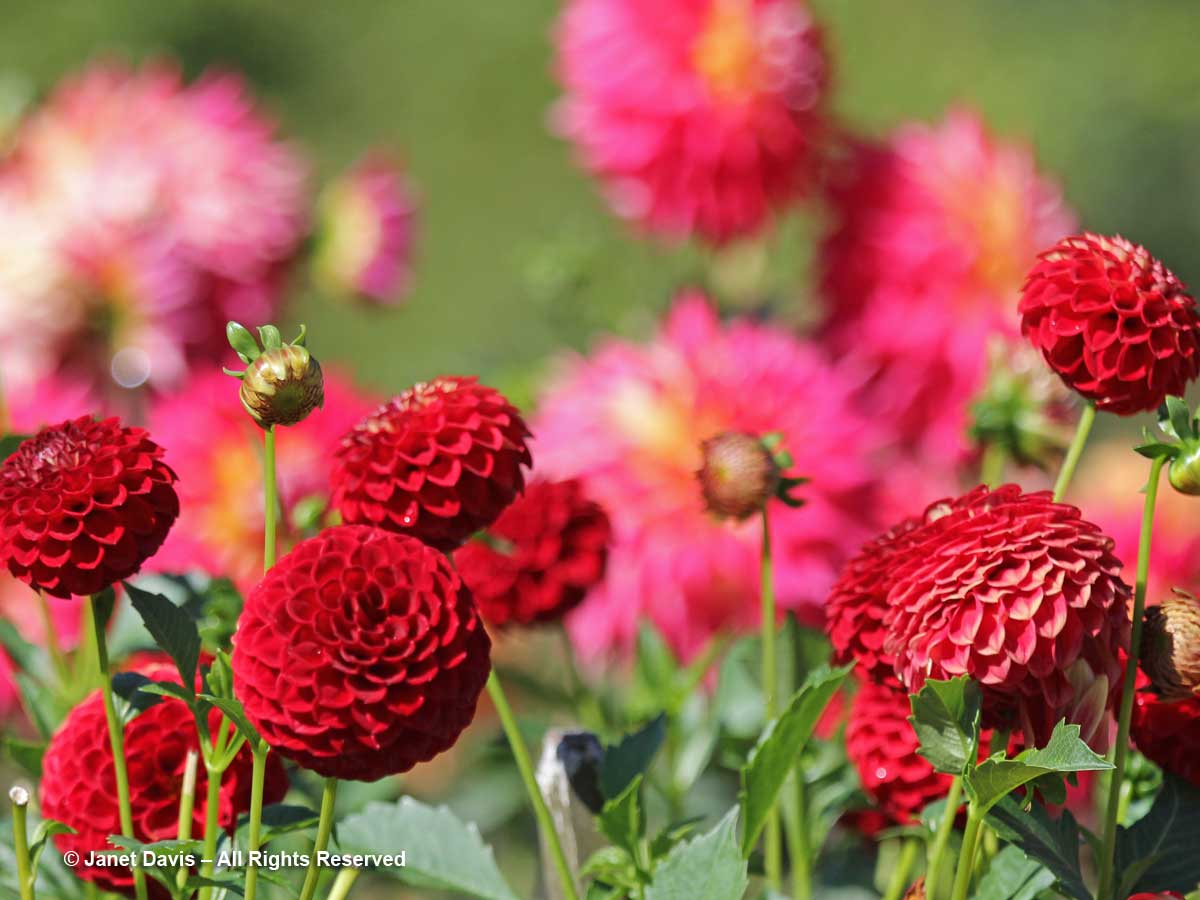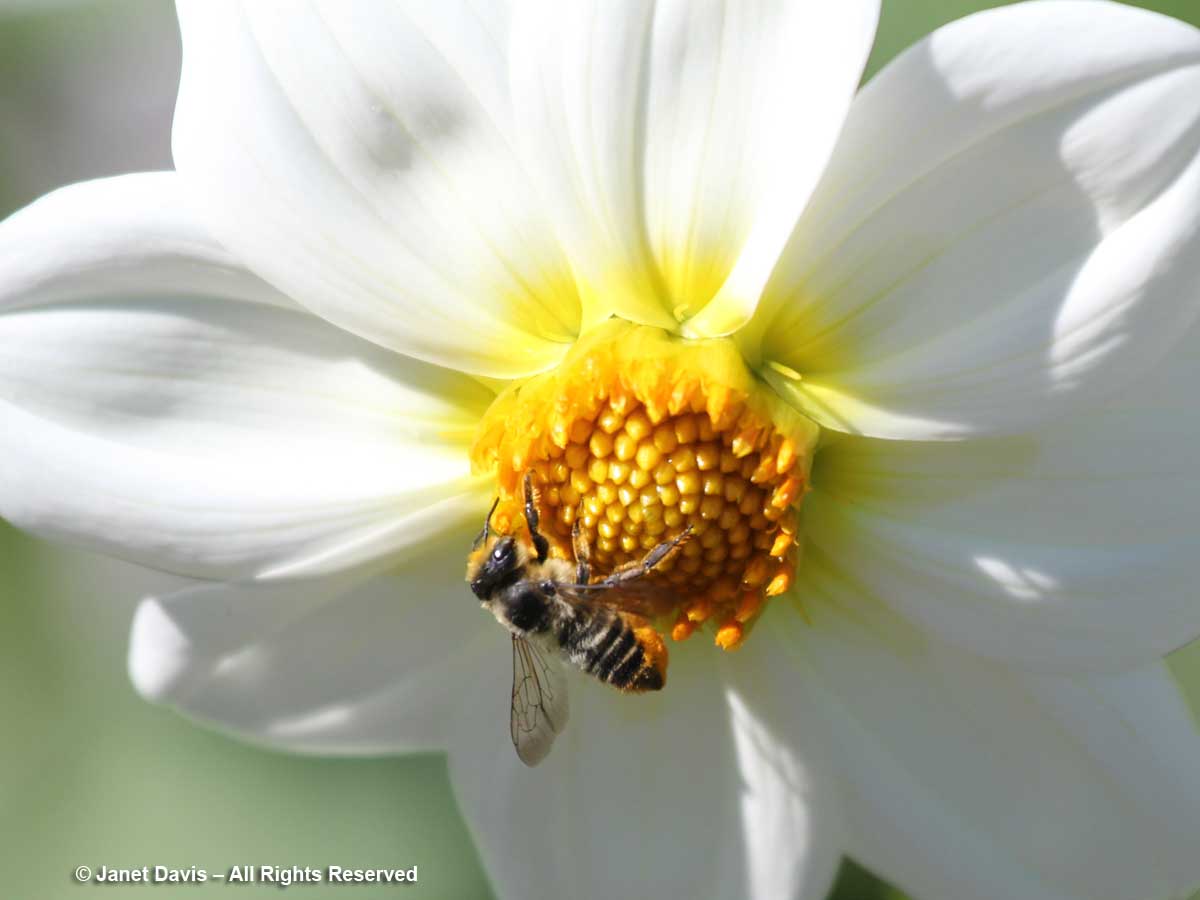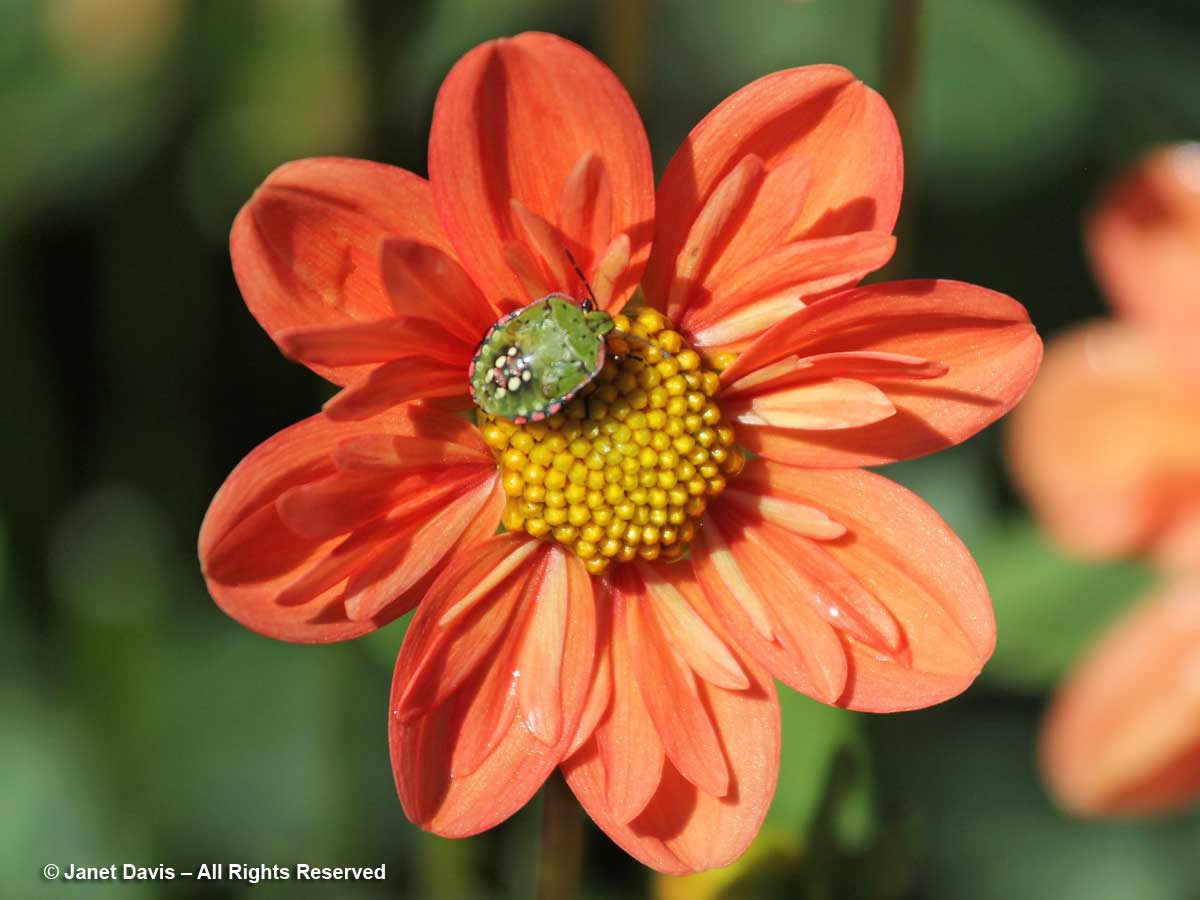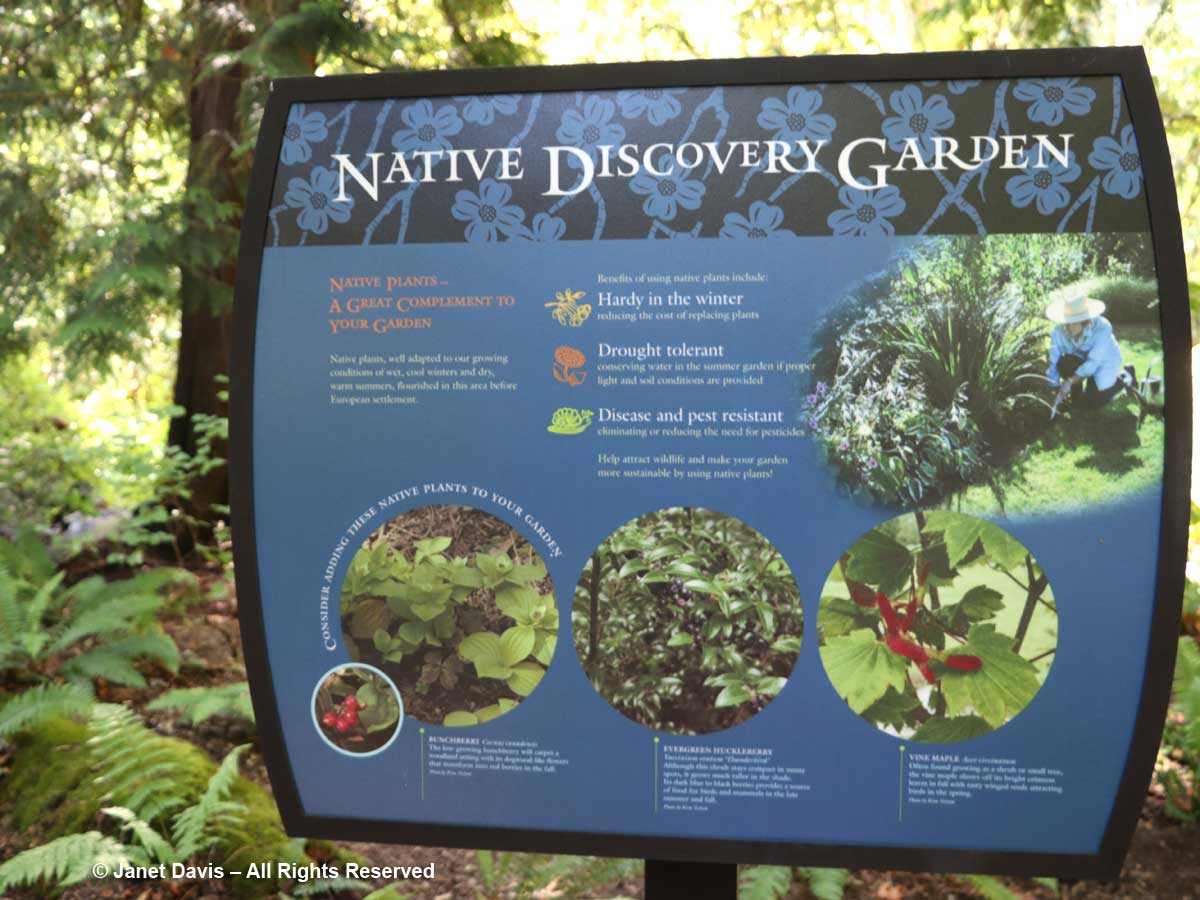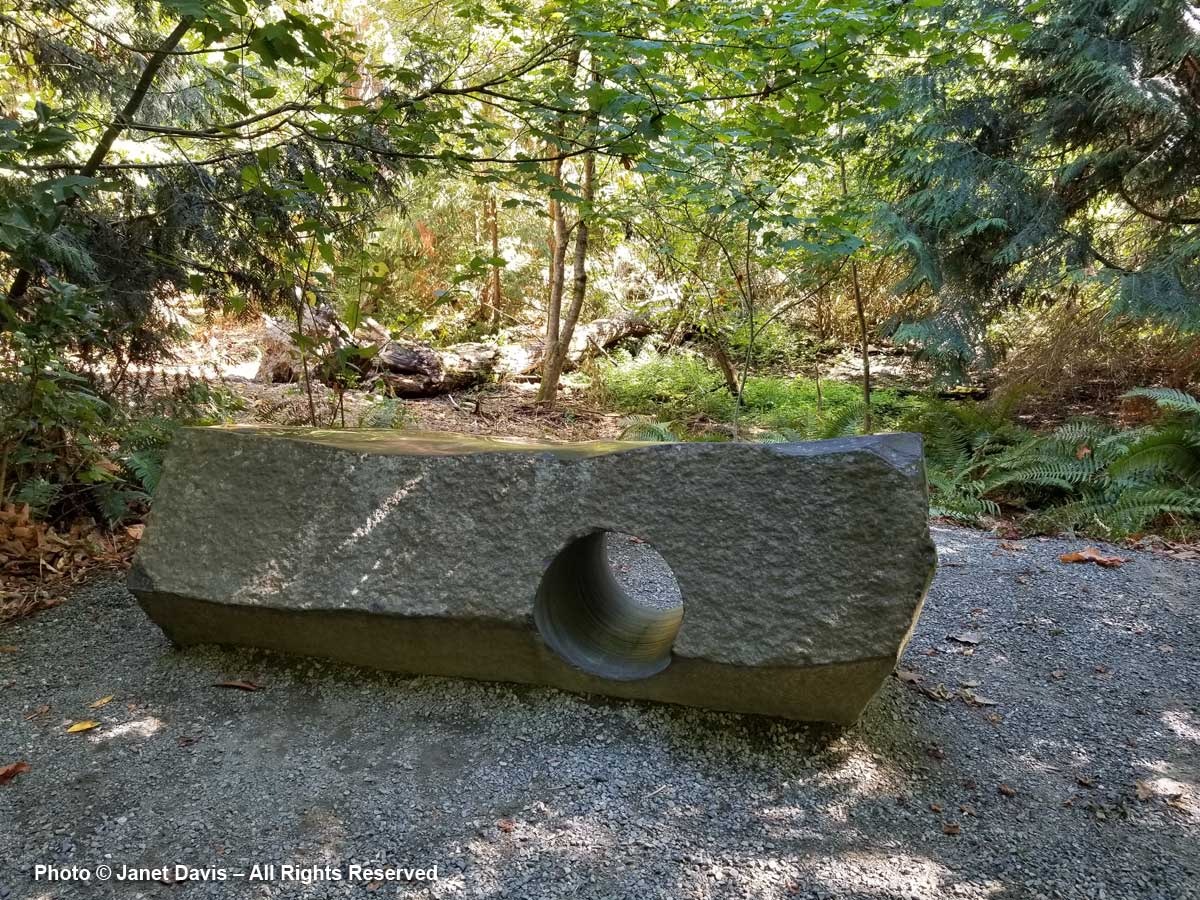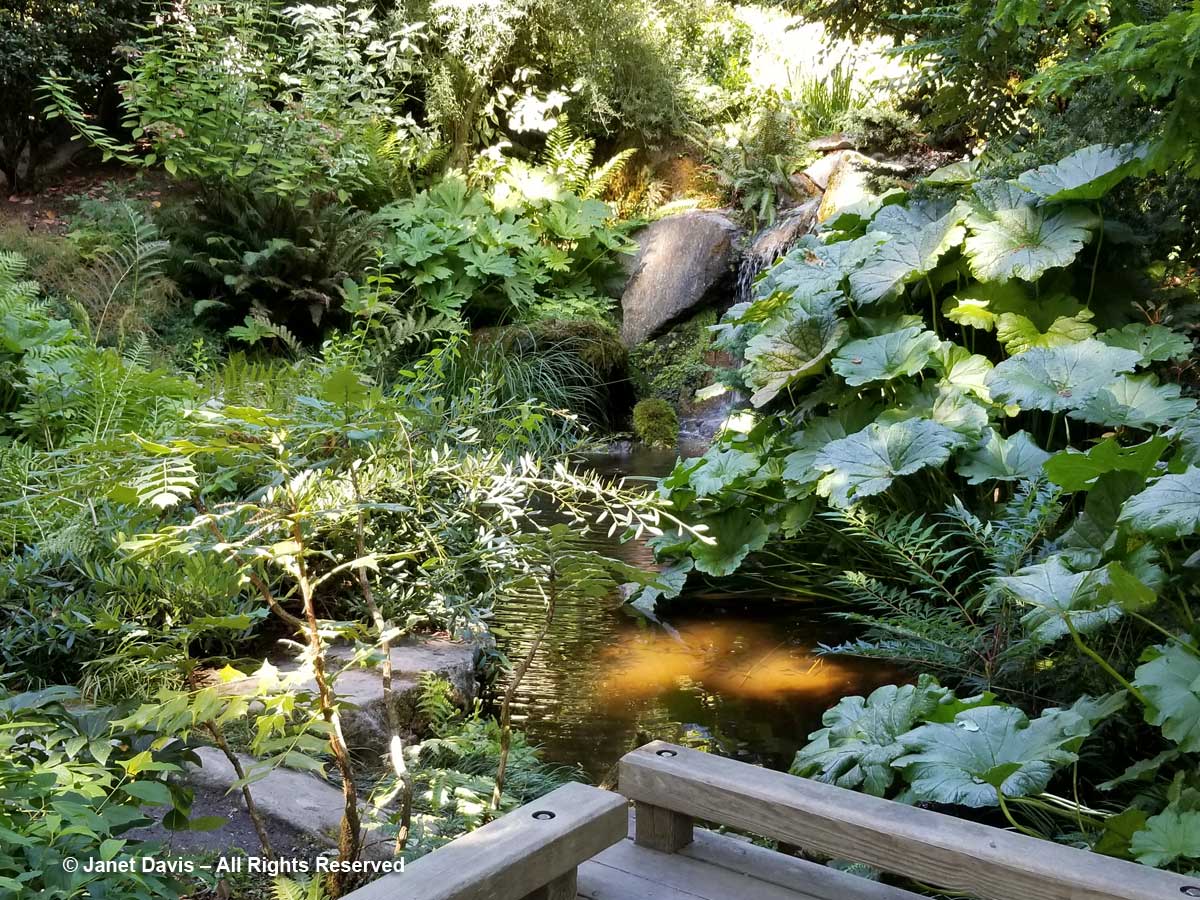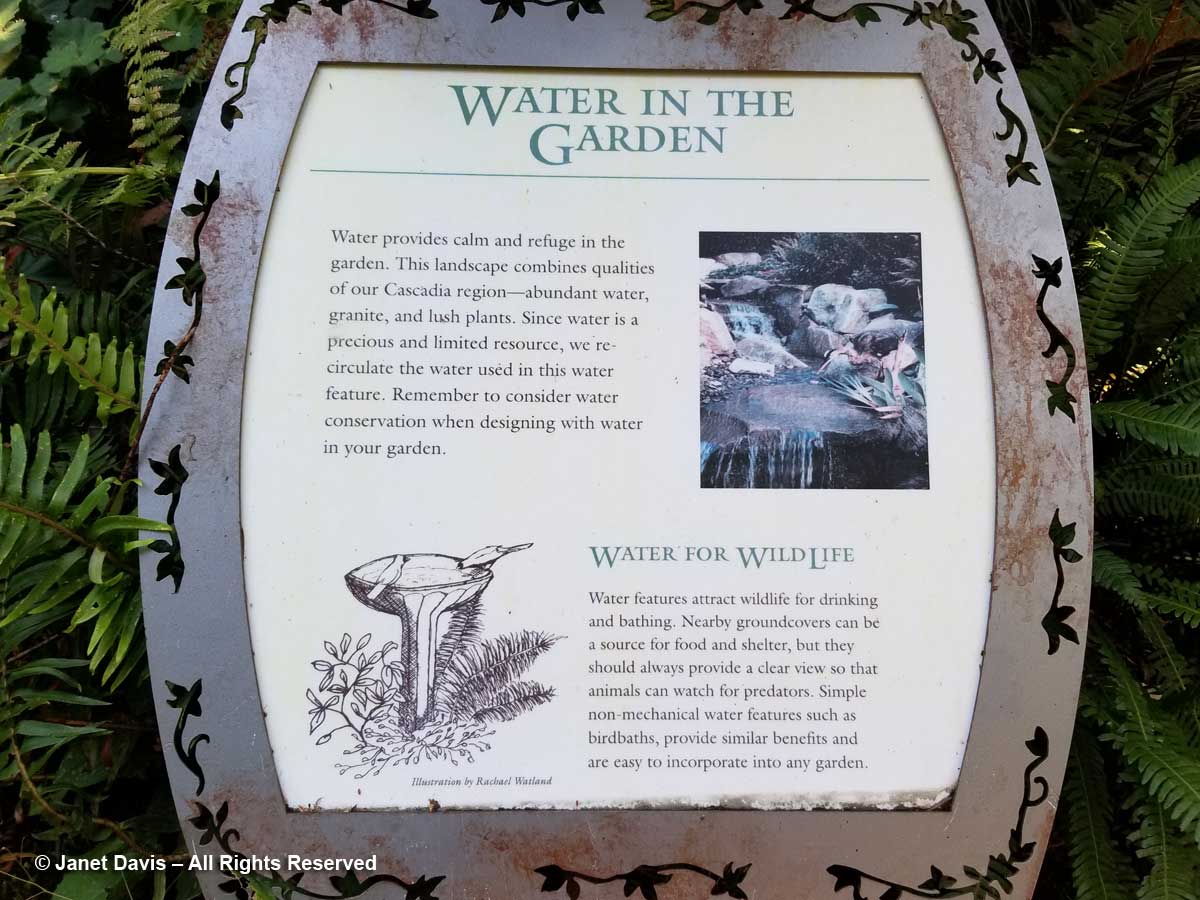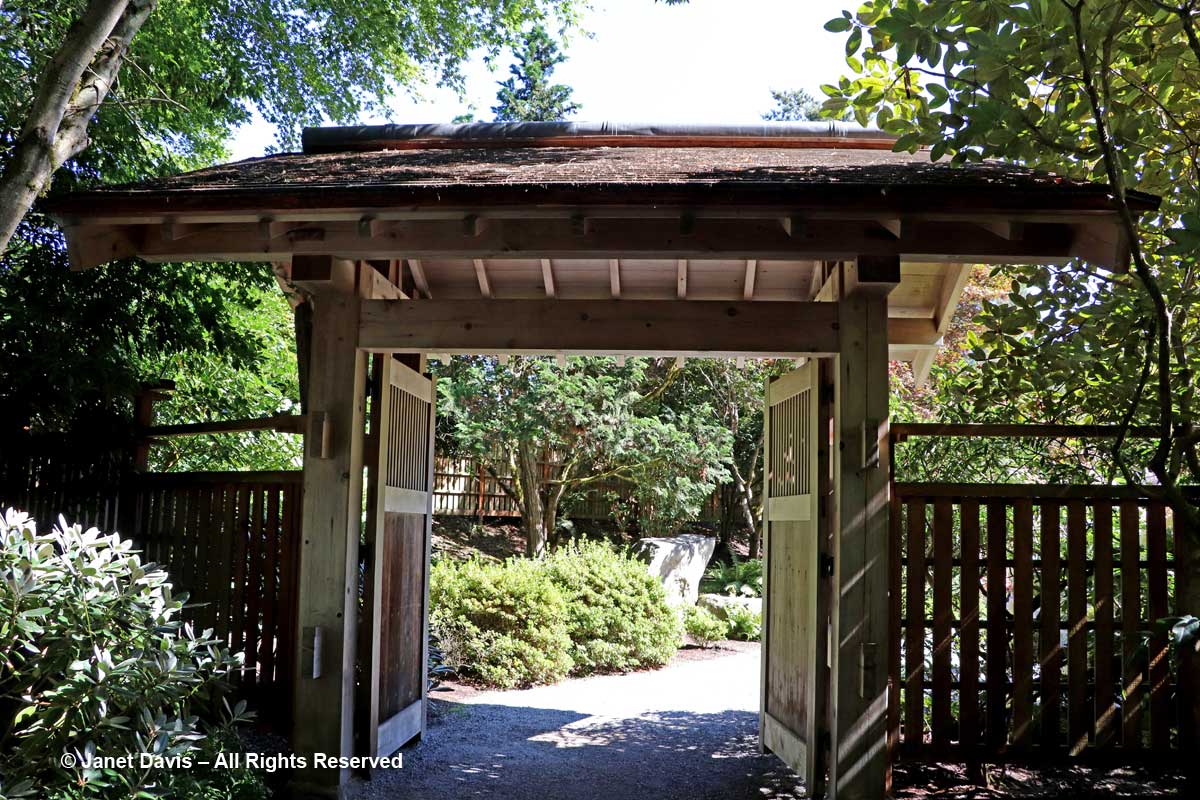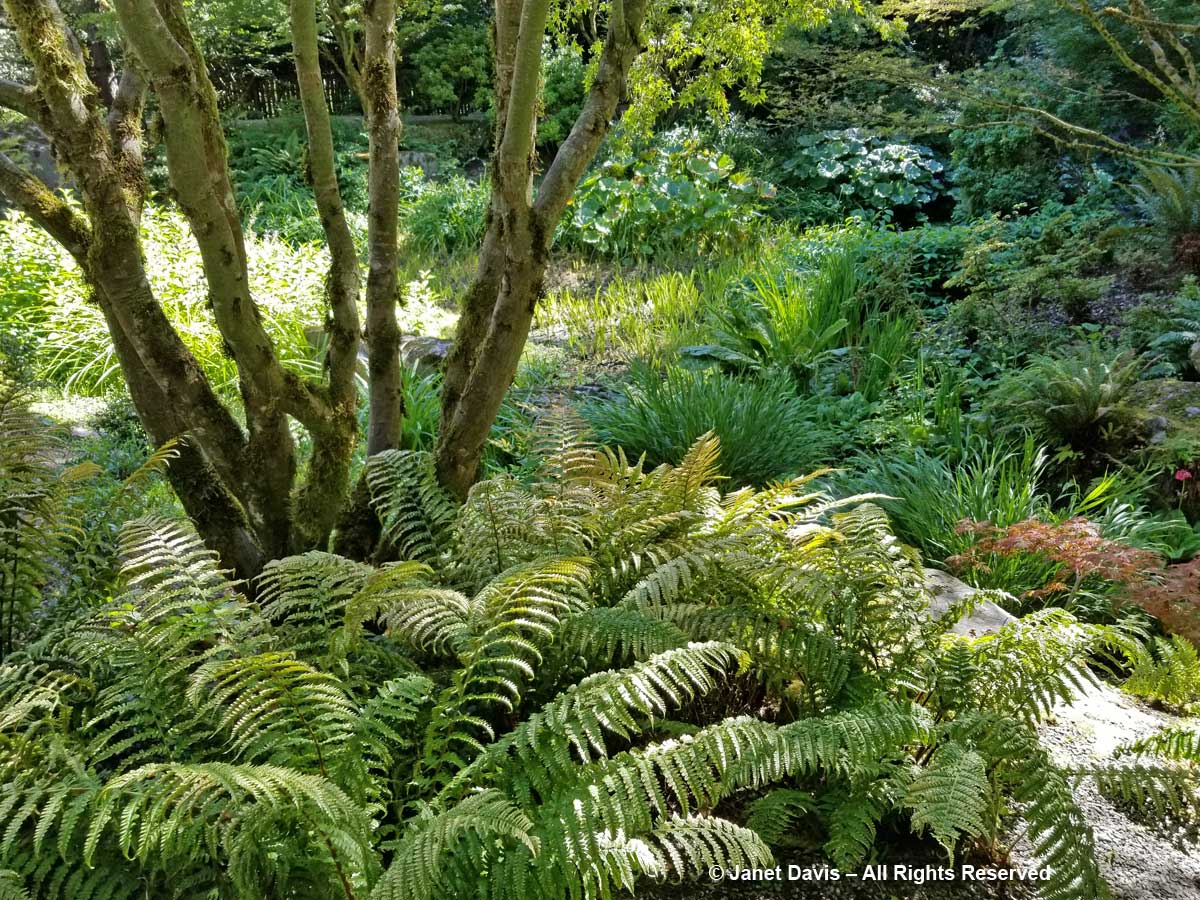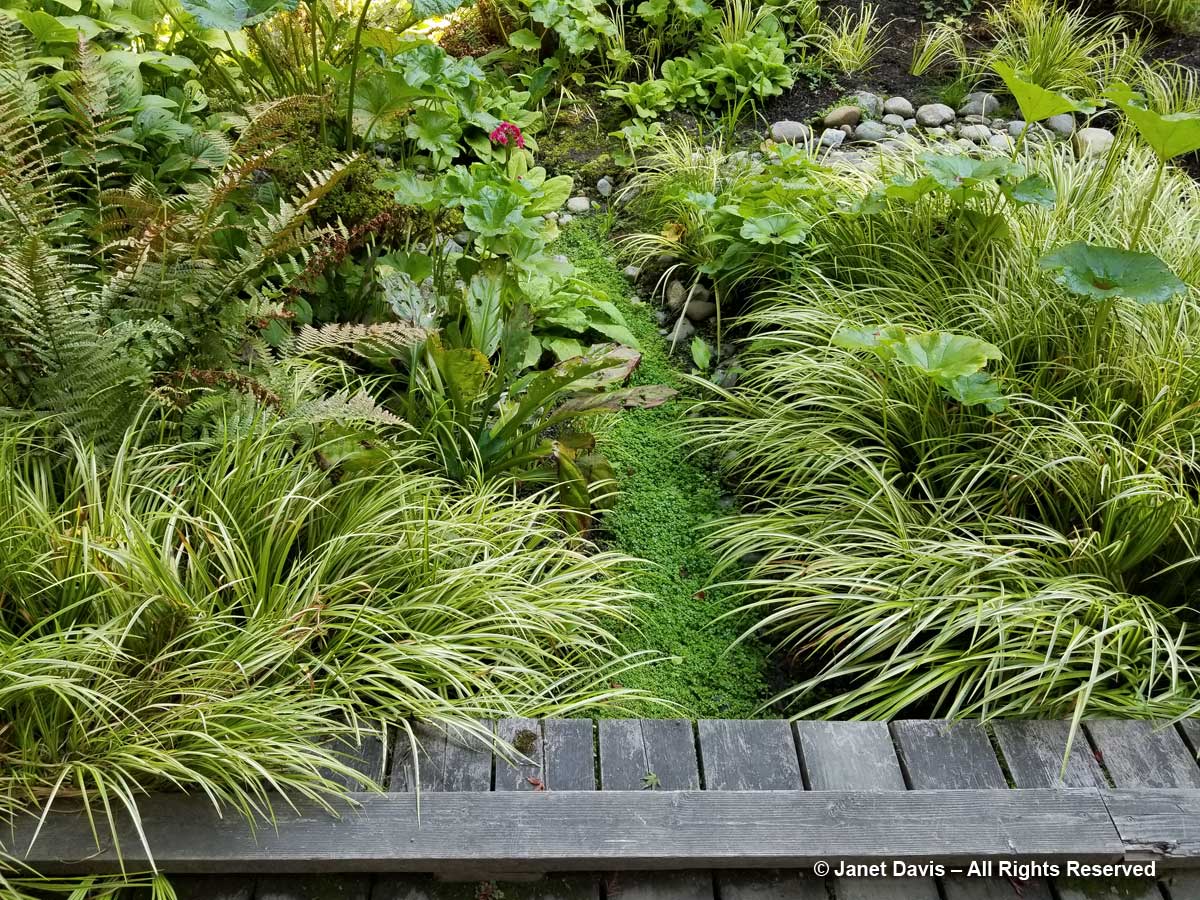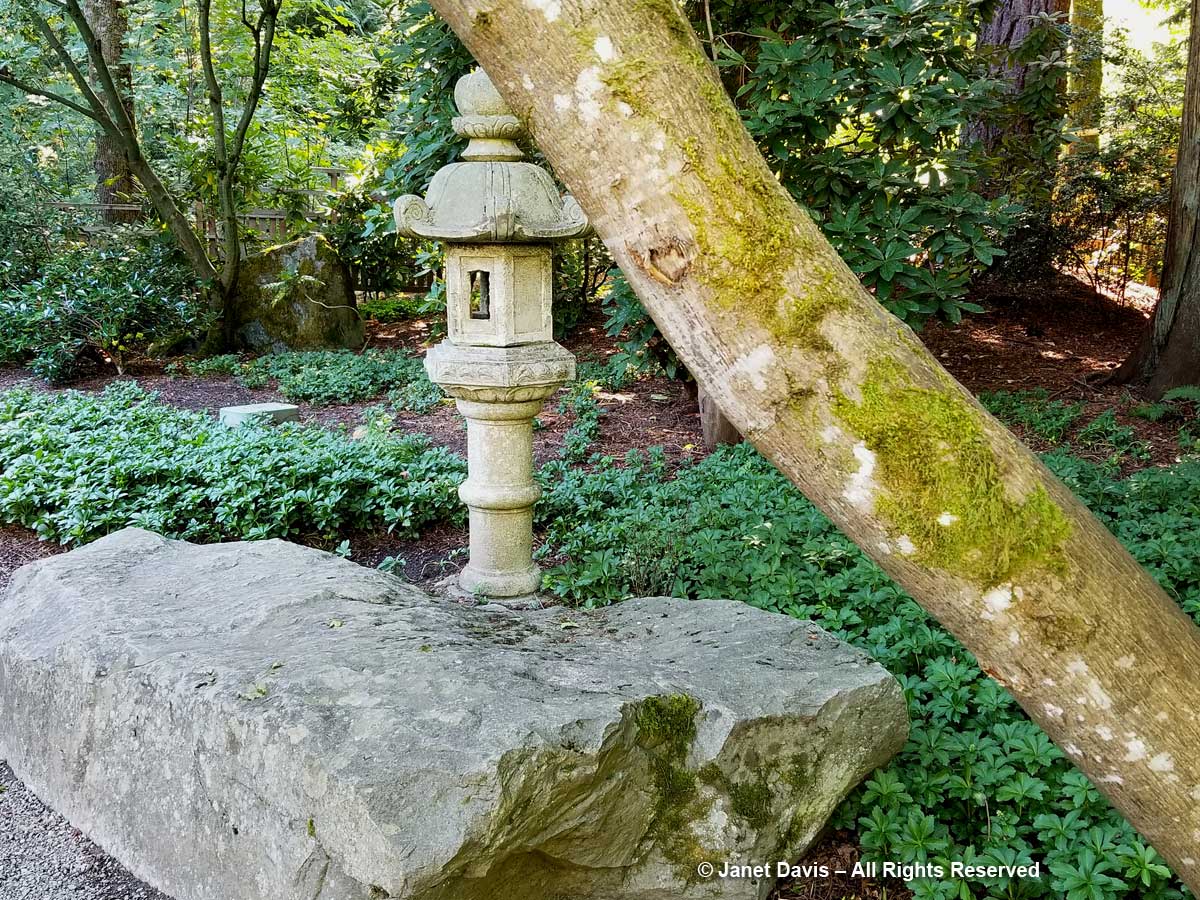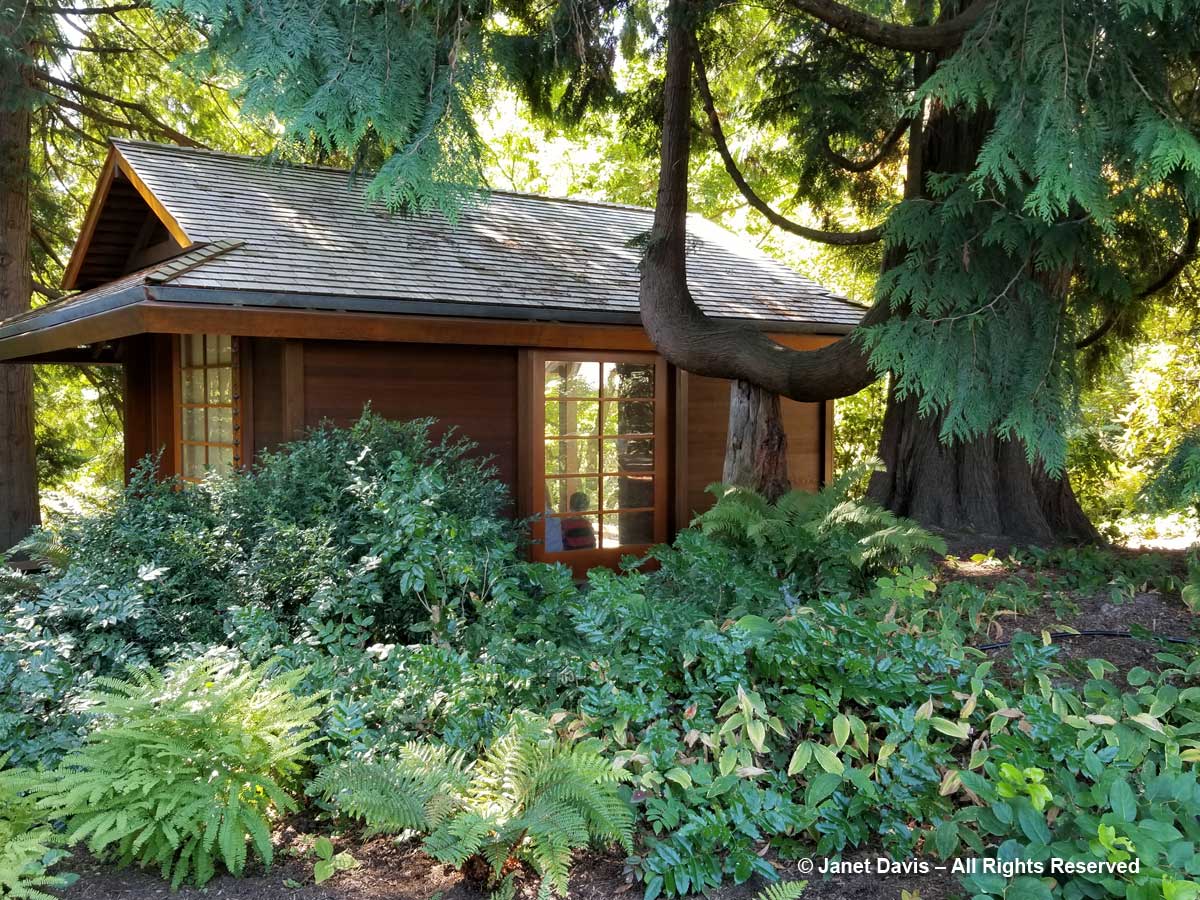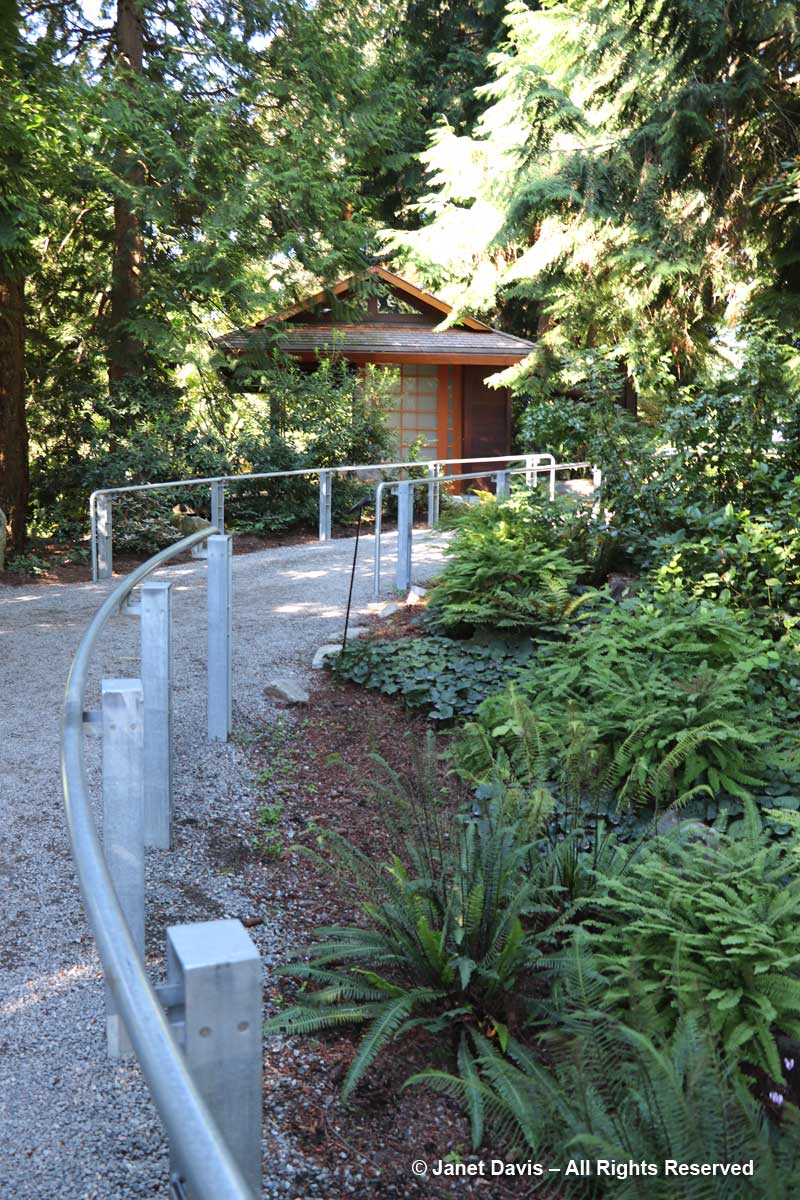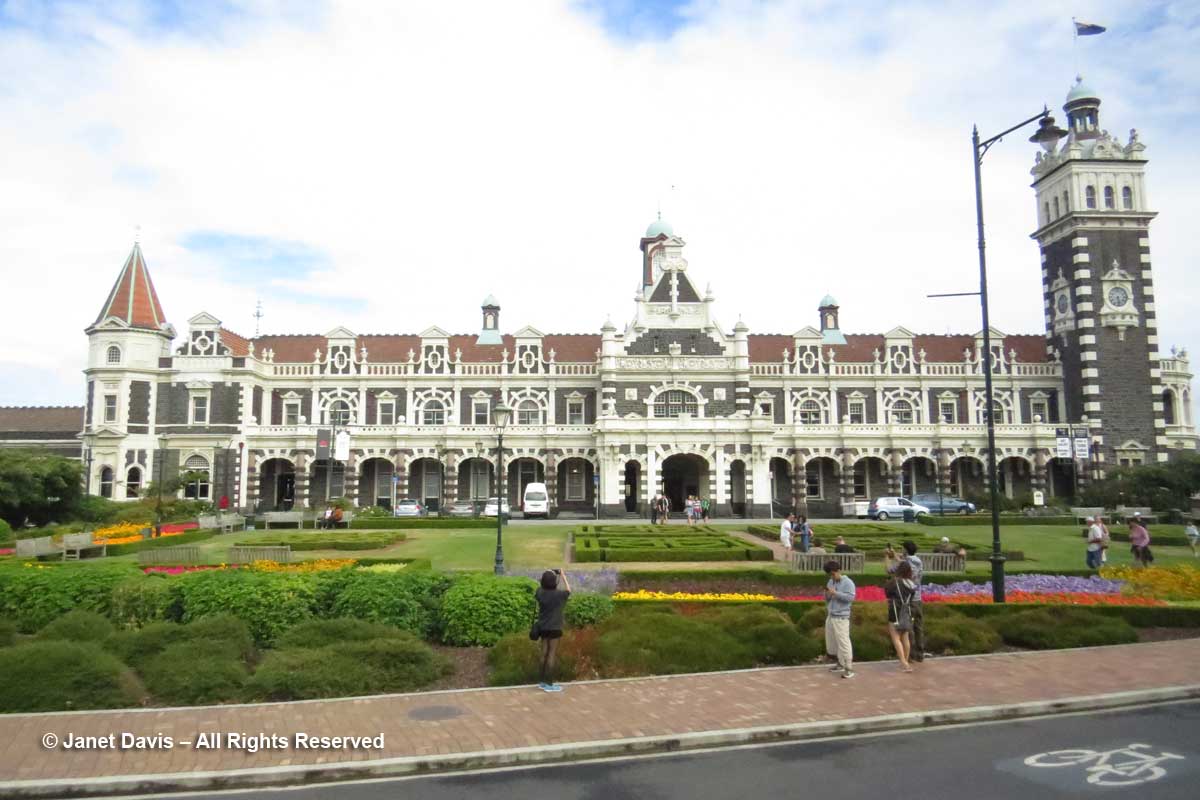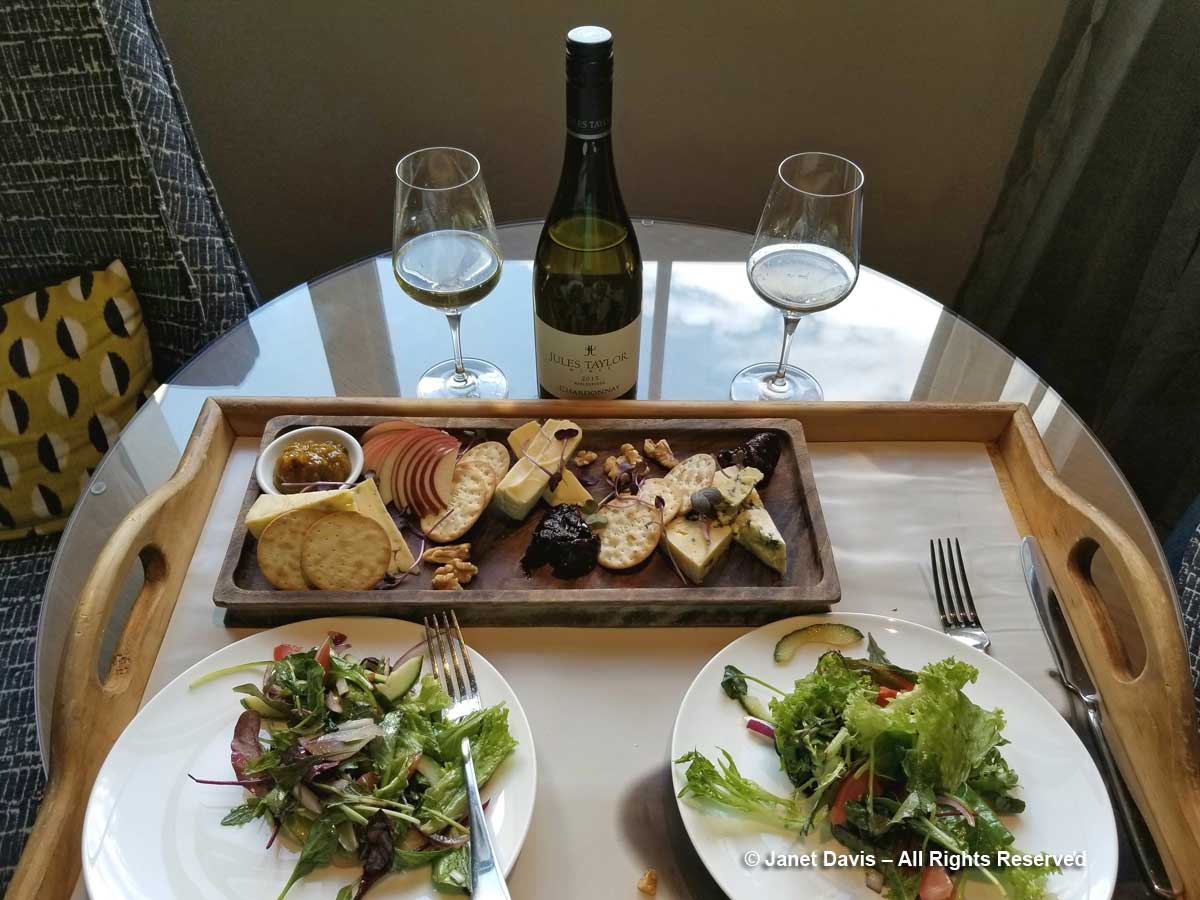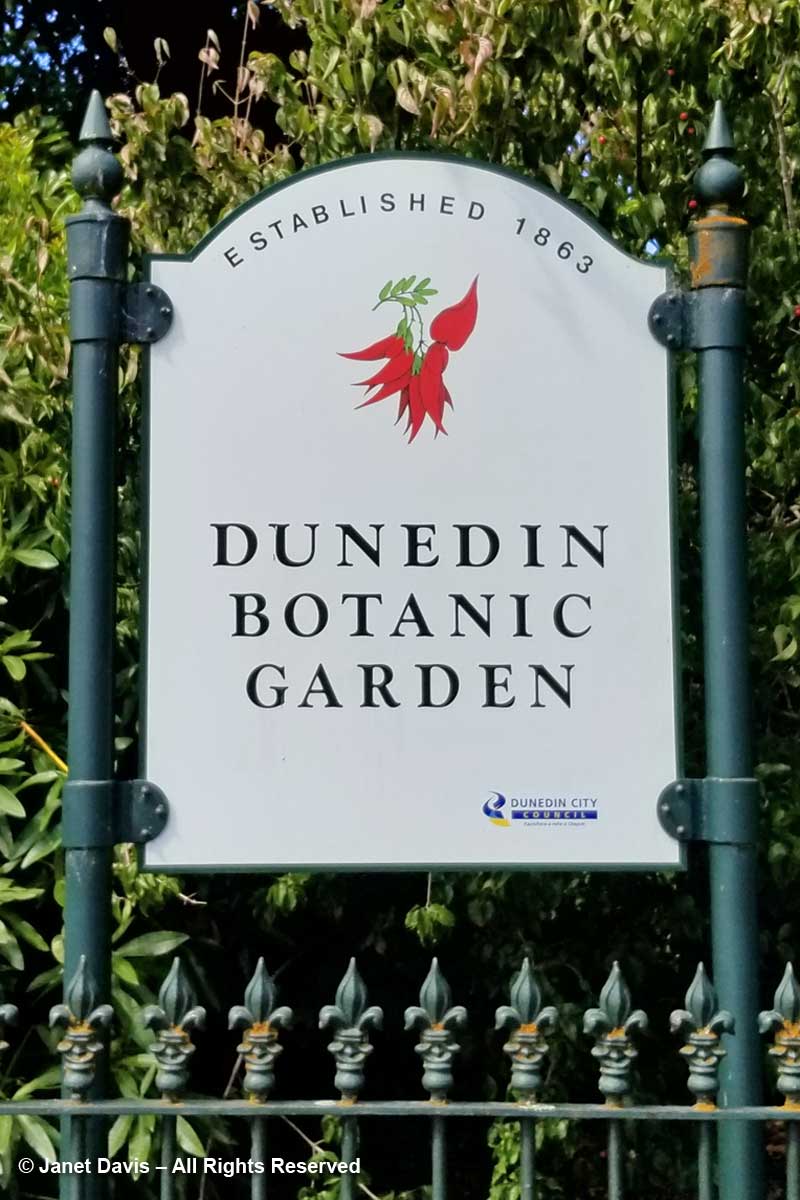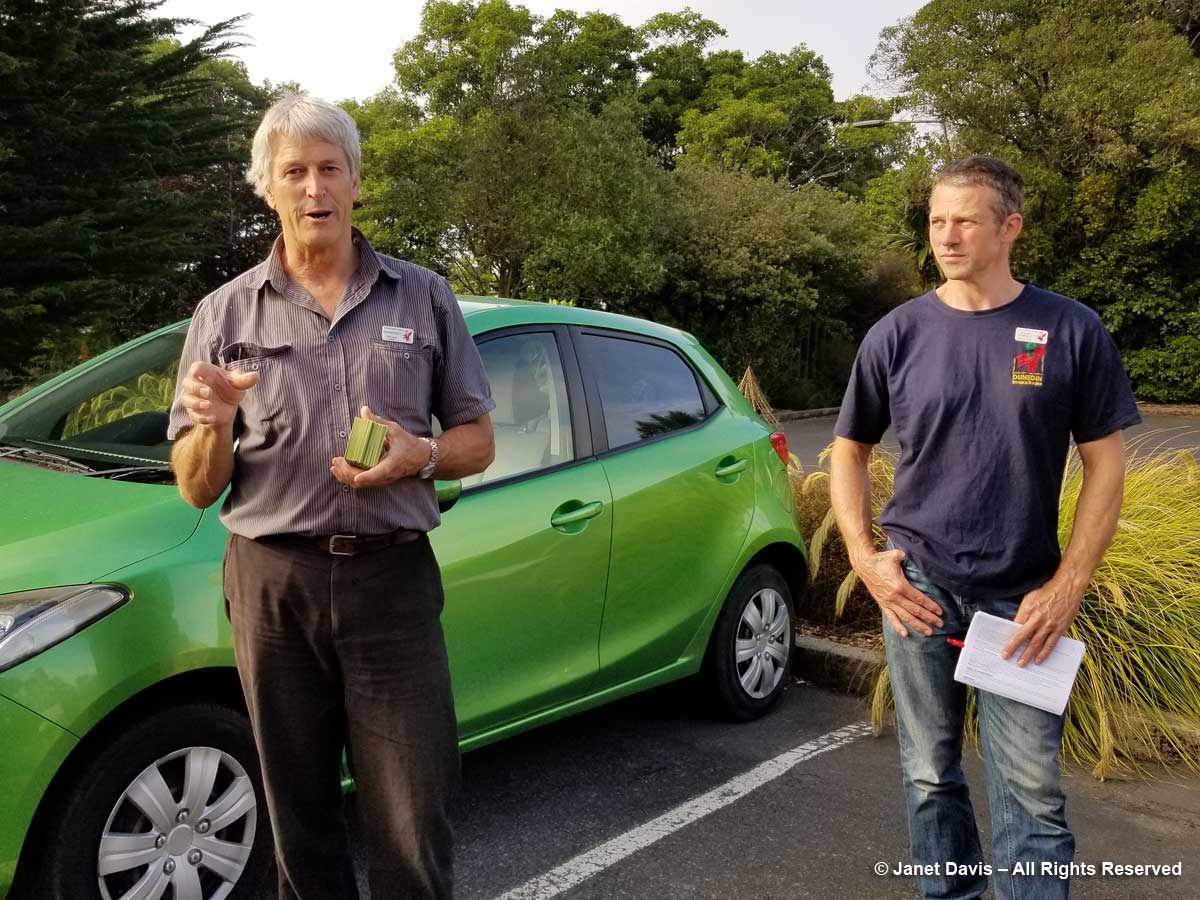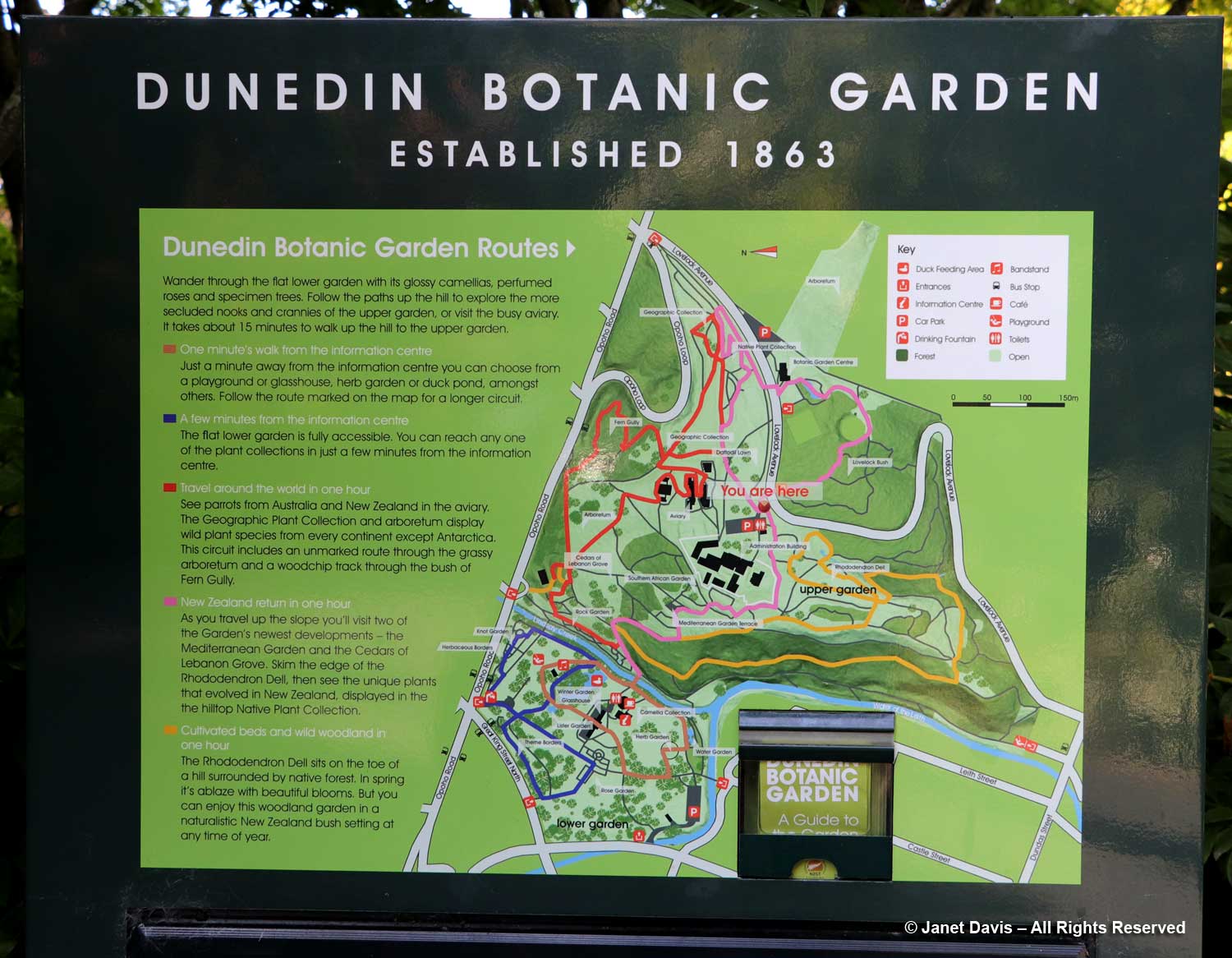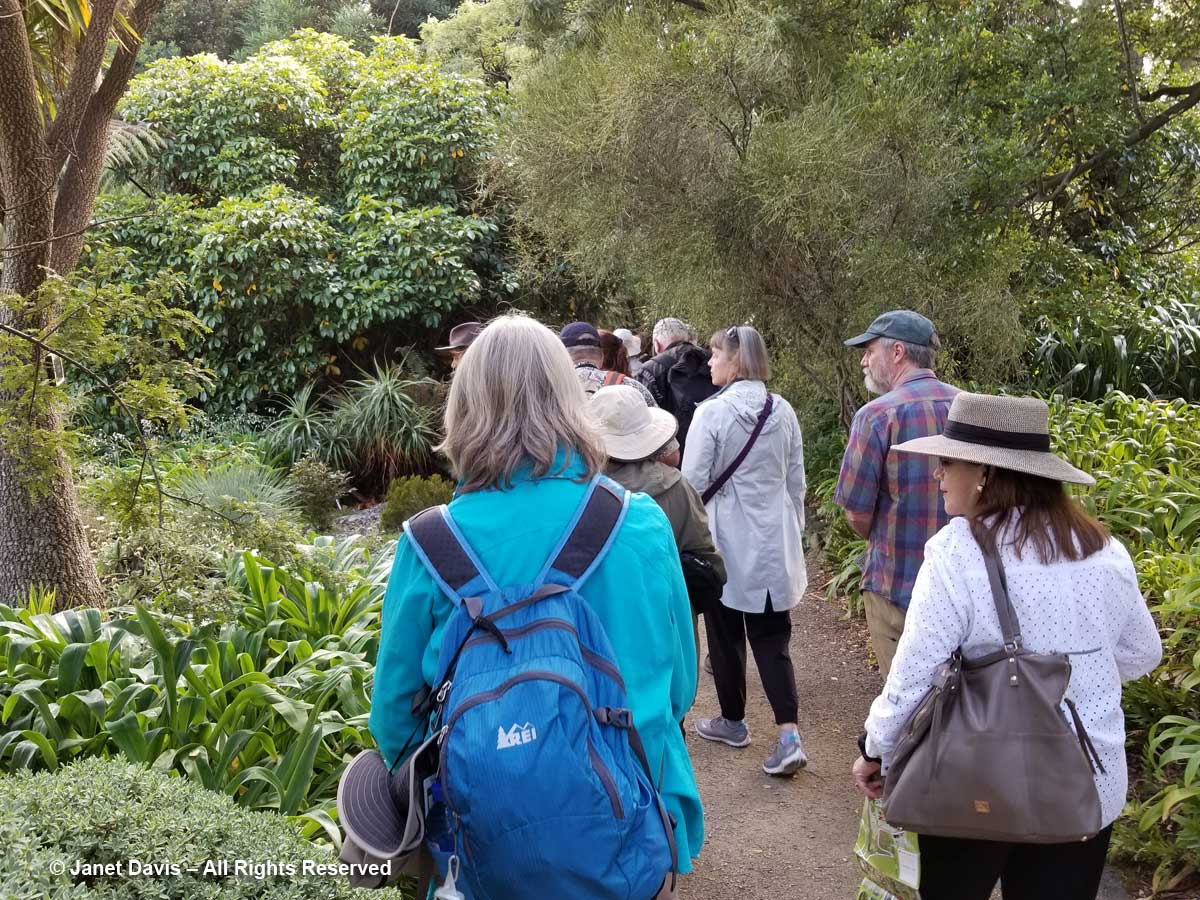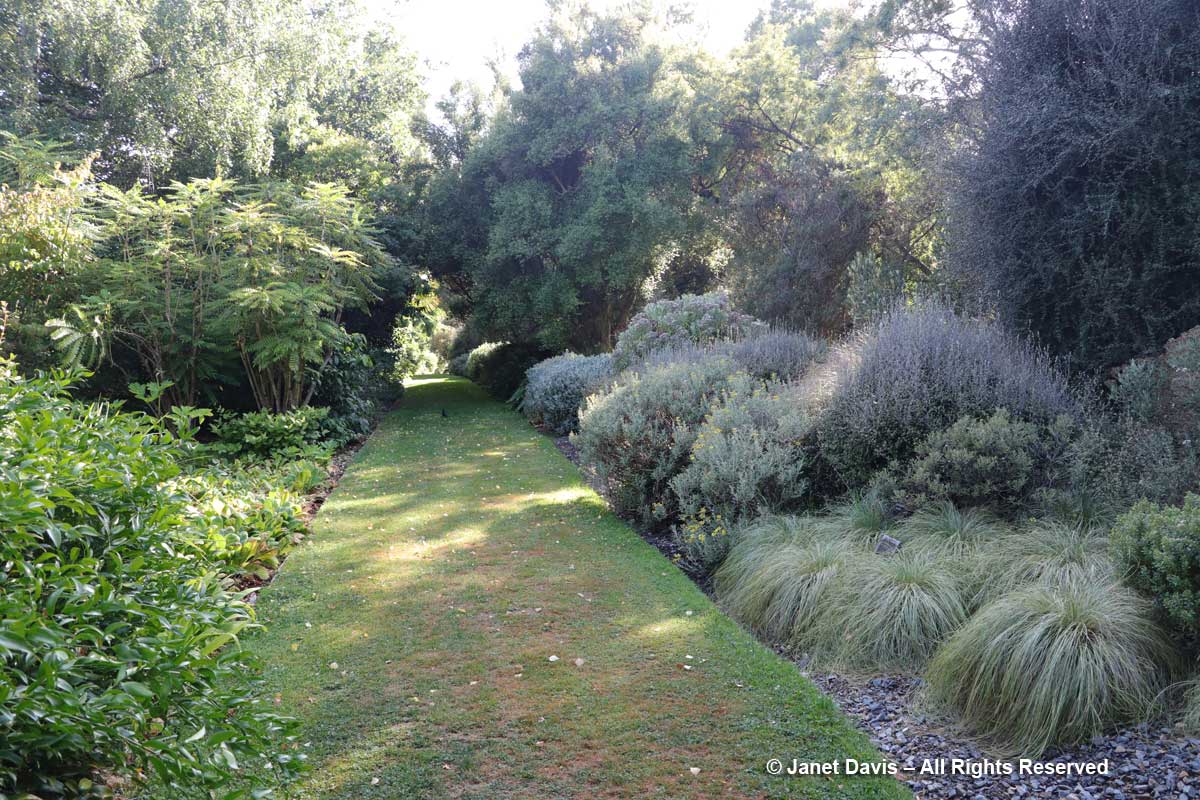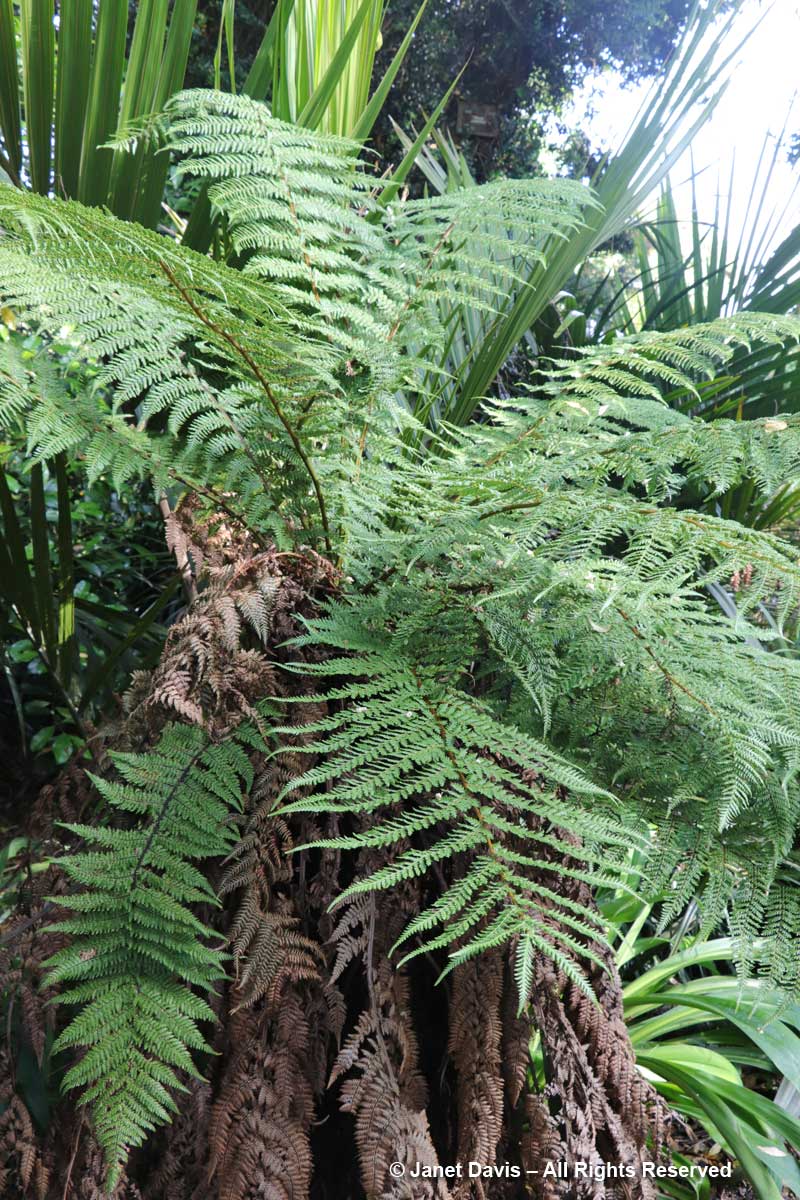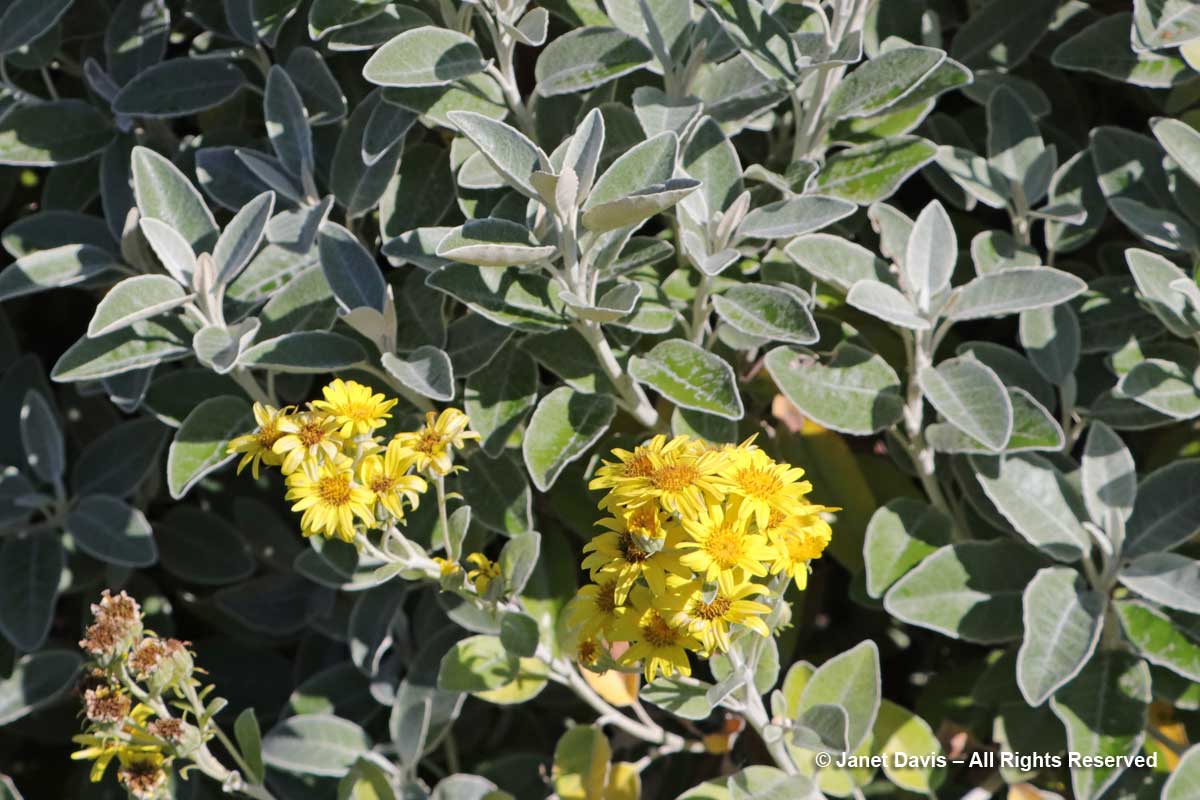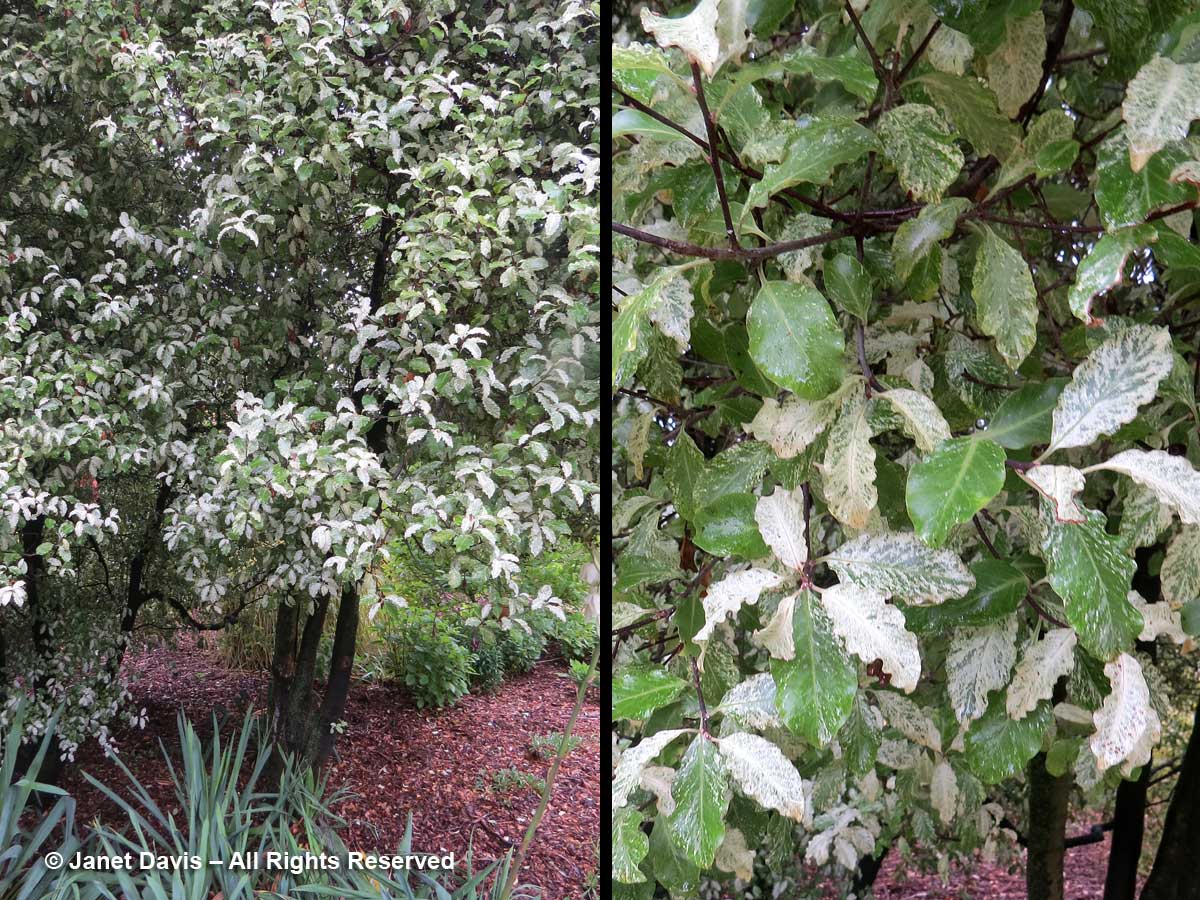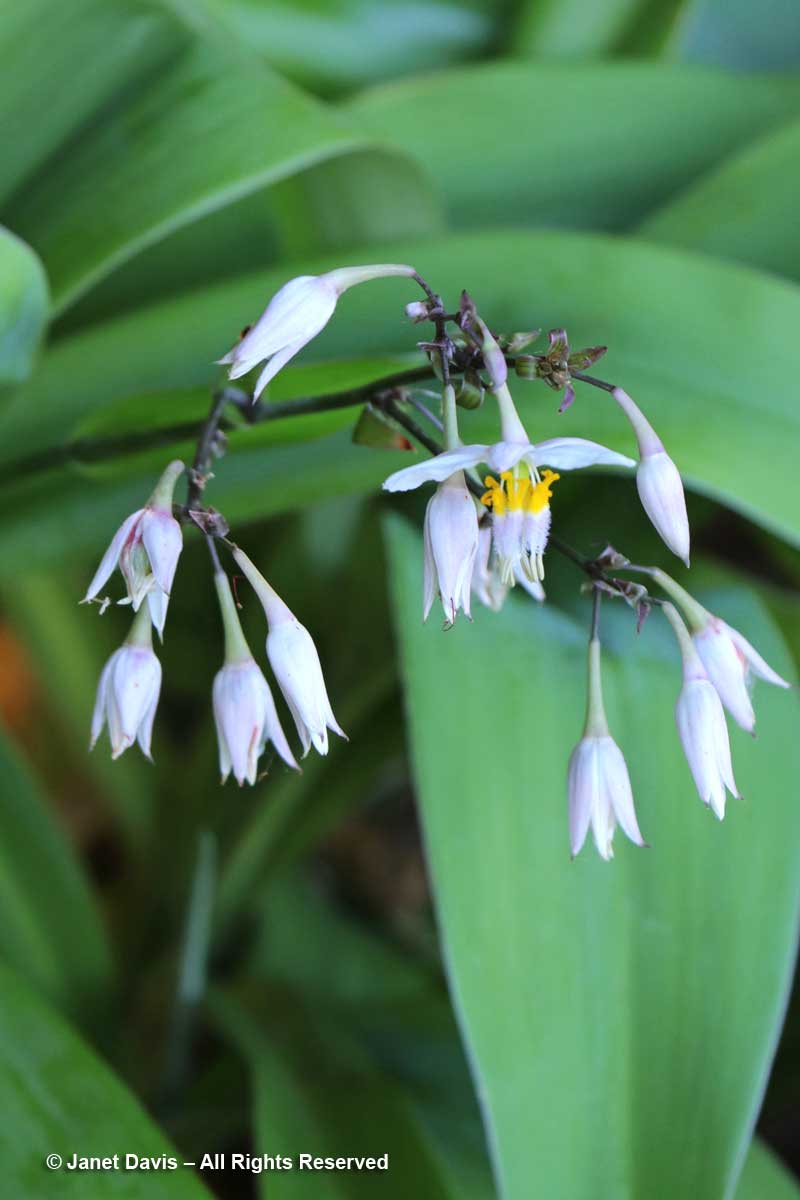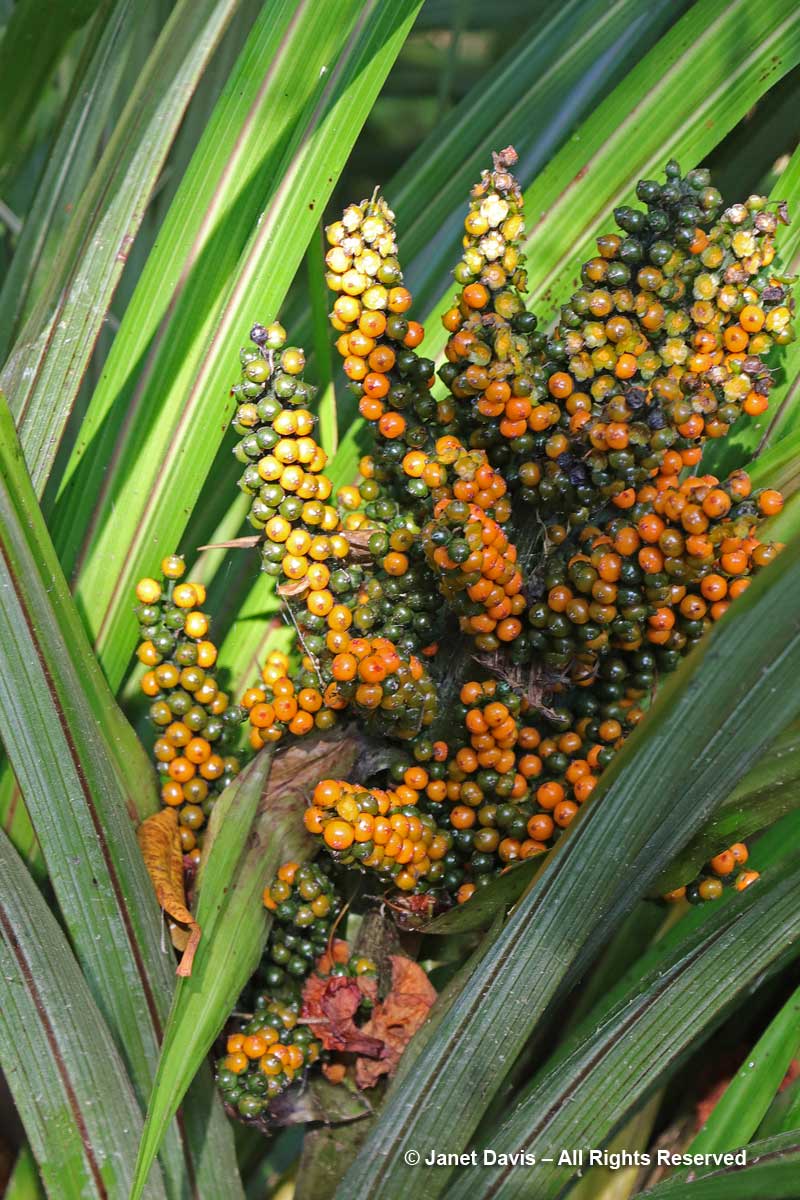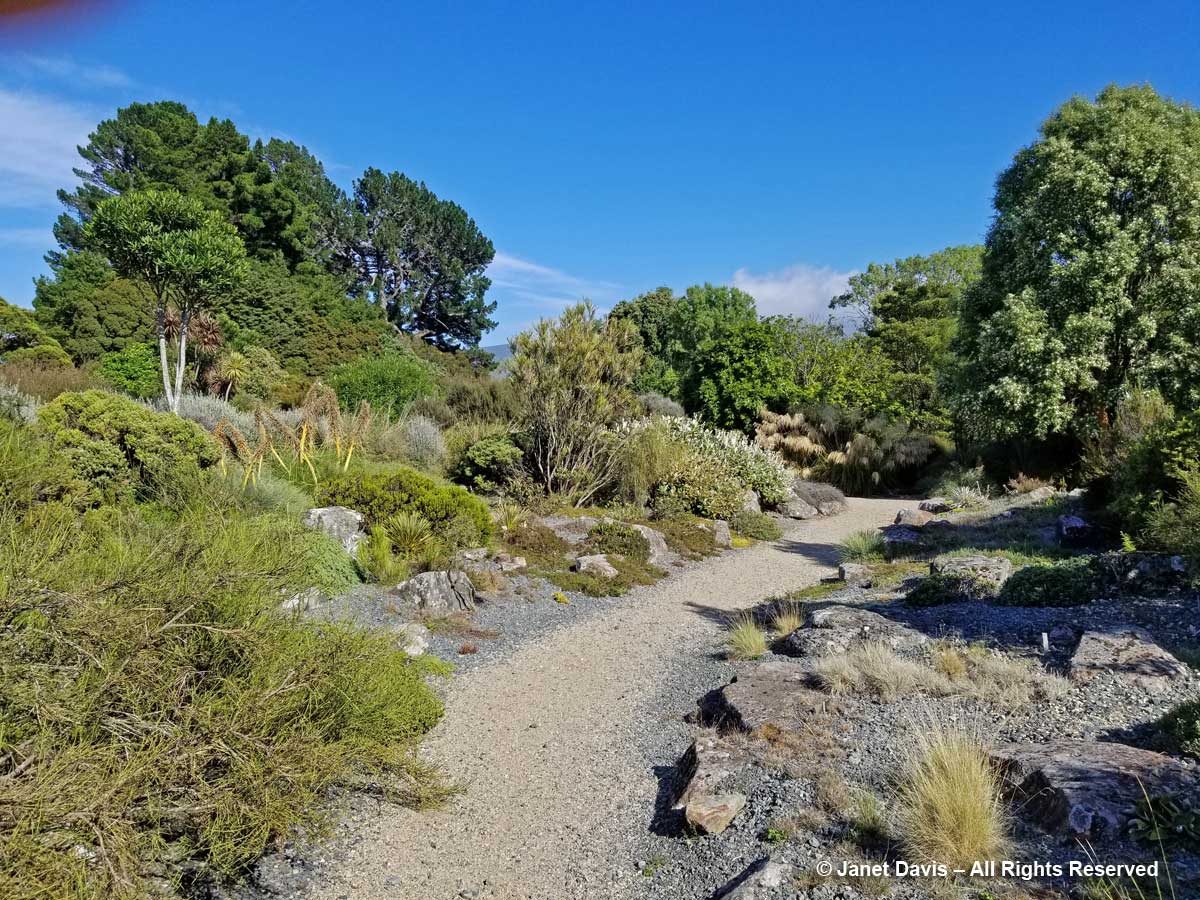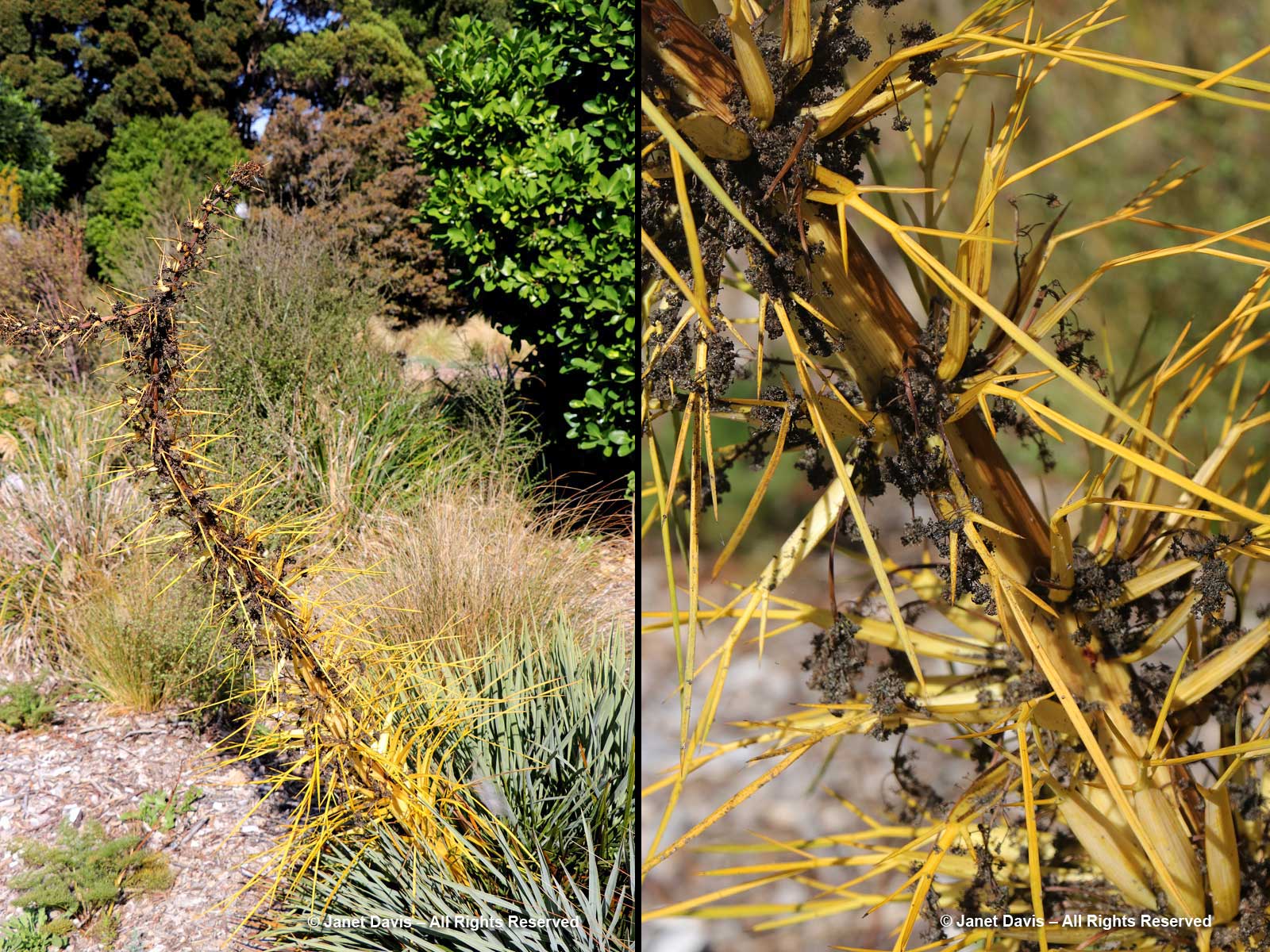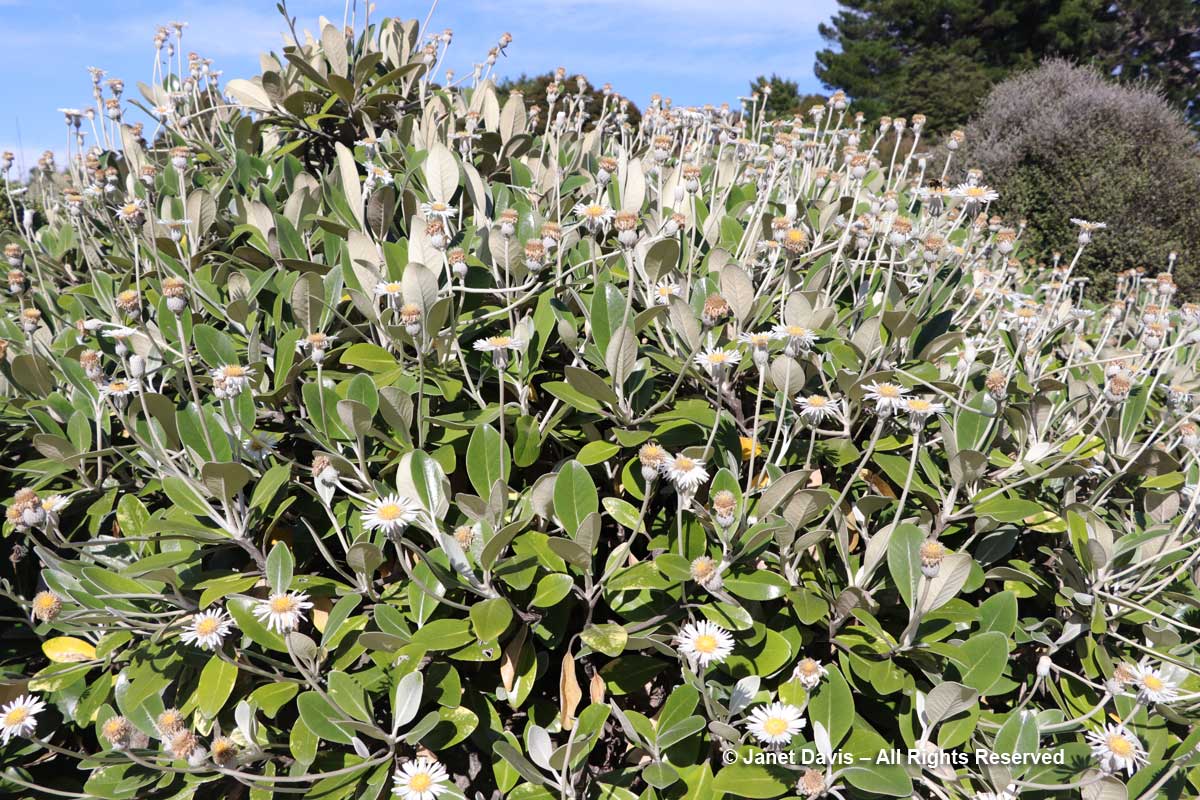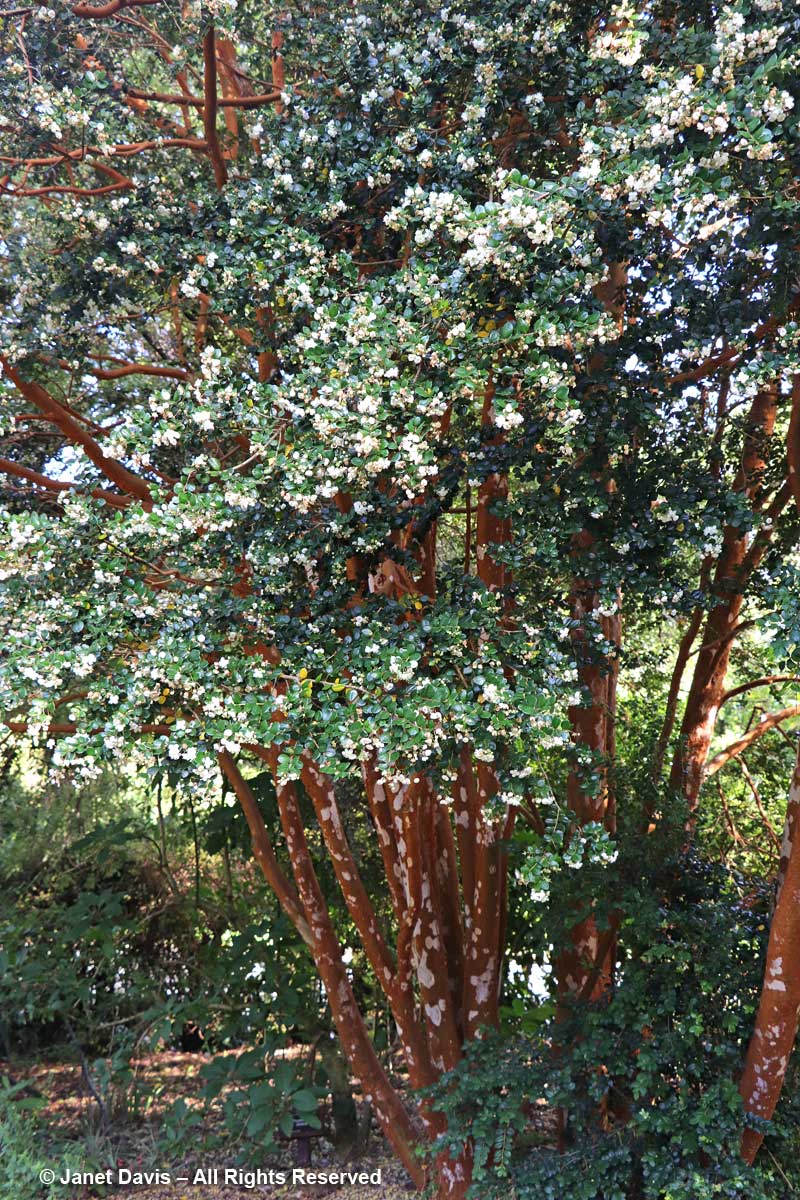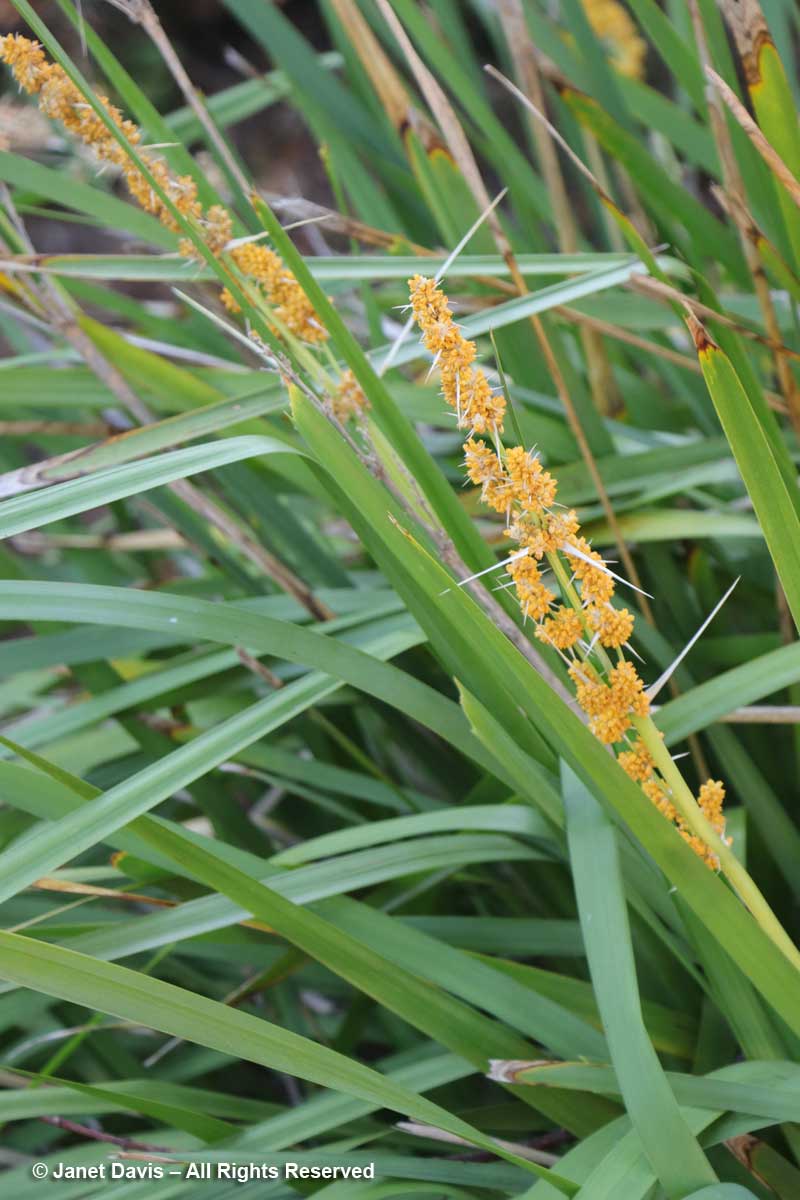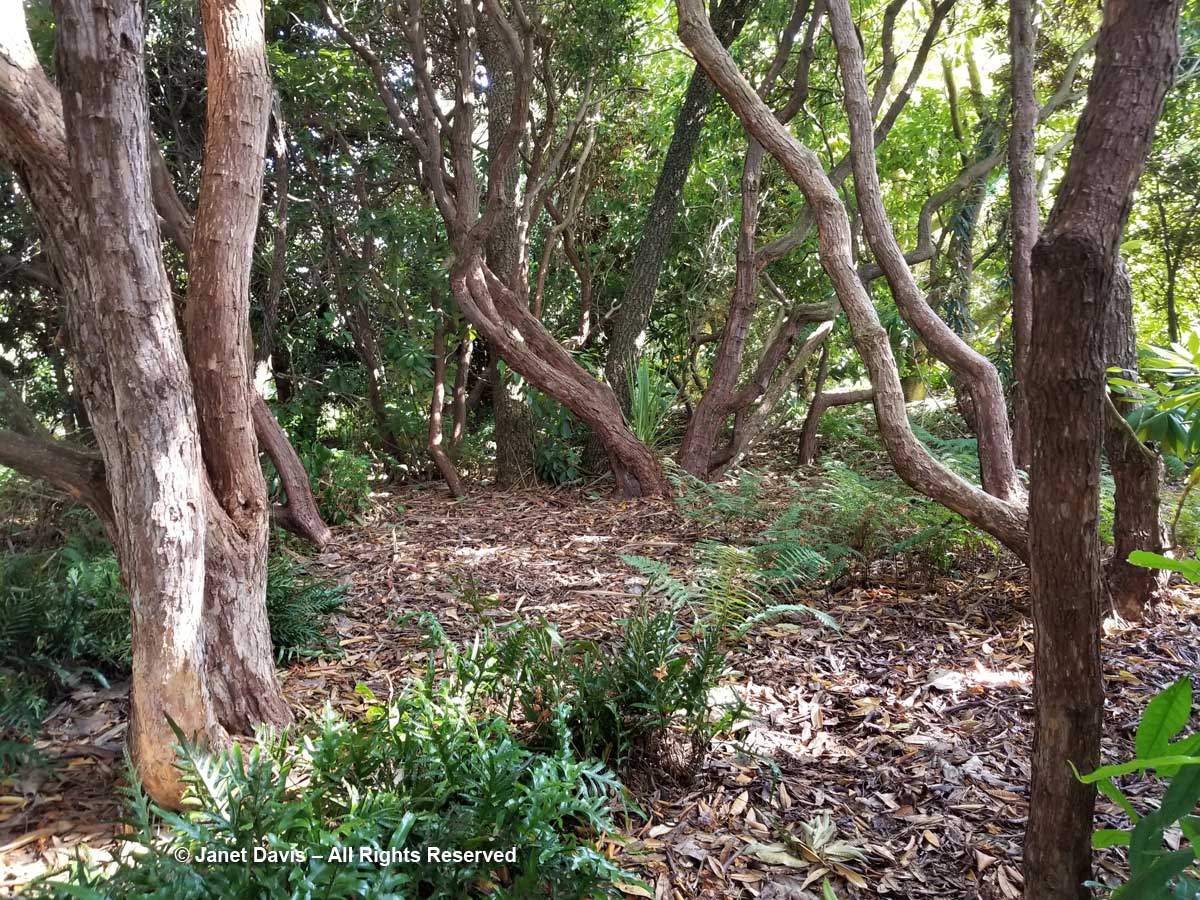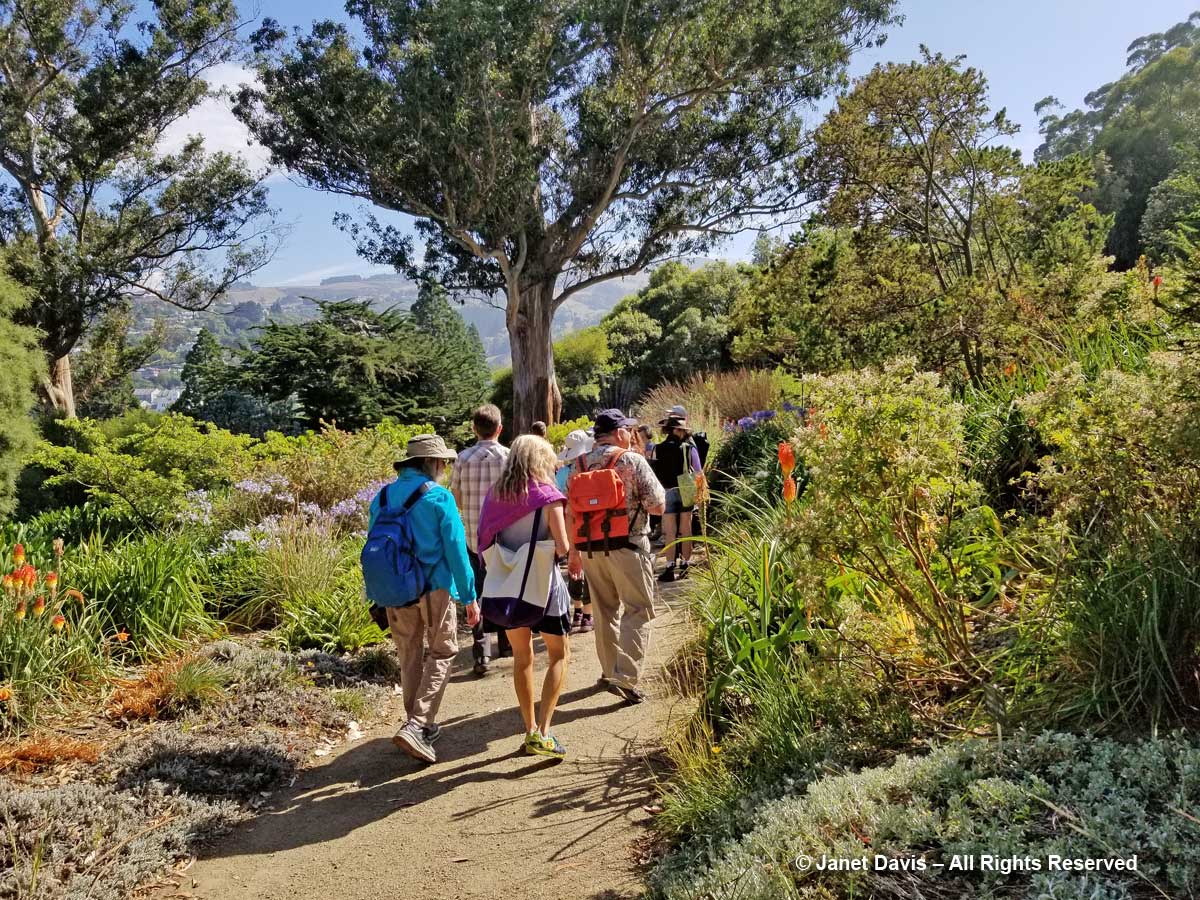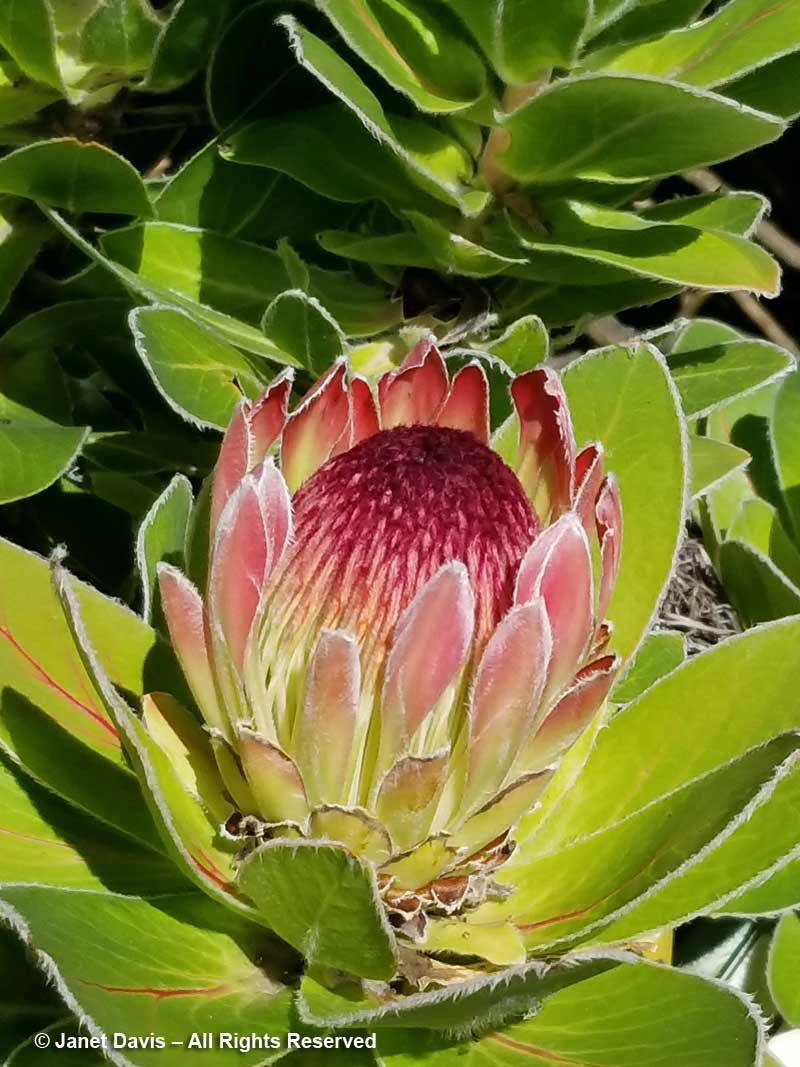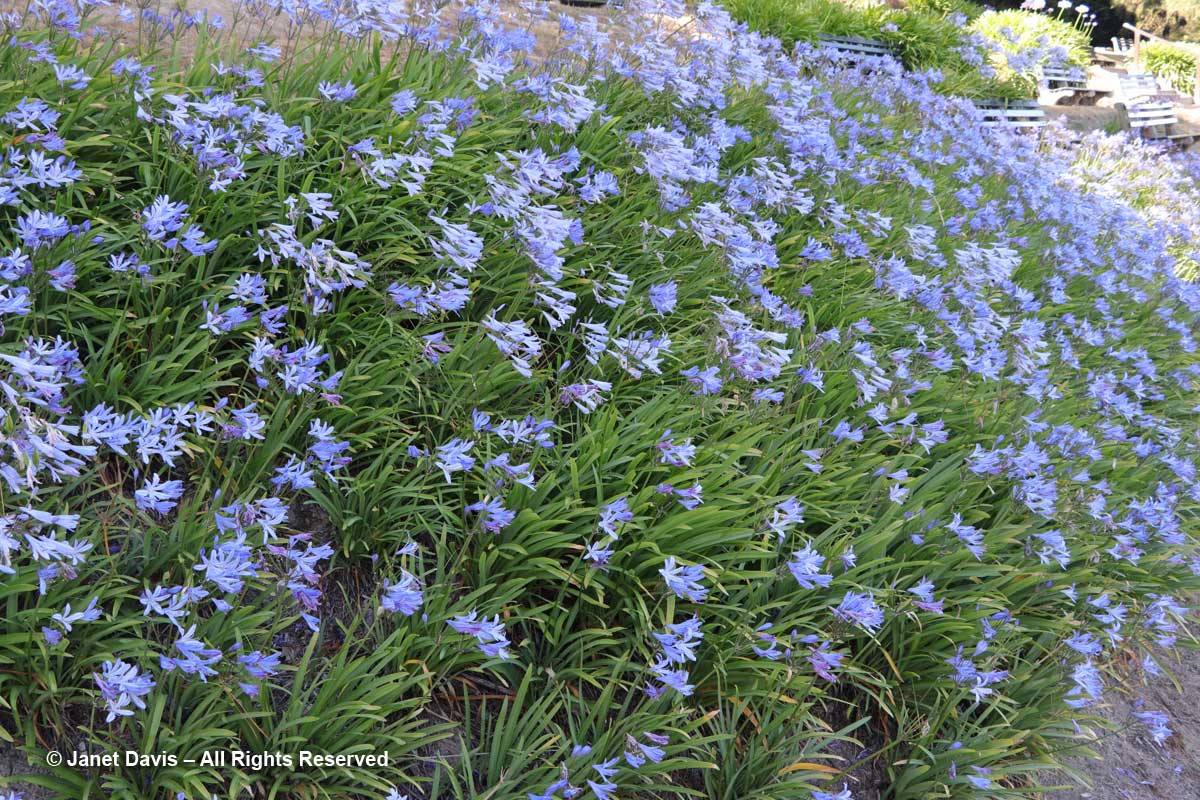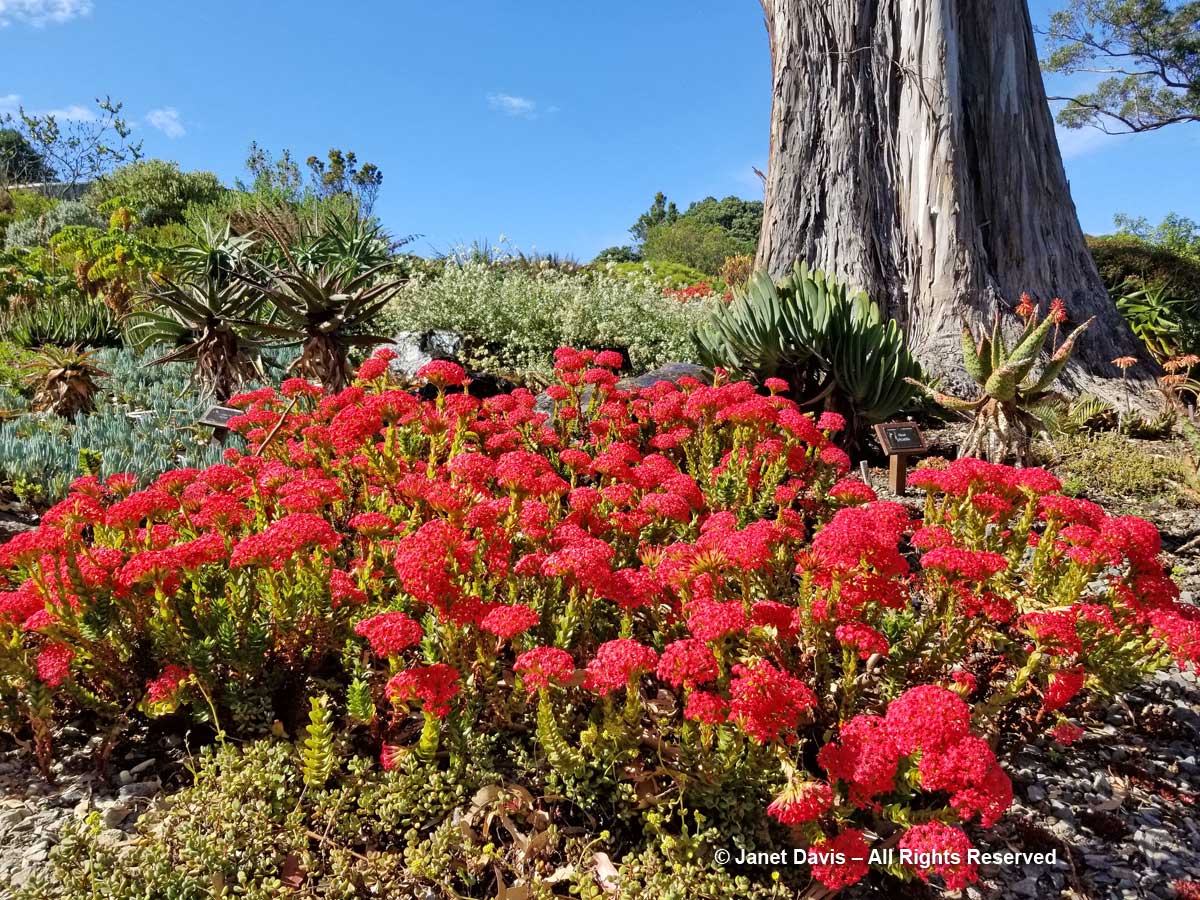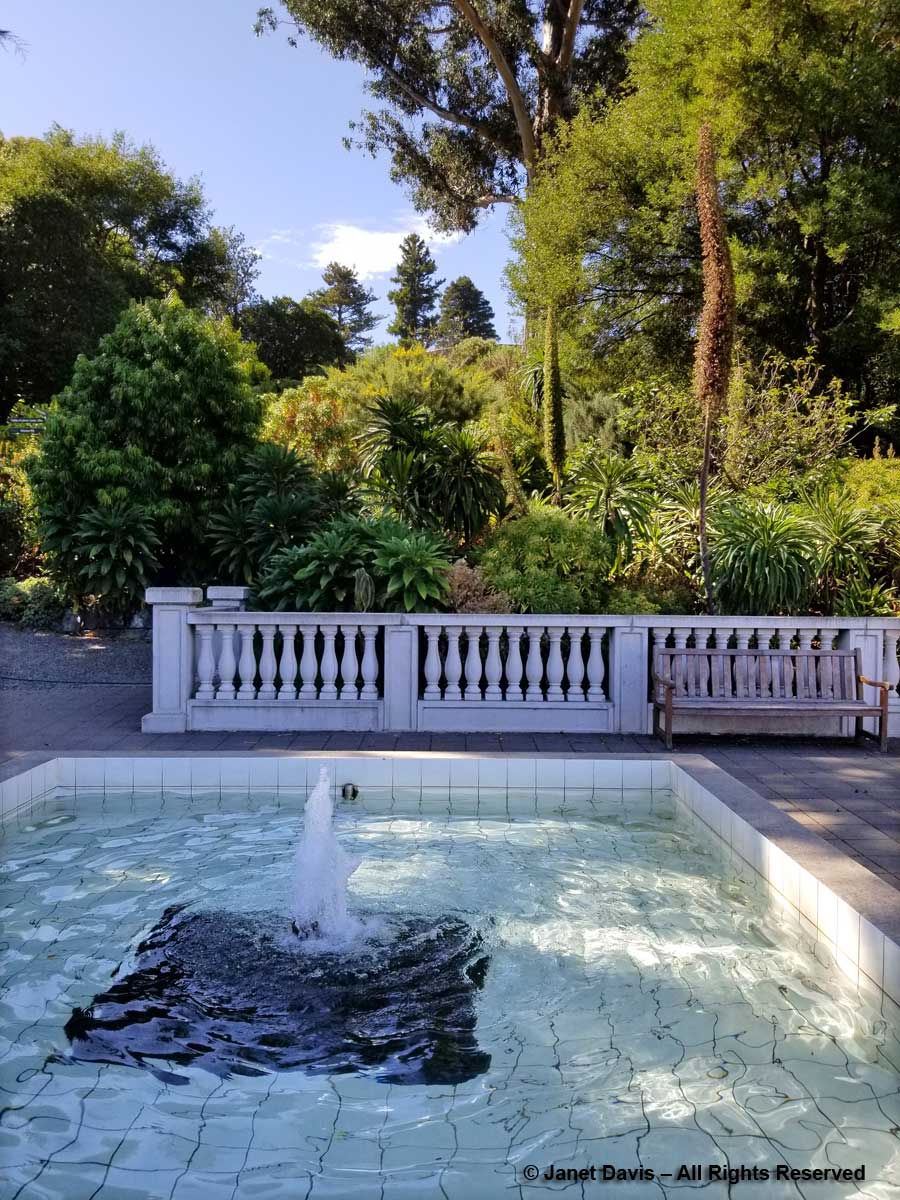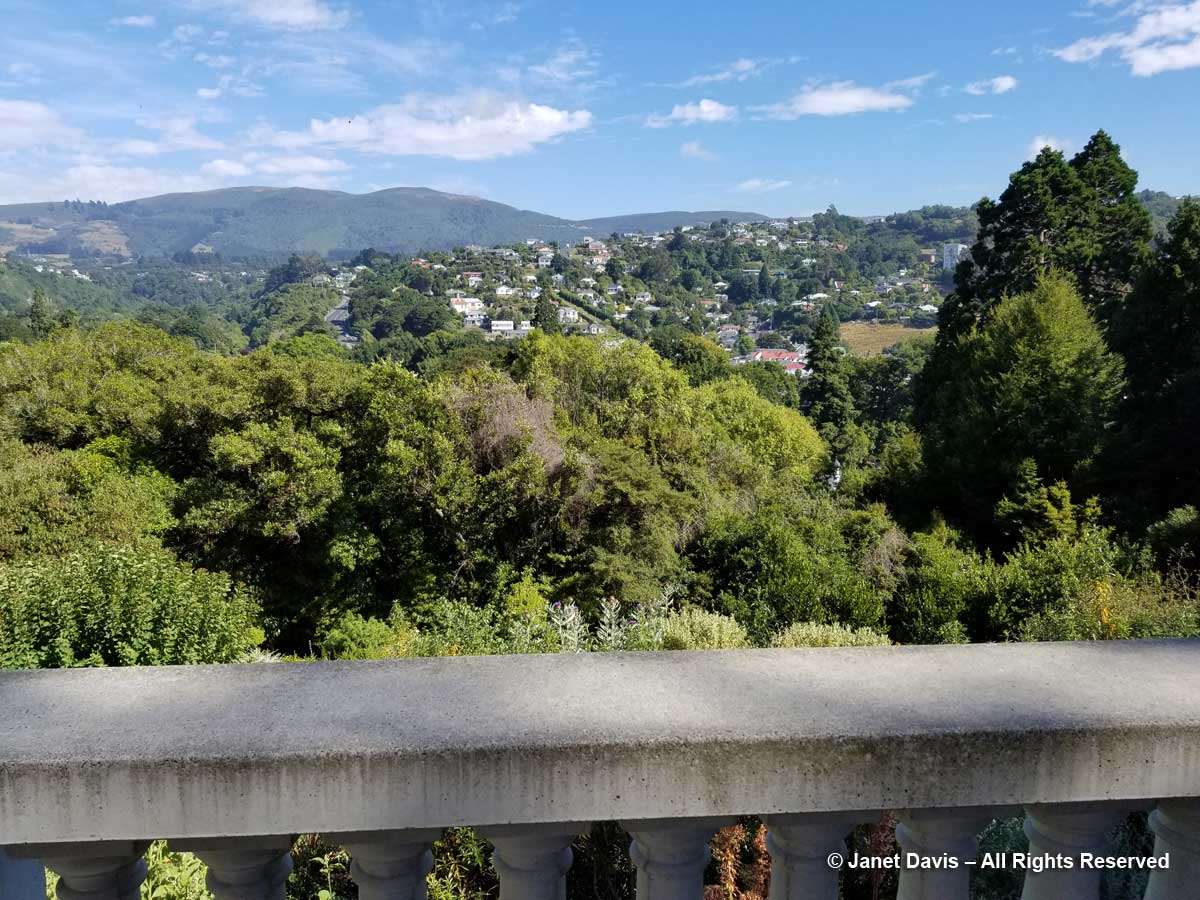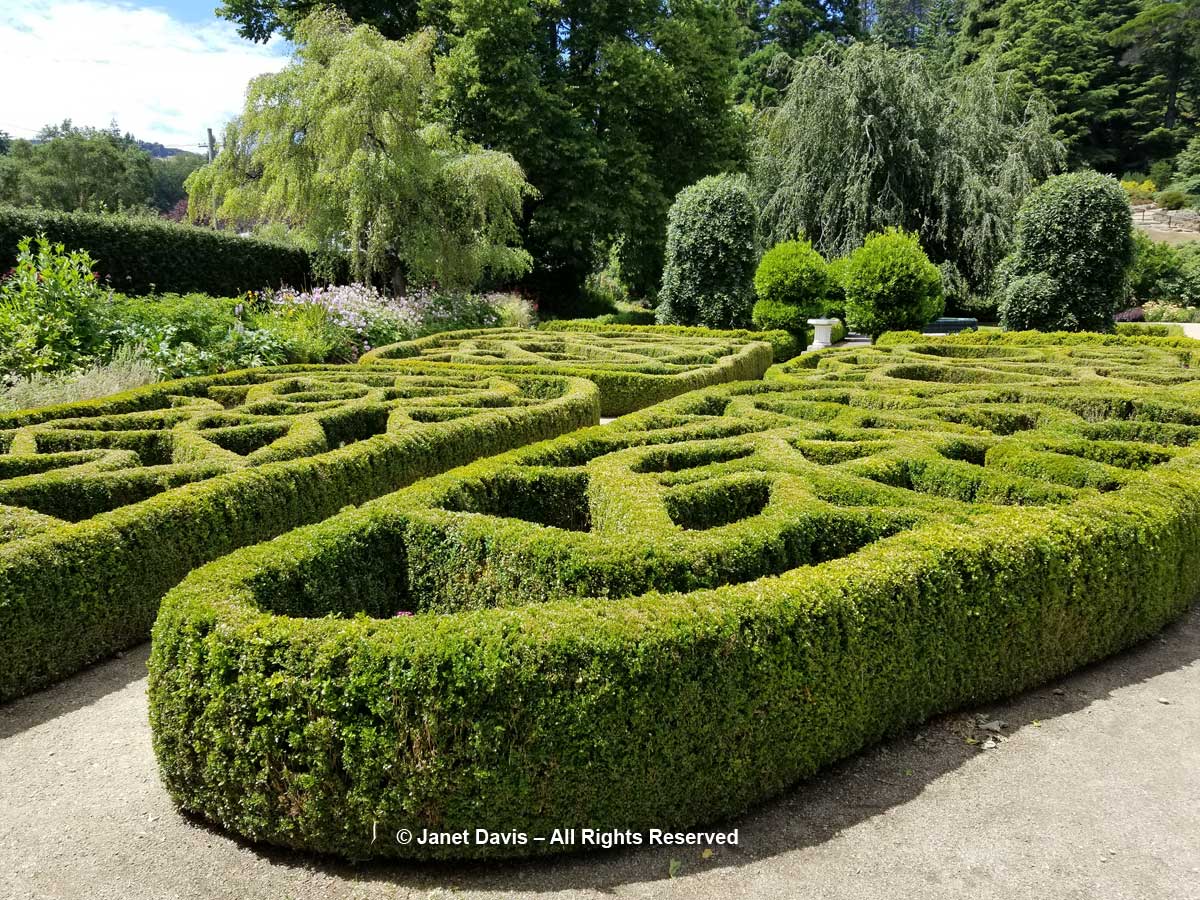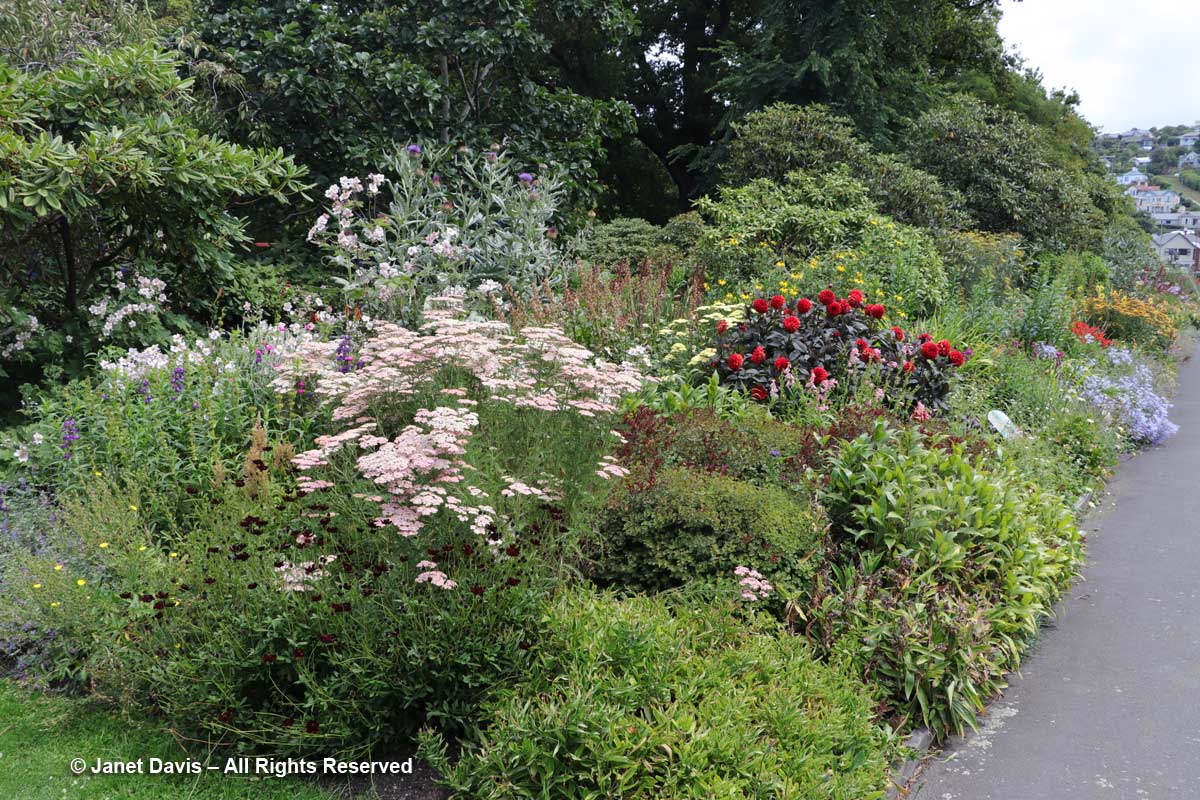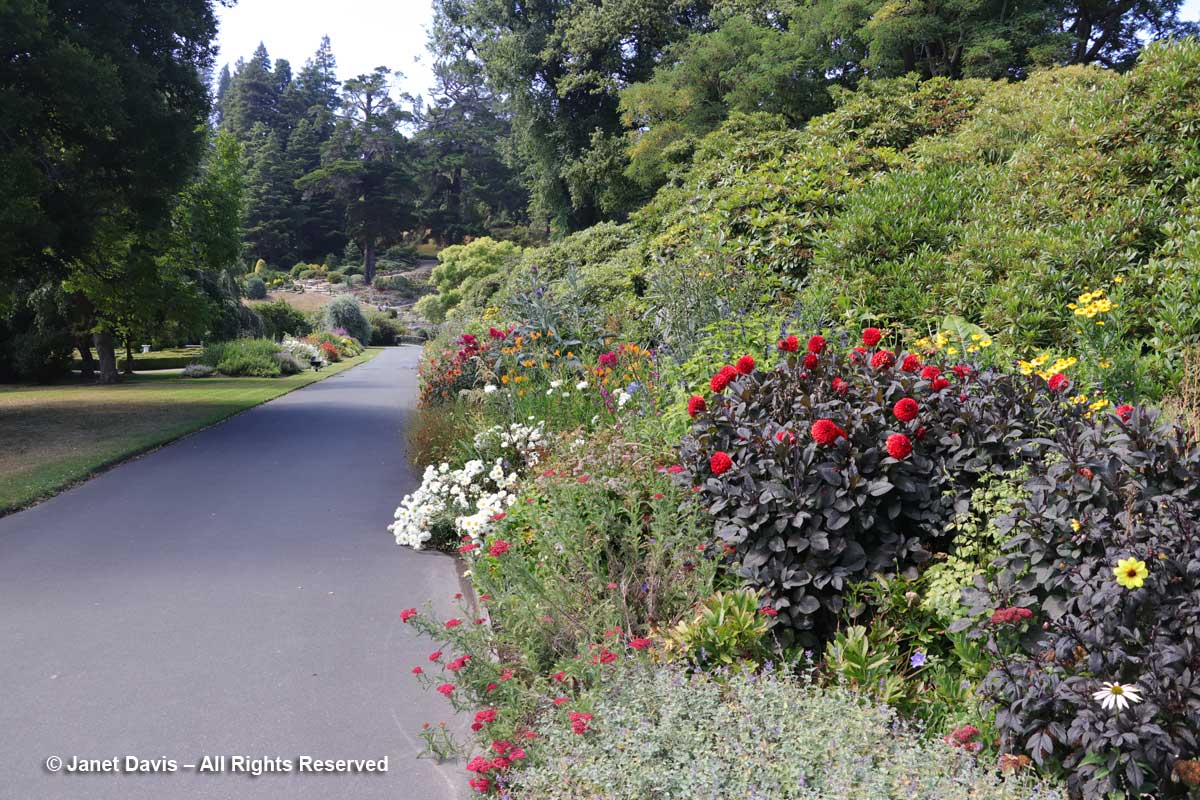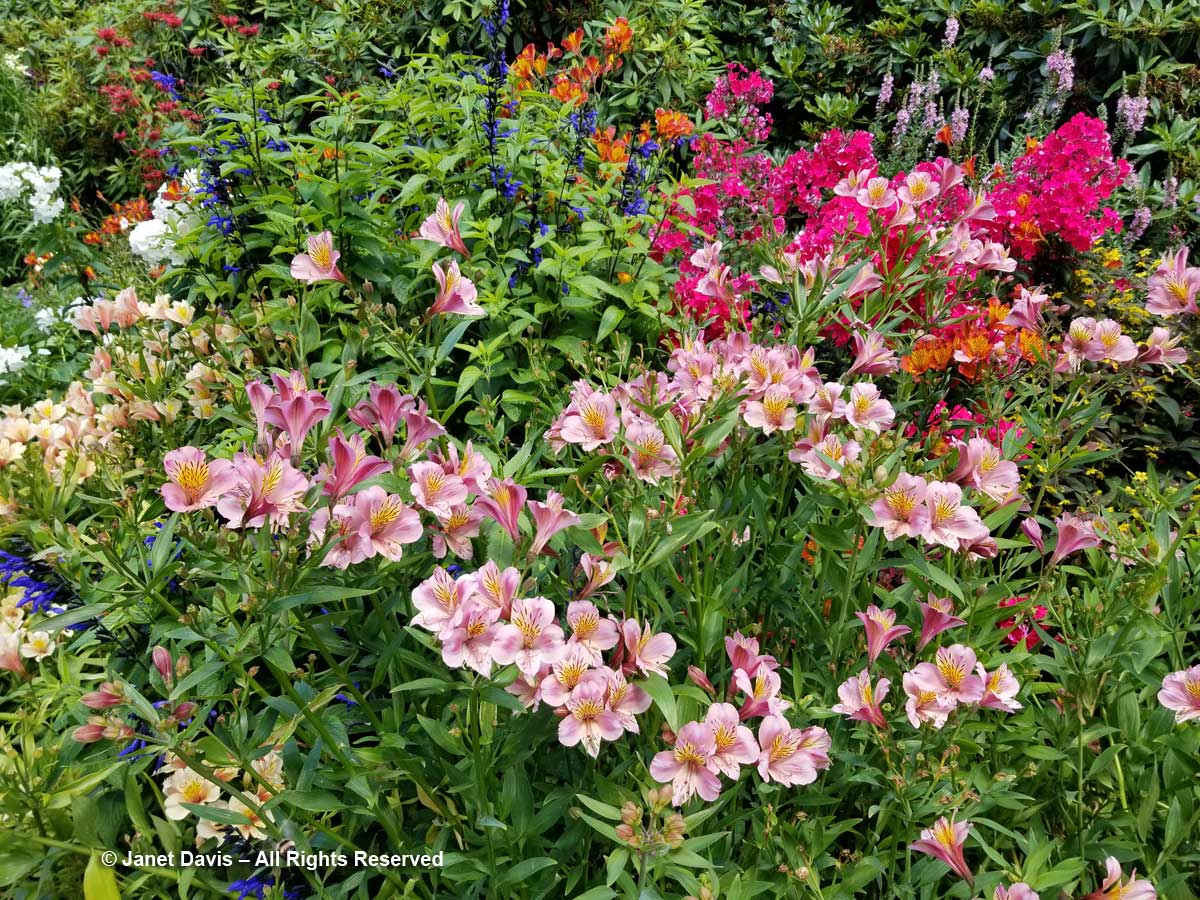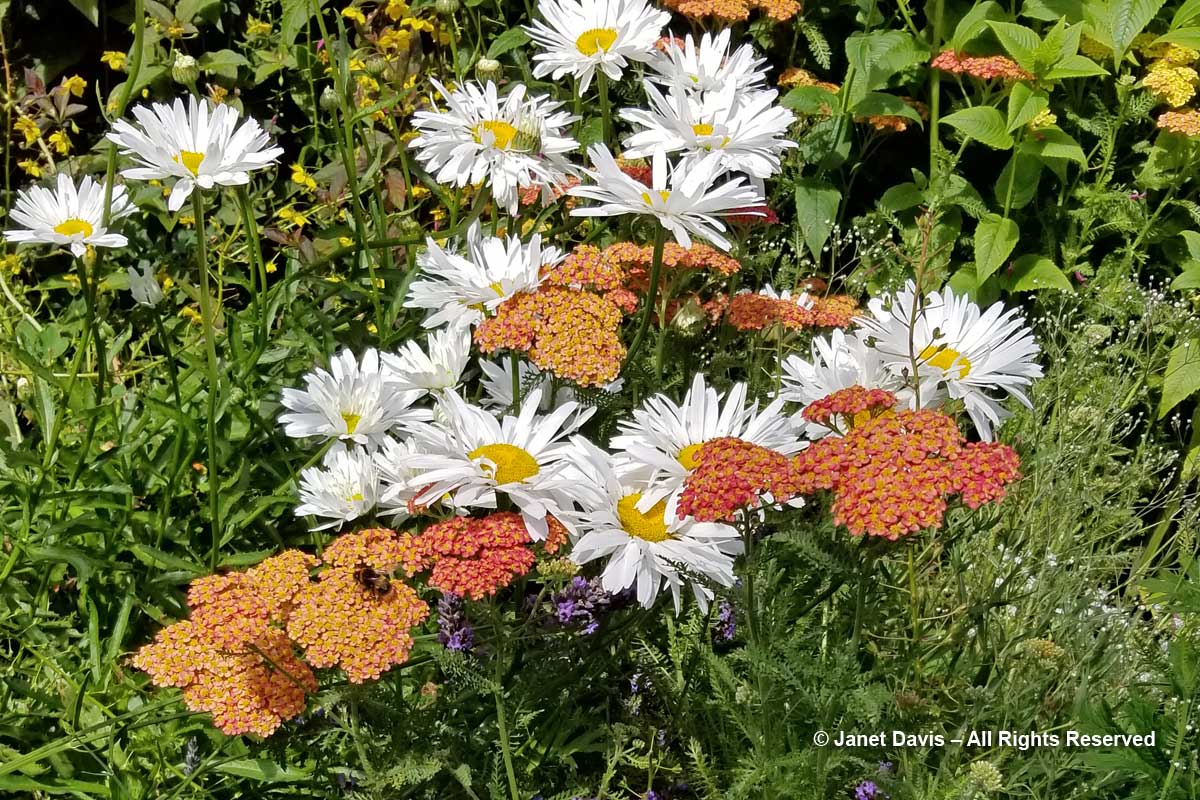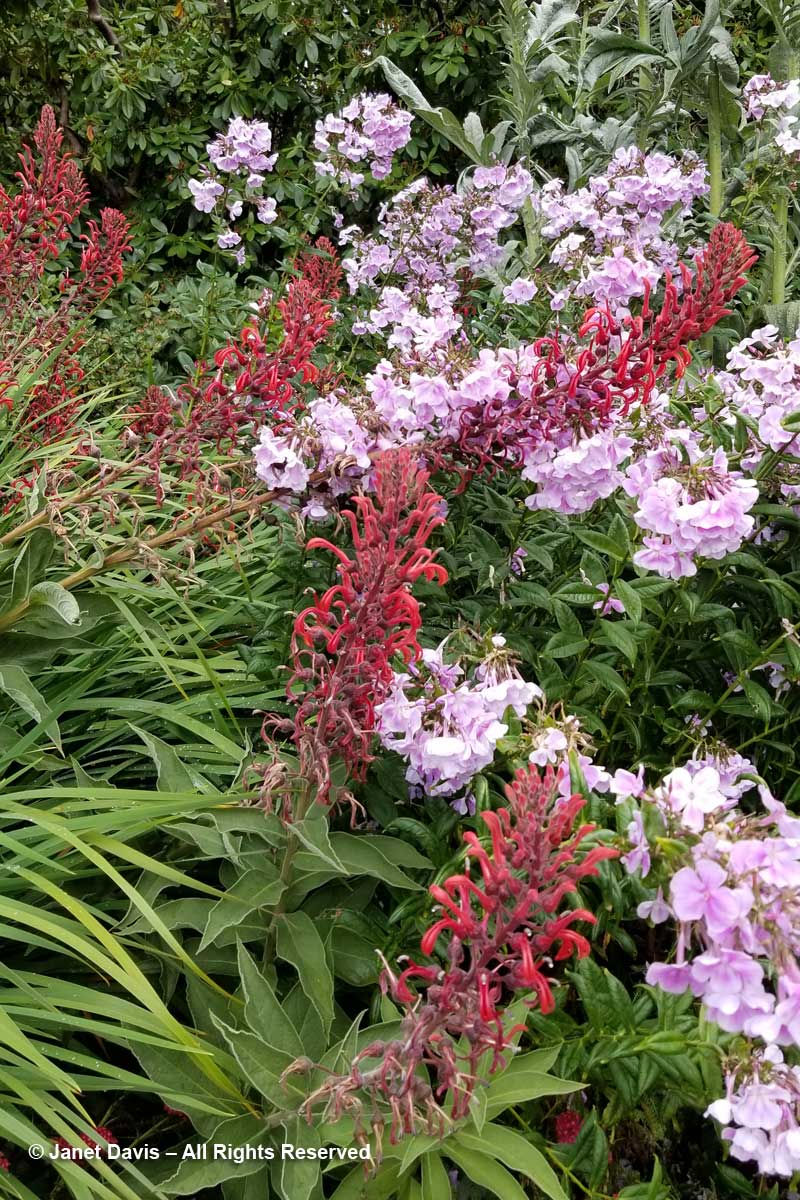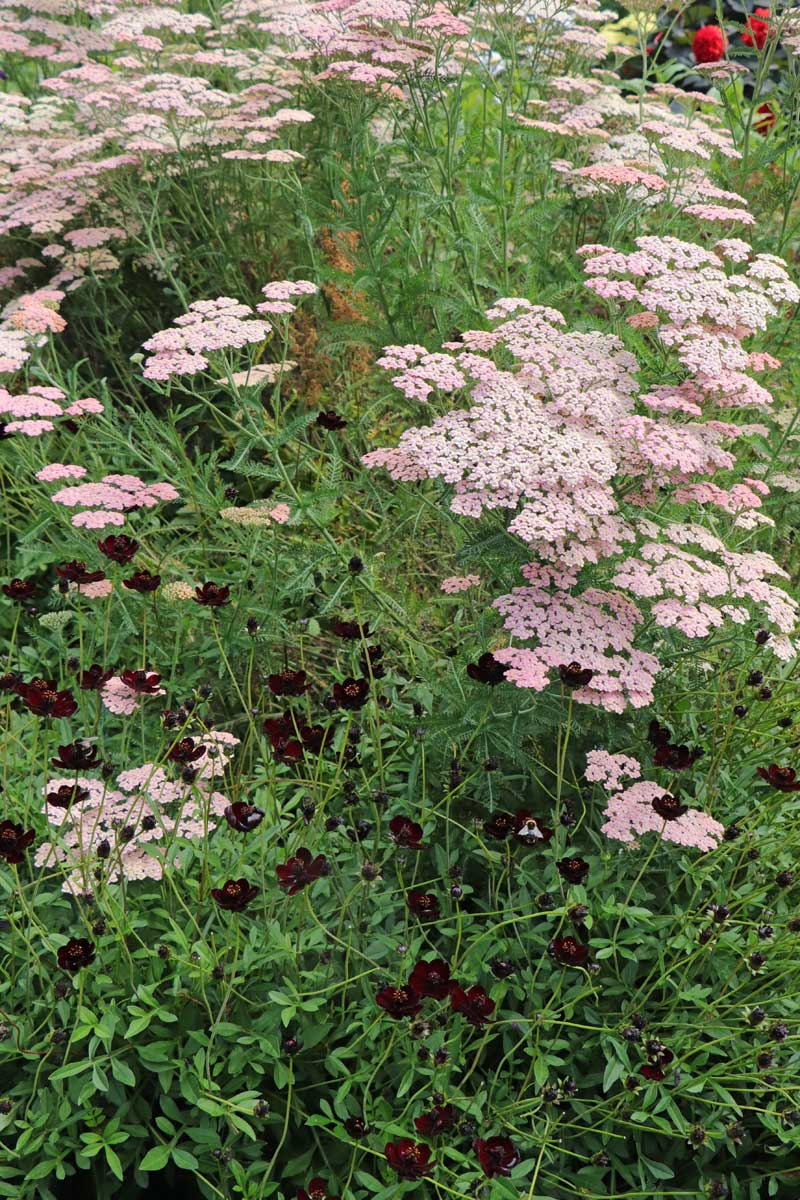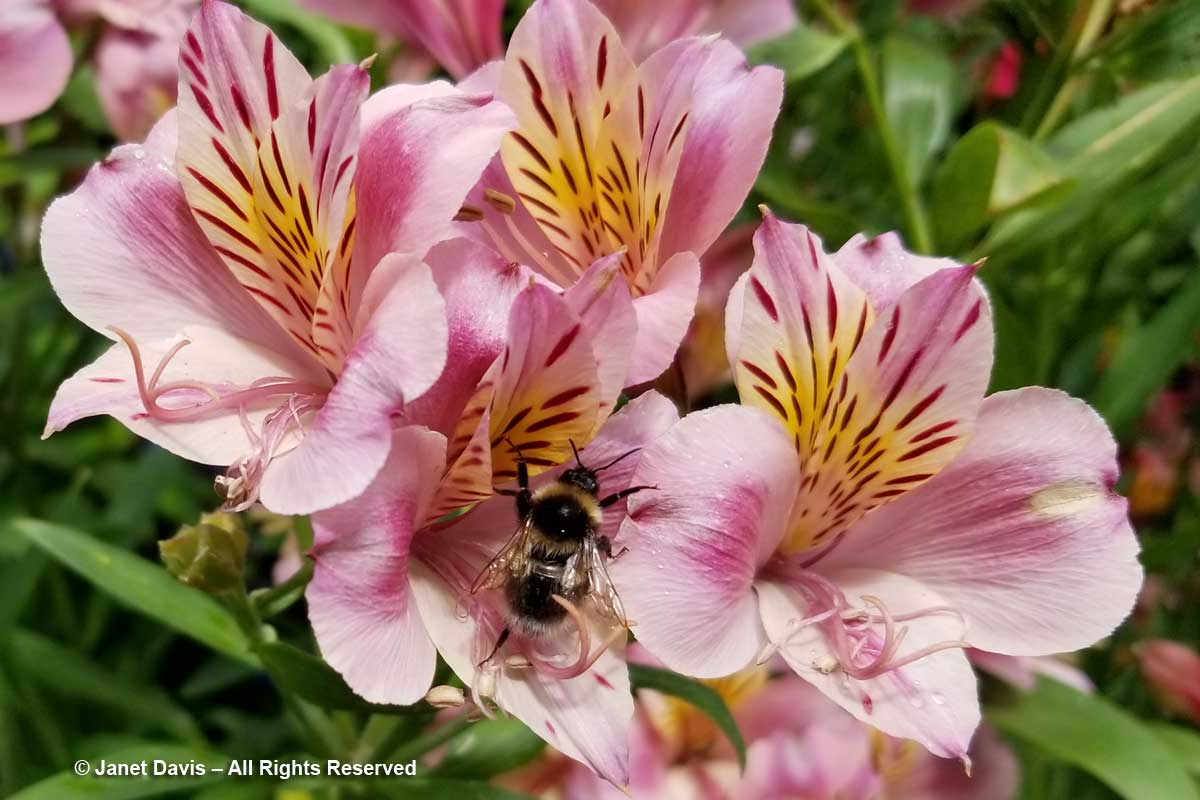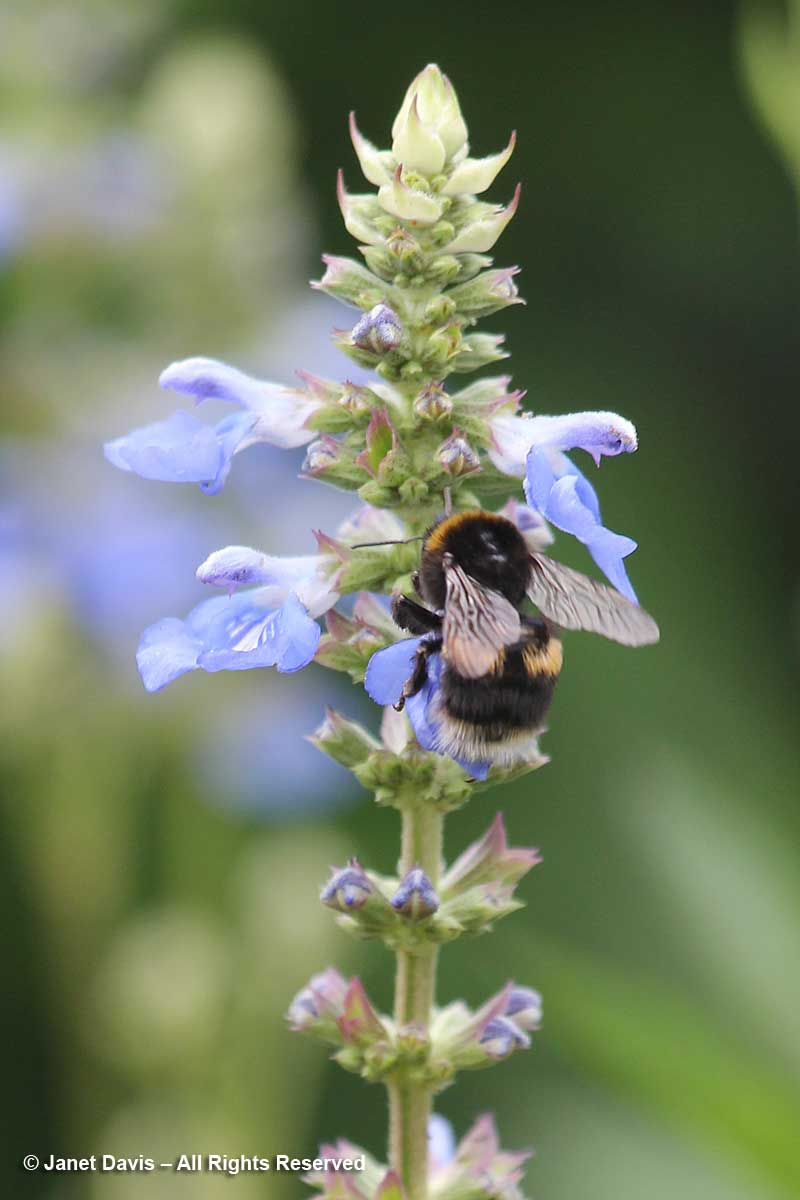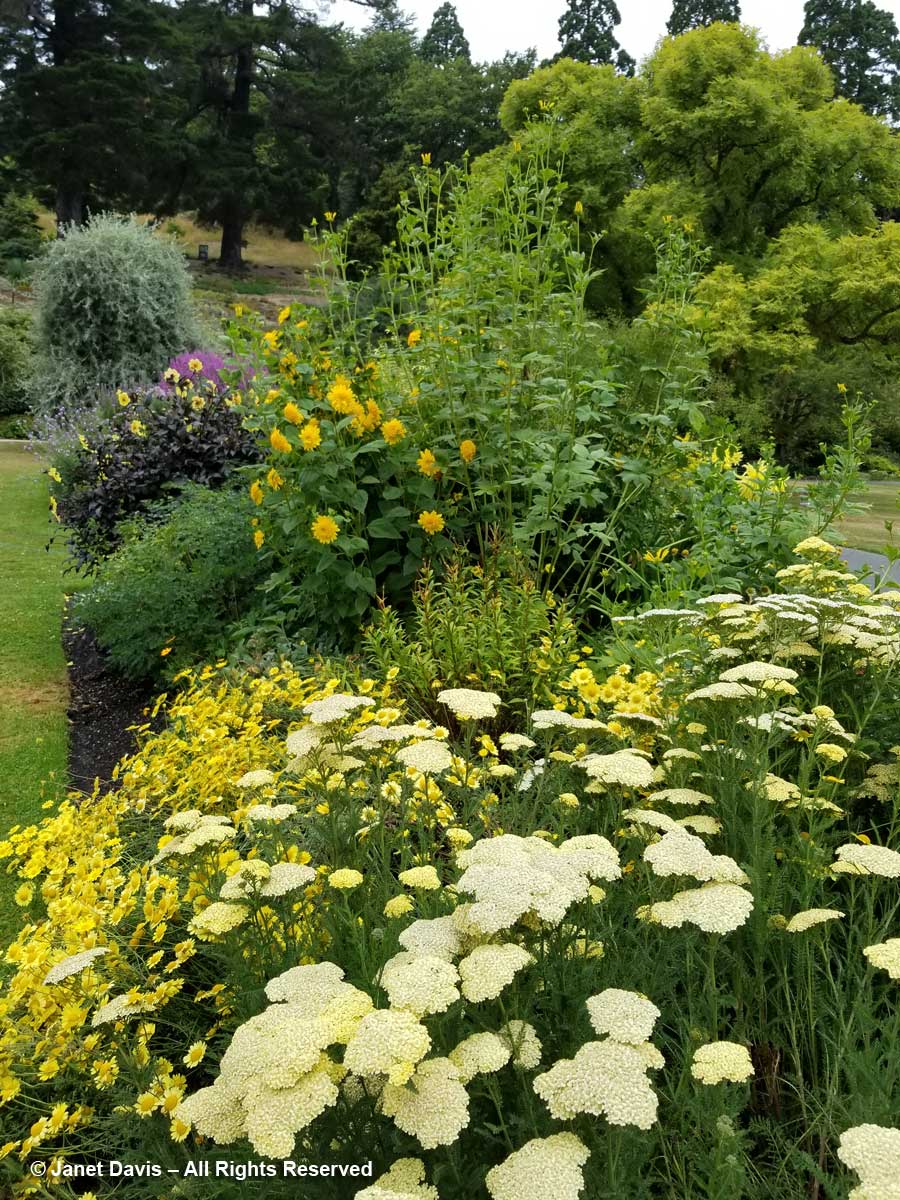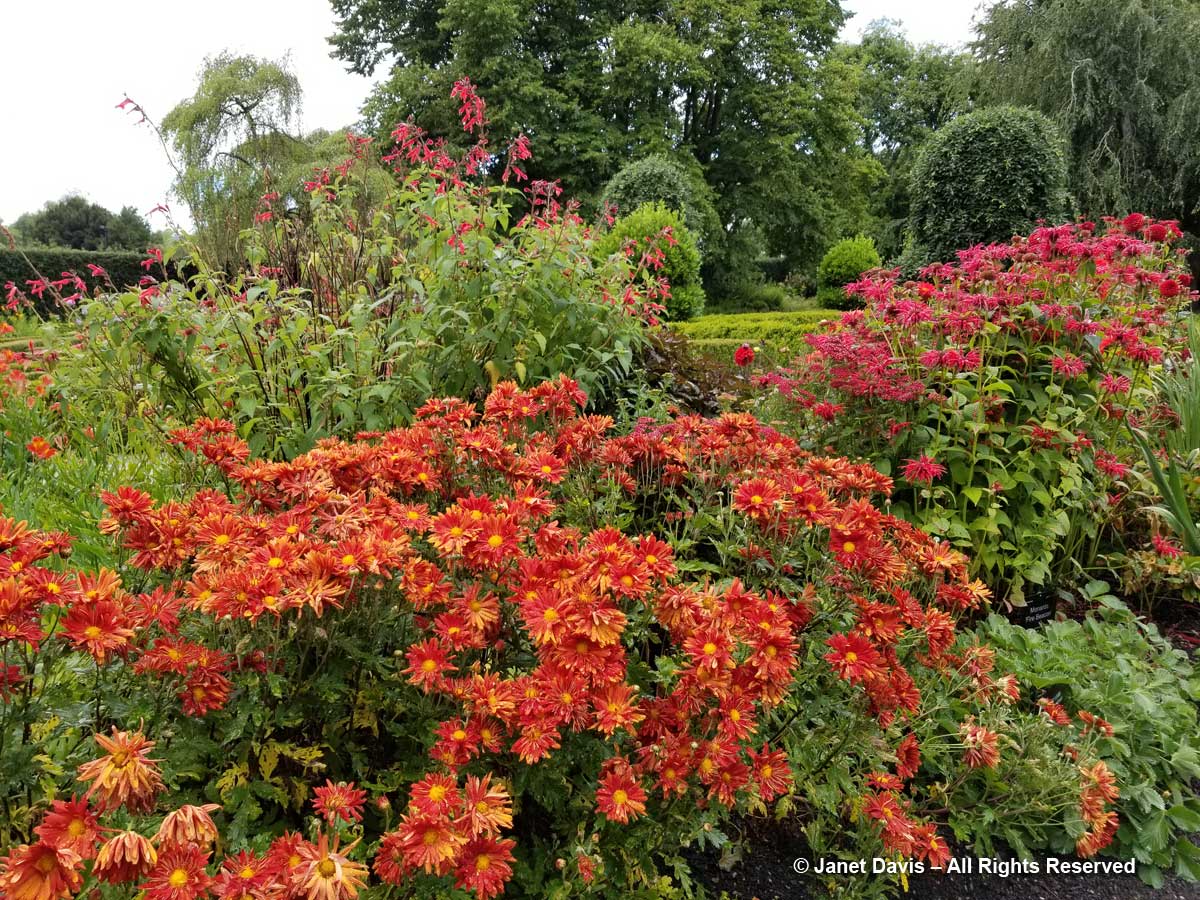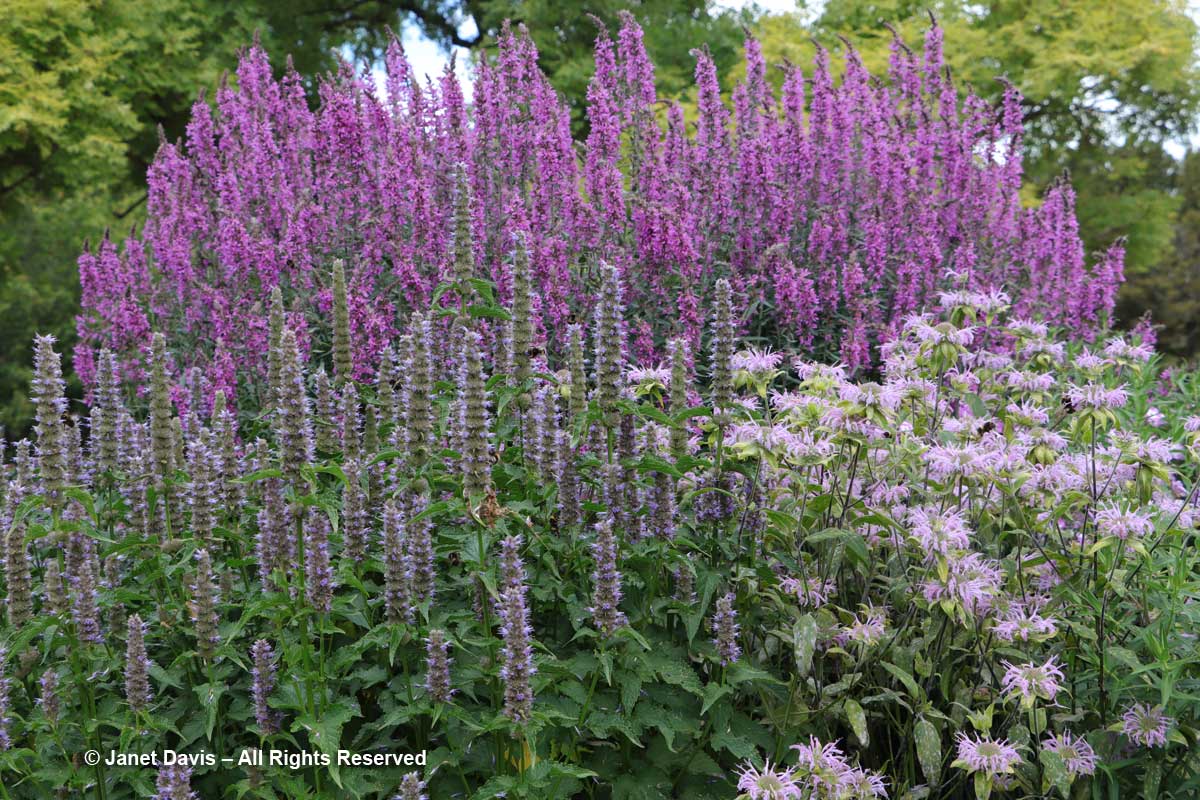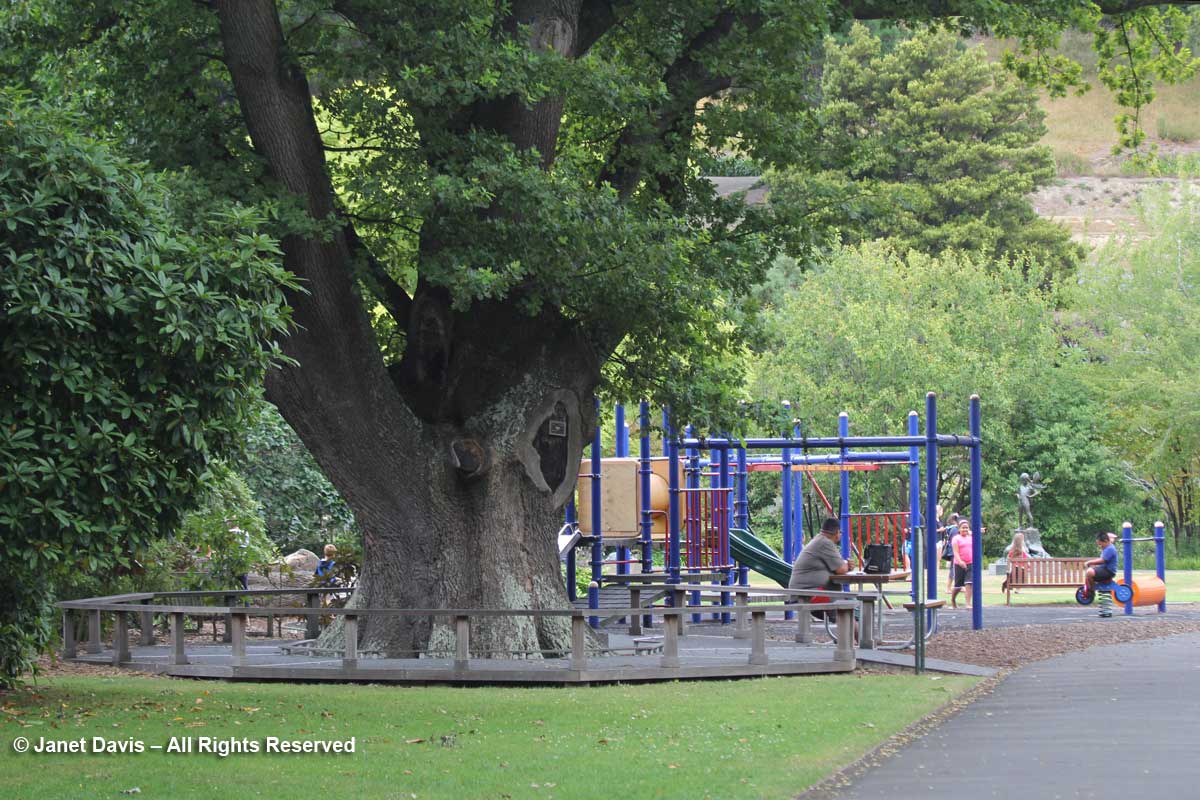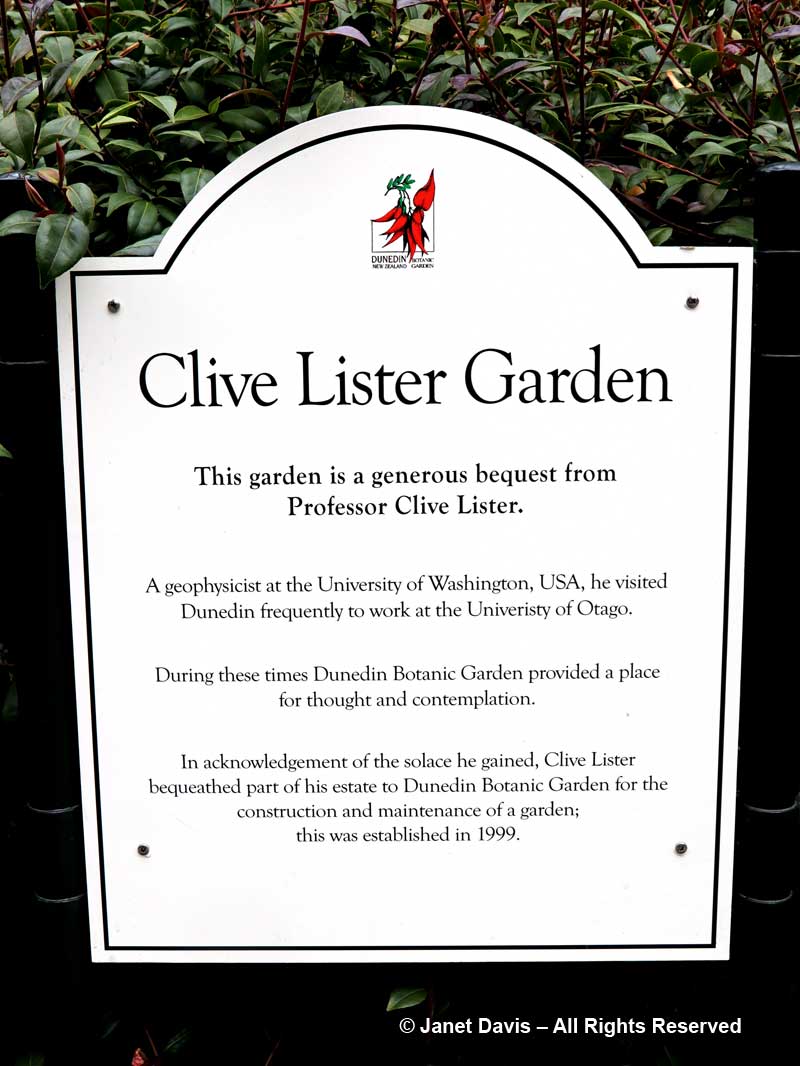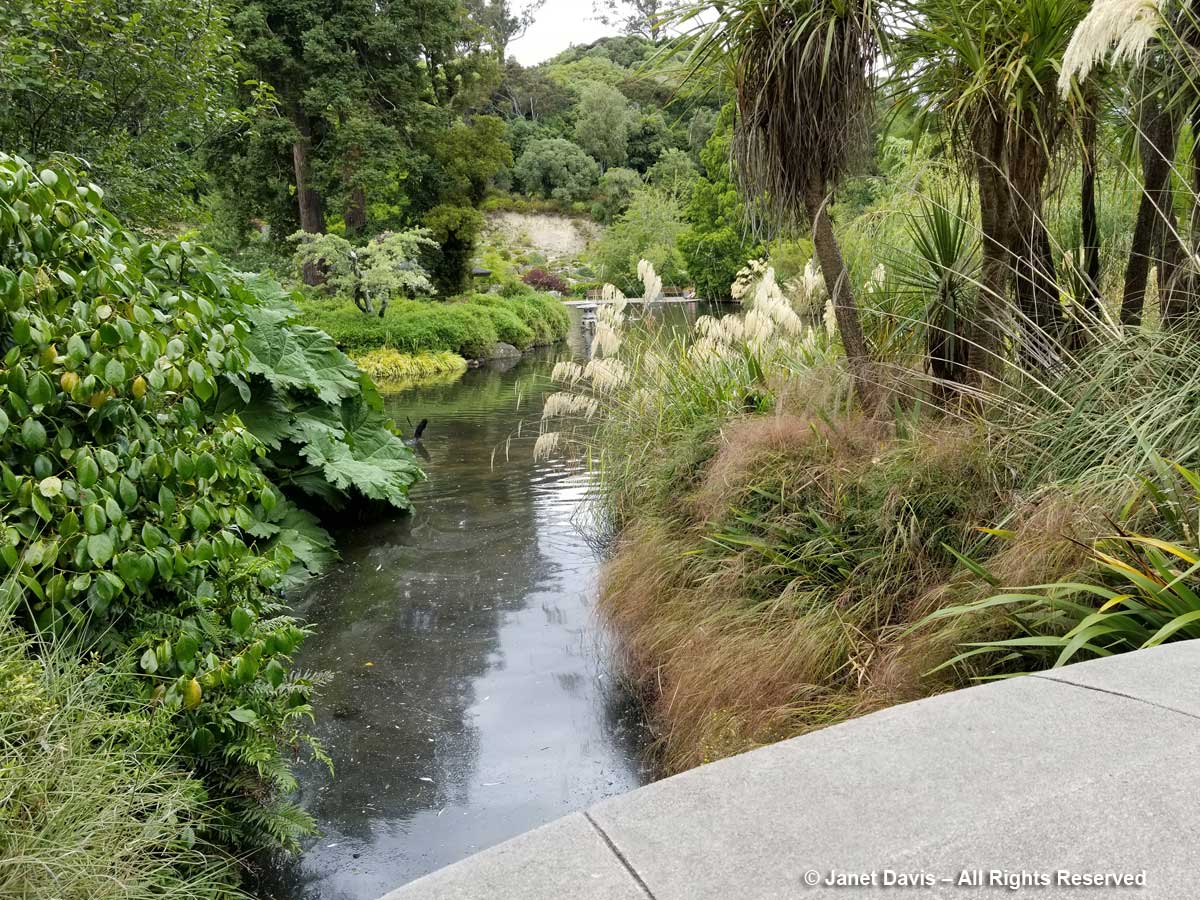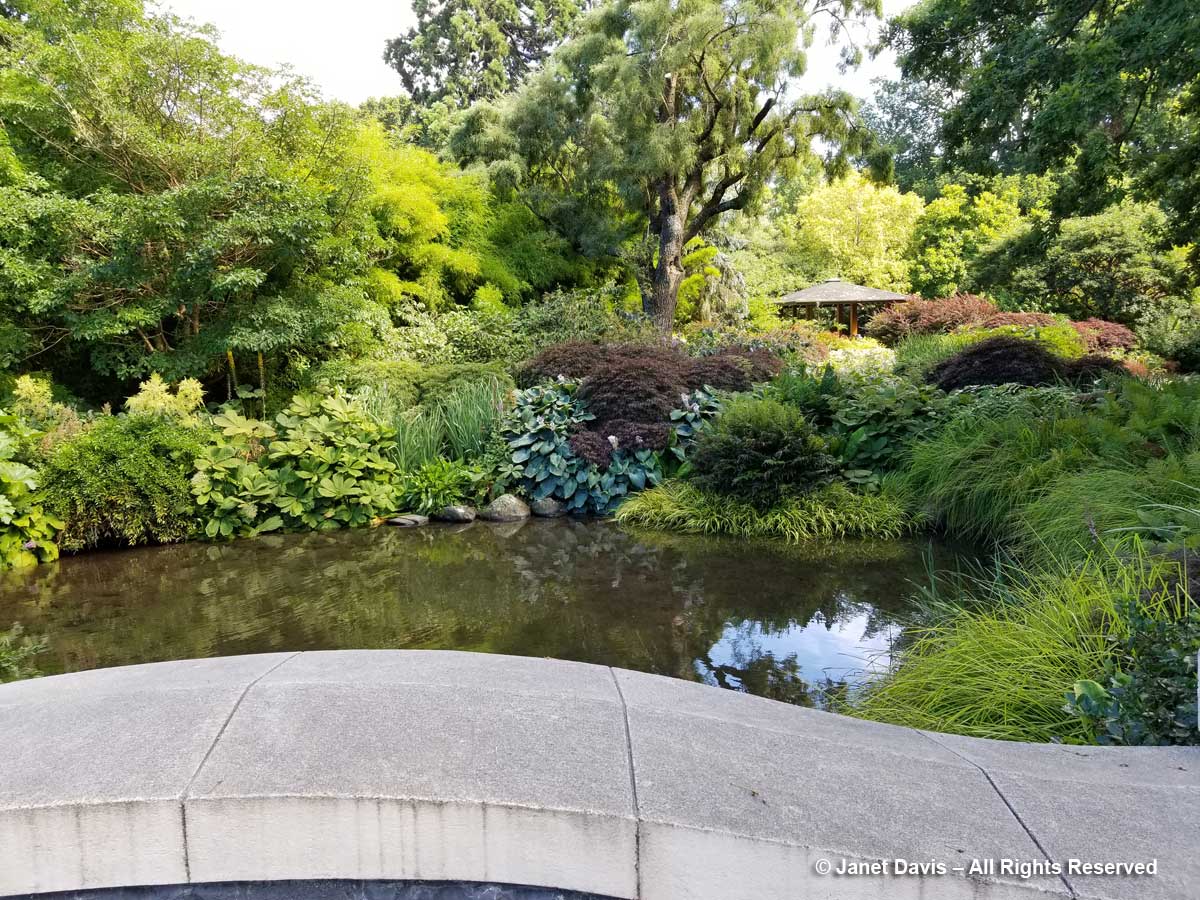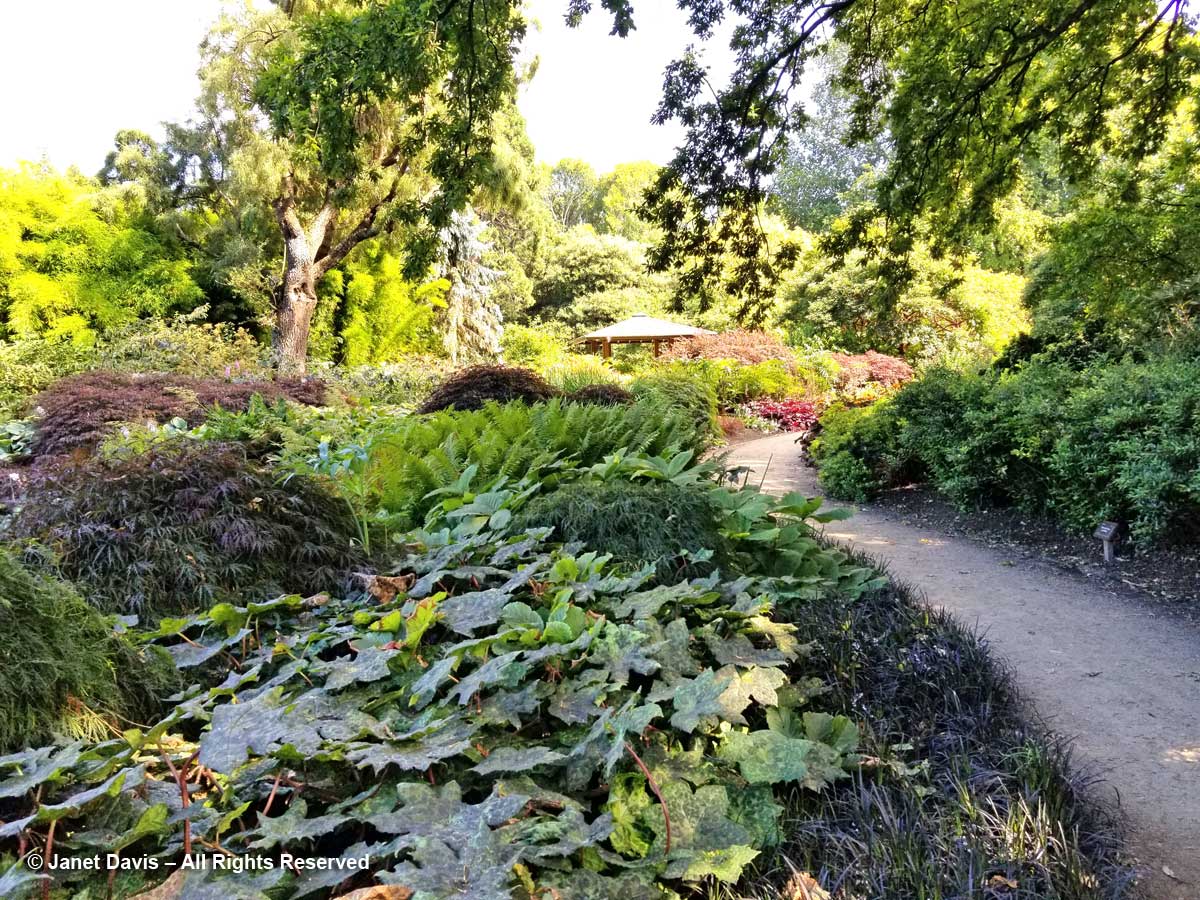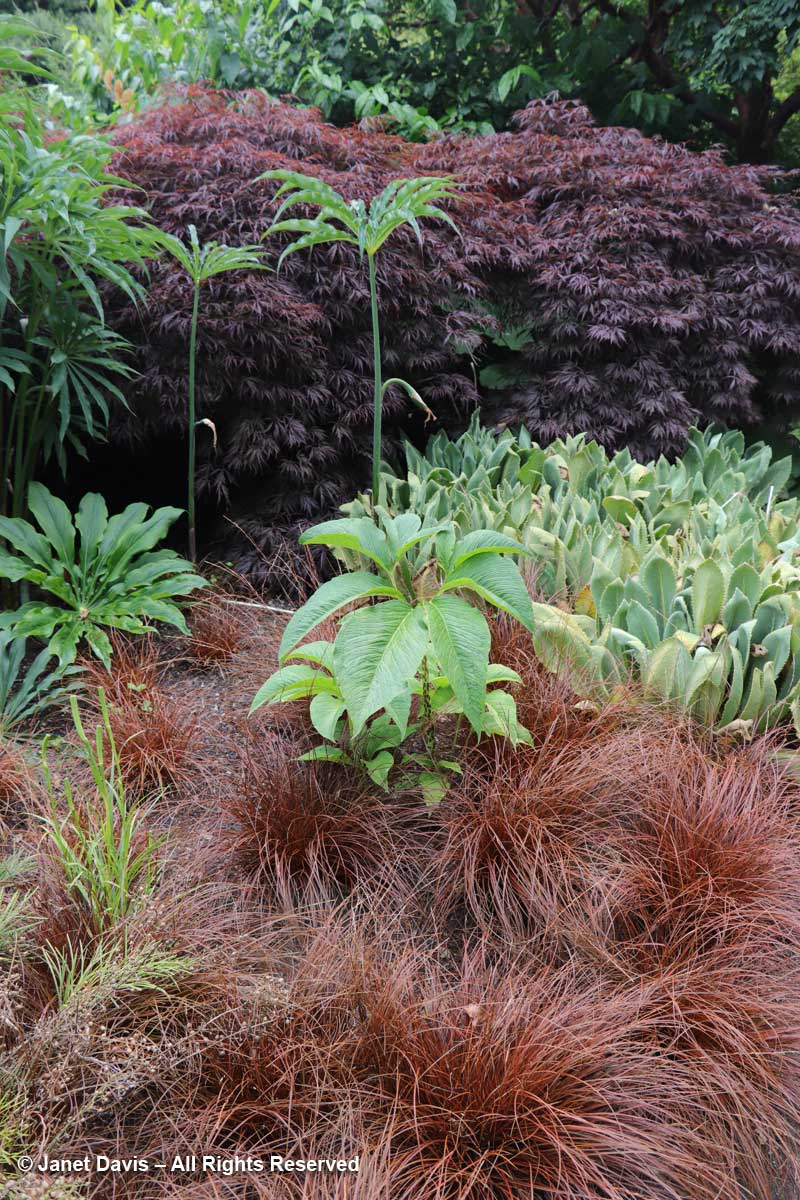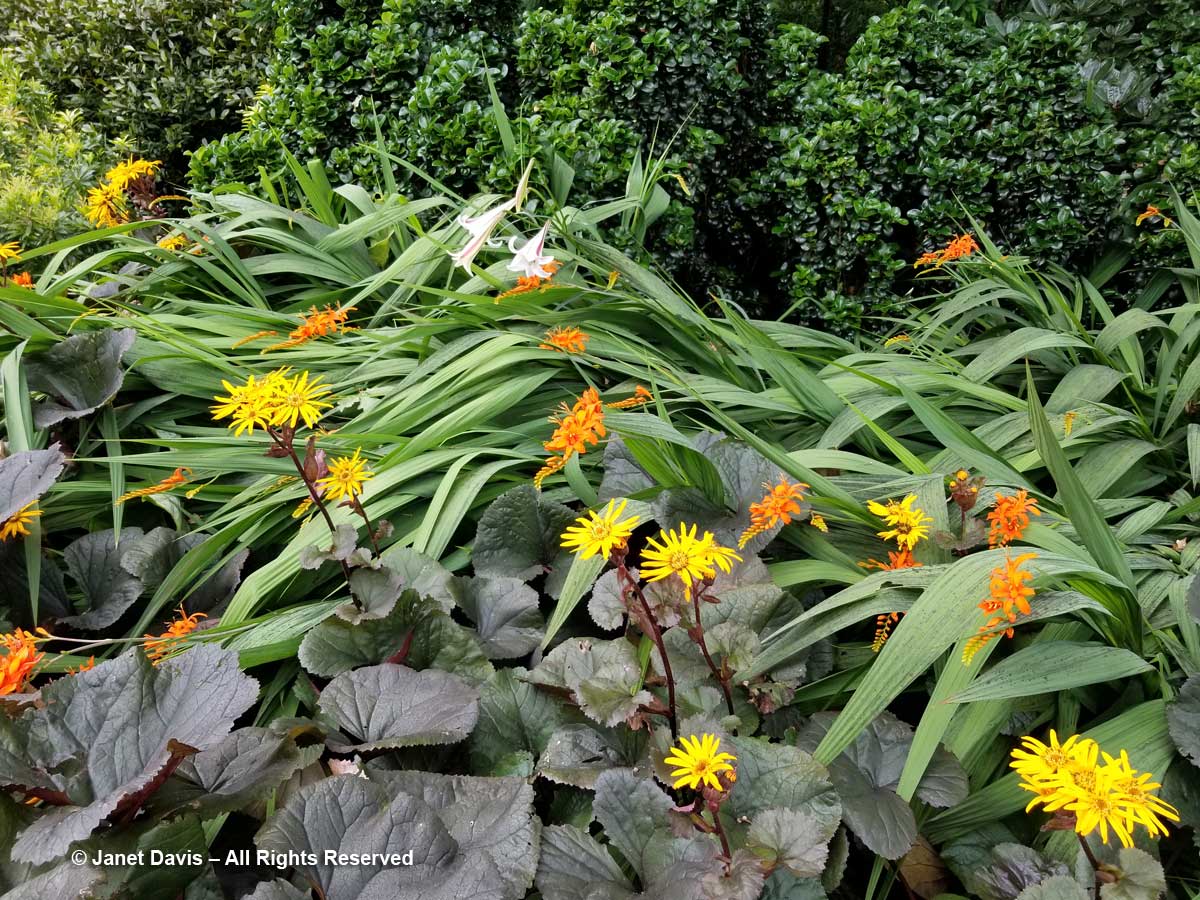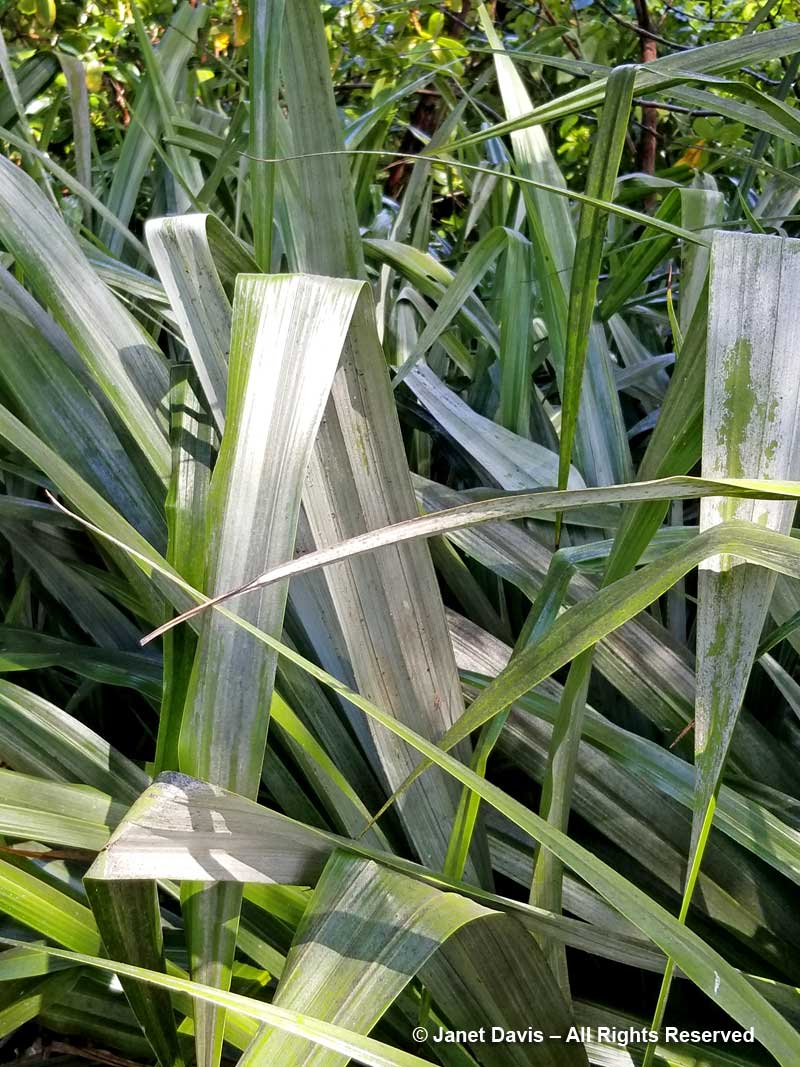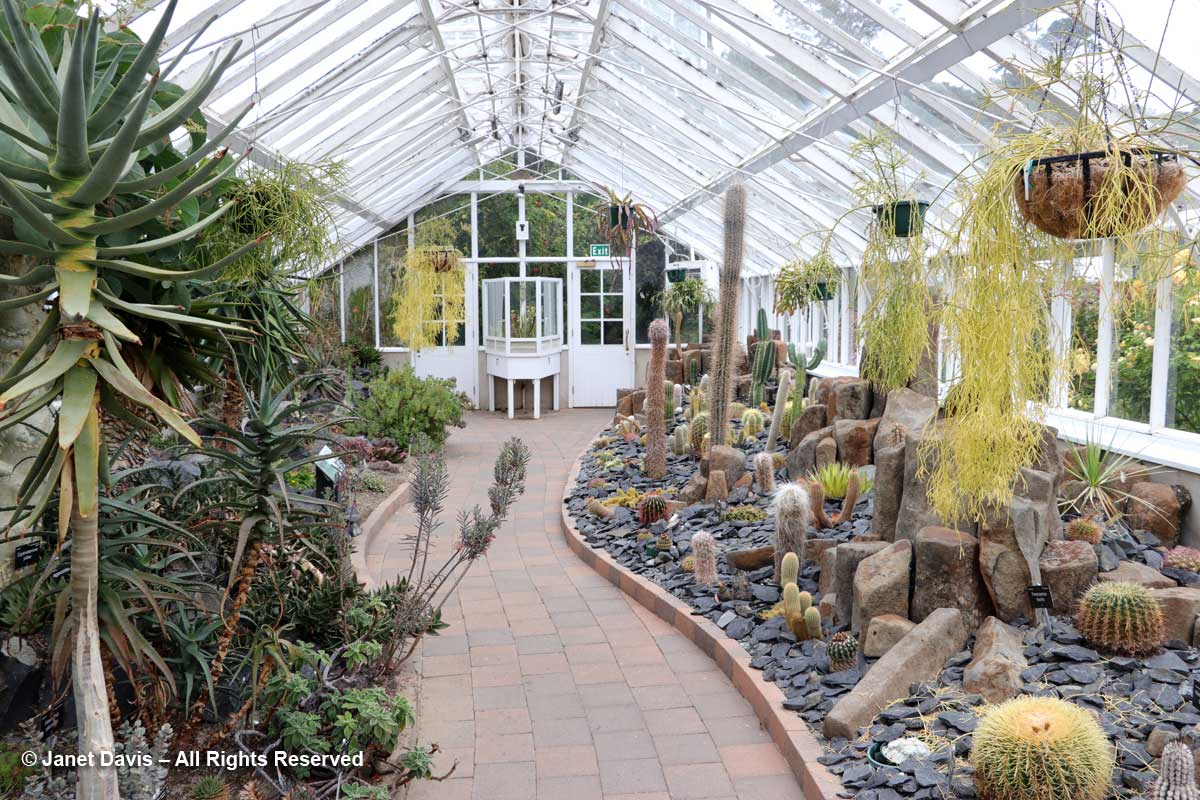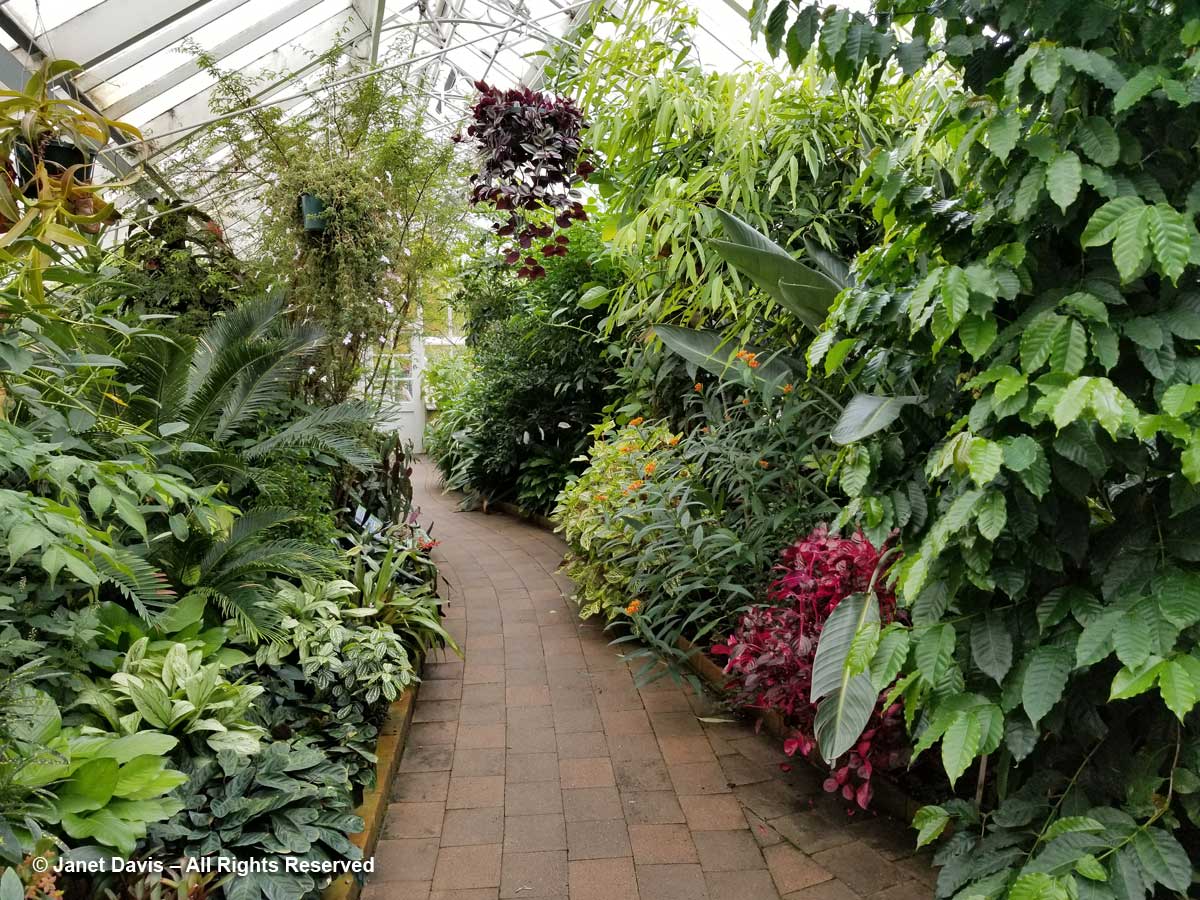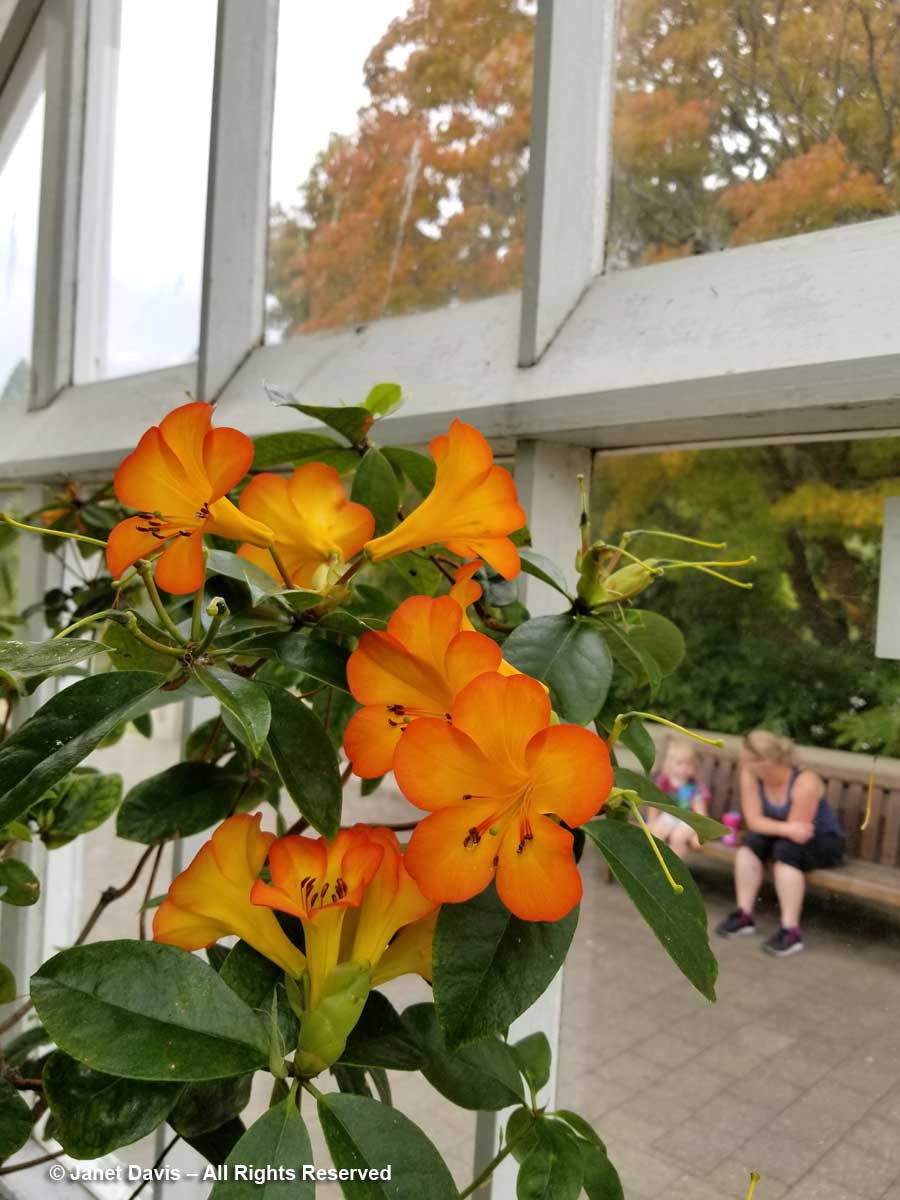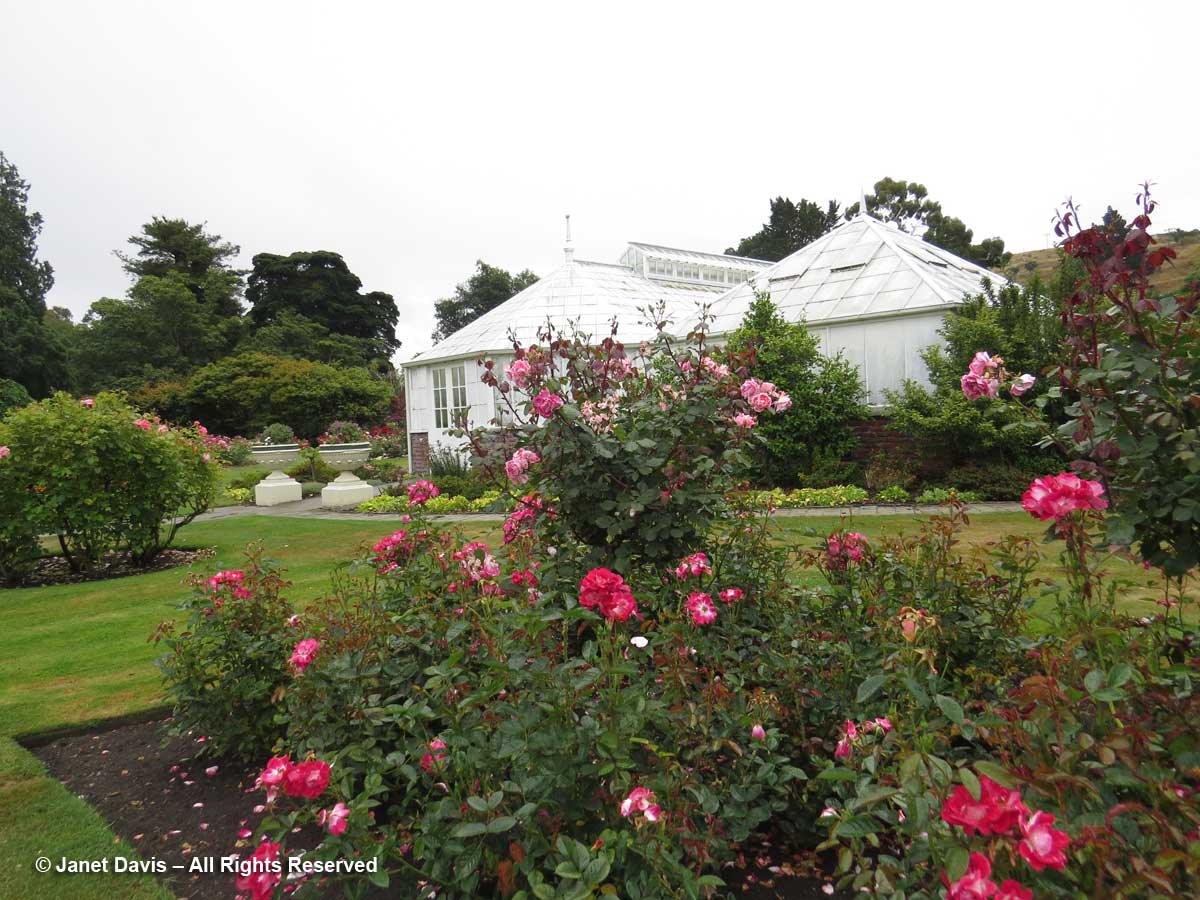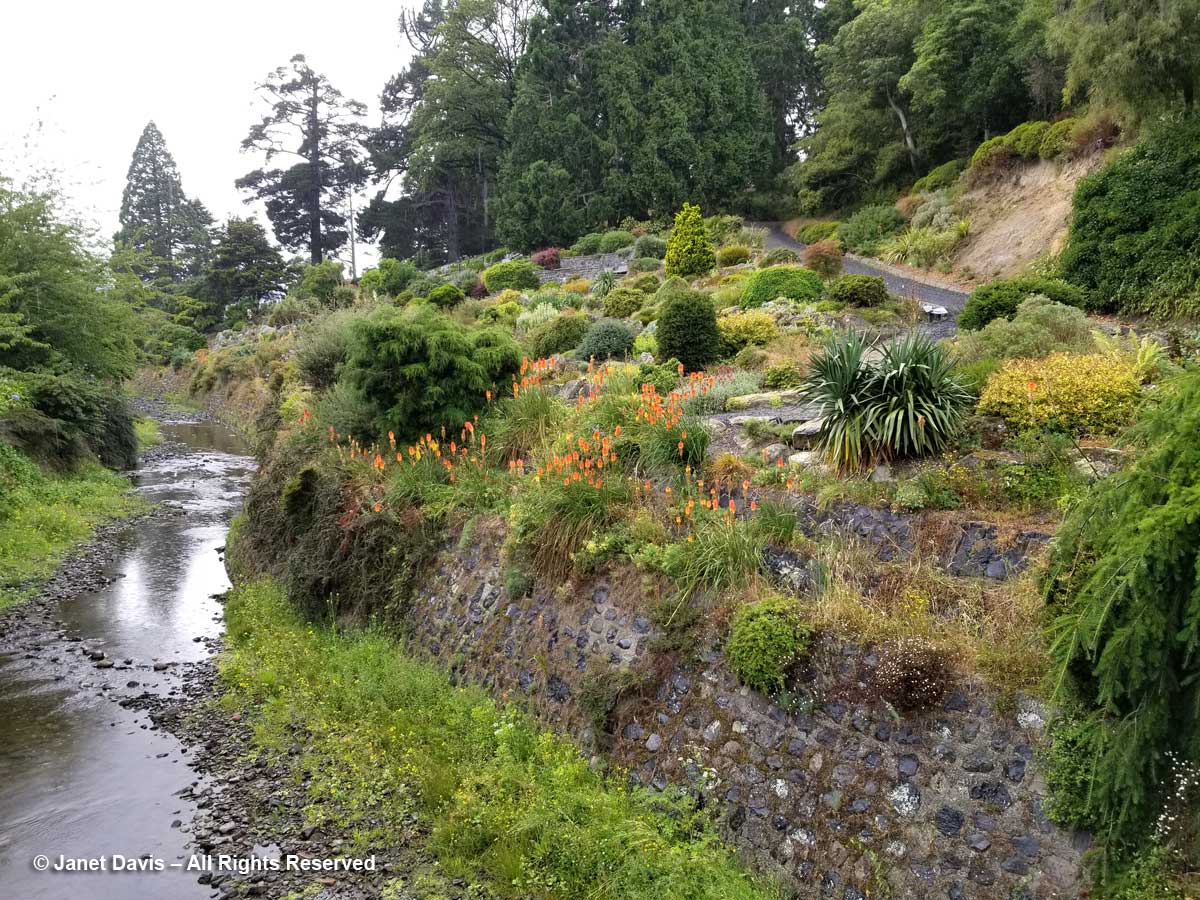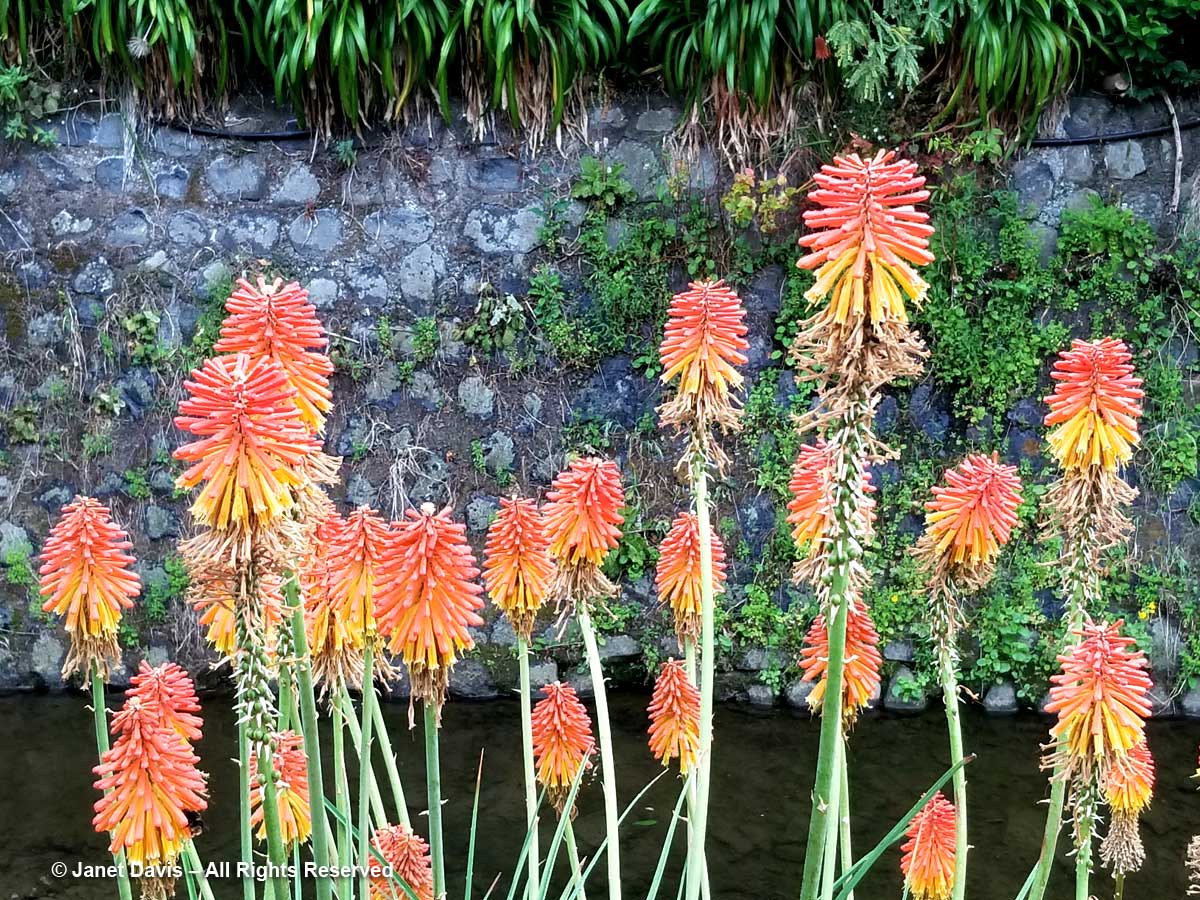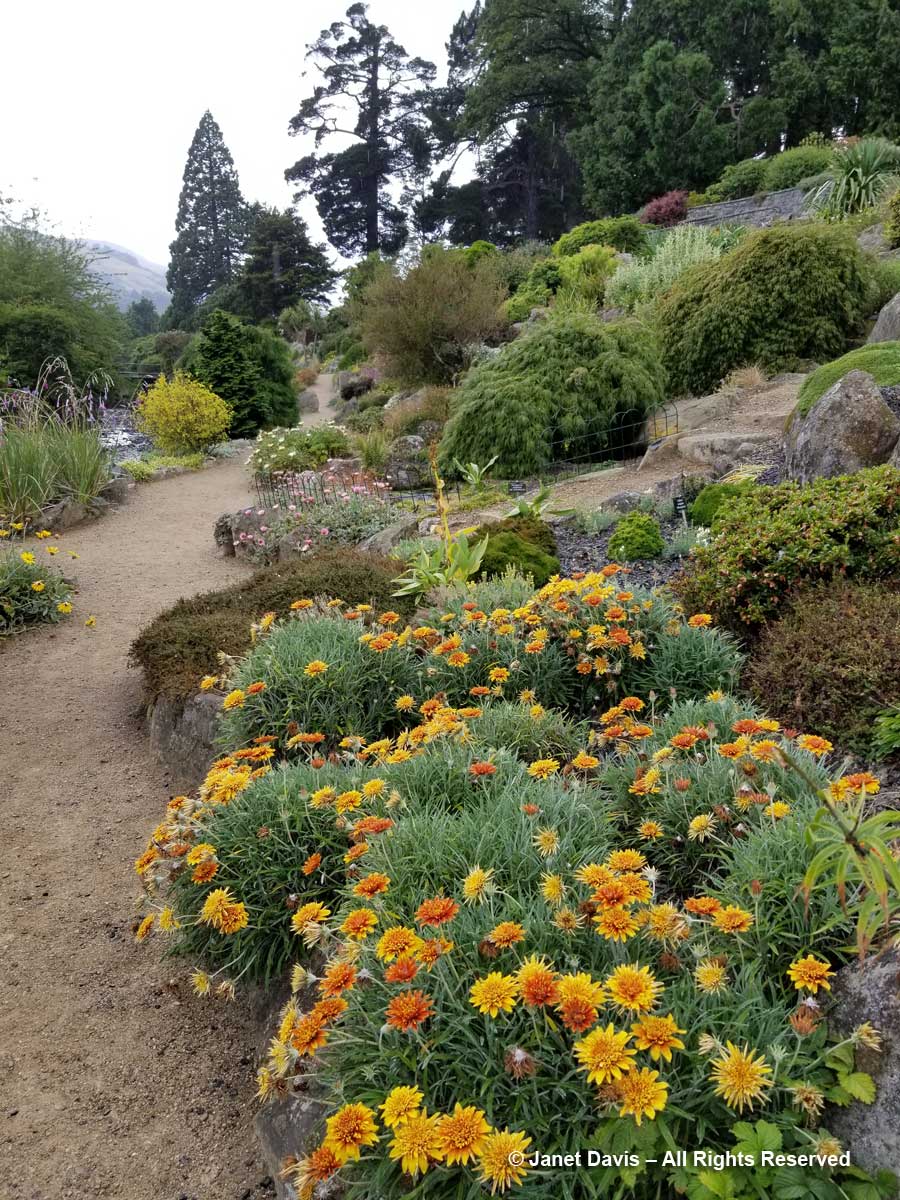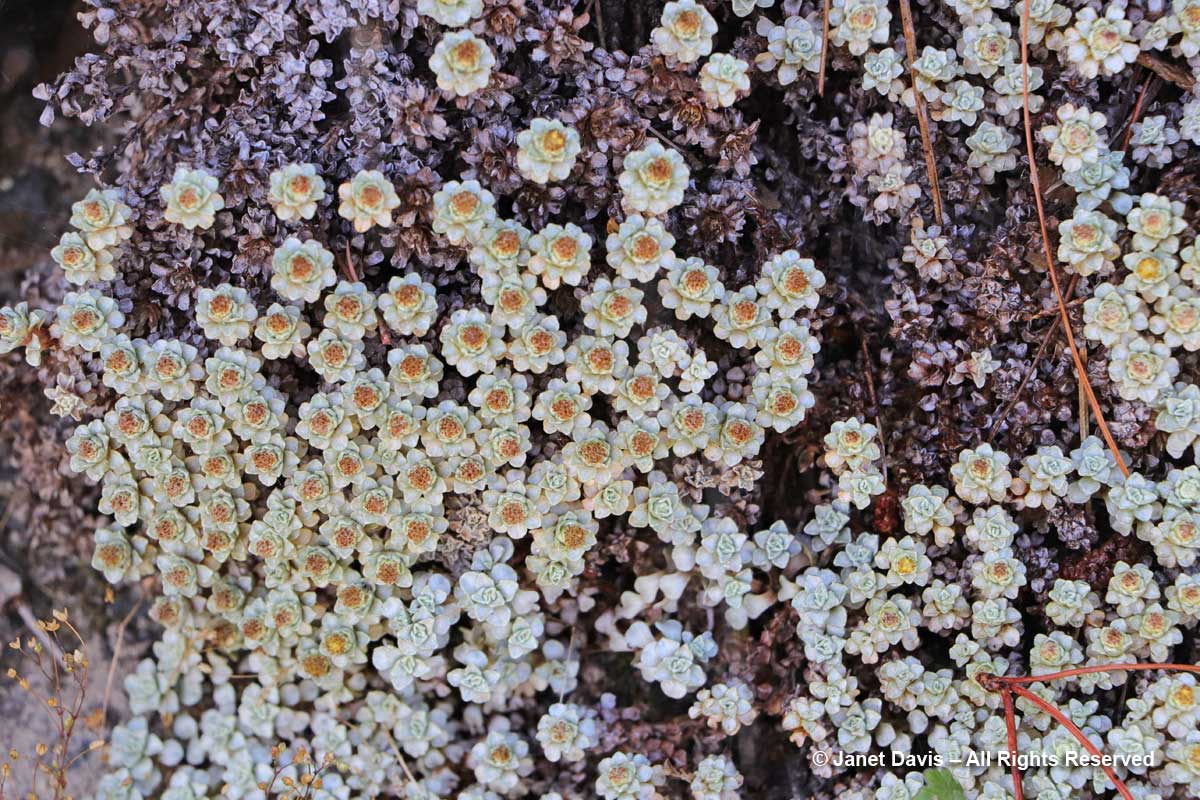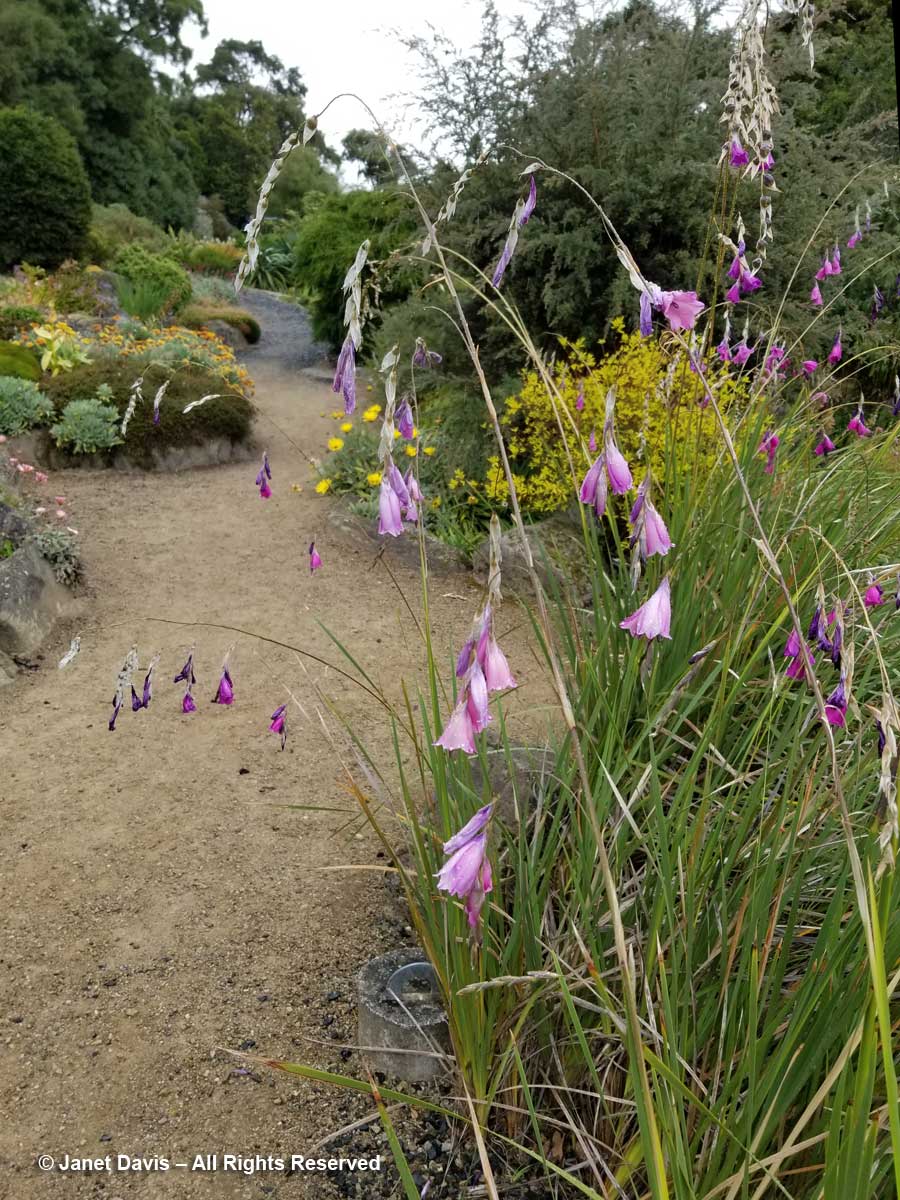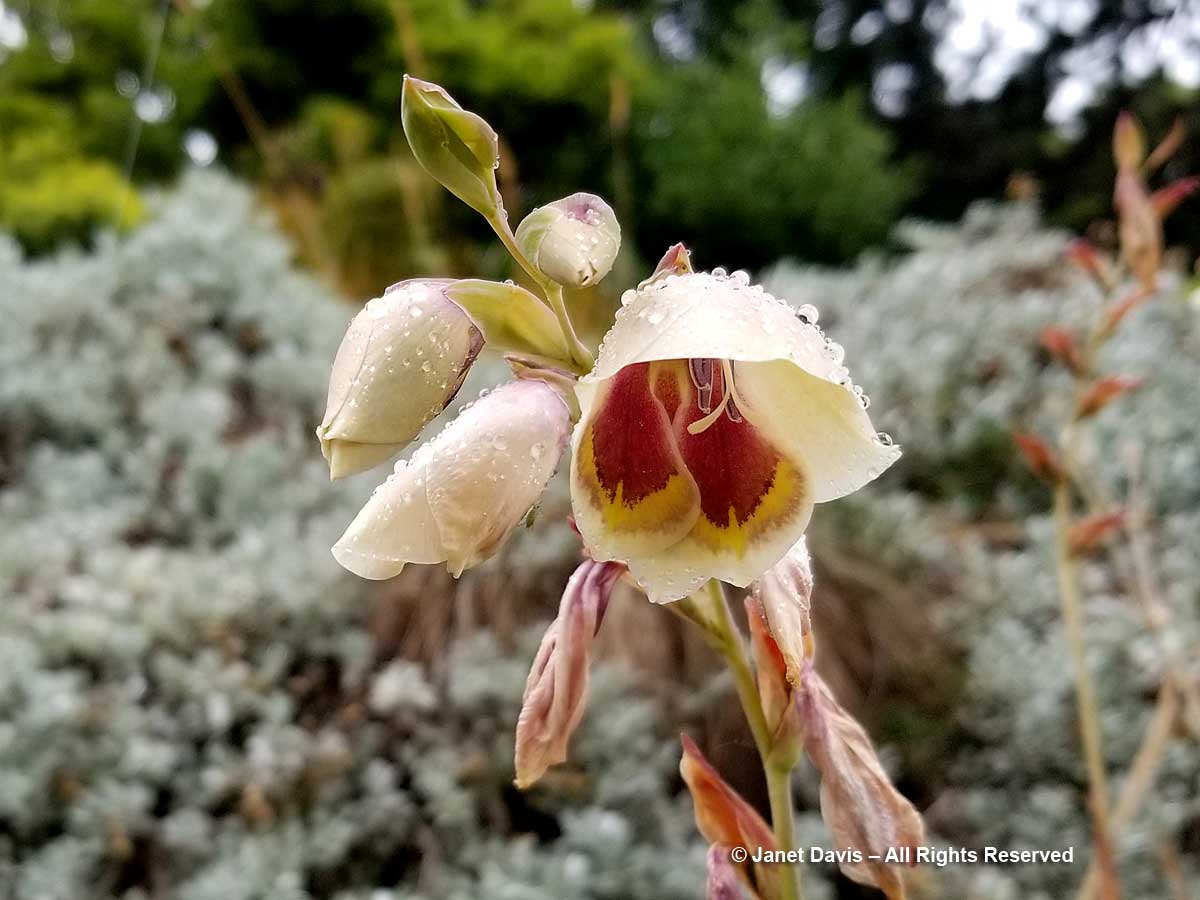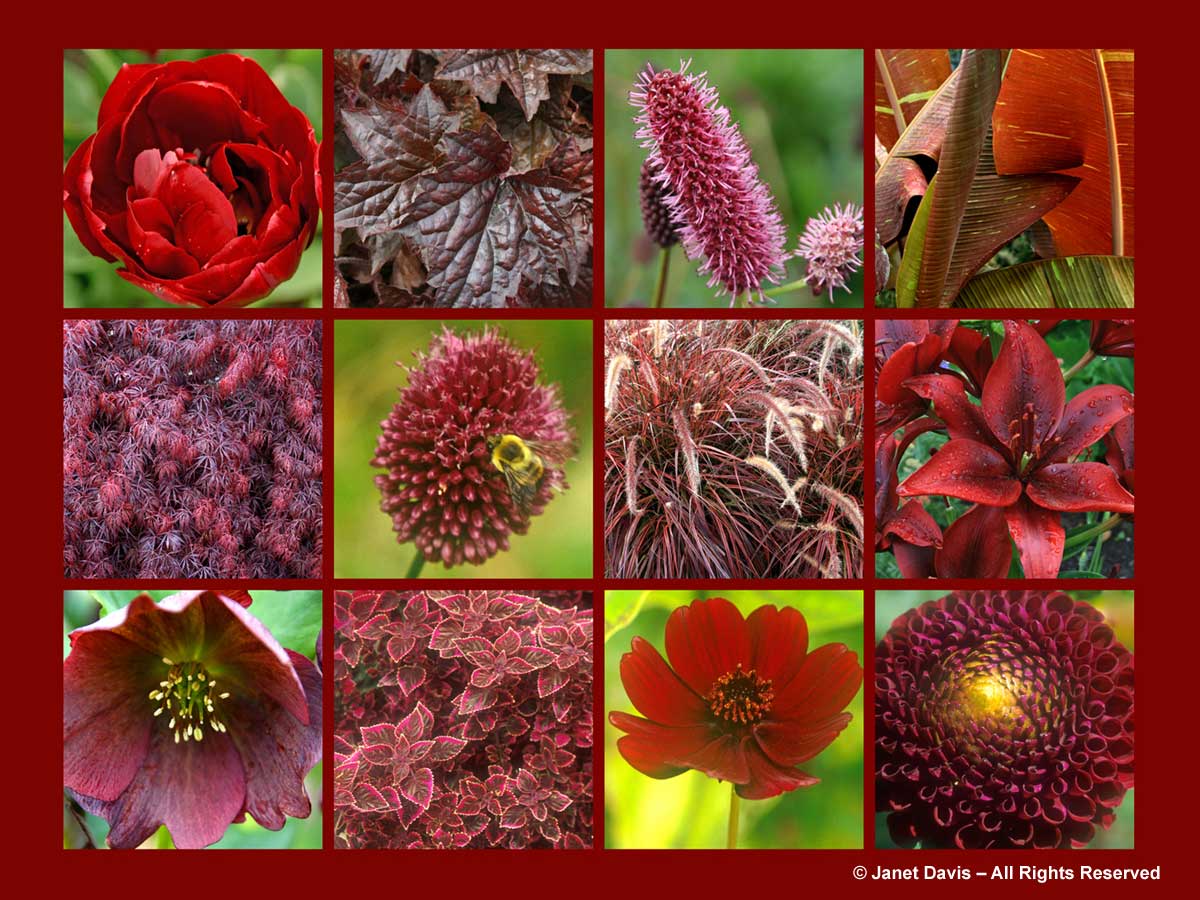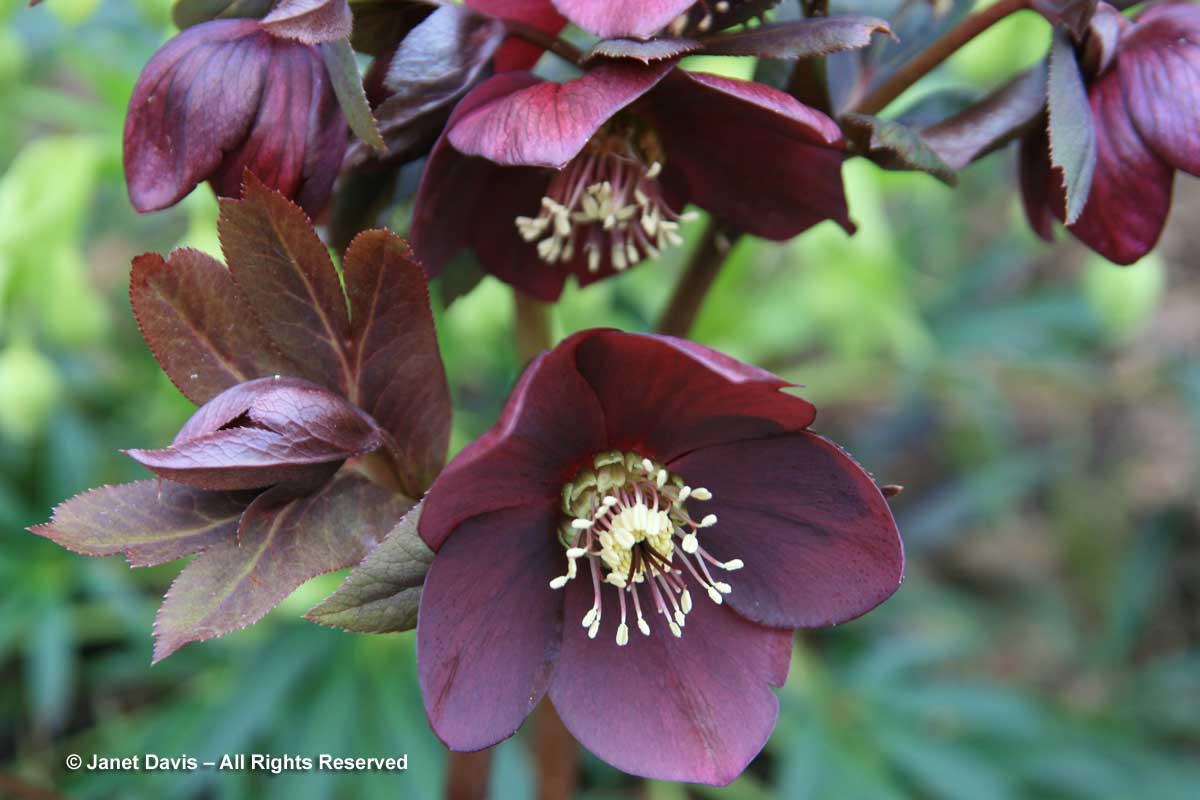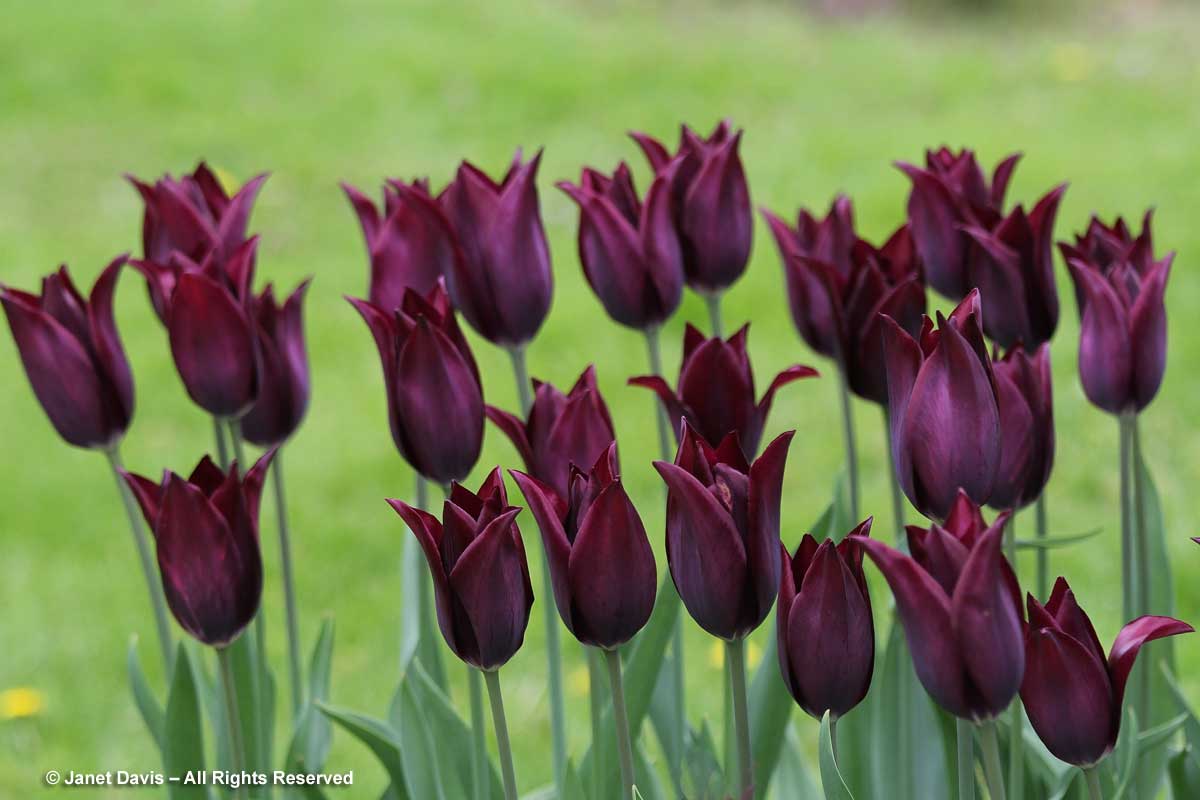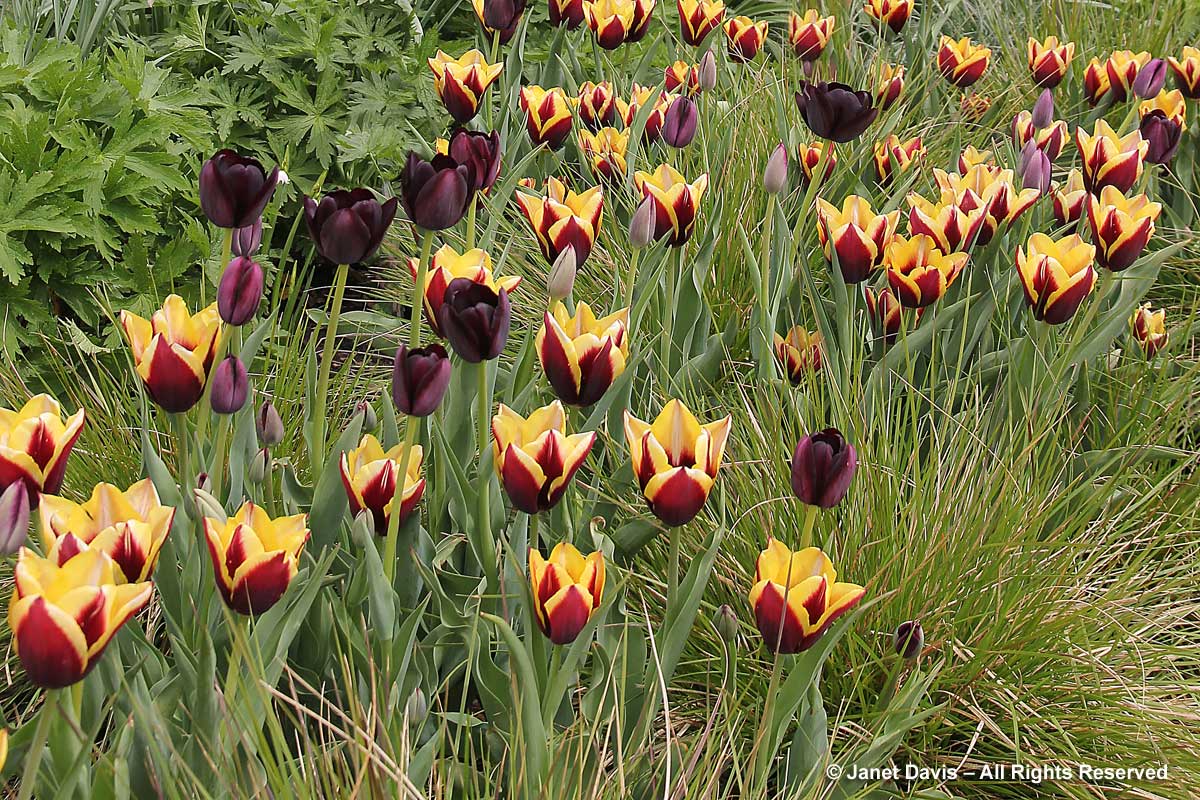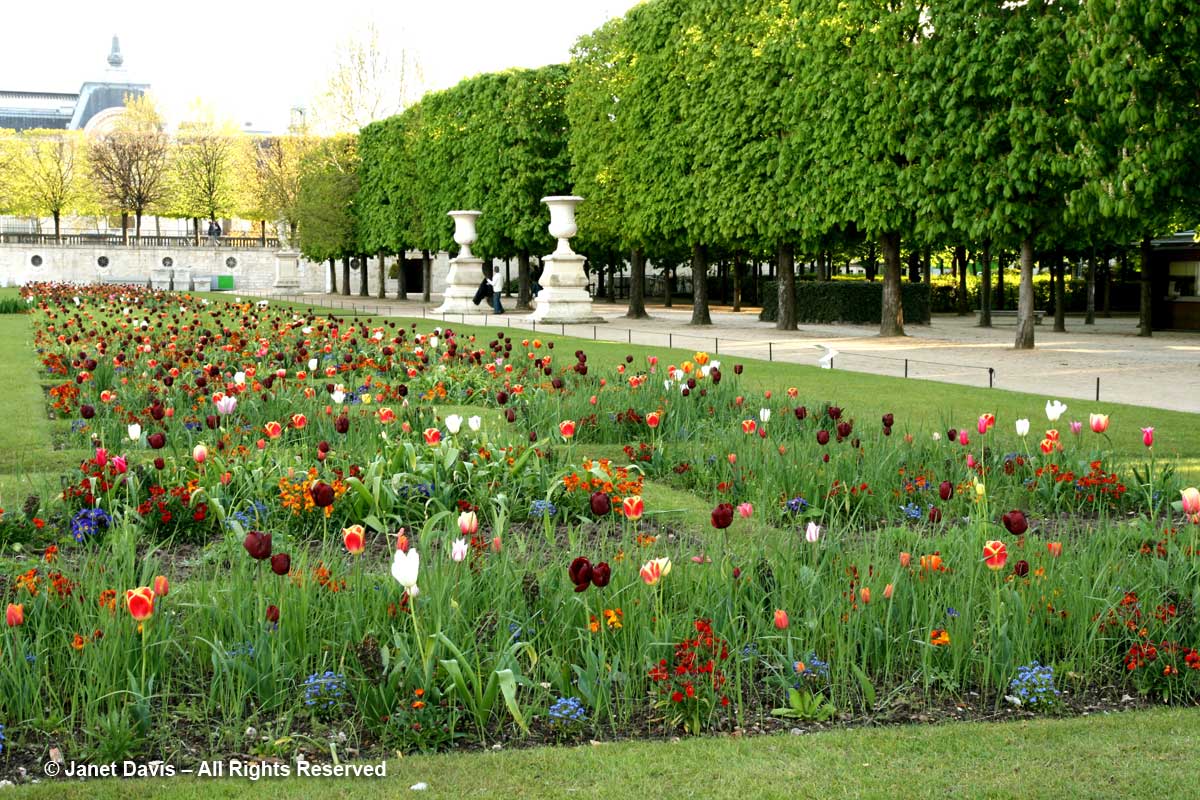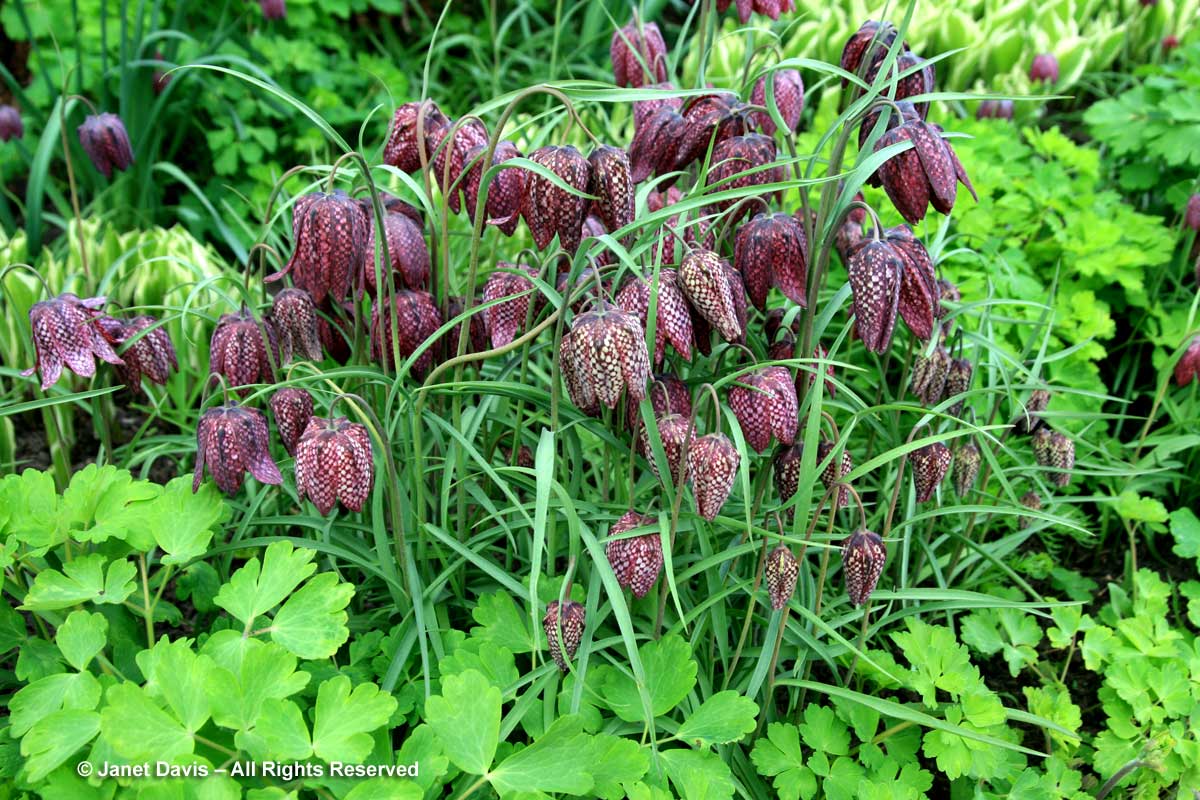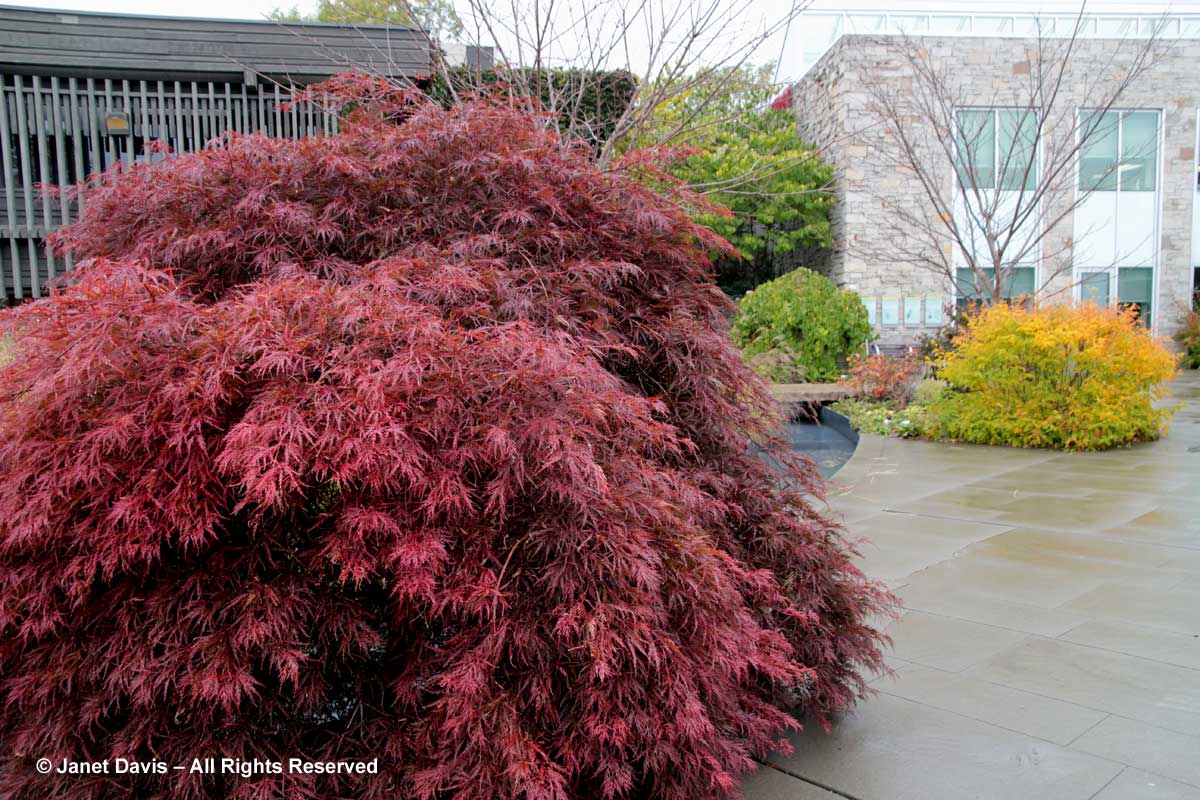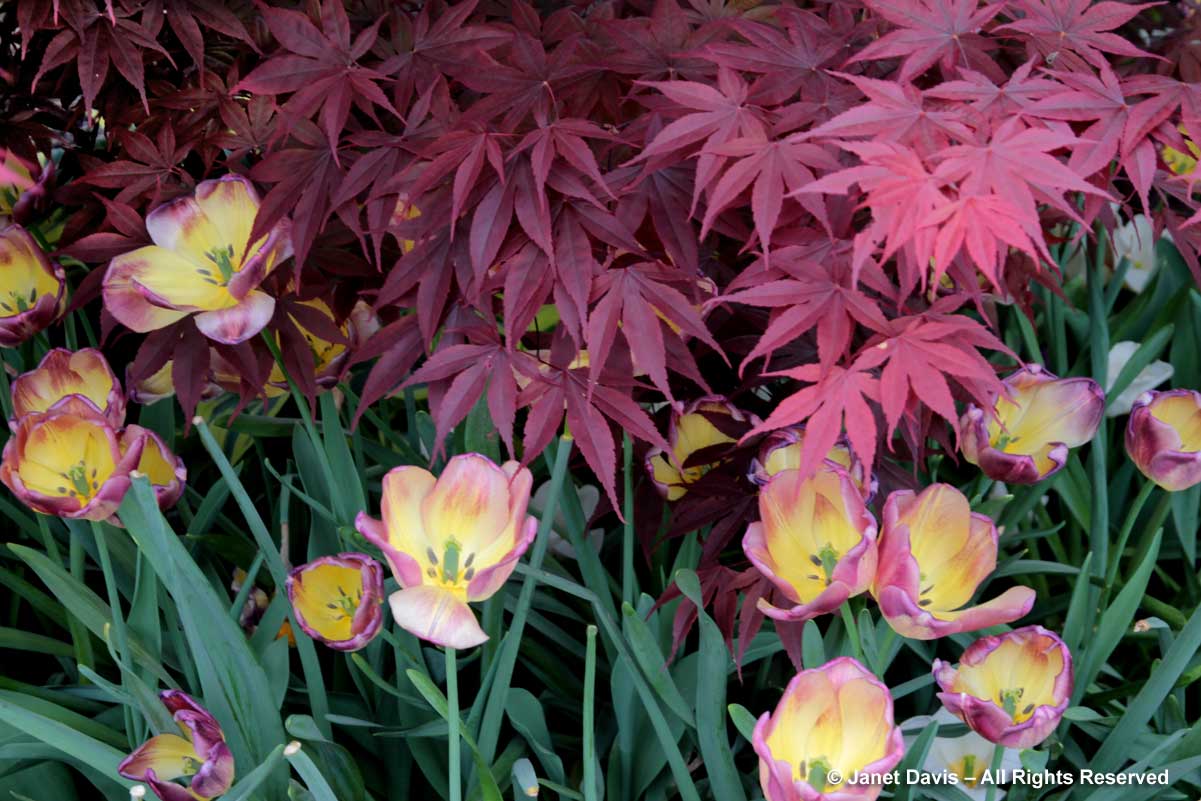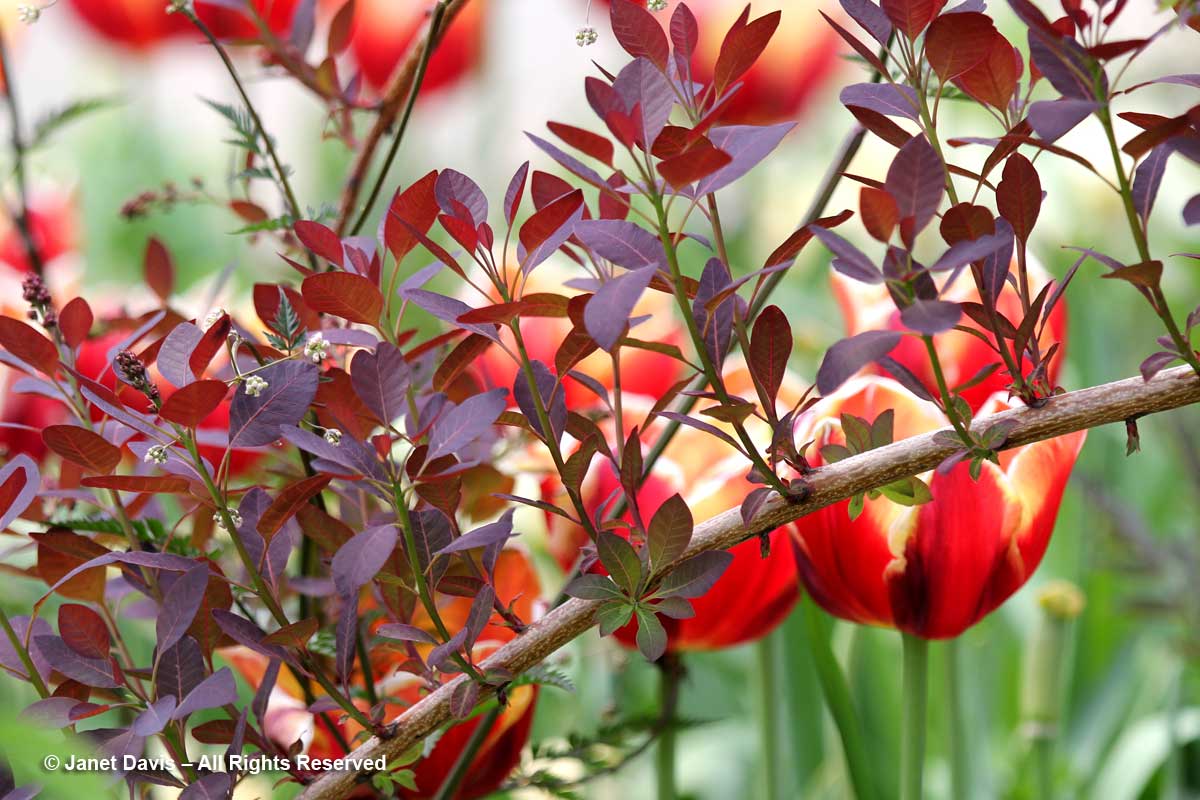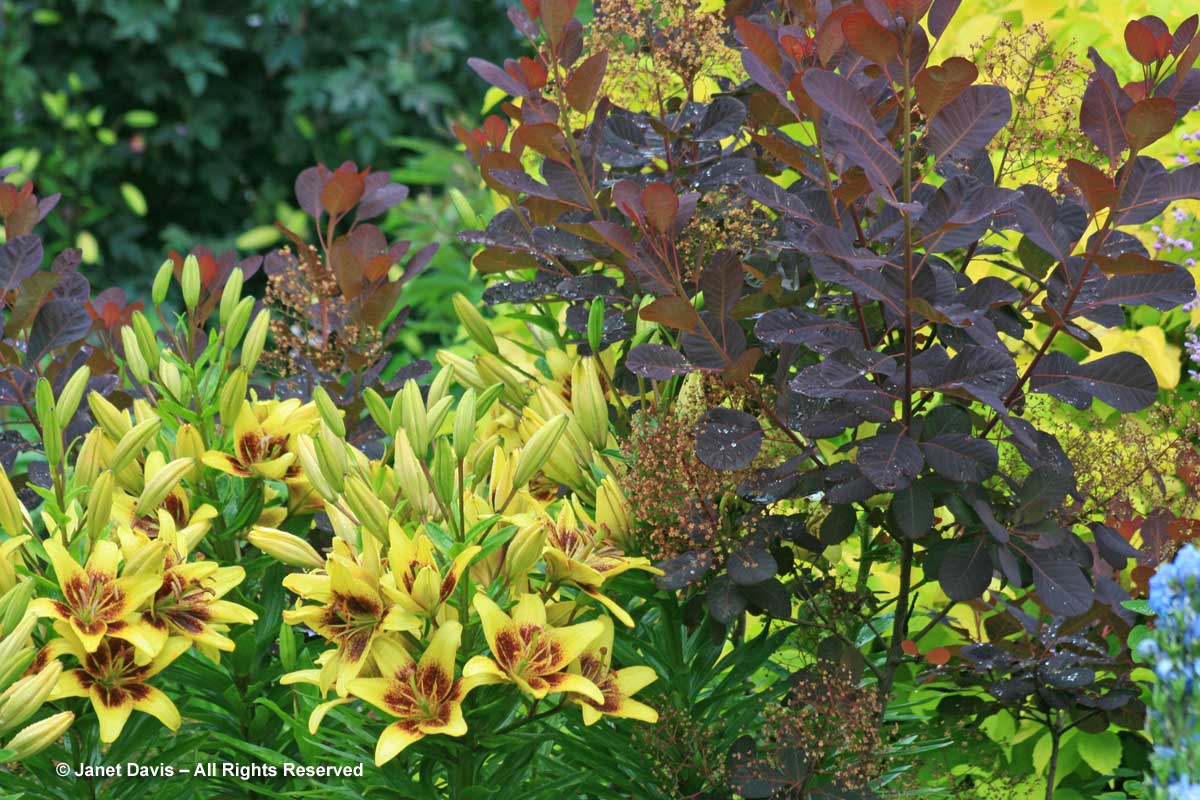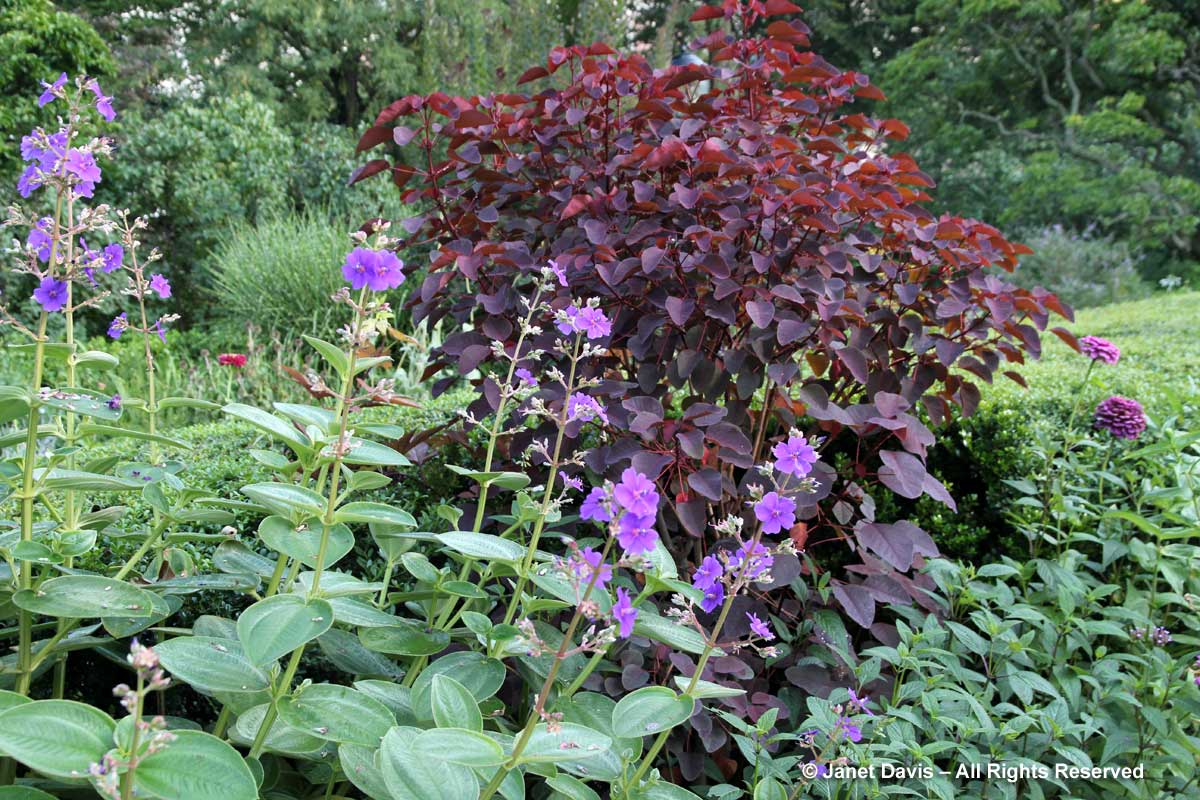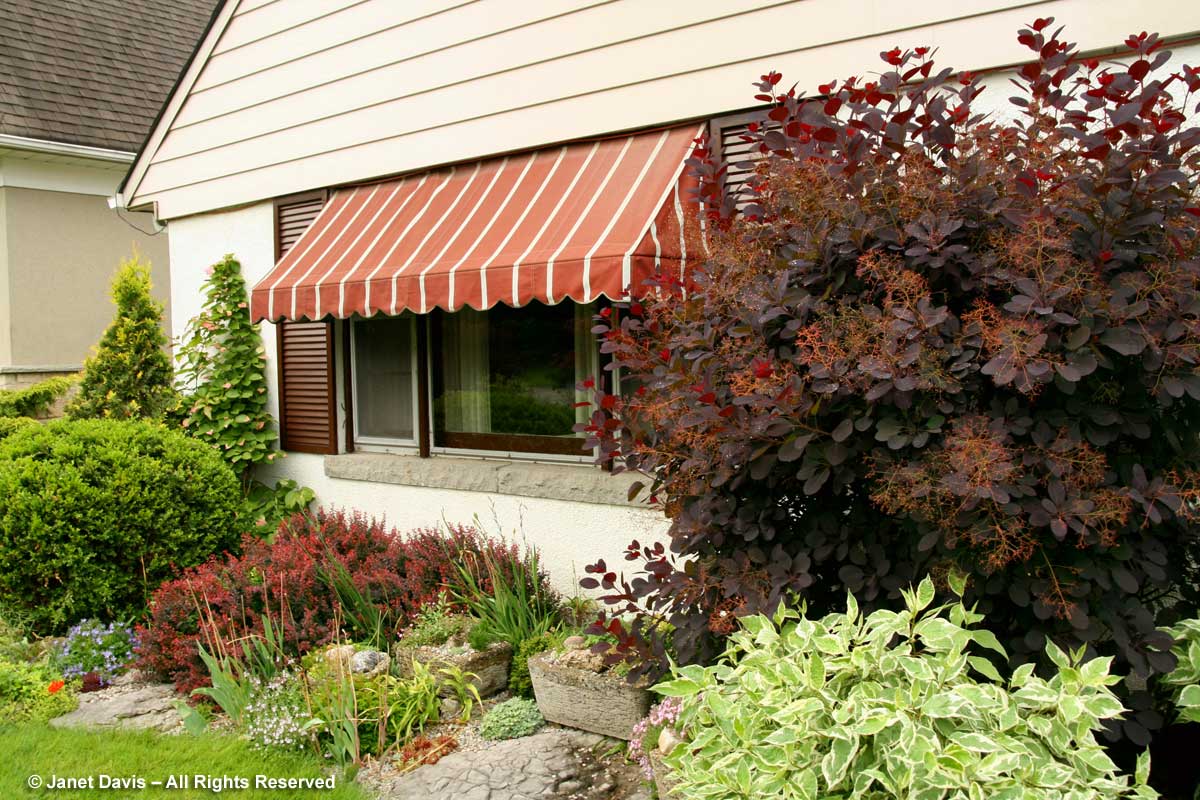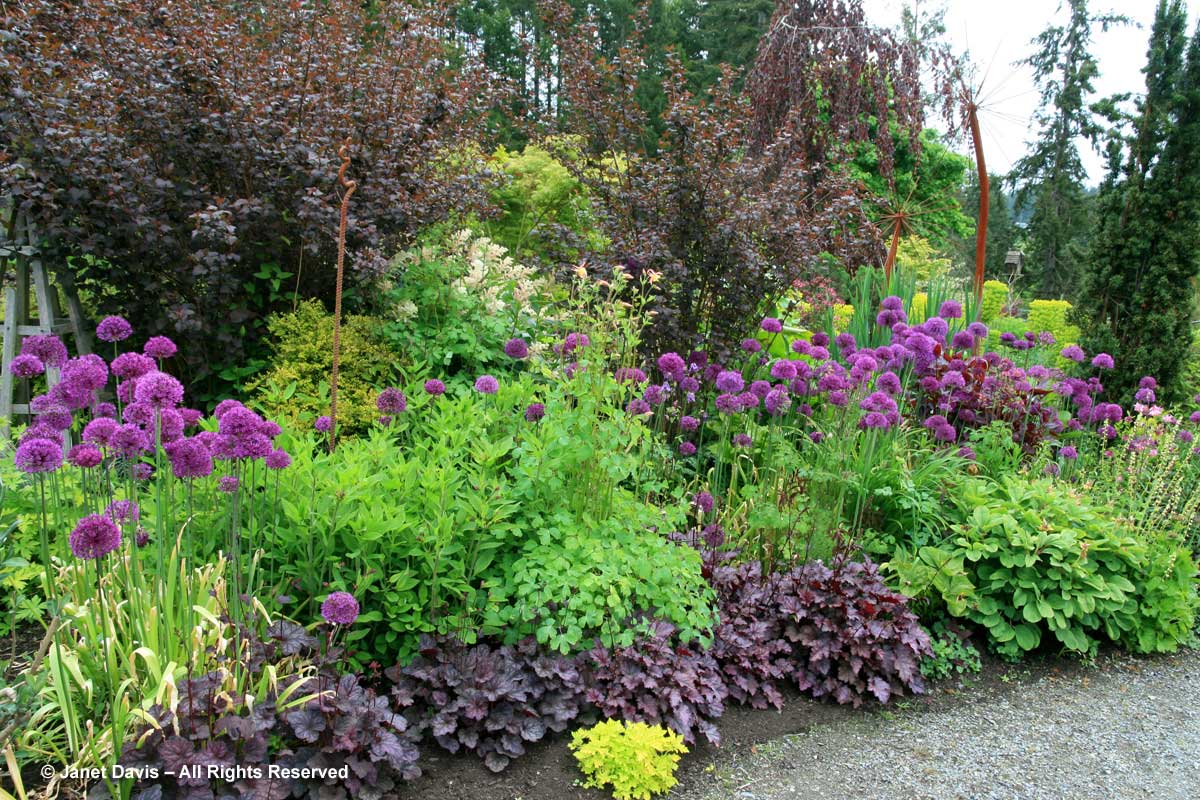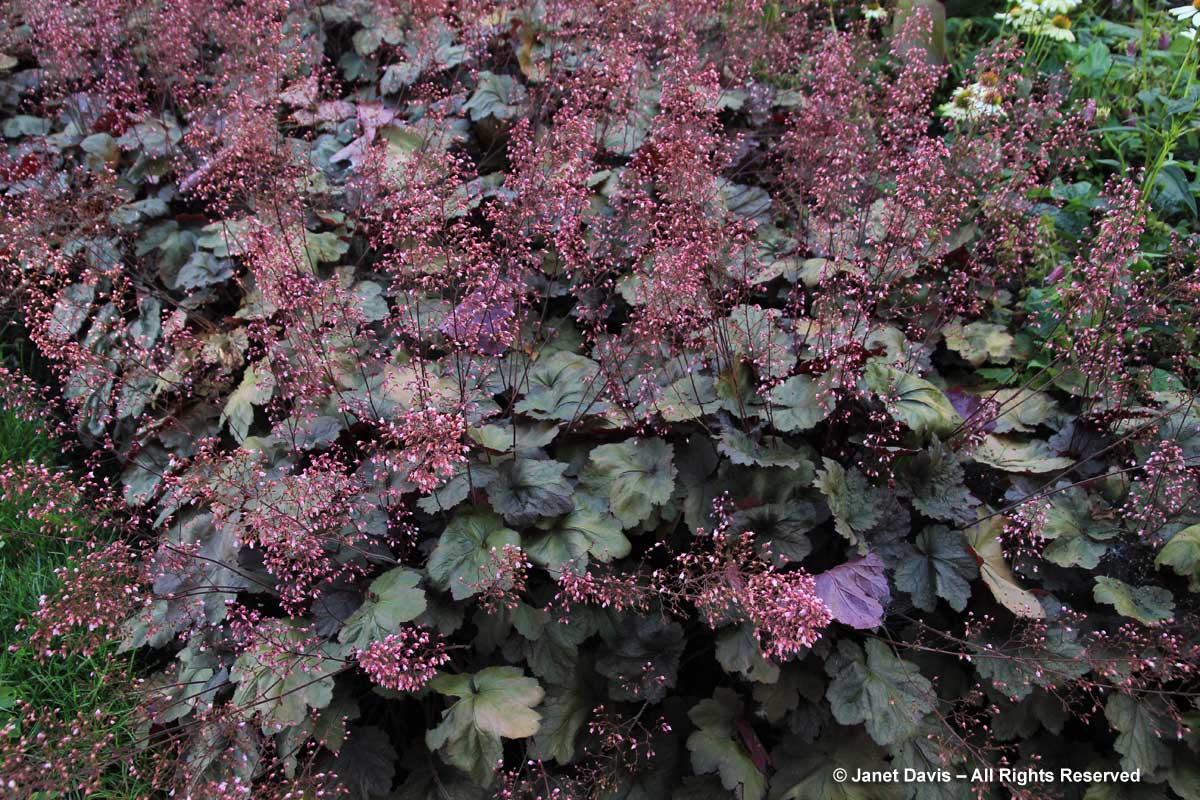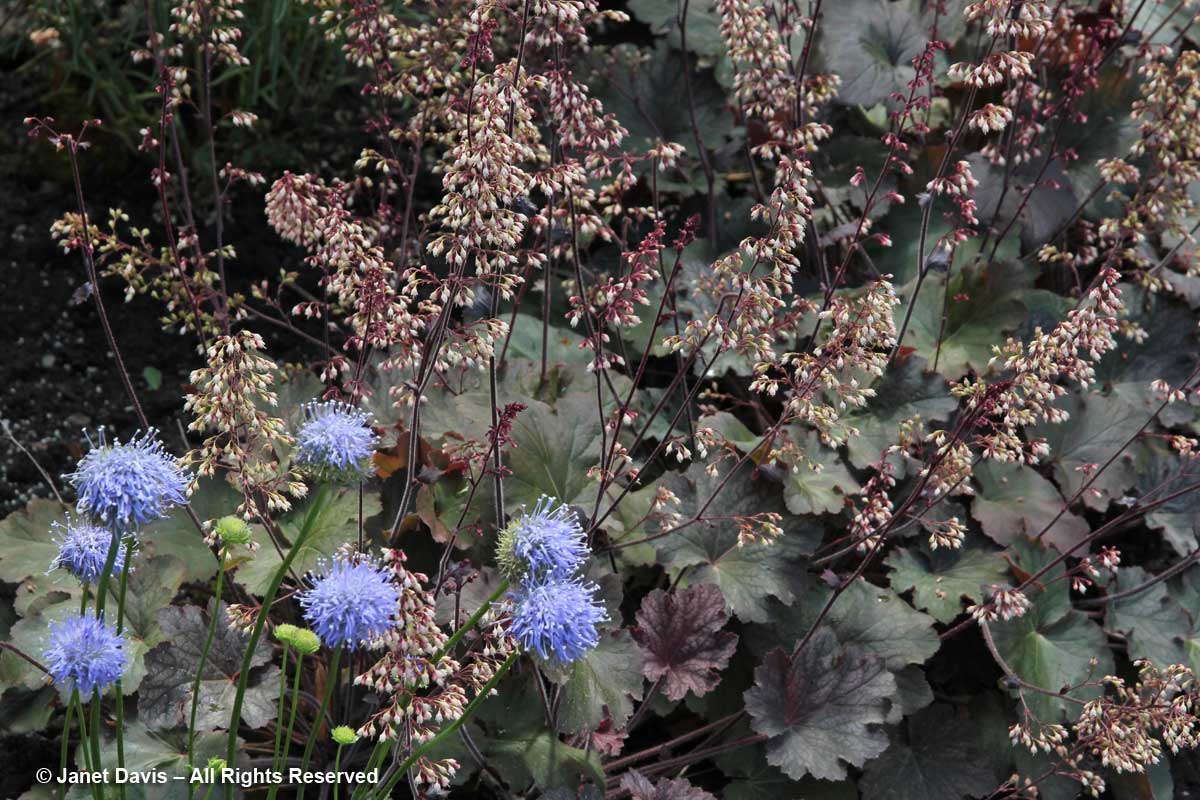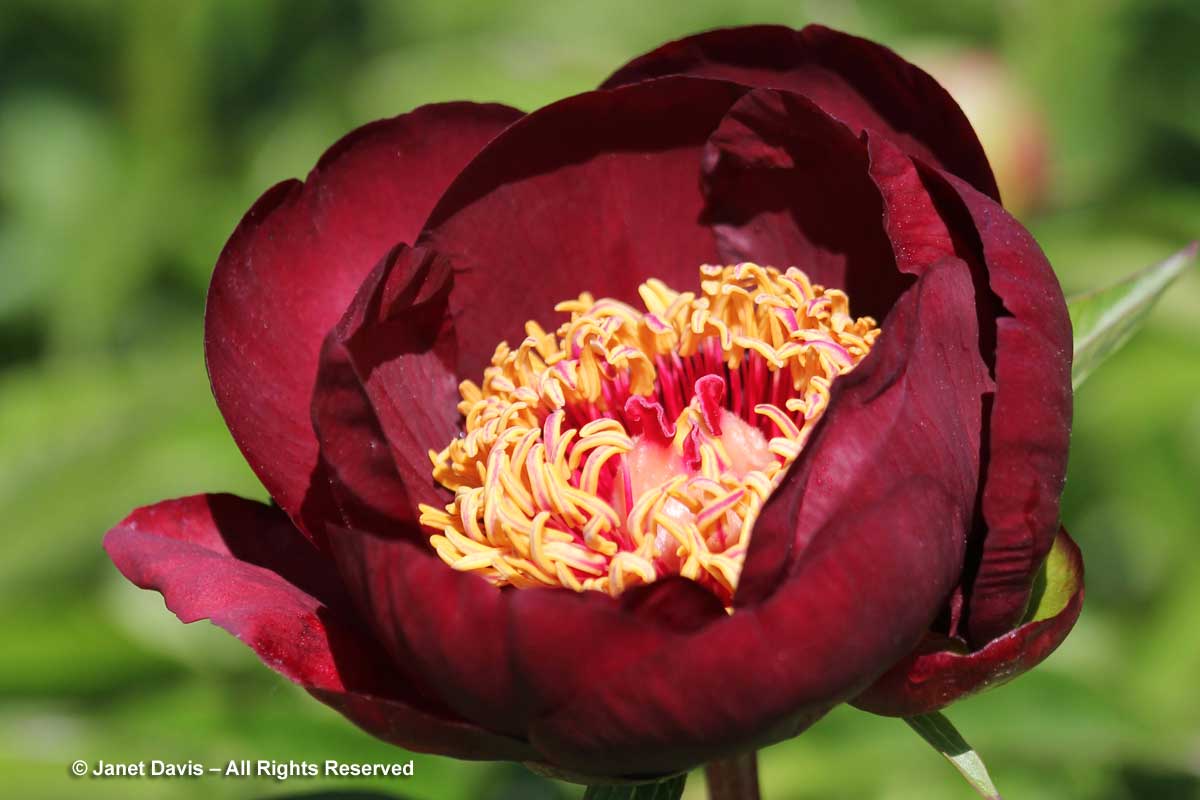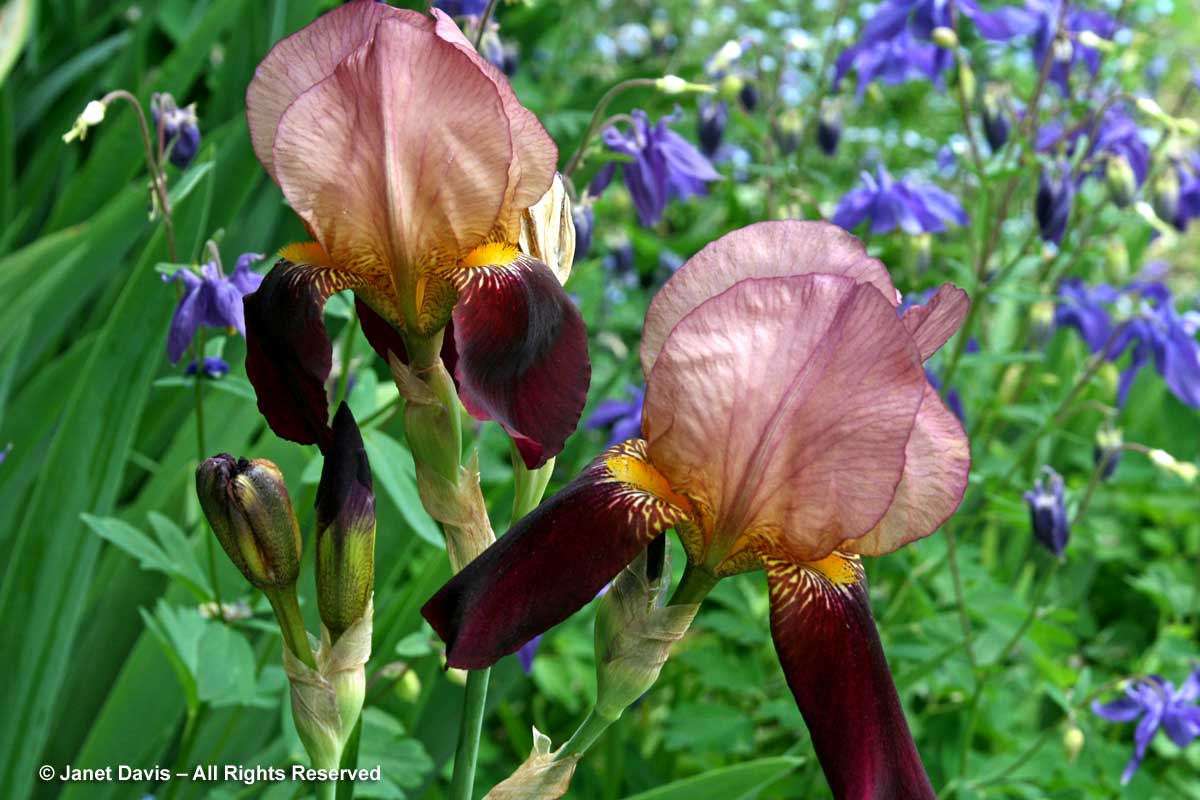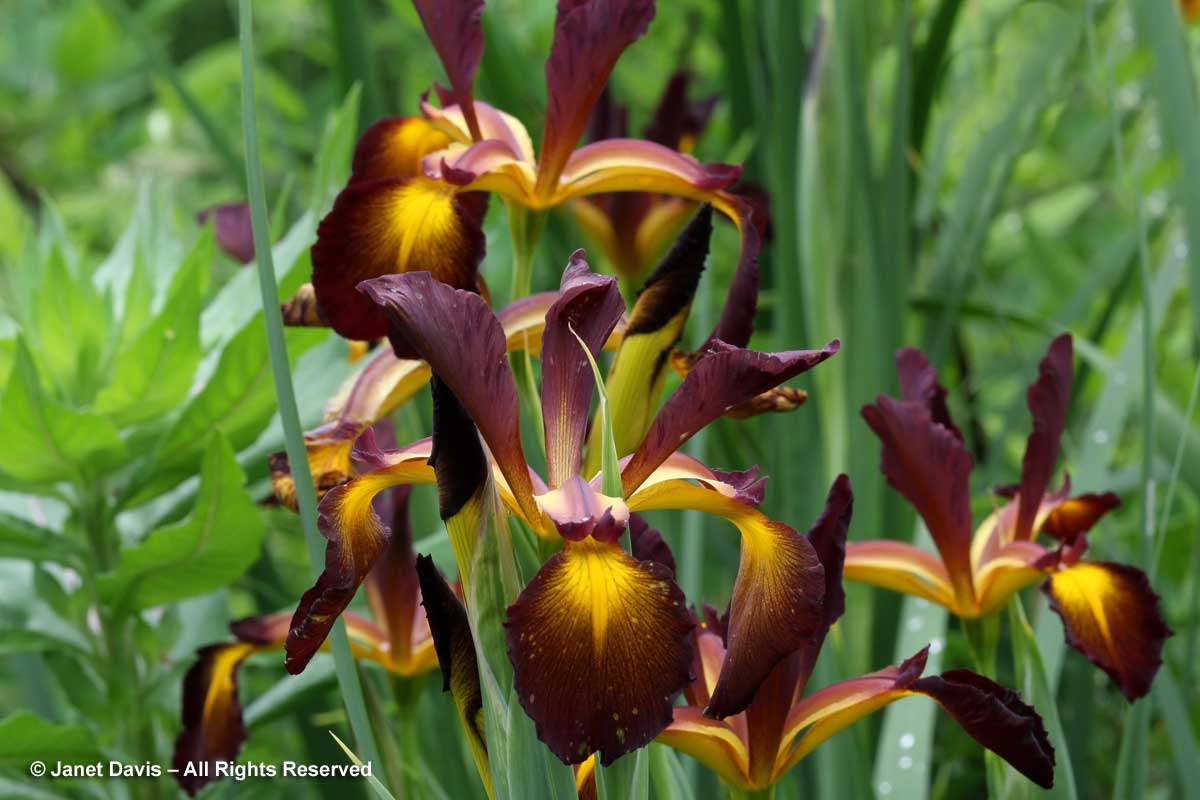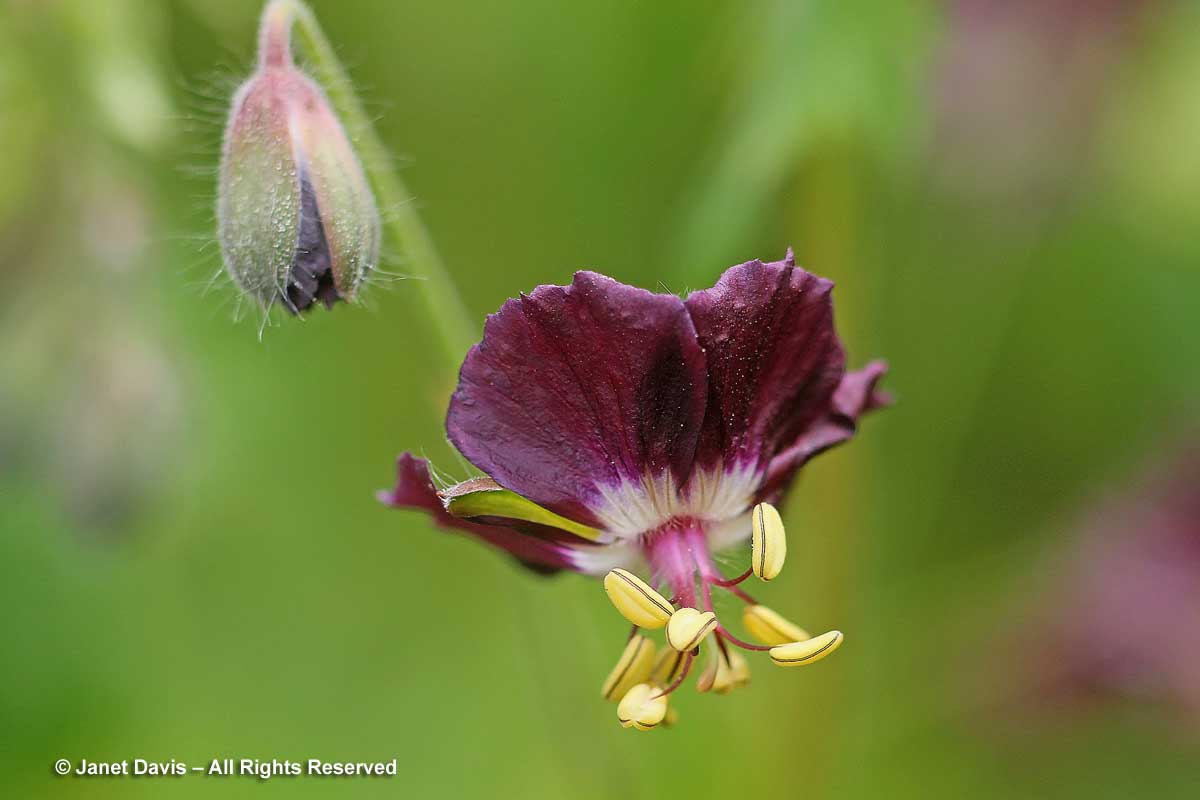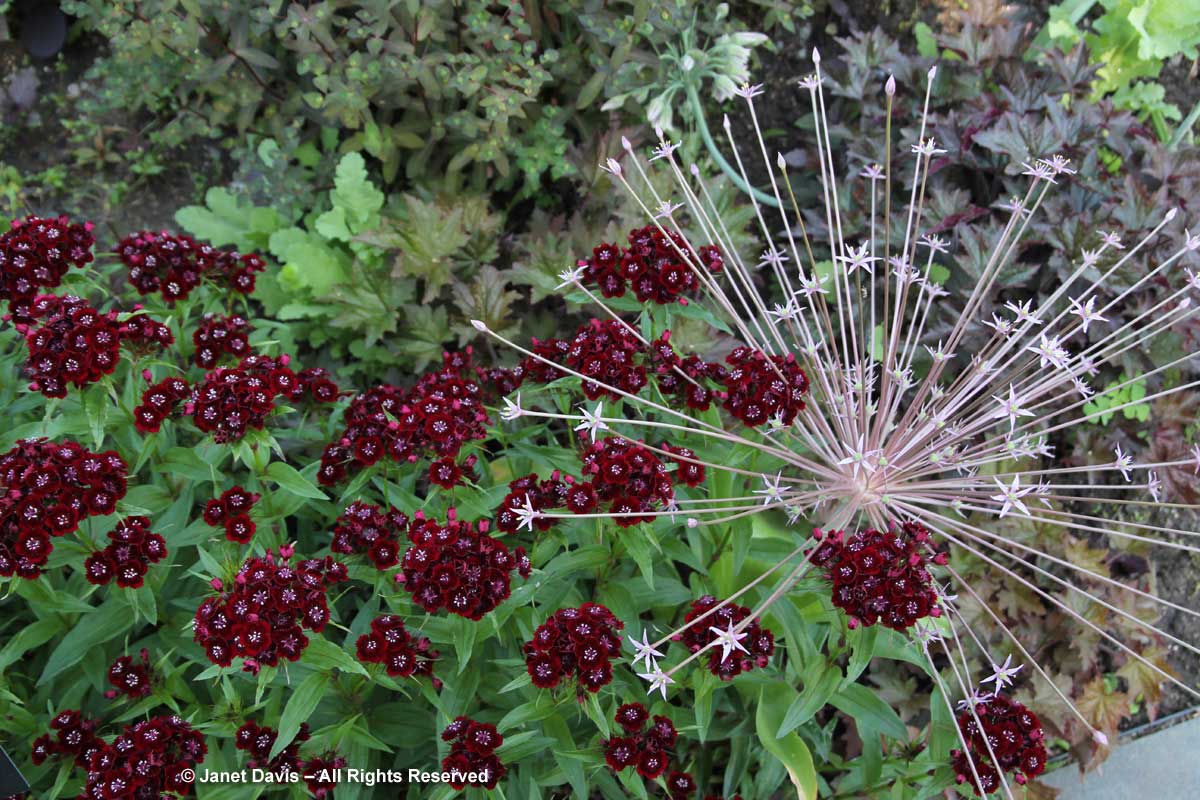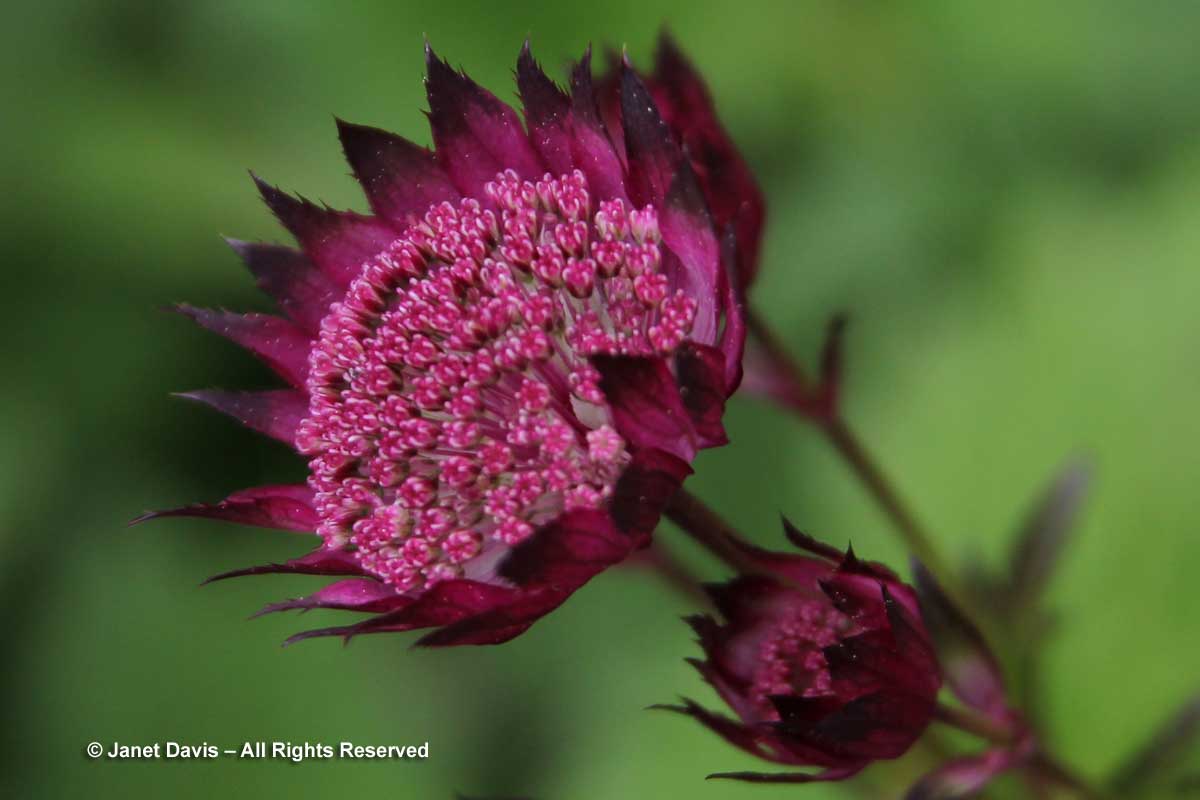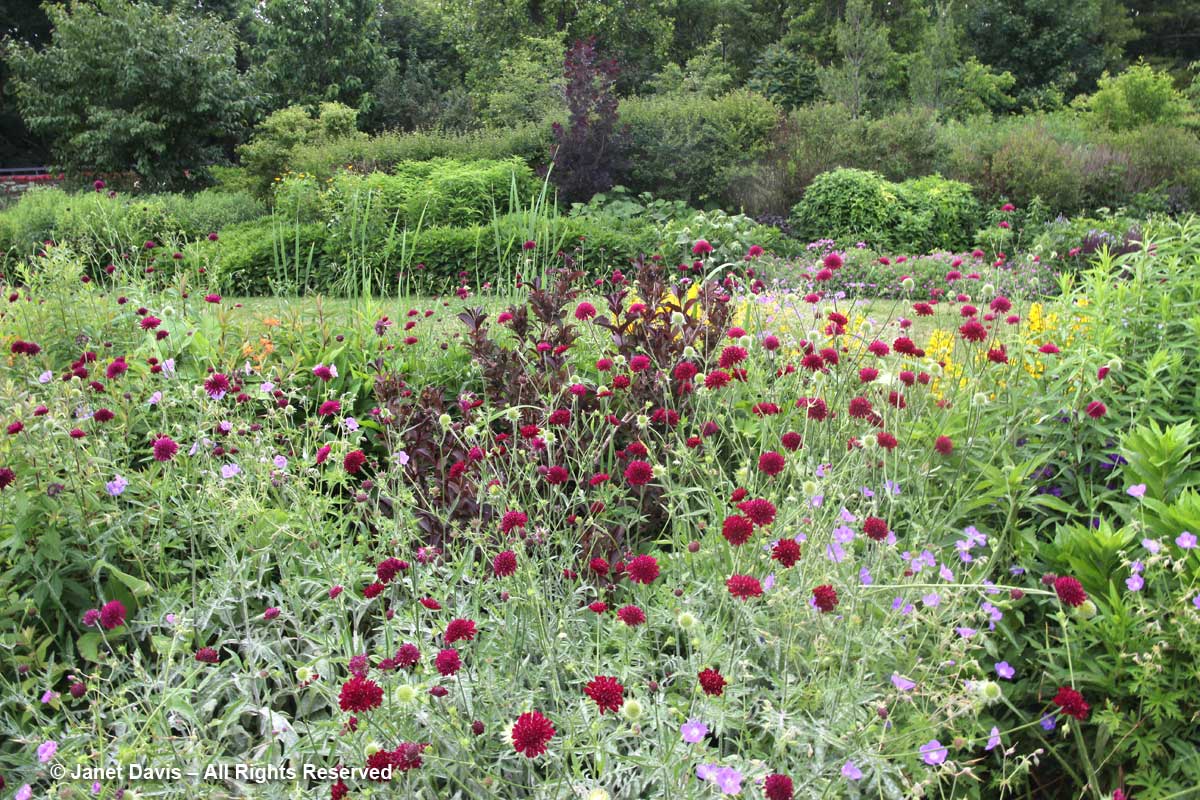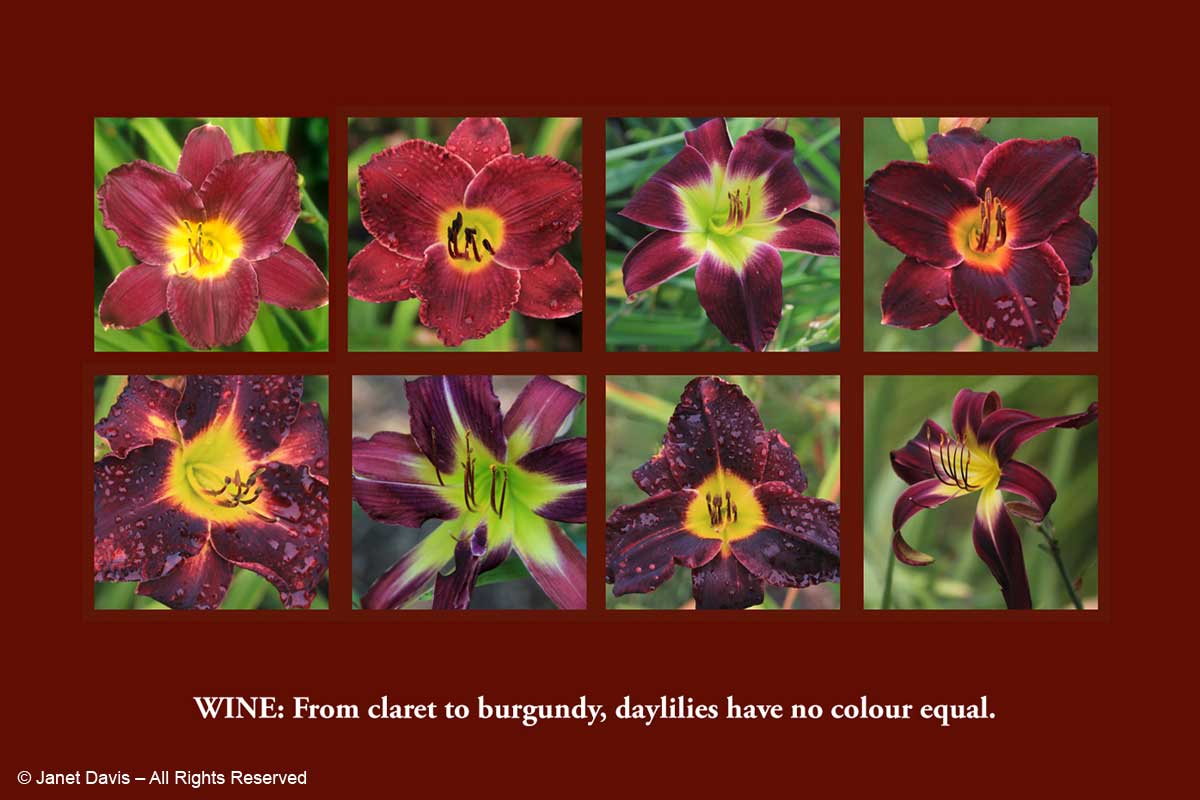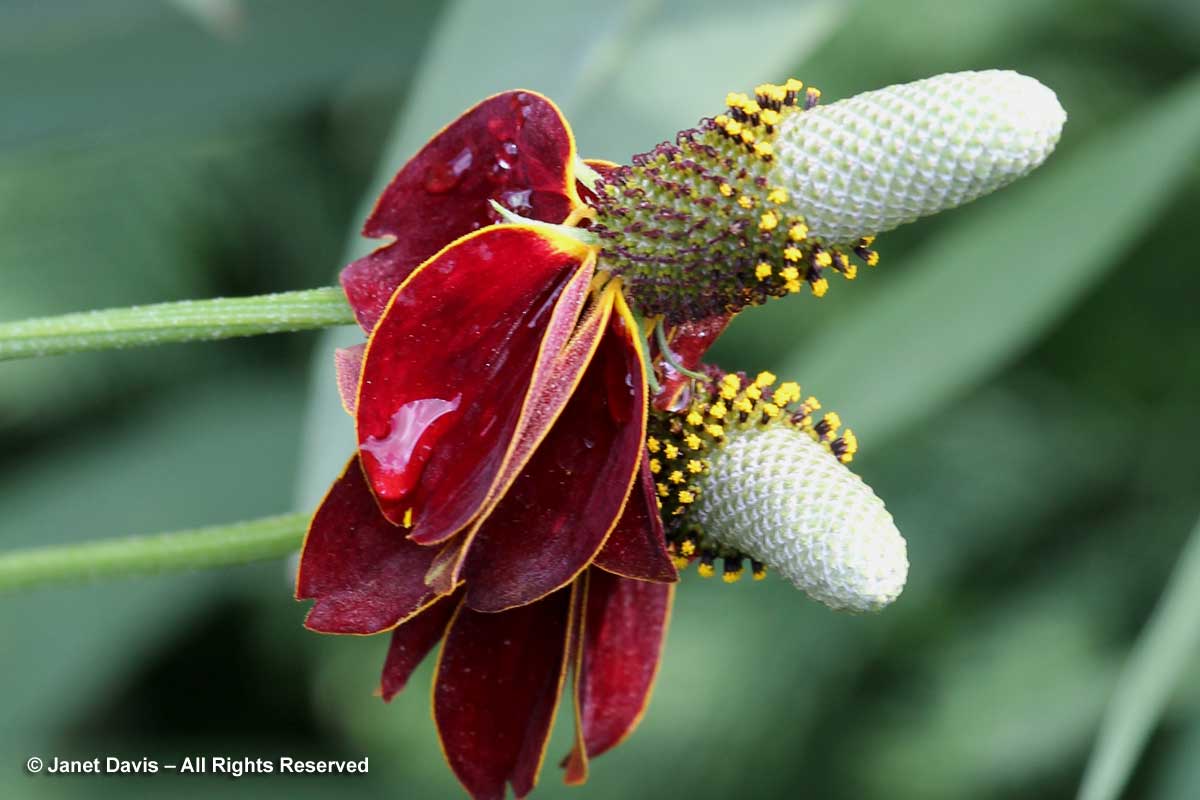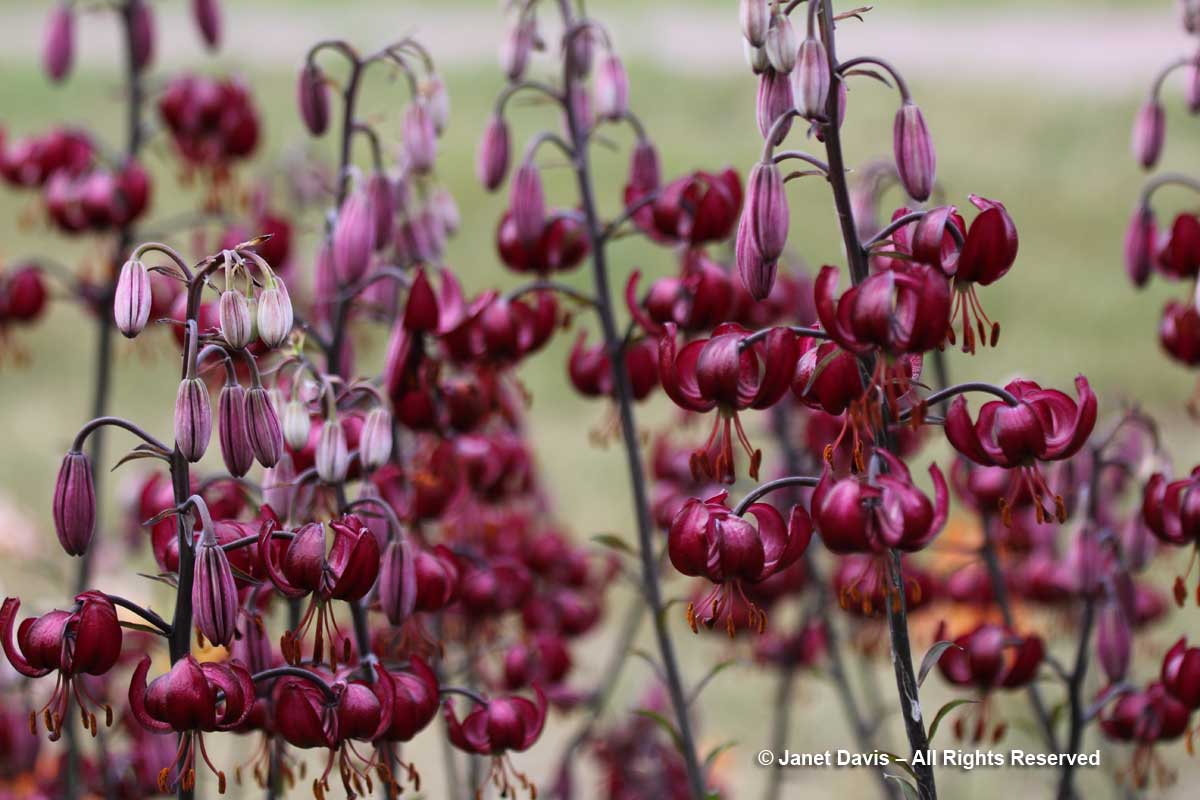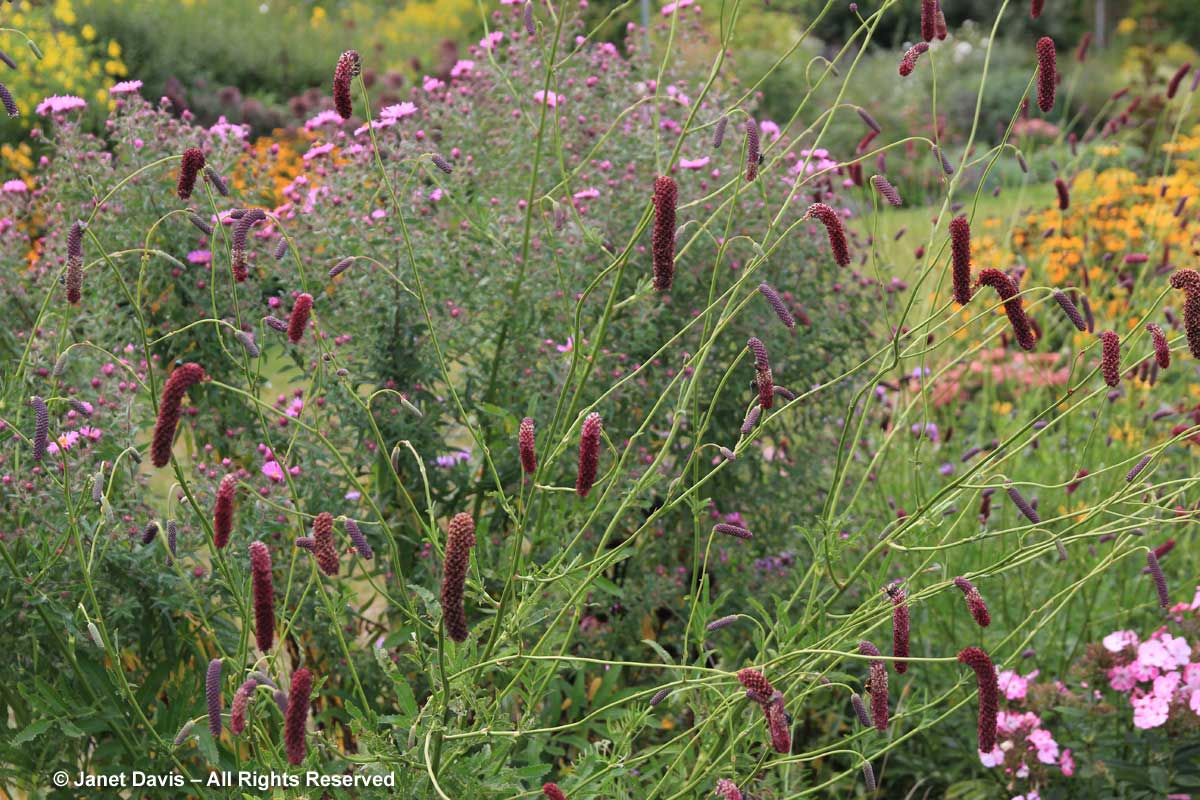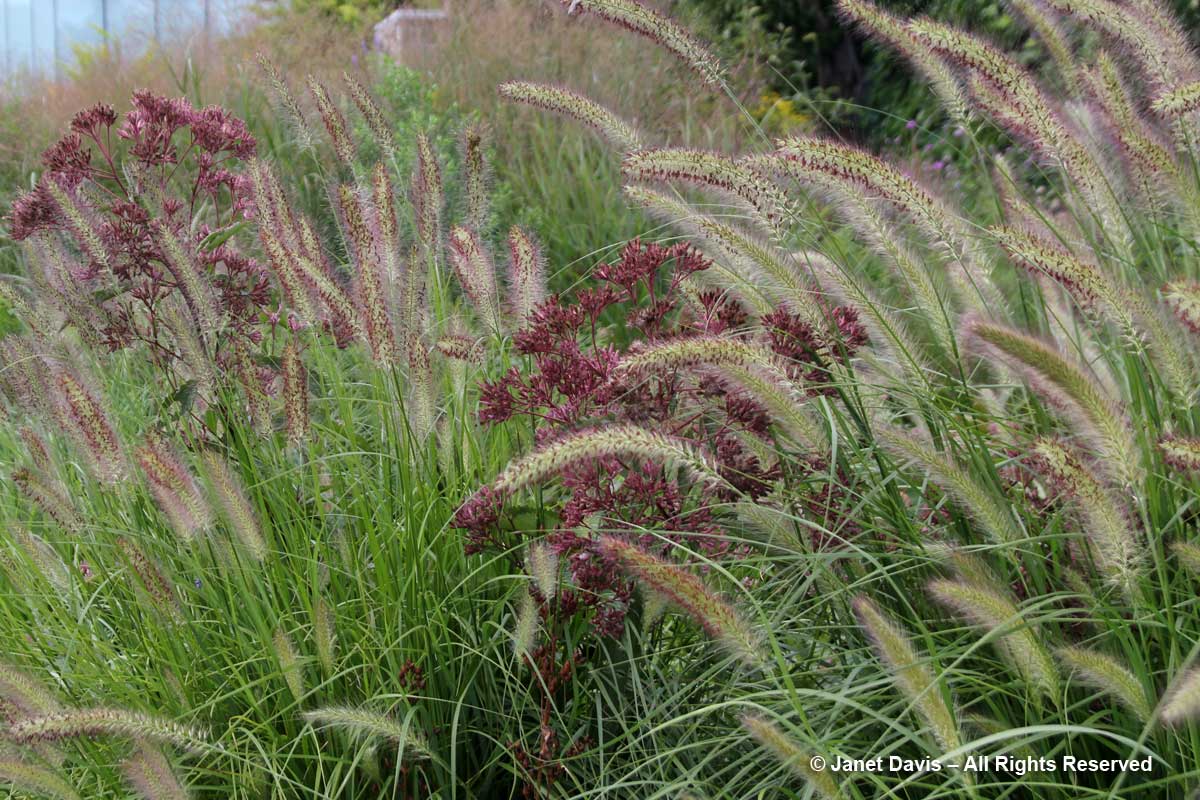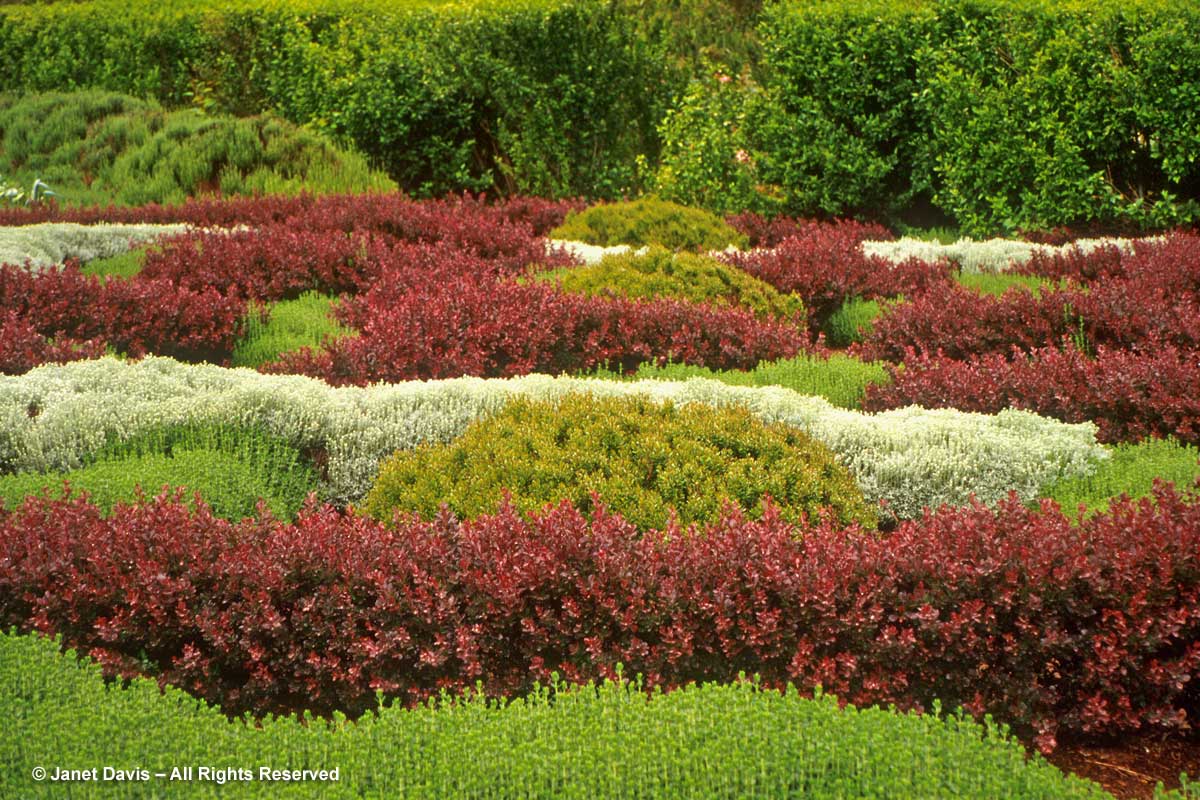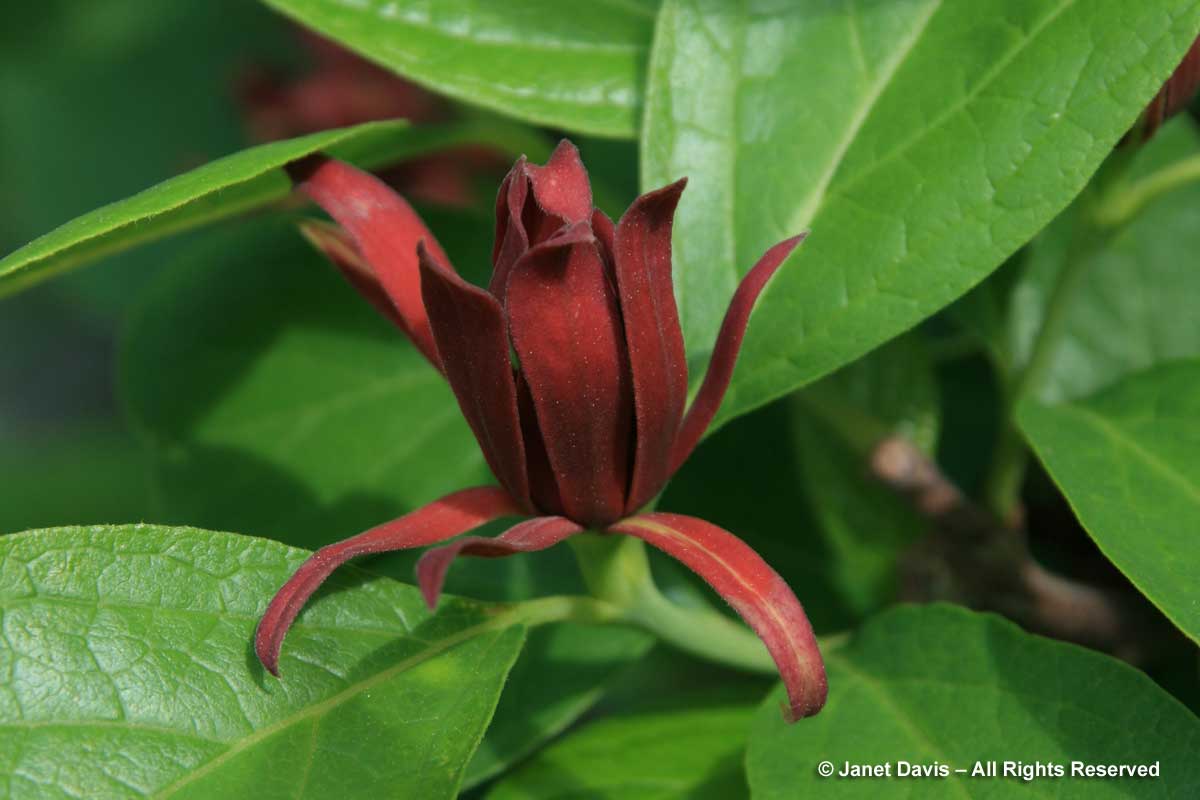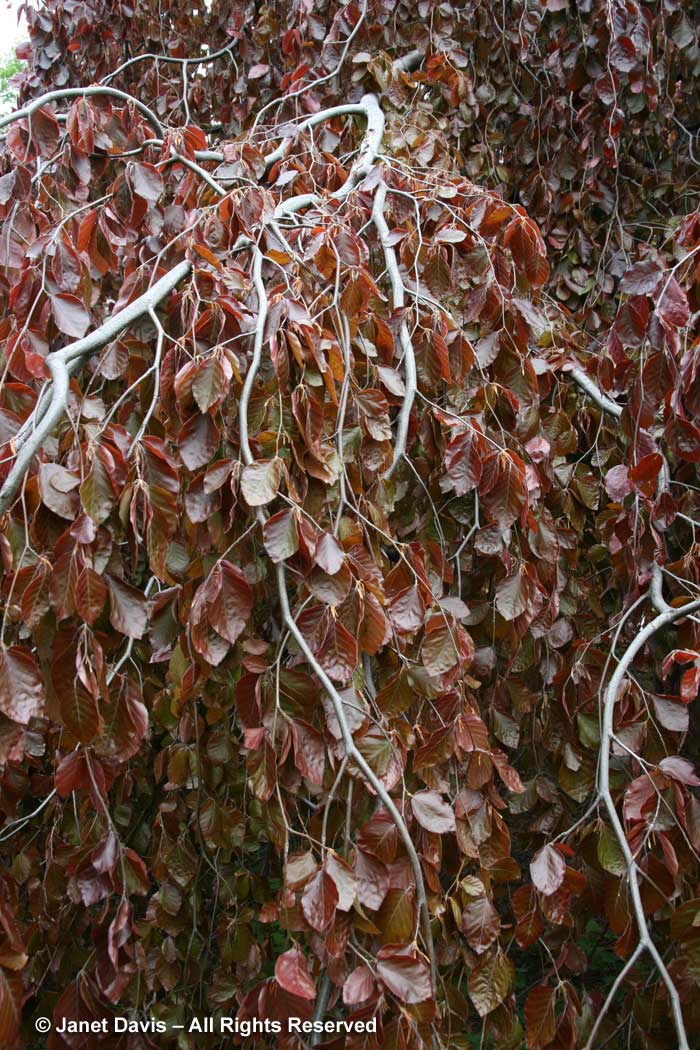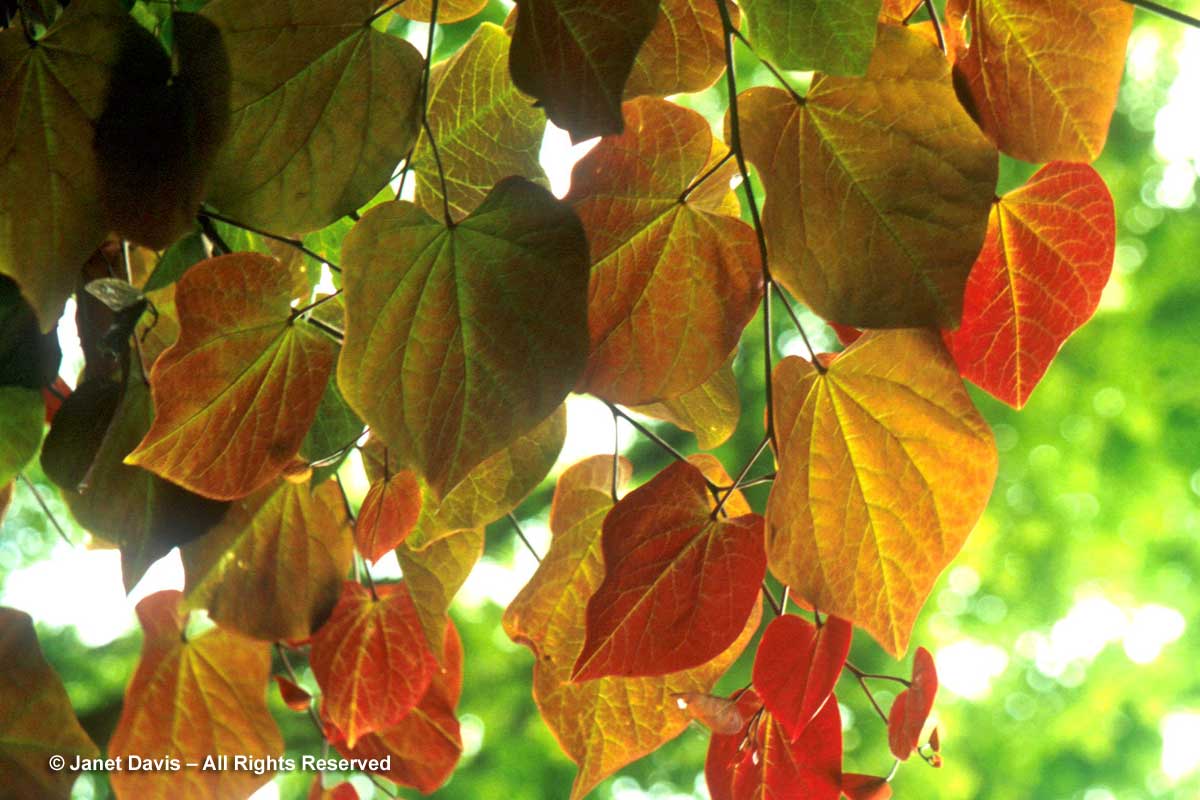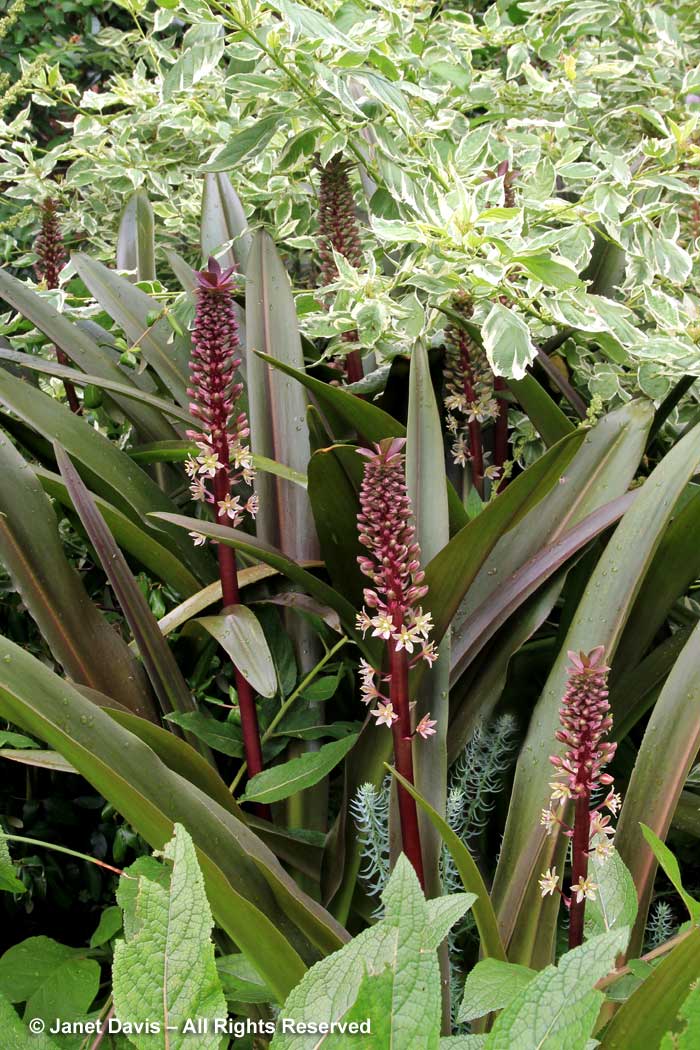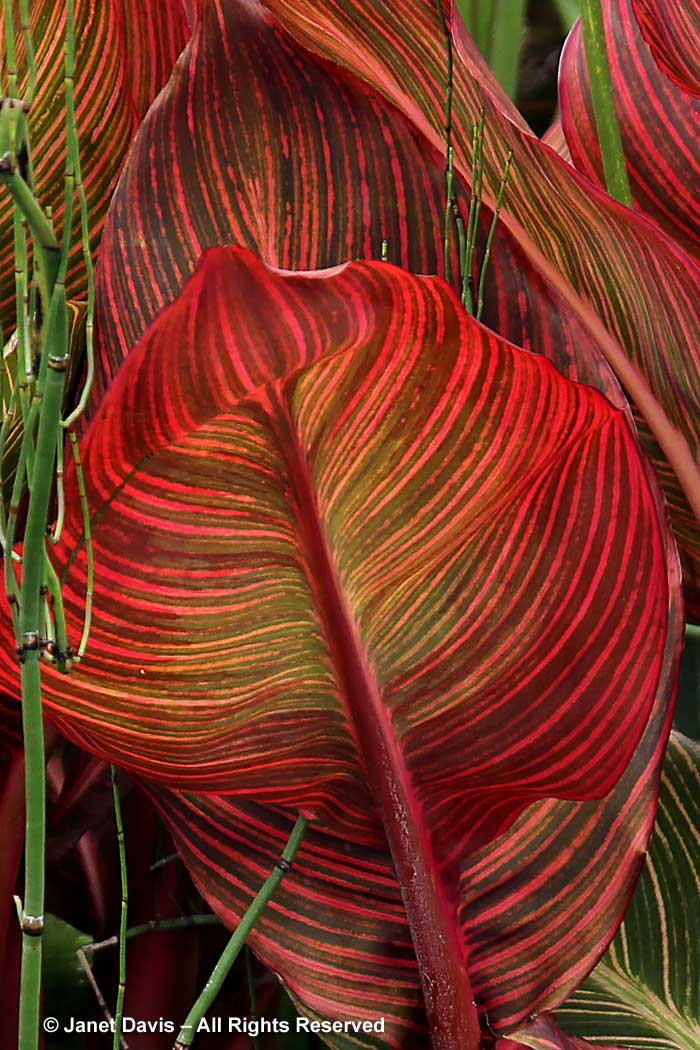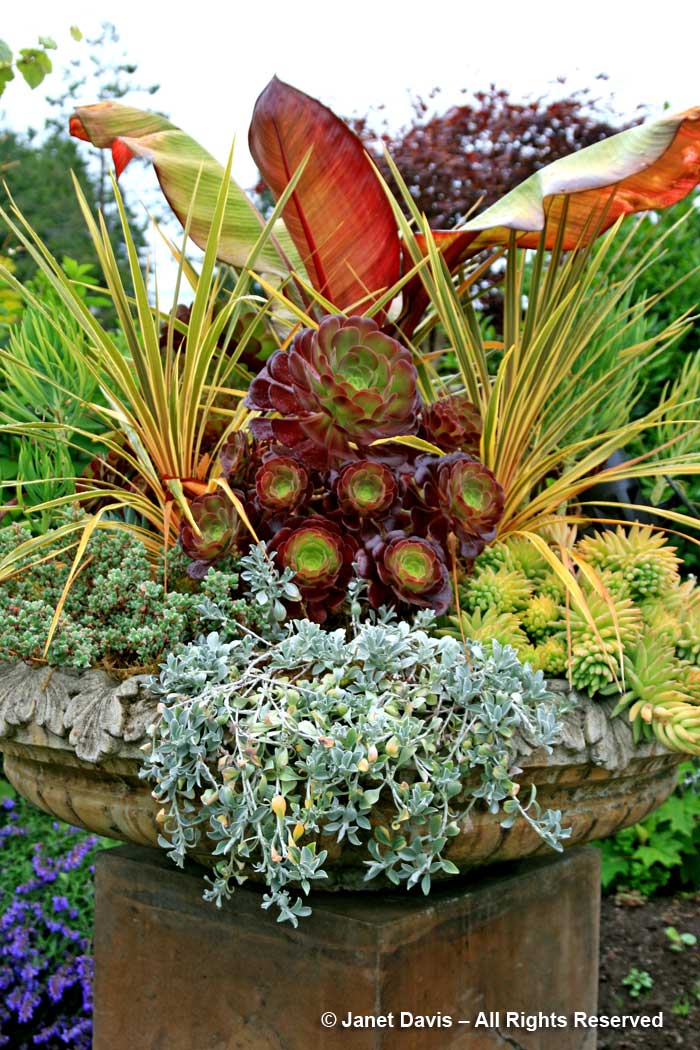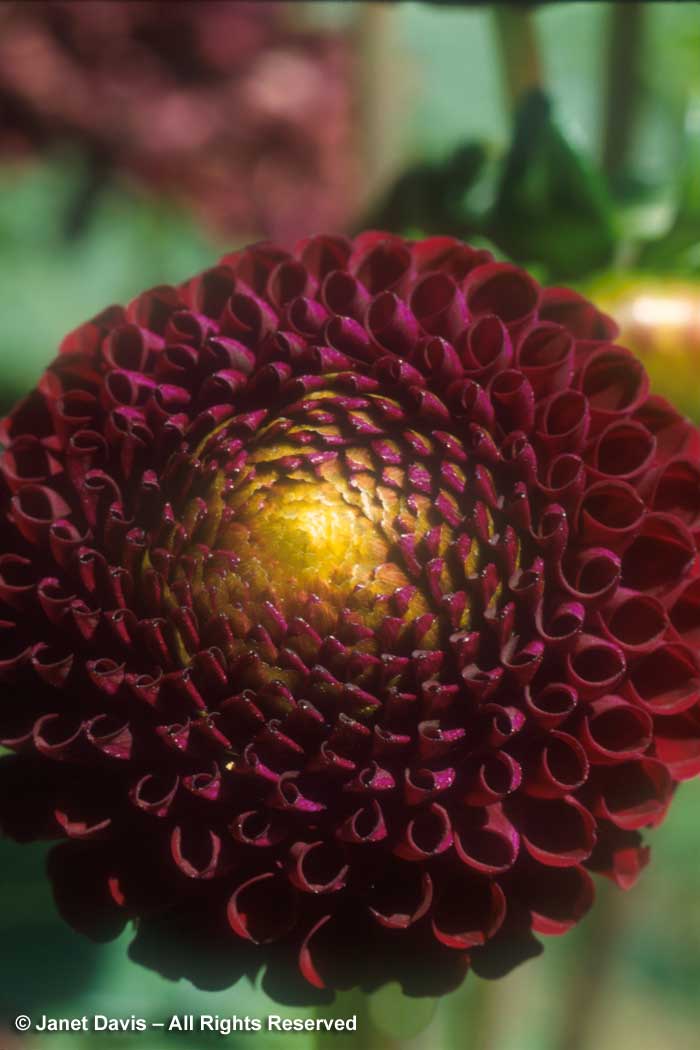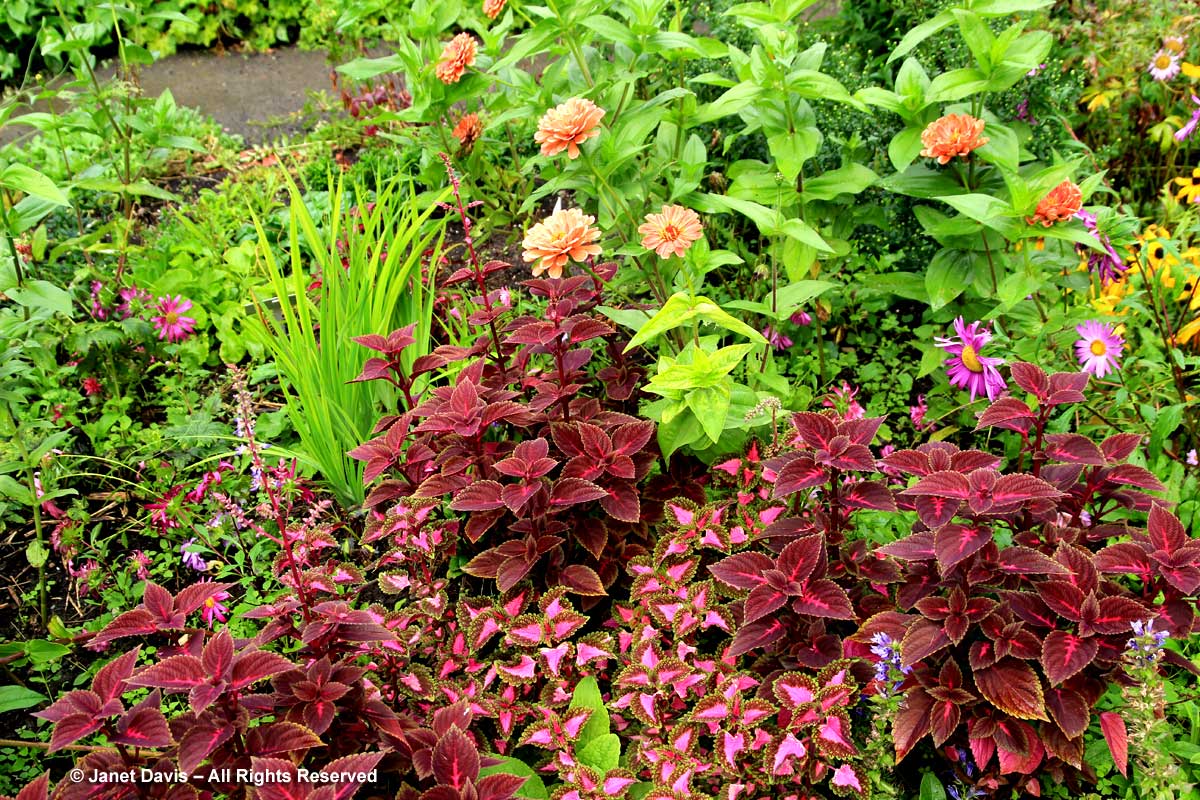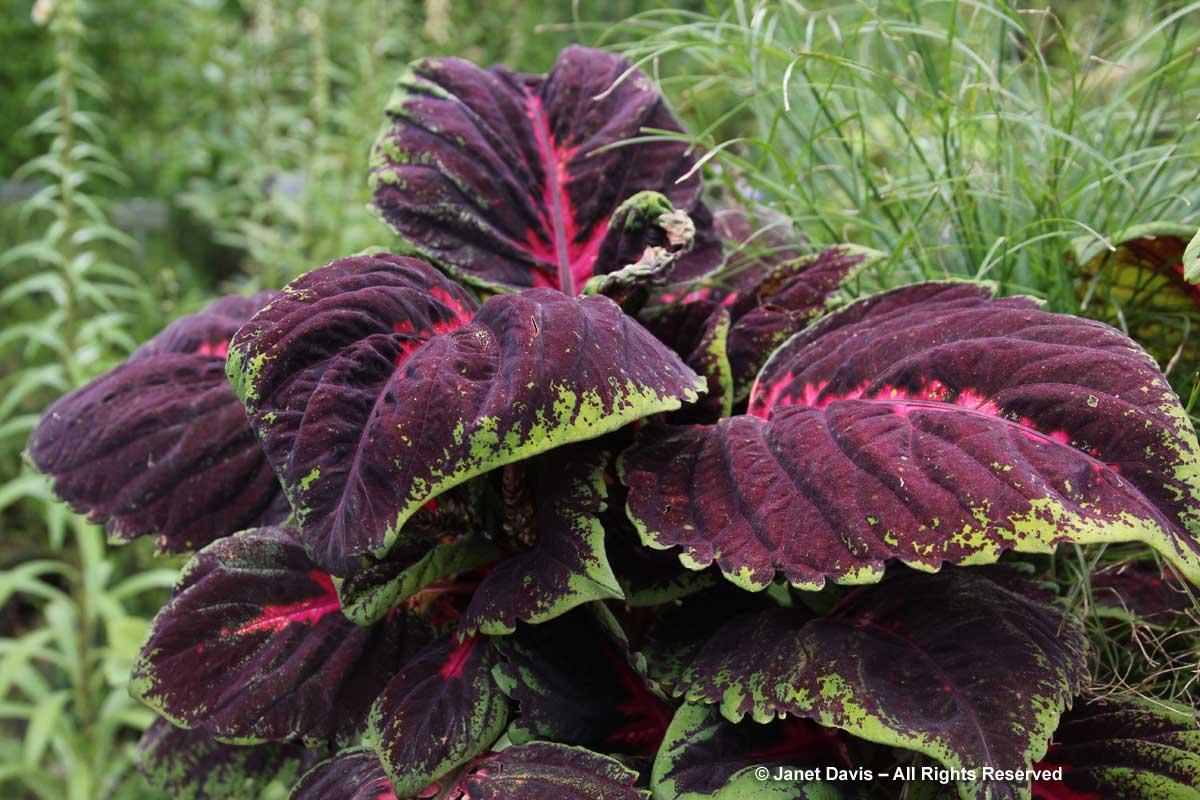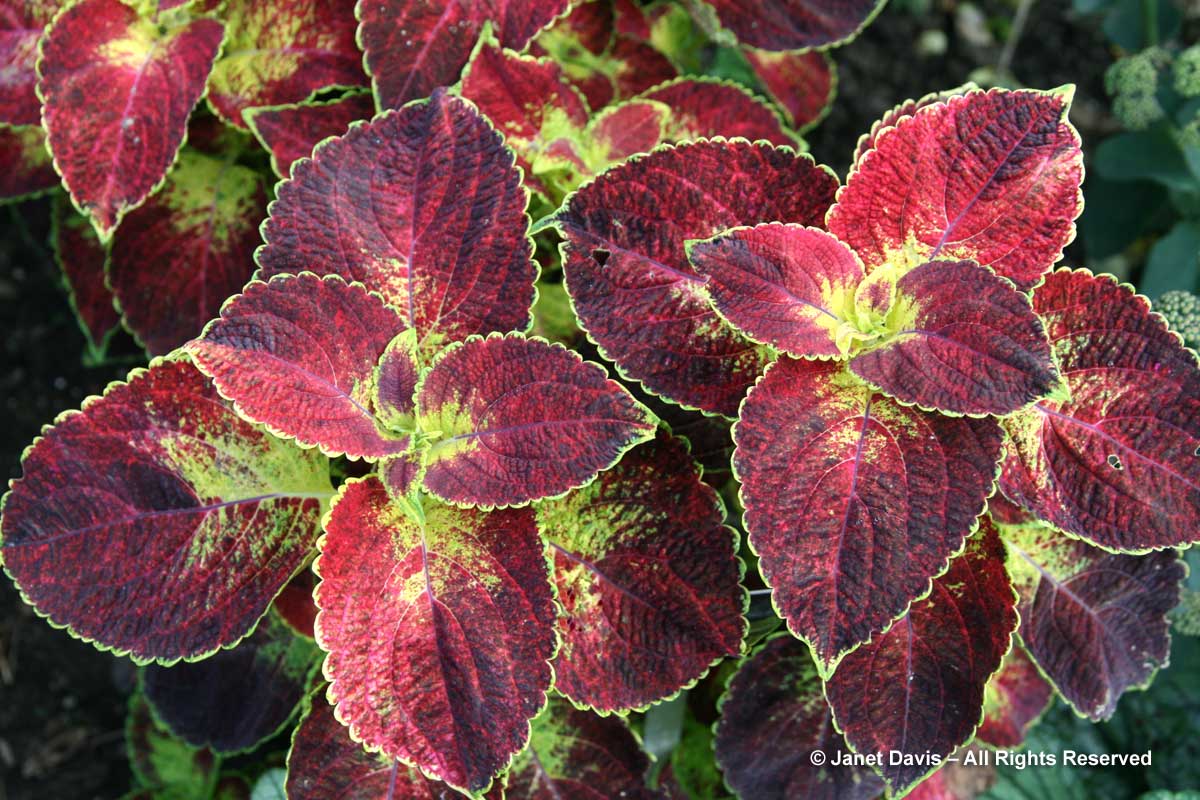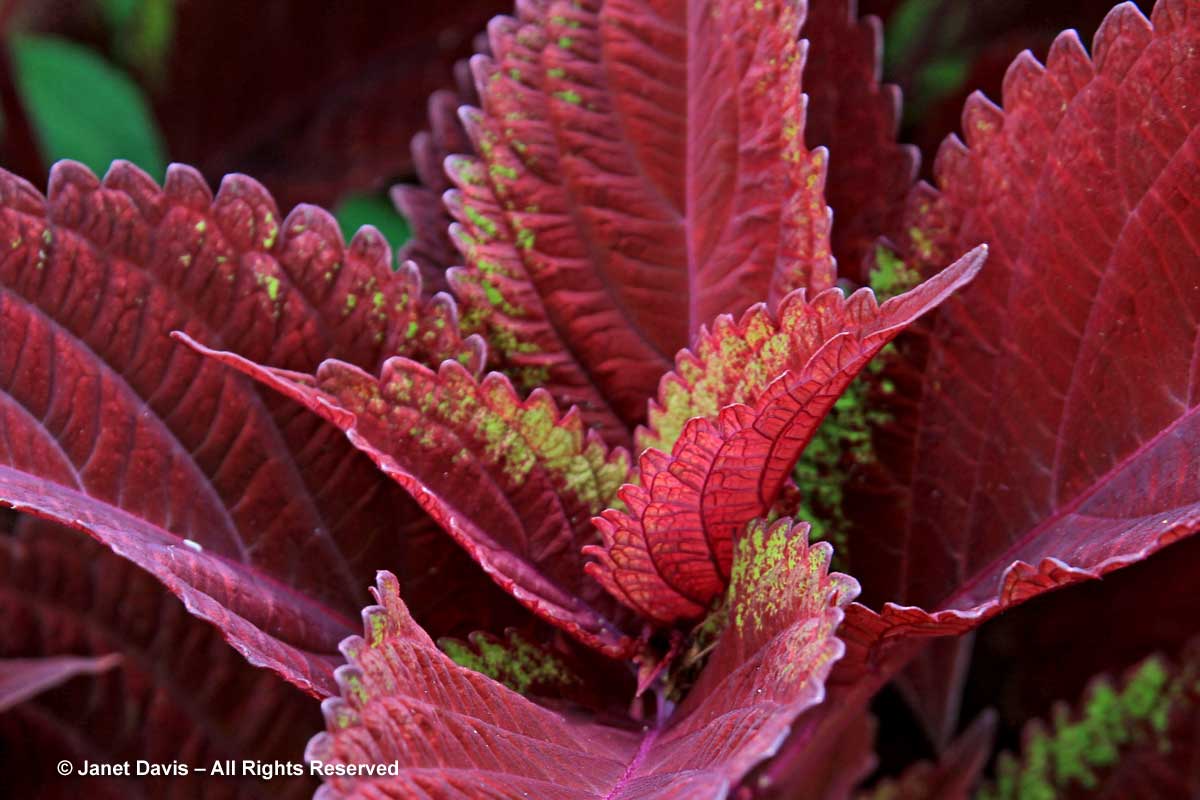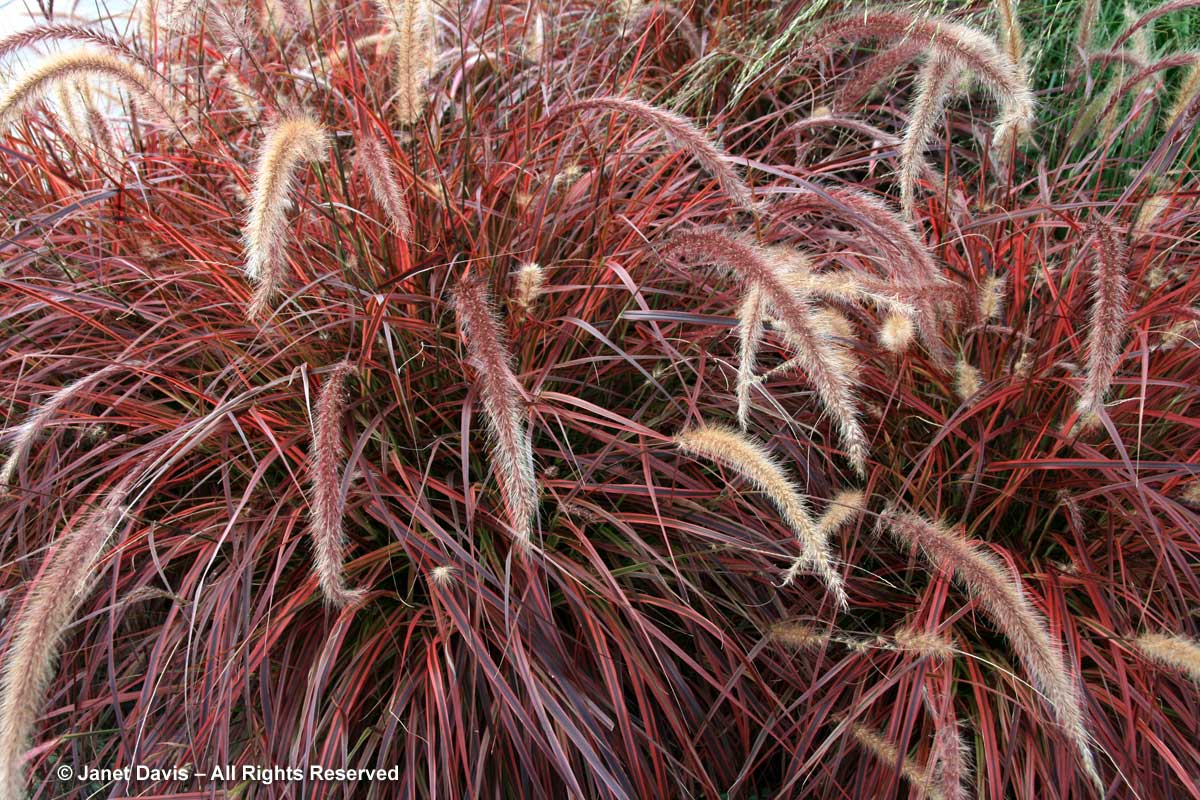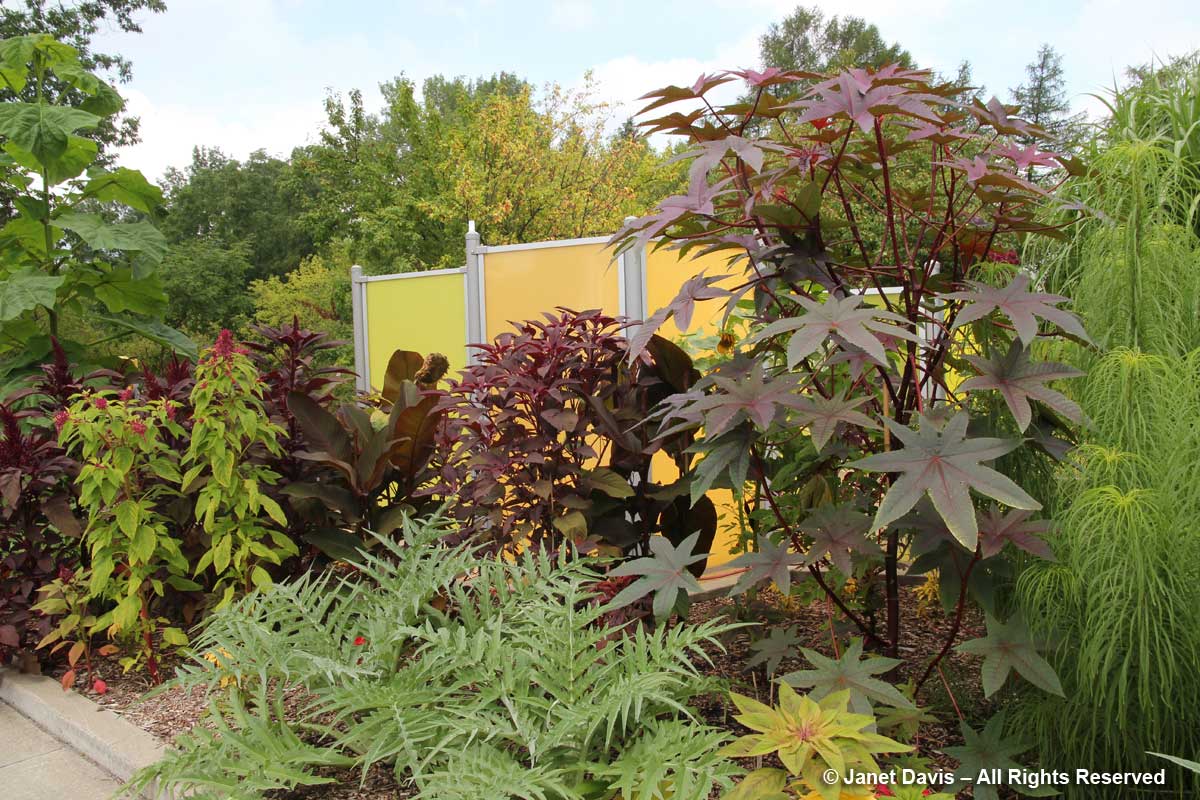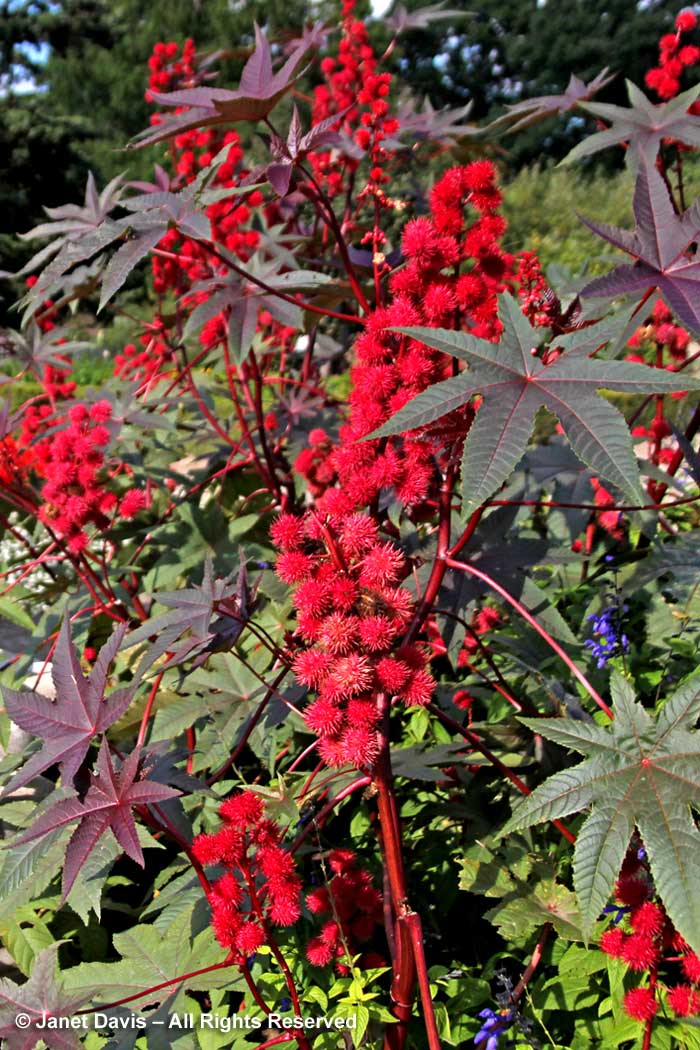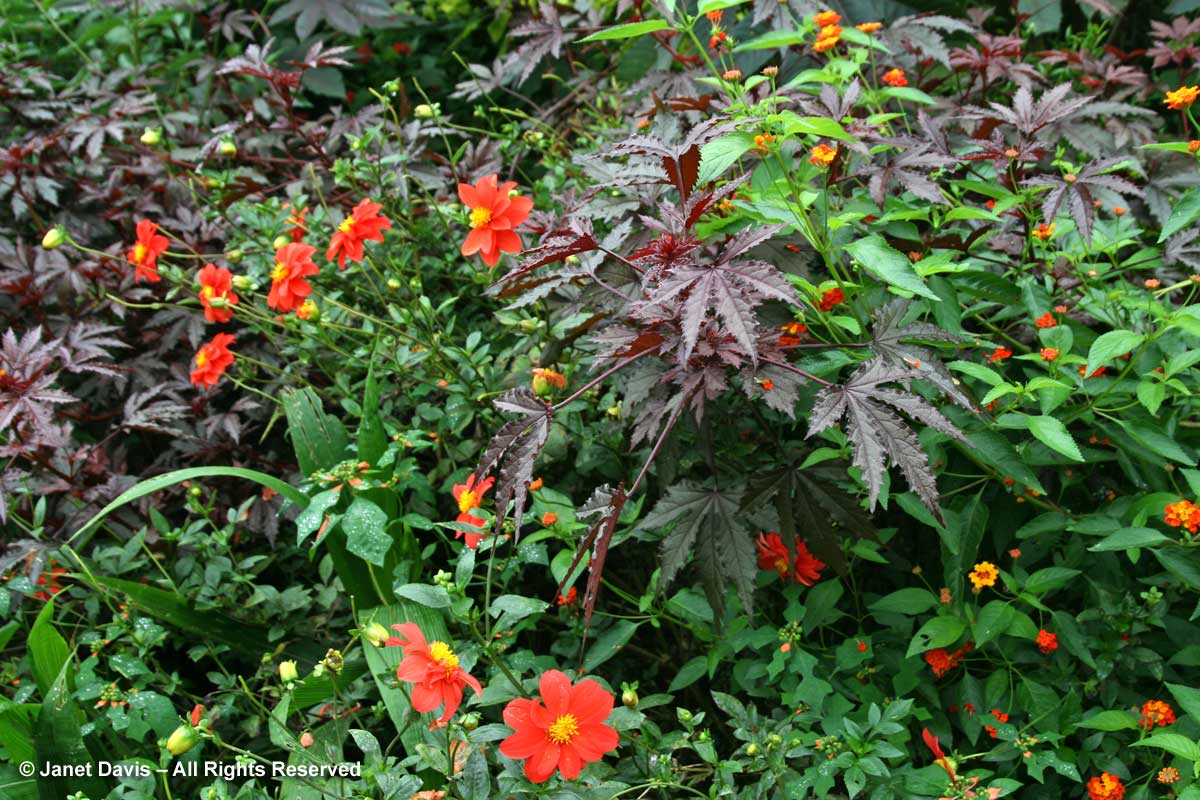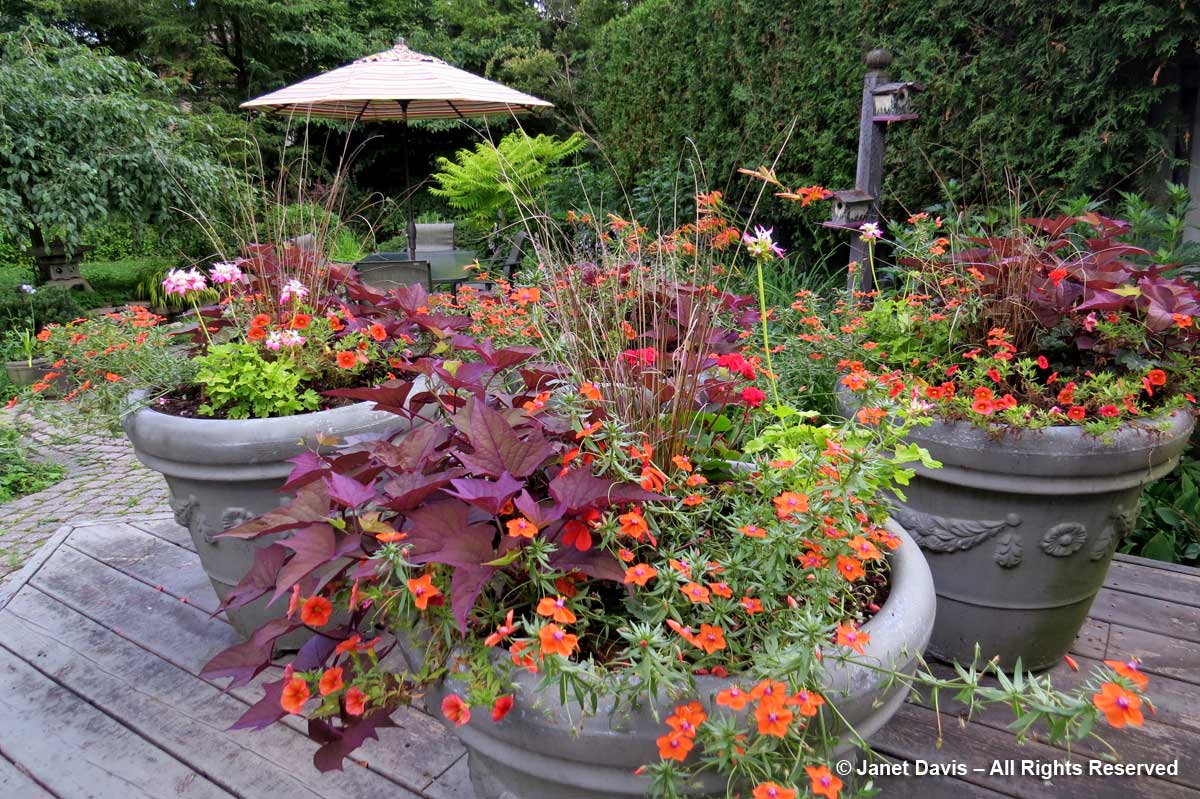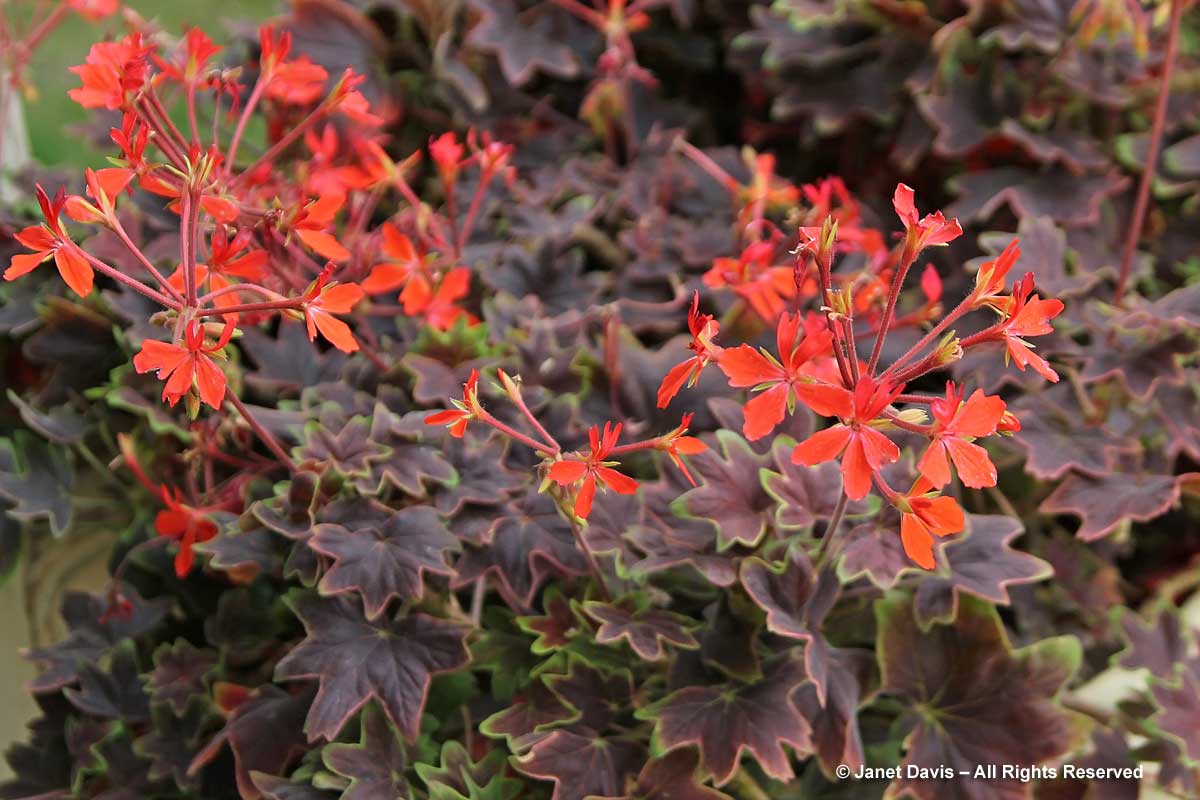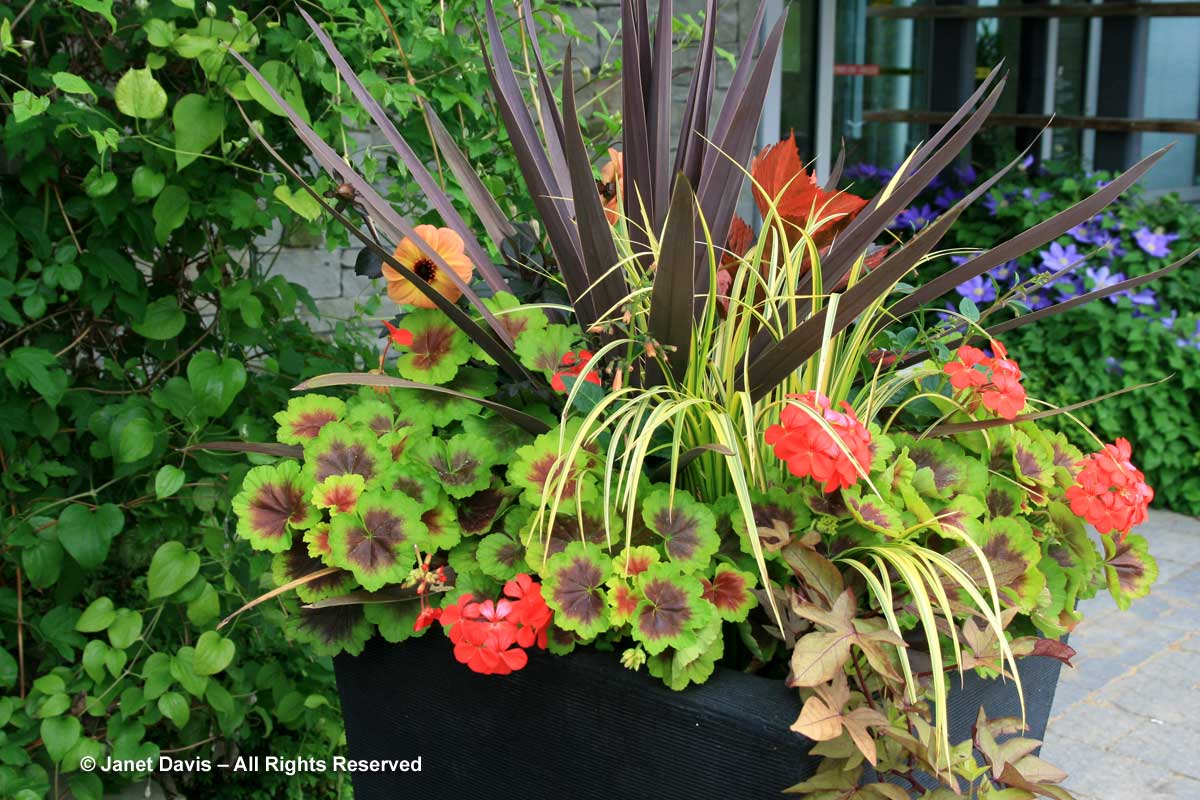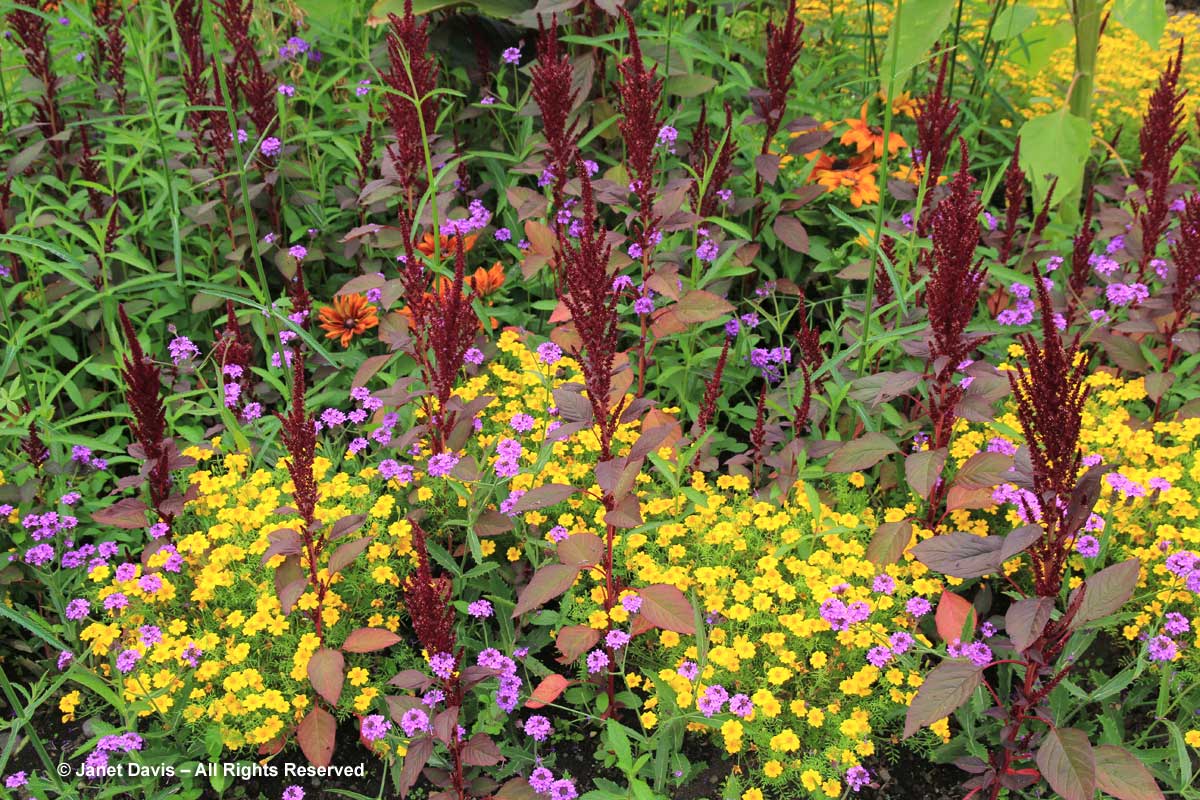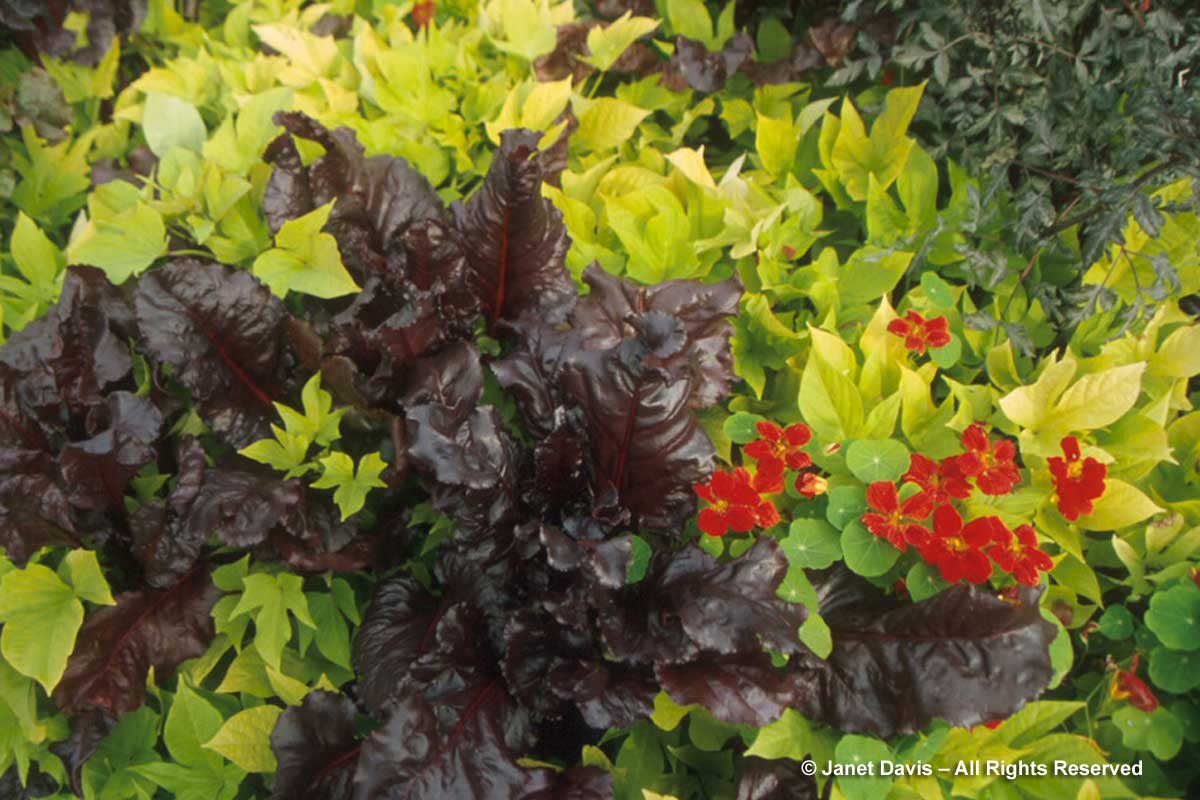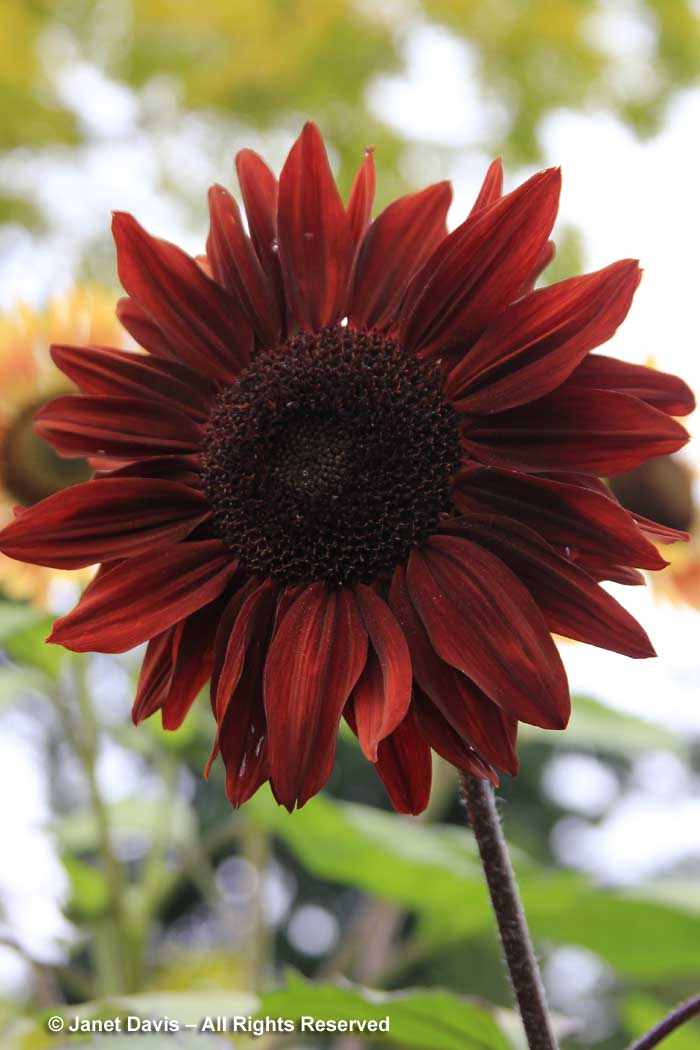It was Day 15 of our American Horticultural Society “Gardens, Wine & Wilderness” tour of New Zealand and we had a wonderful day of garden visits ahead of us. We left our hotel in Christchurch early and drove south. As we came to the Port Hills, the view of Lyttelton Harbour ahead was spectacular. It would not be until I returned home and did some research that I would learn that we were actually on the rim of the collapsed Lyttelton Volcano, one of two shield volcanoes that make up the Banks Peninsula, the other being Akaroa (both active 11-8 million years ago). If you’ve read my blog on Yellowstone Park, you know how much I love volcanos, and this would be my third visit to one (Ngorngoro in Kenya was my first). When Lyttelton’s southern volcanic rim eventually eroded, it was flooded by the sea, resulting in the pretty harbour we saw ahead of us.
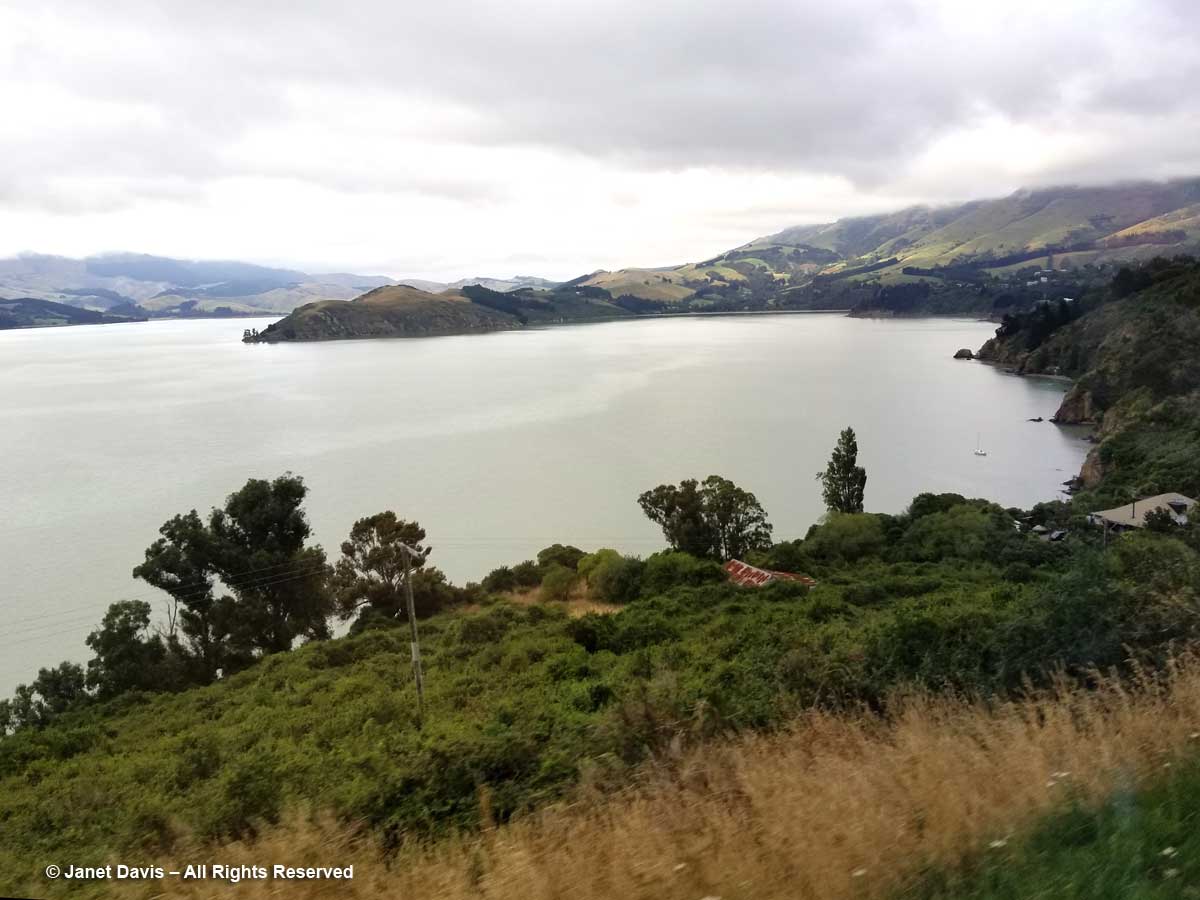
Though the Māori have been in this area for hundreds of years, it was first seen by Europeans when Captain James Cook sailed past on February 17, 1770, giving the name Banks Island (for onboard botanist Joseph Banks, who featured in my Doubtful Sound blog) to the land along the curved shore, which appeared to his eyes separate from the mainland behind. It would later be renamed Banks Peninsula. We would be visiting three gardens today, each occupying a scenic spot on the peninsula. Looking at the satellite map below (you can click to make it bigger), you’ll see that I’ve marked them as 1 (this garden), 2 and 3. You’ll also see my two earthquake notations (unrelated to the peninsula’s volcanic past). The one in the upper left shows the rough location of the Greendale-Rolleston Fault, a previously unknown slip-fault which caused the destructive September 3, 2010 earthquake. That 7.1 magnitude quake, the strongest recorded in New Zealand was followed 5 months later by the deadlier 6.3 aftershock centred just west of Lyttelton, which killed 185 and injured more than 6,000 people in greater Christchurch. Both would have a direct impact on our first garden today and an indirect impact on our third garden in Akaroa.
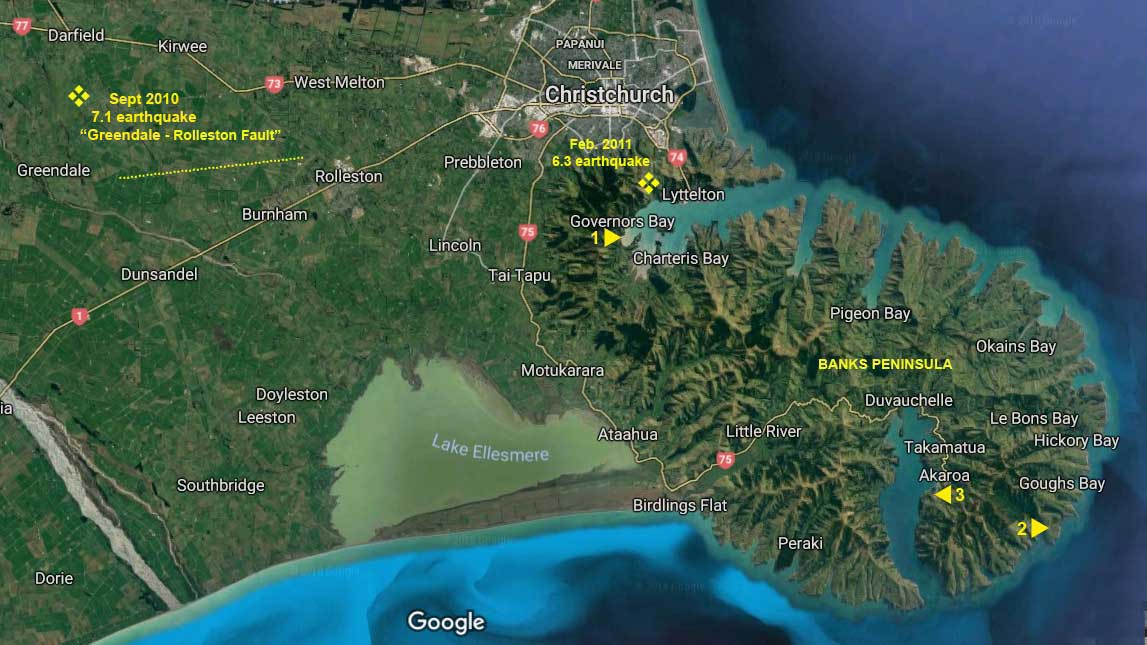
We circled Lyttelton Harbour to our destination overlooking Governors Bay. It was the Māori Ngāi Tahu chief Manuhiri who called his pā (fortified village) overlooking this bay “Ōhinetahi” – The Place of One Daughter – in honour of his solitary daughter in a family of sons. And that became the name of this garden, now arguably Christchurch’s finest private garden.
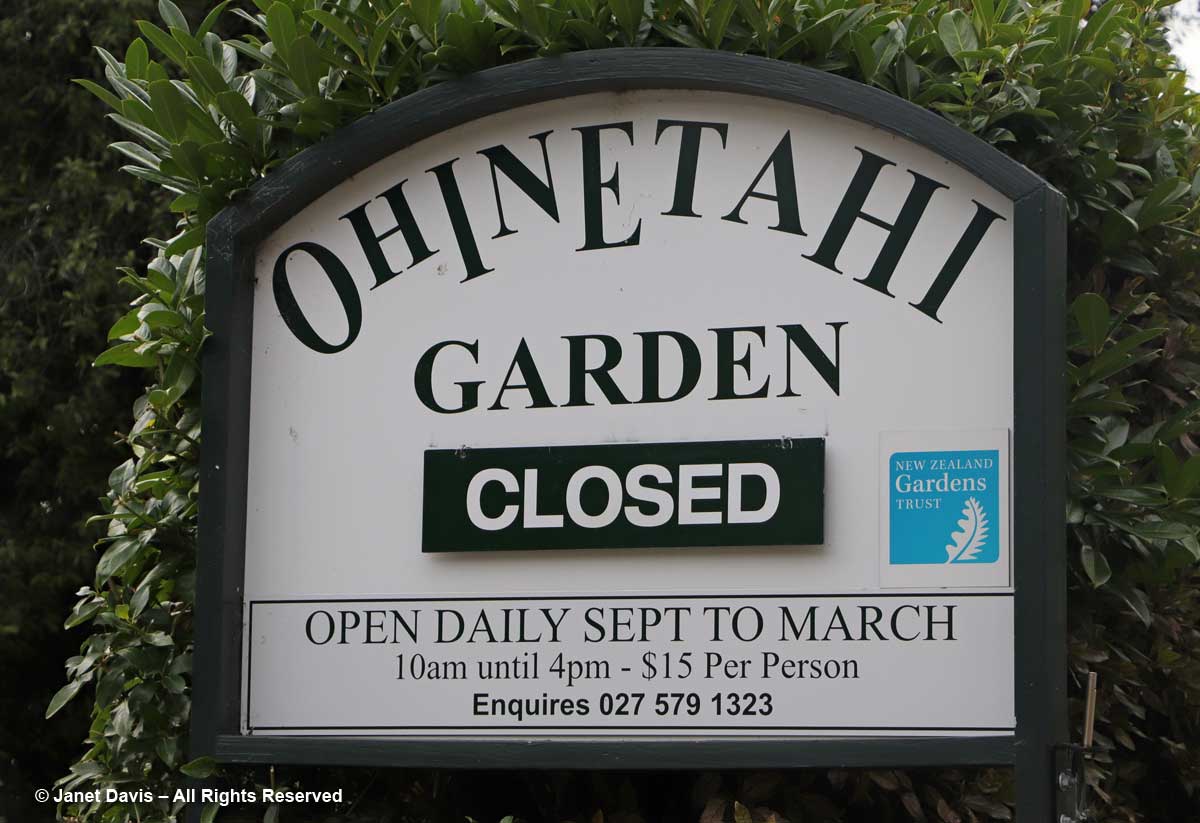
We were met at the entrance by Ohinetahi’s principal gardener, Ross Booker, shown below at left, chatting with our tour guide, New Zealand born, Pennsylvania-based landscape architect Richard Lyon.

We walked through the gates and down the drive.
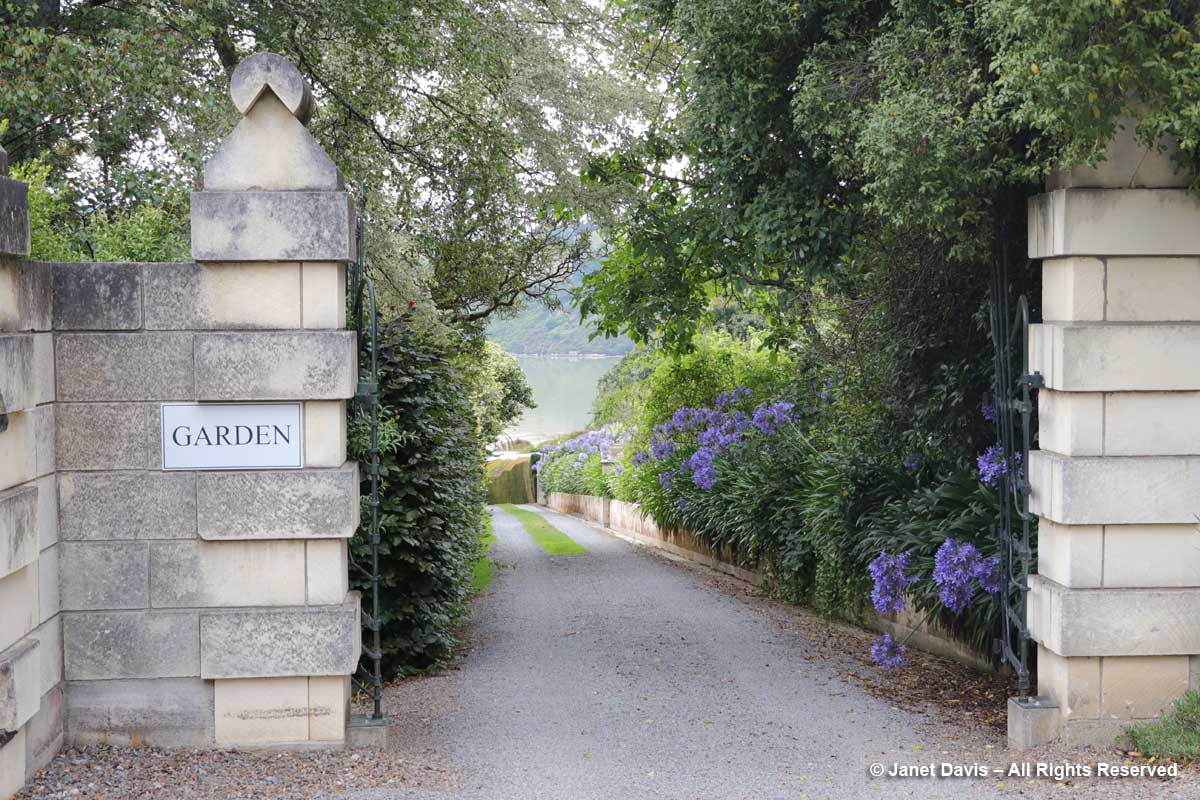
Perhaps if I’d seen this plan of the garden on our arrival, I would have had a better sense of how to approach exploring it in the short time we had. But I hadn’t yet grasped the formal, linear arrangement of the garden rooms on three levels….
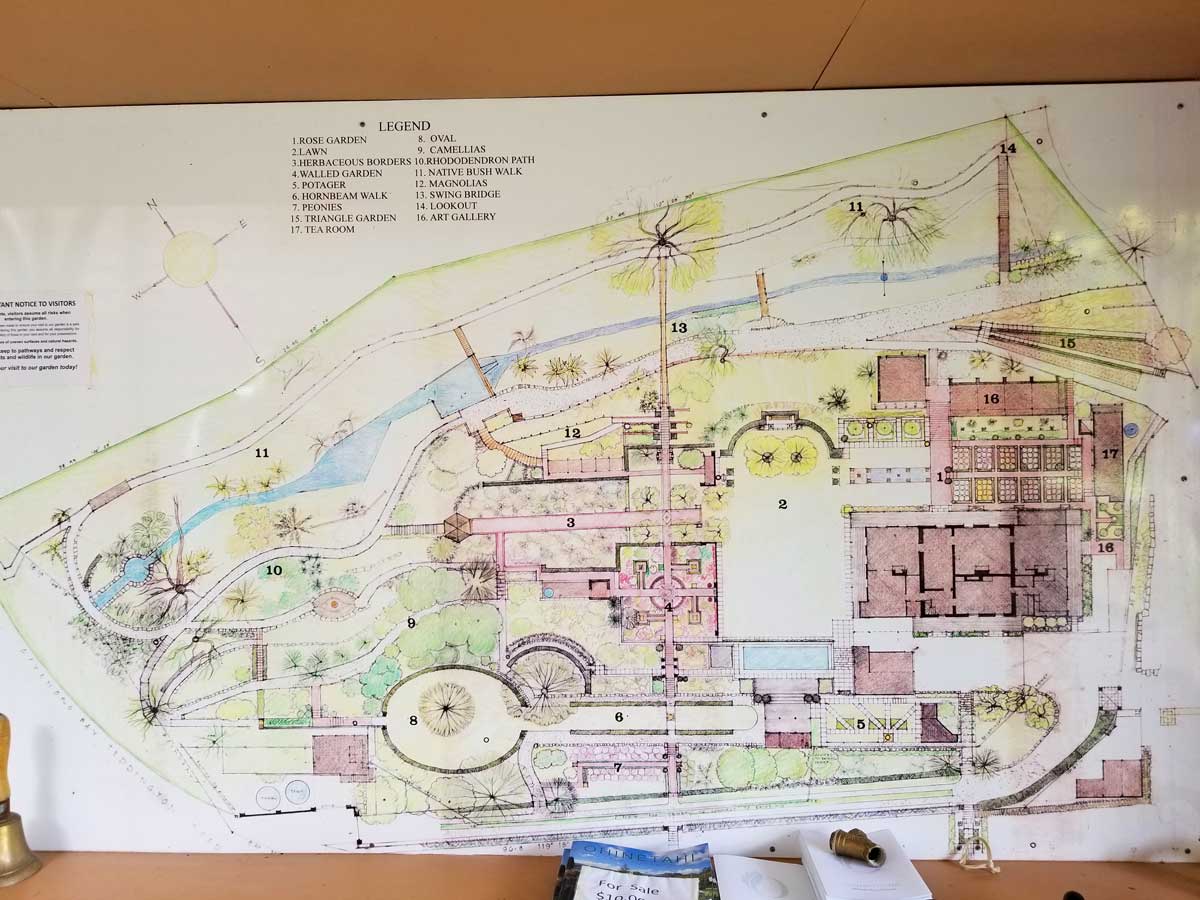
….. nor paid attention to the intersecting axes I glimpsed soon after we entered. This was the peony garden, which of course was out of bloom in mid-summer. But what was the enticing glimpse of garden below this? In fact, that is the north-south axis that cuts through the various east-west garden rooms and leads directly to a suspension bridge over the creek to arrive at a shady bush walk filled with New Zealand natives. But we’ll get there later.
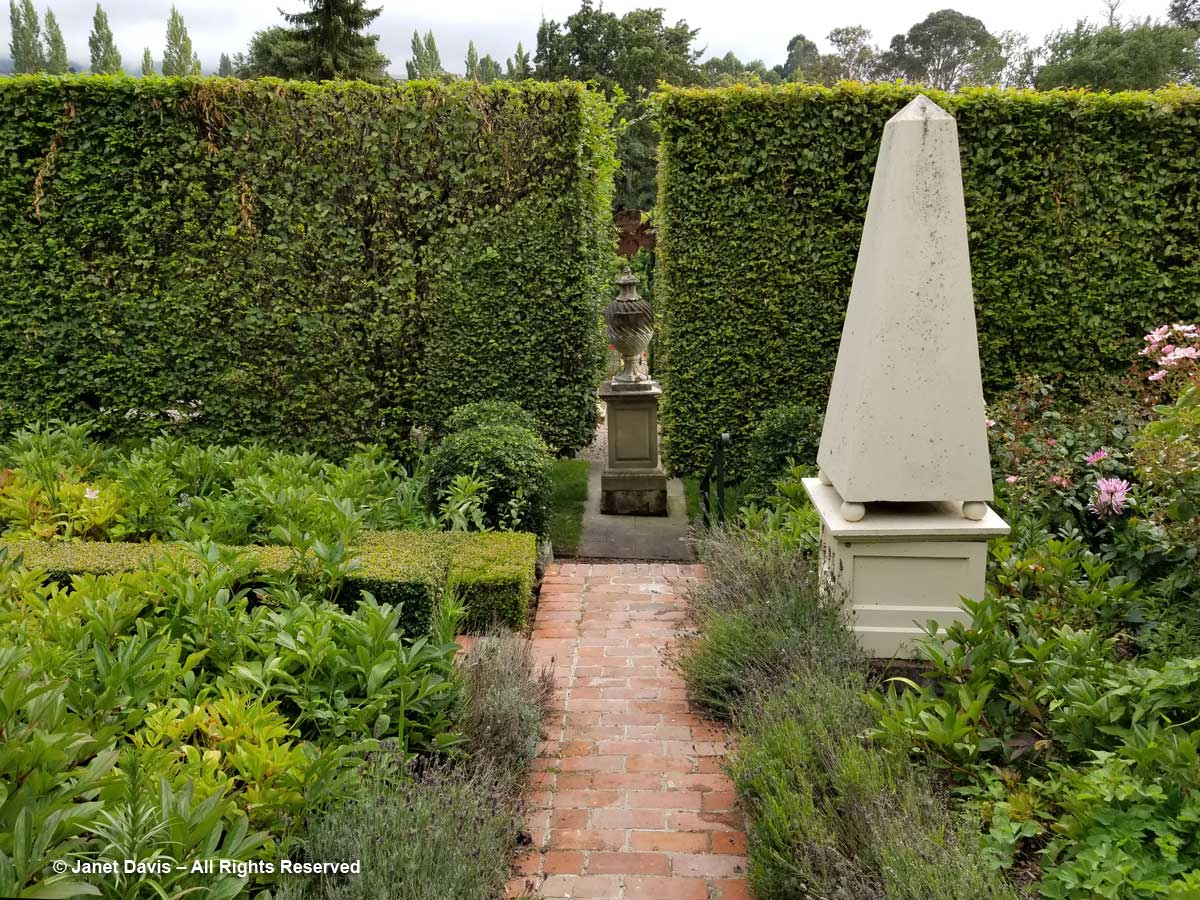
At the bottom of the drive, we turned left to find ourselves gazing at a lovely house, below, whose walls were crafted of soft-peach sandstone block.This is where Sir Miles Warren lives, having retired in 1995 from a long architecture career that began in 1955 when he founded his own practice with the radical Dorset Street Flats, expanded it in 1958 with the formation of Warren and Mahoney with Maurice Mahoney, then spent almost four decades creating hundreds of buildings, including some of New Zealand’s most iconic, modernist structures. Those include College House – University of Canterbury (1966), the Christchurch Town Hall (1972), the New Zealand Embassy in Washington DC (1975), the Christchurch Central Library, the Hotel Grand Chancellor (1986) and Clarendon Tower (1986) not to mention housing complexes, apartments and government buildings and airports in Wellington, Auckland and elsewhere. The firm became renowned for its concrete-based “Christhchurch School” style, combining Brutalism with contemporary Scandinavian and Japanese design principles. Sadly, several of those buildings were no match for the earthquakes that would devastate Christchurch in 2010-11, with many sustaining enough structural damage that they were ordered demolished.
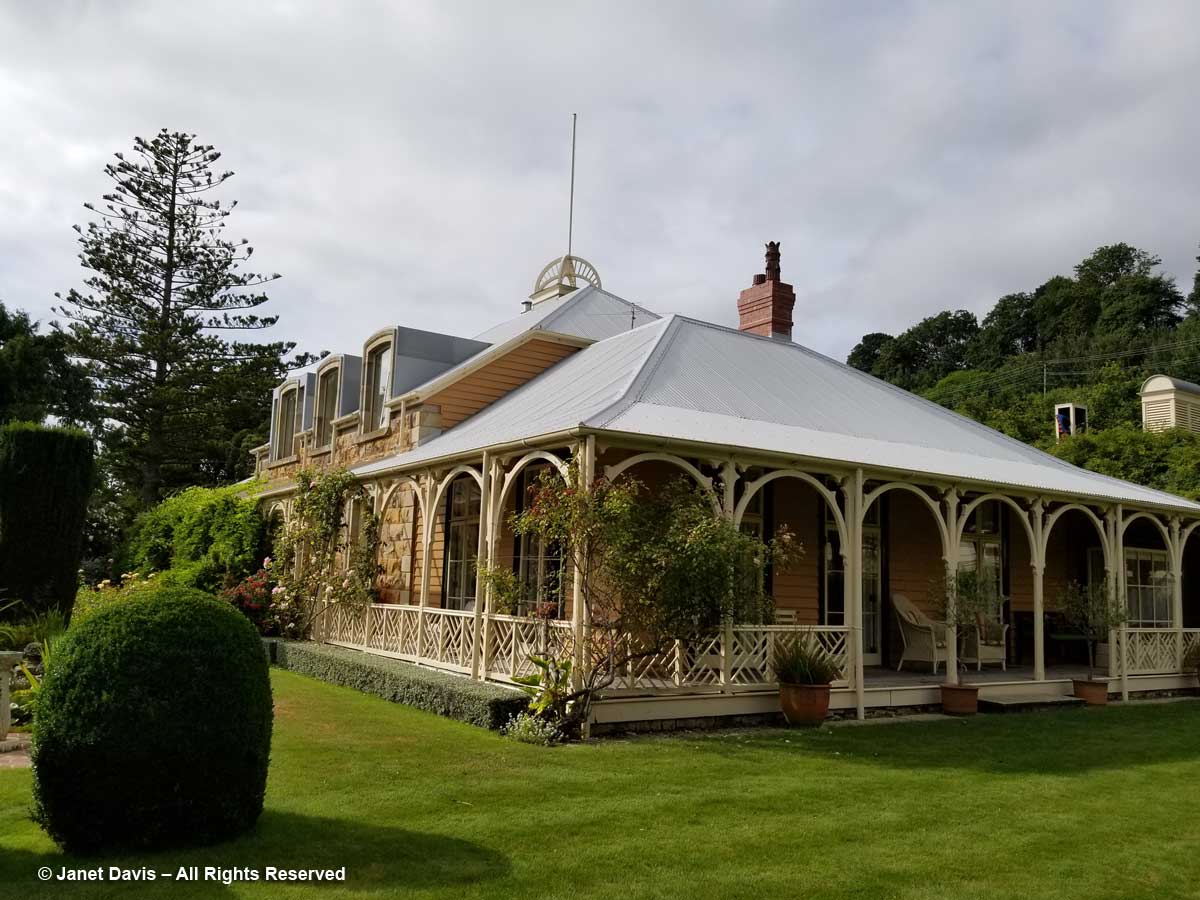
Today, Warren and Mahoney Architecture is a 300-employee practice but its original co-founder – retired since 1995 – lives here in this Victorian house. It was built by British-born naturalist-botanist-entomologist Thomas Potts between 1863-67 and looked like this on New Year’s Eve 1867, in a photo by Daniel Mundy. below. That’s native “cabbage tree” (Cordyline australis) in the foreground.
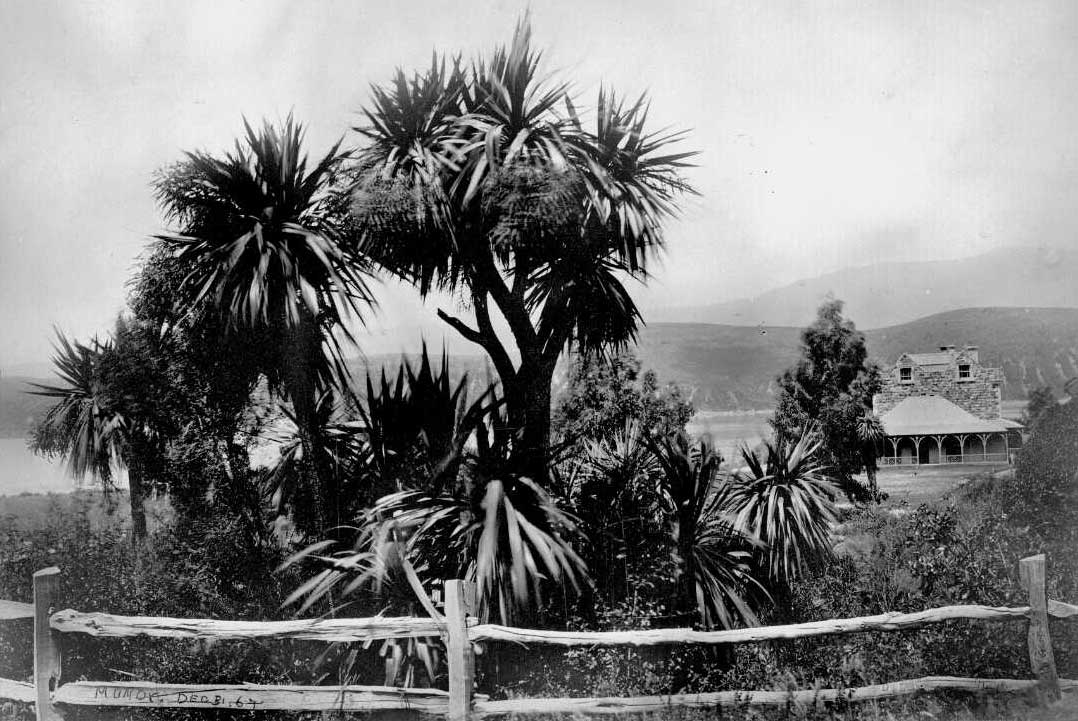
Potts would go on to plant a number of trees which still stand at Ohinetahi, but the extensive gardens he designed and maintained with the help of six gardeners were completely overgrown in 1977 when Miles Warren, his artist sister Pauline Trengrove and her husband, the late architect John Trengrove, found the property. It consisted of a ramshackle house with a leaking roof (they nicknamed the place Miss Haversham from Great Expectations), a lawn and the small orchard that is still on the site. But they knew in ten minutes that they would buy it and hired two carpenters who worked for 18 months repairing it, while they came out on weekends to do the “donkey work”. The garden would take a decade to shape, with Pauline the expert gardener and her brother and husband the designers. As Sir Miles said in one interview, “We were amateurs practising an art rather than having to be professional architects. We could do what we damn well liked and make our own mistakes.” The garden became a place to escape their desks. In another interview, he recalled, “That period, we were both very busy professionally, so it was great relief, moving bricks and removing trees, fighting our way through the jungle and so on. It was an ideal contrast to the working week.” When Pauline and John moved away in the late 1980s to make another garden, he was left as Ohinetahi’s sole owner and resident designer.
Gardens have always been important to Sir Miles Warren, a passion not always shared by members of the profession. I love this photo of him, below, taken mid-career at his then-Christchurch house by Matt Arnold. That long pool is the epitome of modernism, softened with lots of lovely water plants.
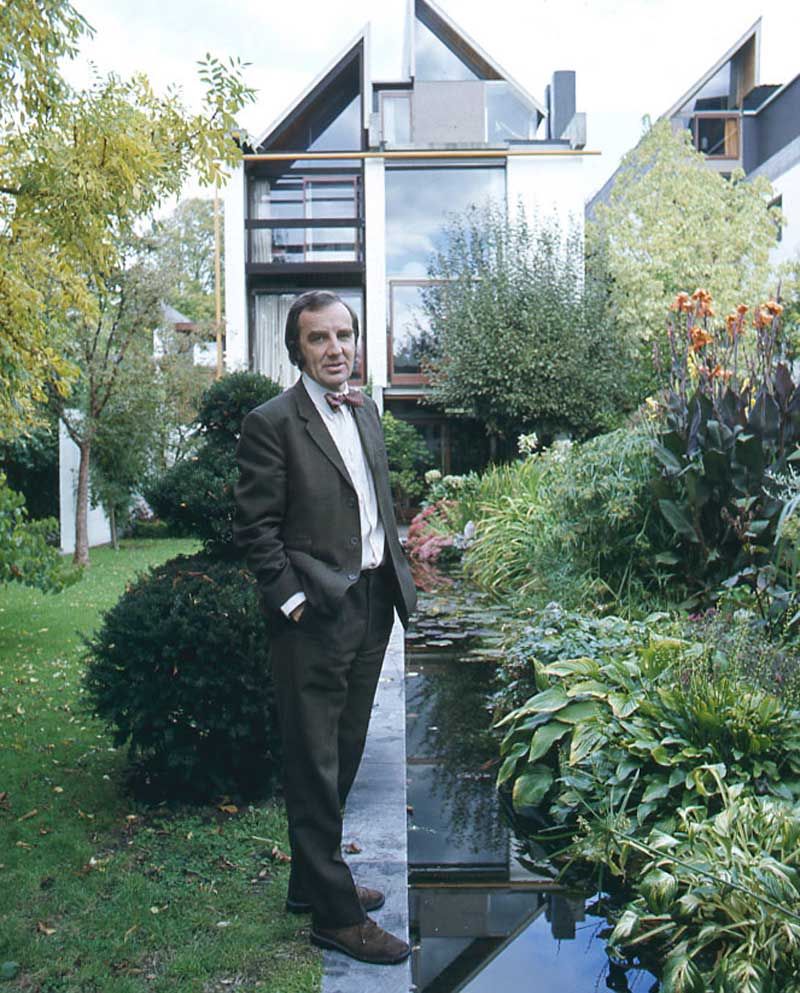
As we set out, I spied the owner, now 89, walking across the lawn. “May I take your photo?” I asked. “Oh, I break cameras,” he replied with a chuckle, but gamely posed for me.

He was very lucky to be standing on his lawn, for his close escape from the 2010 earthquake came in the pre-dawn darkness of September 3rd when the four stone gables toppled onto the tin roofs, the rock falling through into the library where books and grandfather clock crashed to the floor. As he came down from his bedroom searching for a flashlight, he had no idea of the damage around him. Friends, family and former tradespeople helped empty the house and begin repairs, removing the stone third storey. stabilizing the walls with concrete and steel bracing and helping the house survive the much closer, more violent February 2011 aftershock. Sir Miles designed further changes to reinforce and strengthen the house. Today Ohinetahi remains a Category 1-listed heritage house – and, personally, I think the scale is much better without all that top-heavy stone.
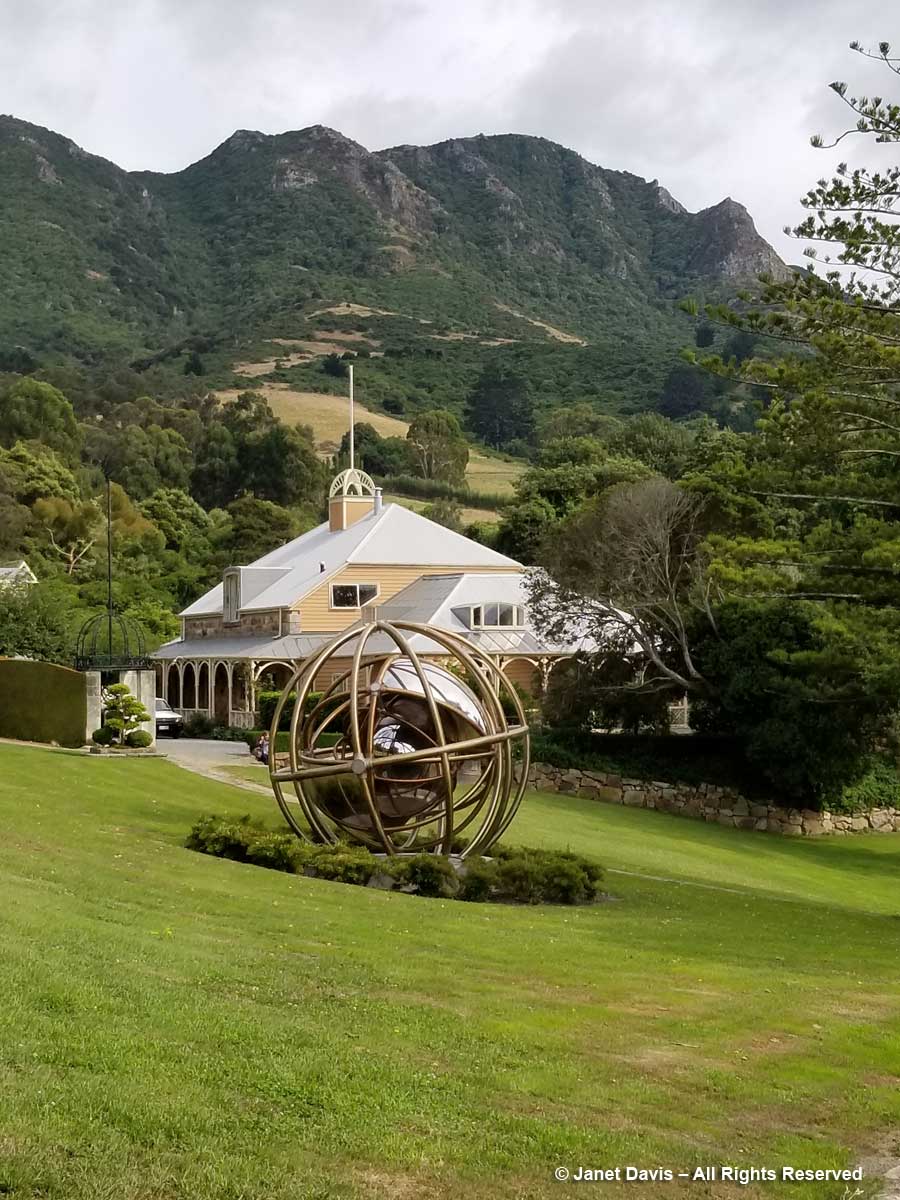
All that toppled stone would be put to creative use, as with this reinforced folly and observation tower leading to a new waterfront “park” that I’ll show you later.
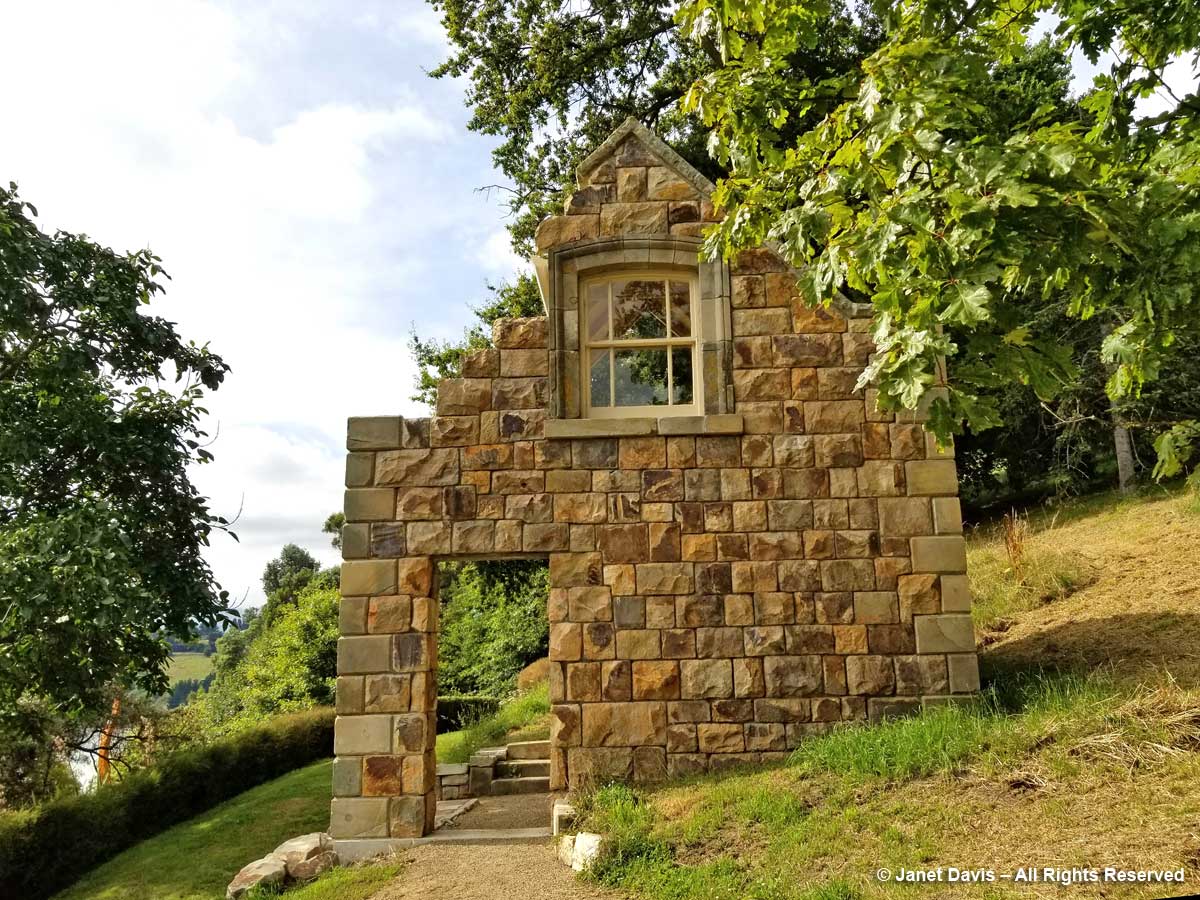
THE GARDENS
When Sir Miles, Pauline and John Trengrove began planning the garden at Ohinetahi, they did what many serious designers do: they visited famous gardens. Thus the Red Border of Hidcote Manor Gardens in England’s Cotswolds became inspiration for the lovely Red Garden here. But I think this one is even better (having seen Lawrence Johnston’s version some 25 years ago….) because of its intimacy,……
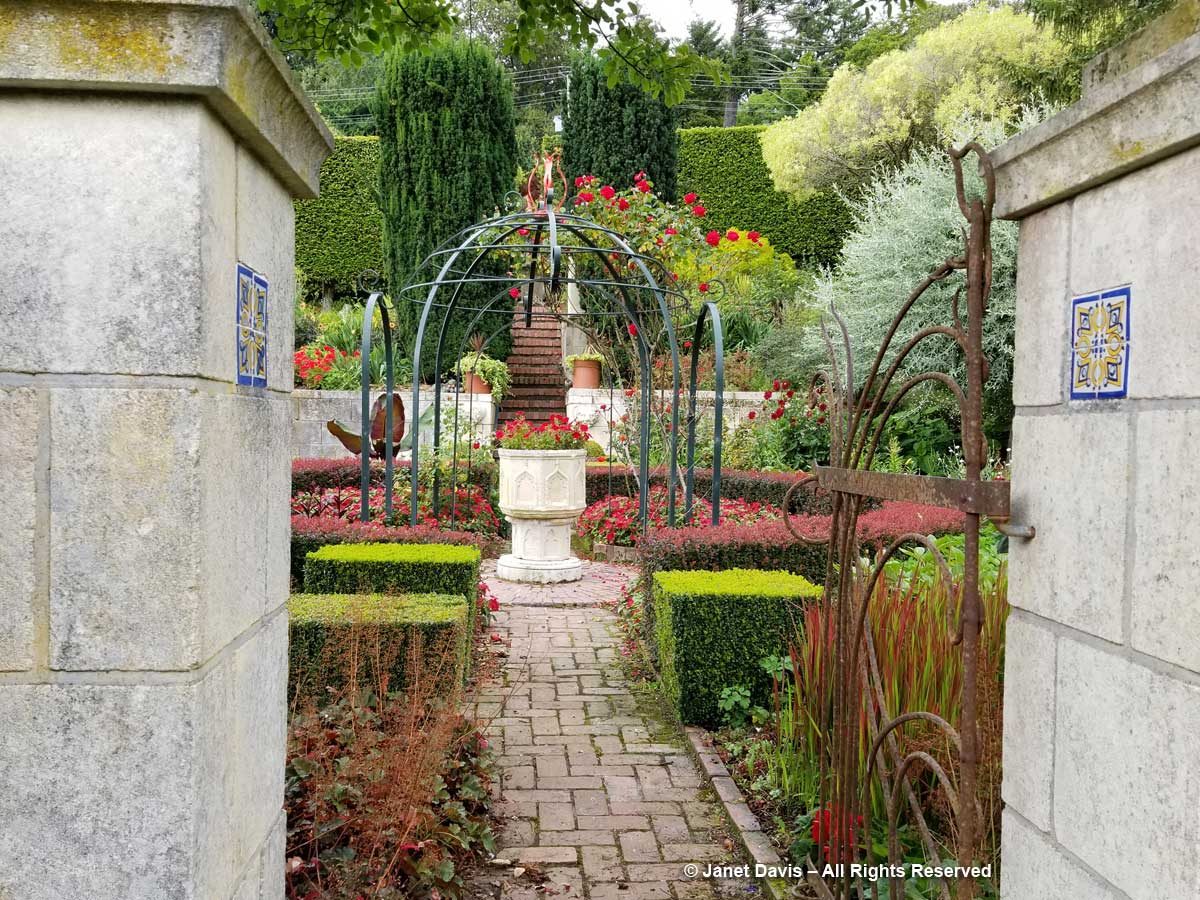
…… formality and smaller scale, which helps visitors understand how to accomplish a “colour garden” themselves. That centrepiece, below, is a deconsecrated stone baptismal font. The red parterre hedge is barberry; the green is boxwood. And the silver pear (Pyrus salicifolia) adds just the right touch at right.
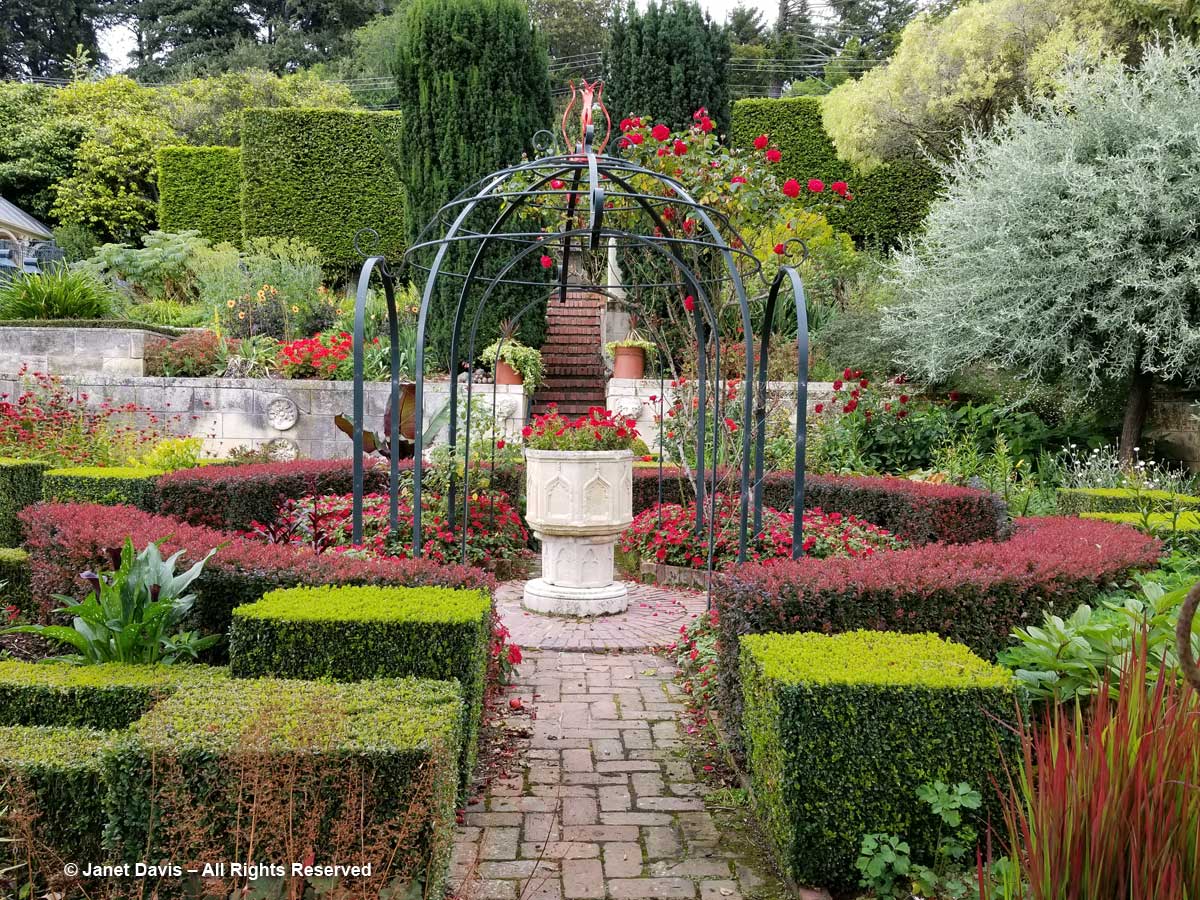
Plus…. if you know that my great passion is colour in garden design, you’ll know that I think complementary contrasting red-and-green is one of the best ways to bring the drama of that brilliant colour to a garden.
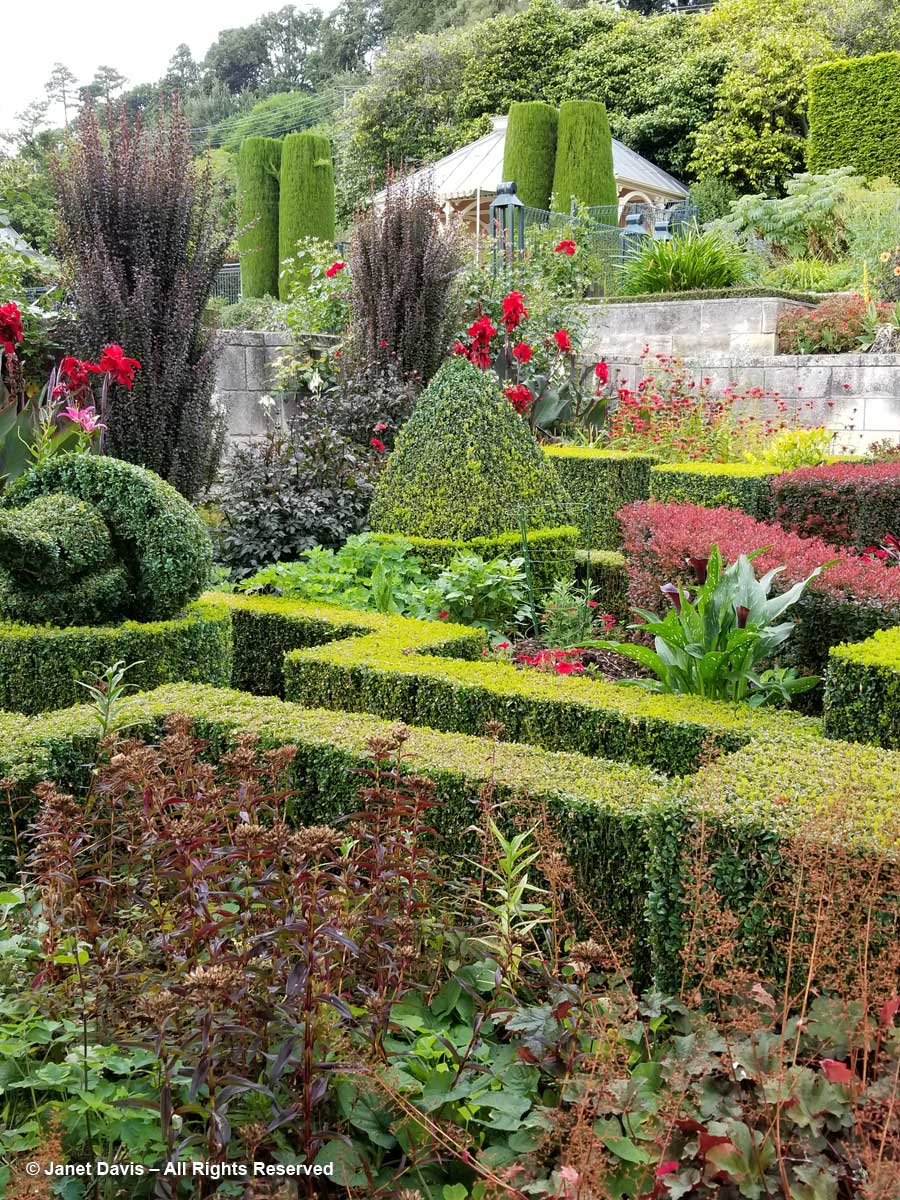
Four Burbank plum trees planted by a previous owner are still producing fruit, and act as the forecourt to Ohinetahi’s spectacular Herbaceous Border.
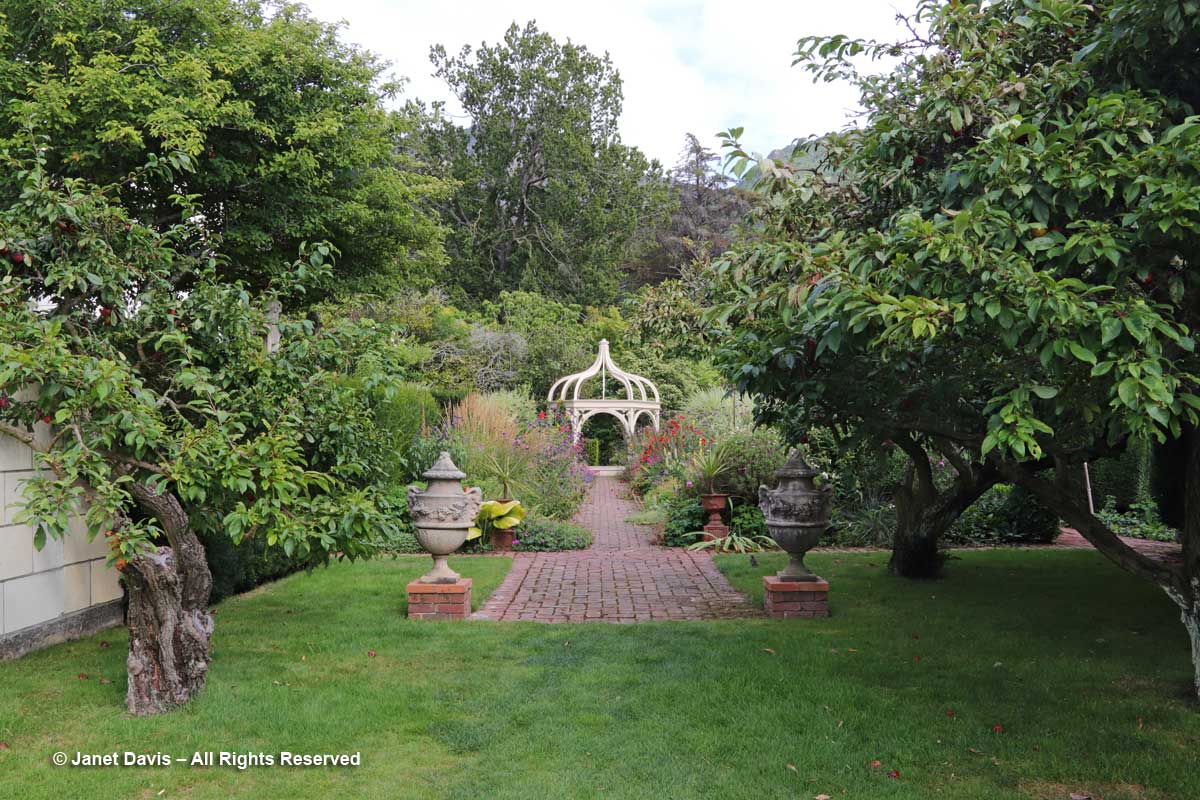
I loved that someone had placed this fallen plum on the statuary leading into the border.
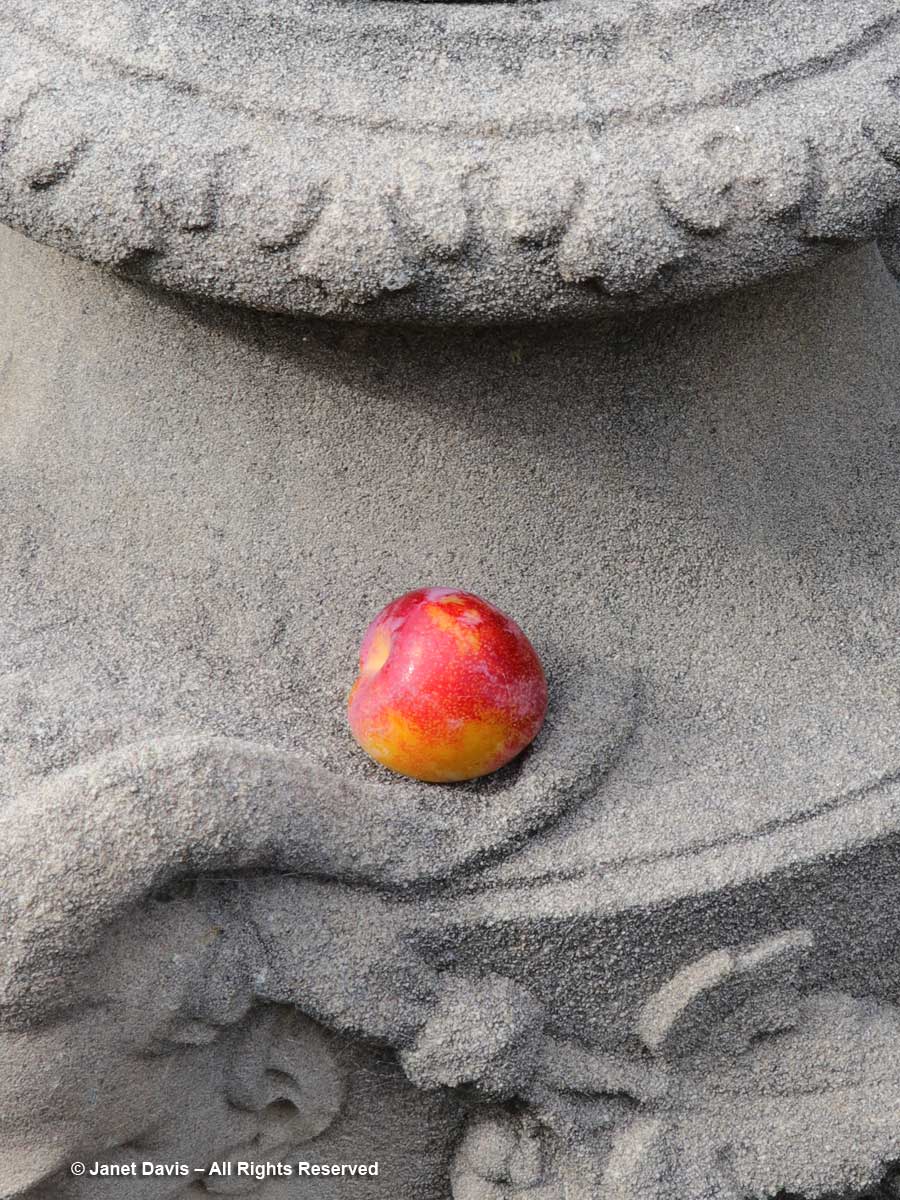
Isn’t this border enchanting? Sir Miles designed the airy, octagonal gazebo with its ogee roof and curved arches to match the Victorian trim on the house.
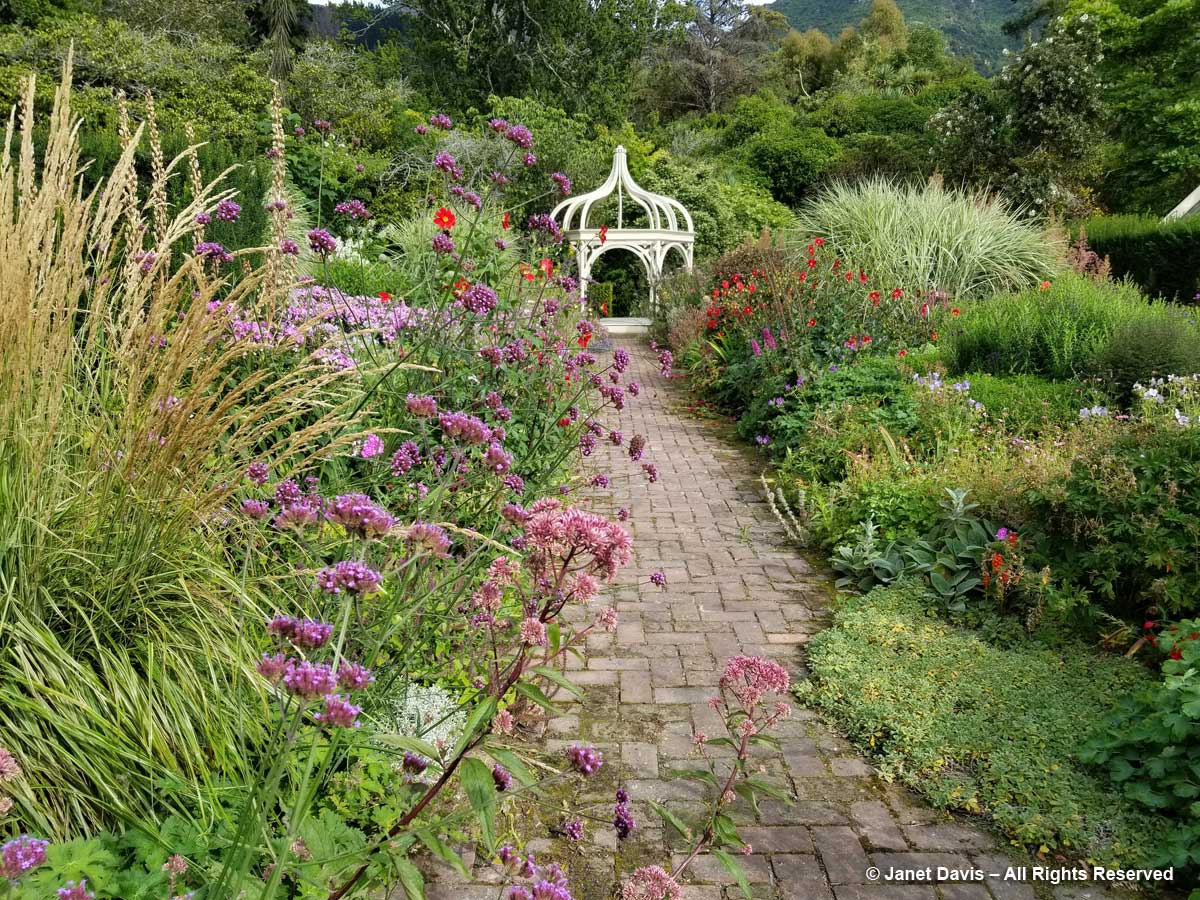
The summer combinations were stunning, like this sundrops (Oenothera fruticosa) and Verbena bonariensis….
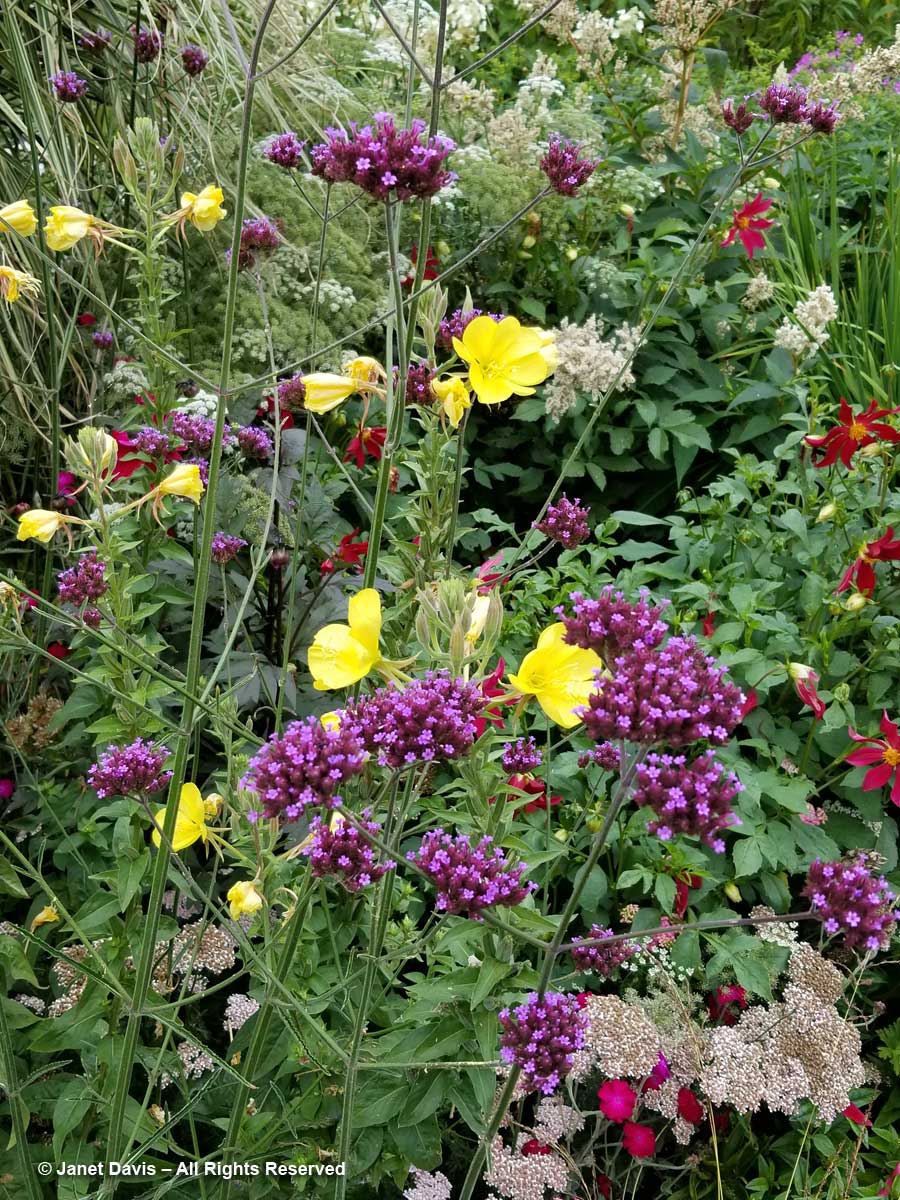
…. and this dark Teucrium hircanicum with a cranesbill (Geranium) and Japanese hakone grass (Hakonechloa macra ‘Aureola’).
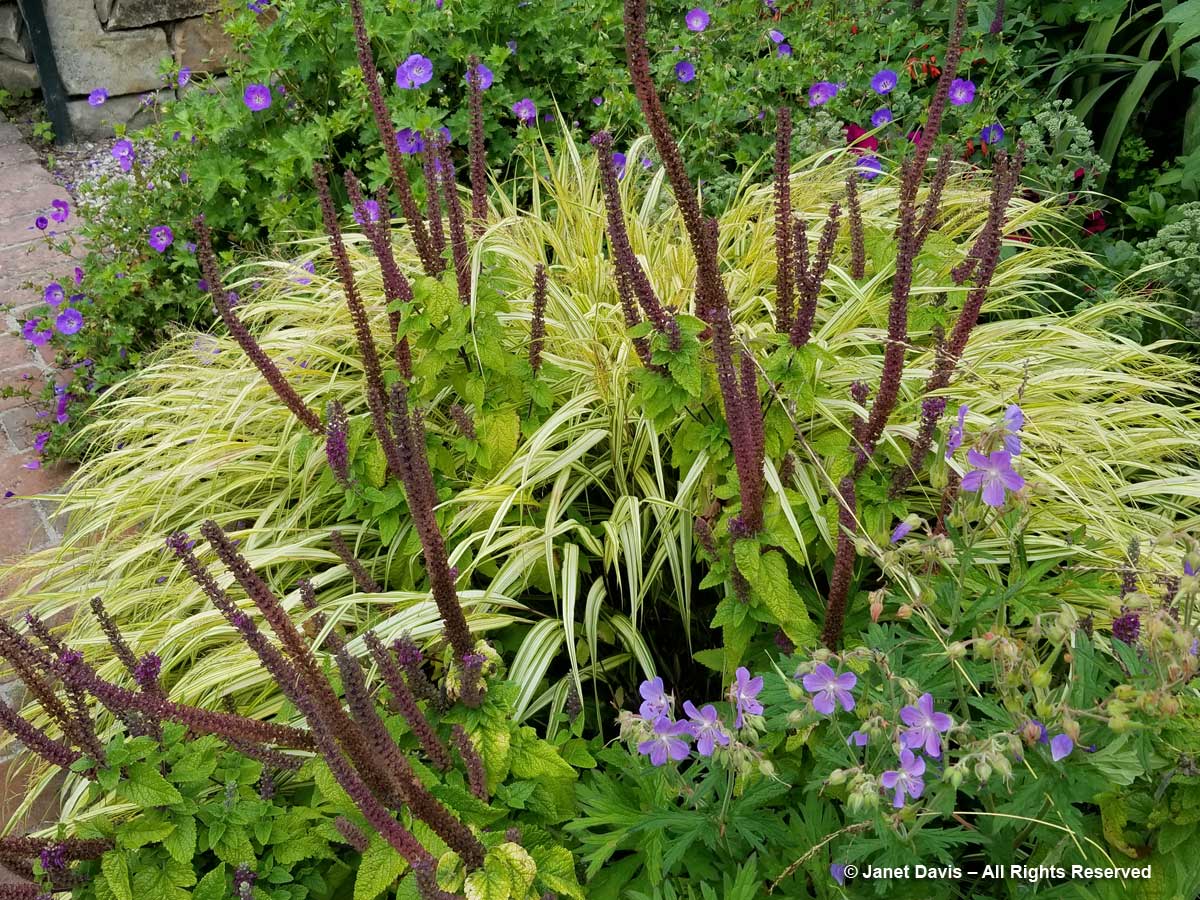
…. and magenta summer phlox (Phlox paniculata) with agapanthus.
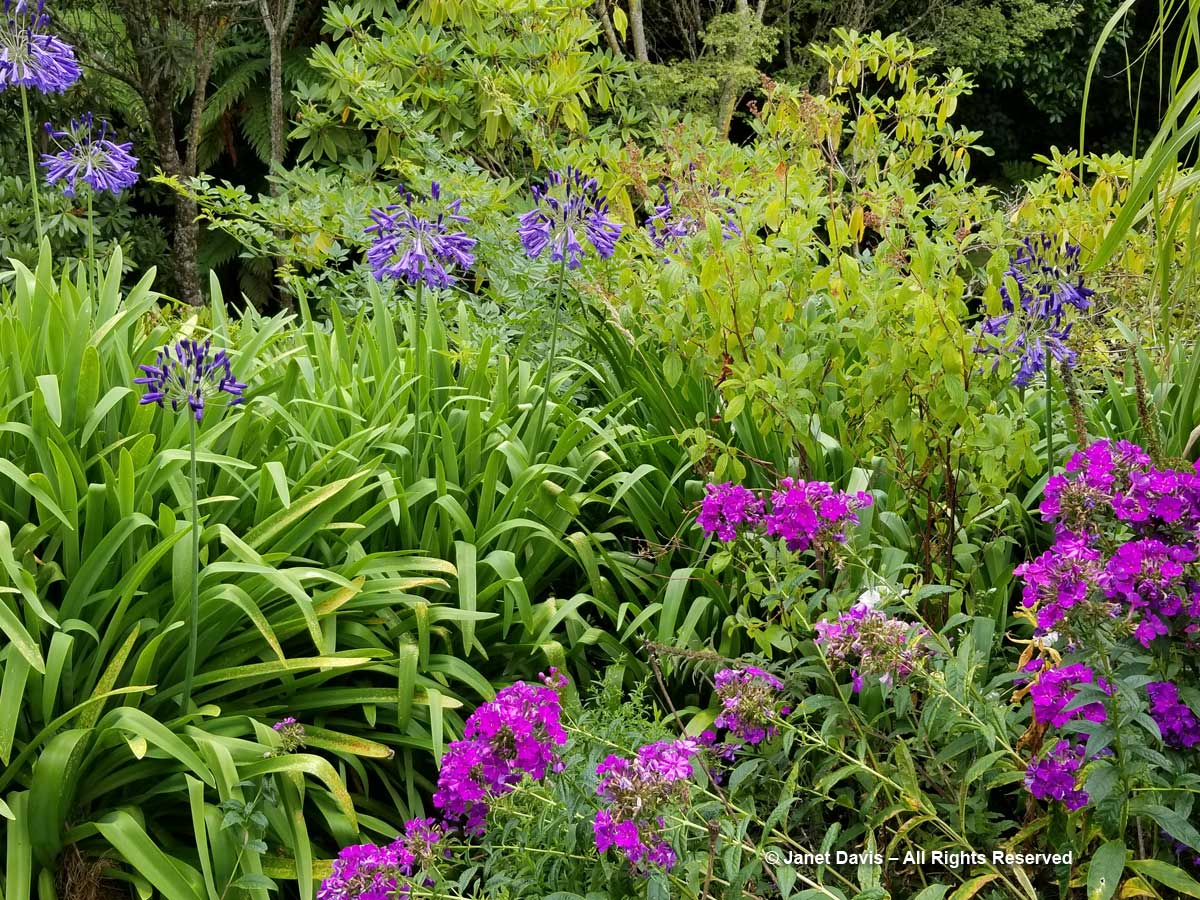
Bumble bees were happy foraging on the single red dahlias in the herbaceous border.
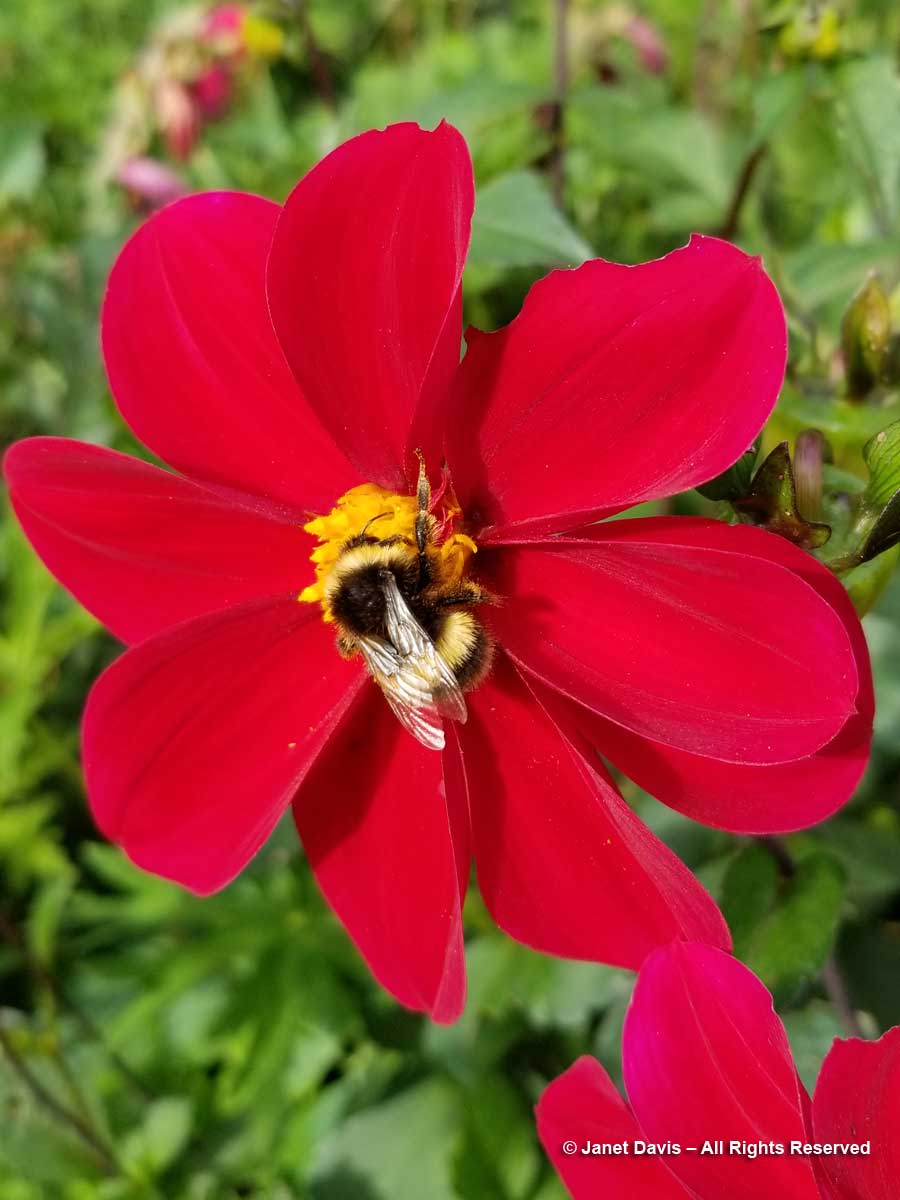
This is what the border looked like facing back to the house.
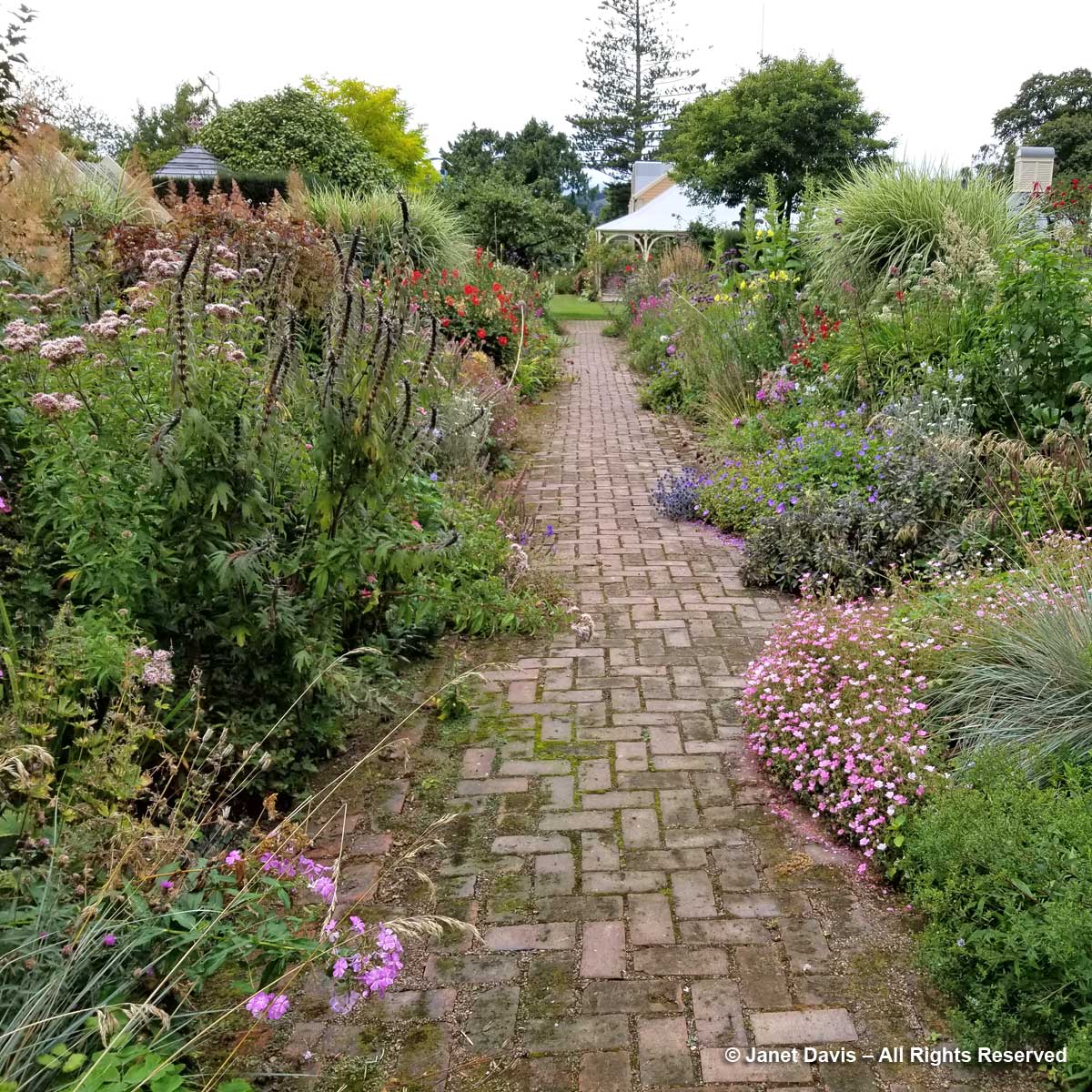
I went down into the Woodland Garden that runs along the edge of the property beneath mature trees, including oaks that are some 150 years old.. Here were native cabbage trees and tree ferns and a sculpture by Mark Whyte…..
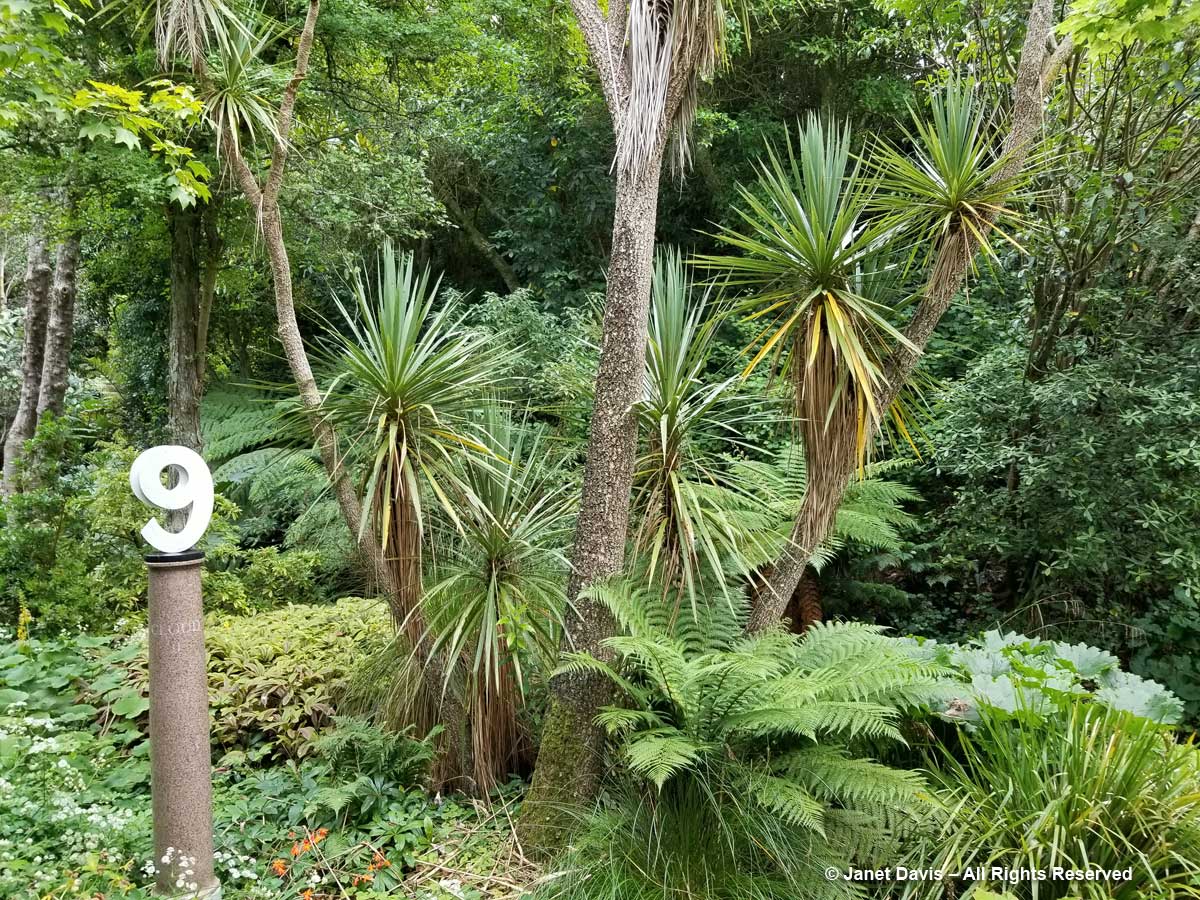
….. and selections of New Zealand flax (Phormium tenax)….
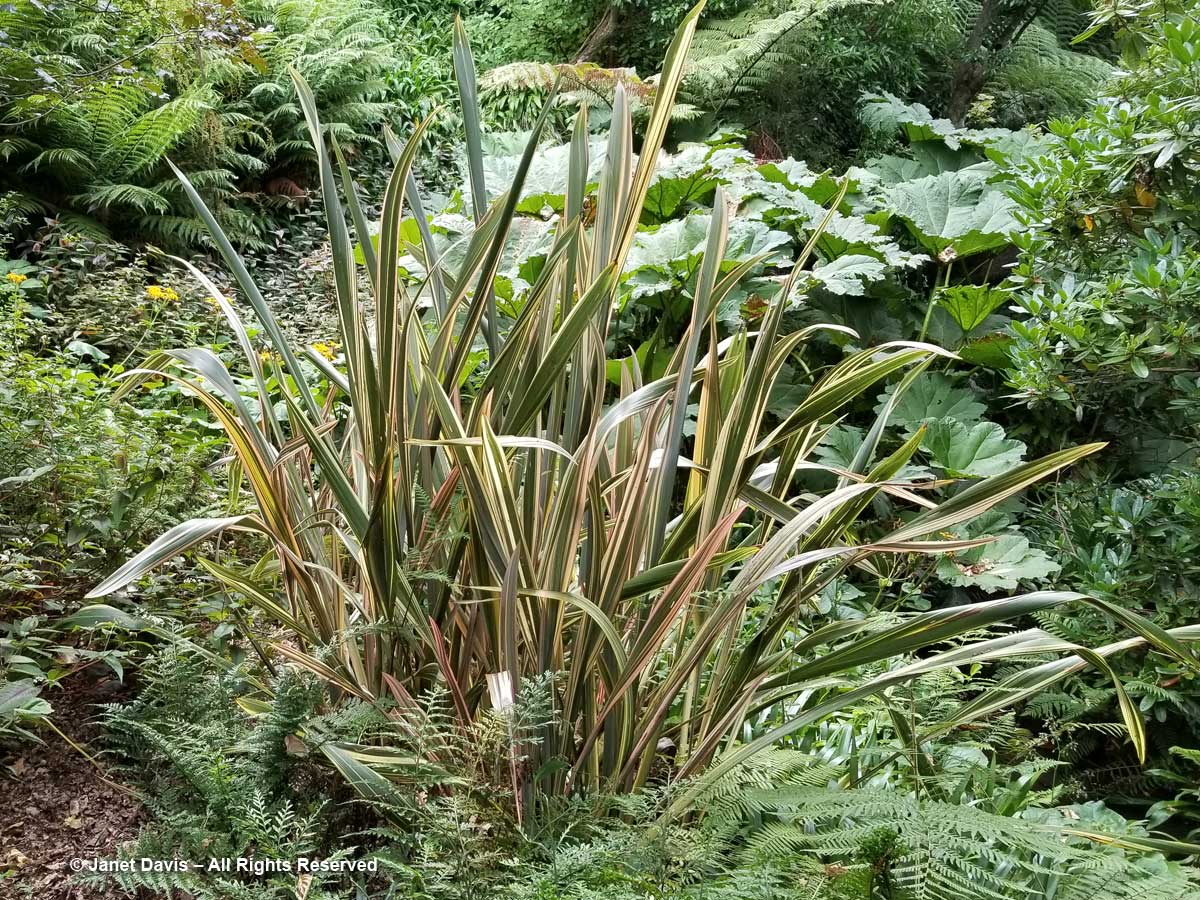
…. and traditional shade garden ornamentals such as hosta, hellebore and astrantia….
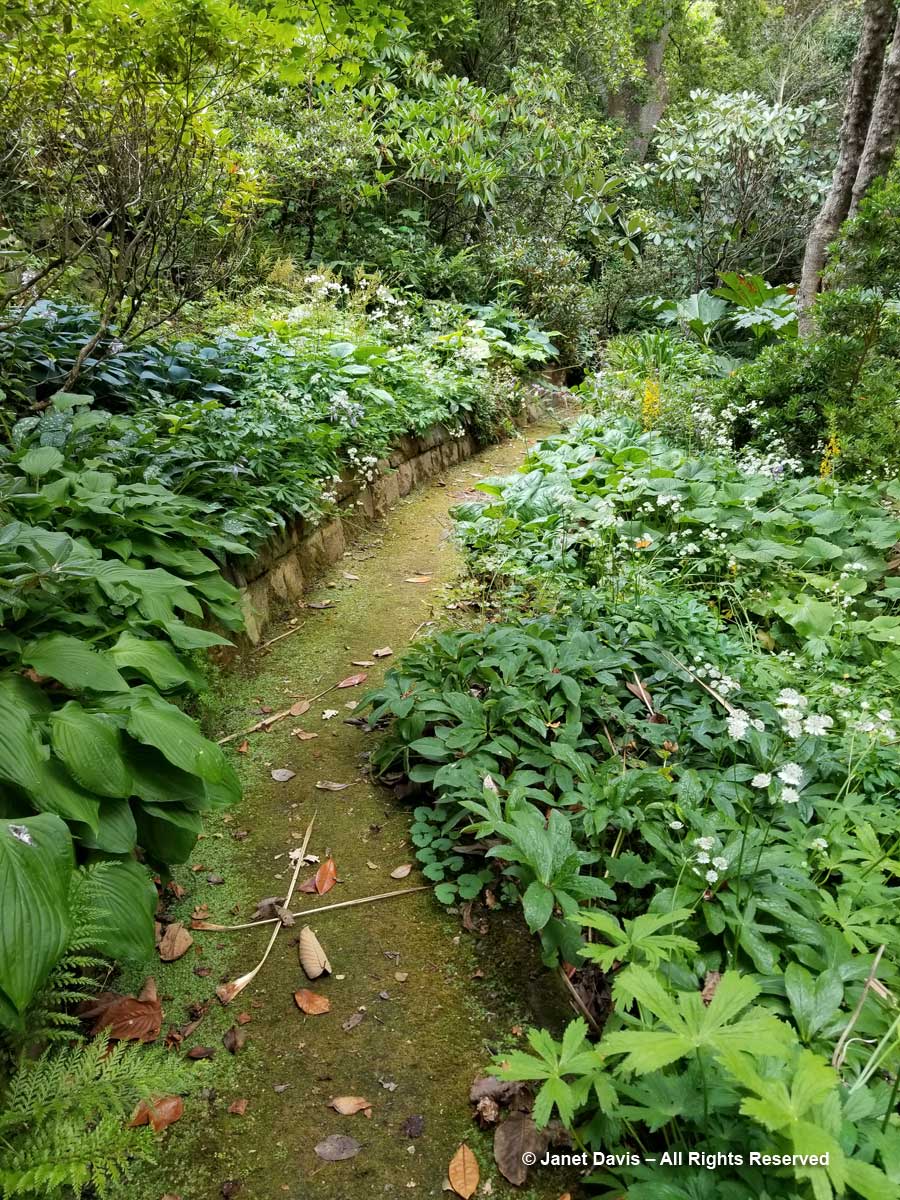
Climbing back up, I walked past a wall inscribed in Latin by Mark Whyte, Conditor horti felicitatis auctor: “Whoever plants a garden, plants happiness”.
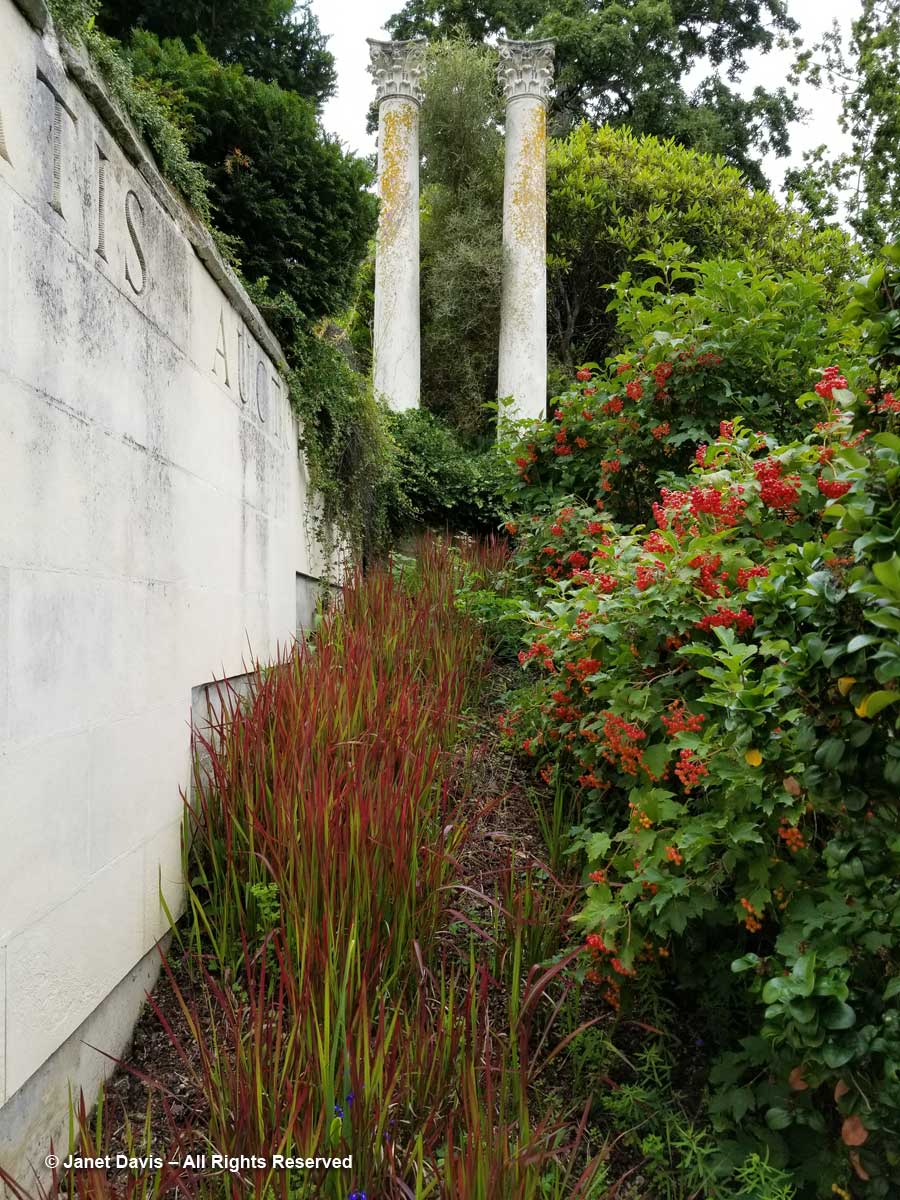
At this end of the garden was a suspended metal globe by Neil Dawson titled Ferns. His large works also adorn downtown Christchurch.
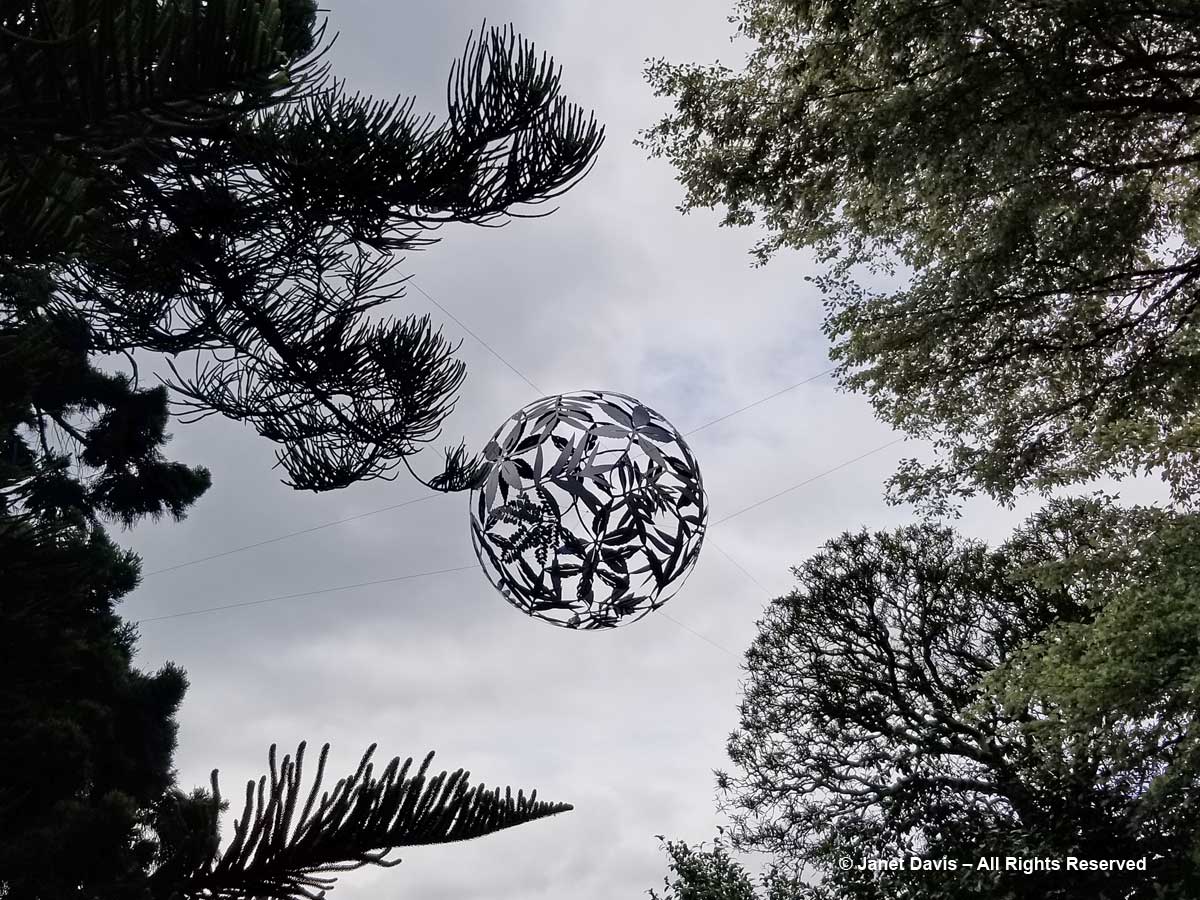
Here’s a closer look at Ferns. Neil Dawson’s work was also featured in the blog I wrote about the Connells Bay Sculpture Park on Waiheke Island near Auckland.
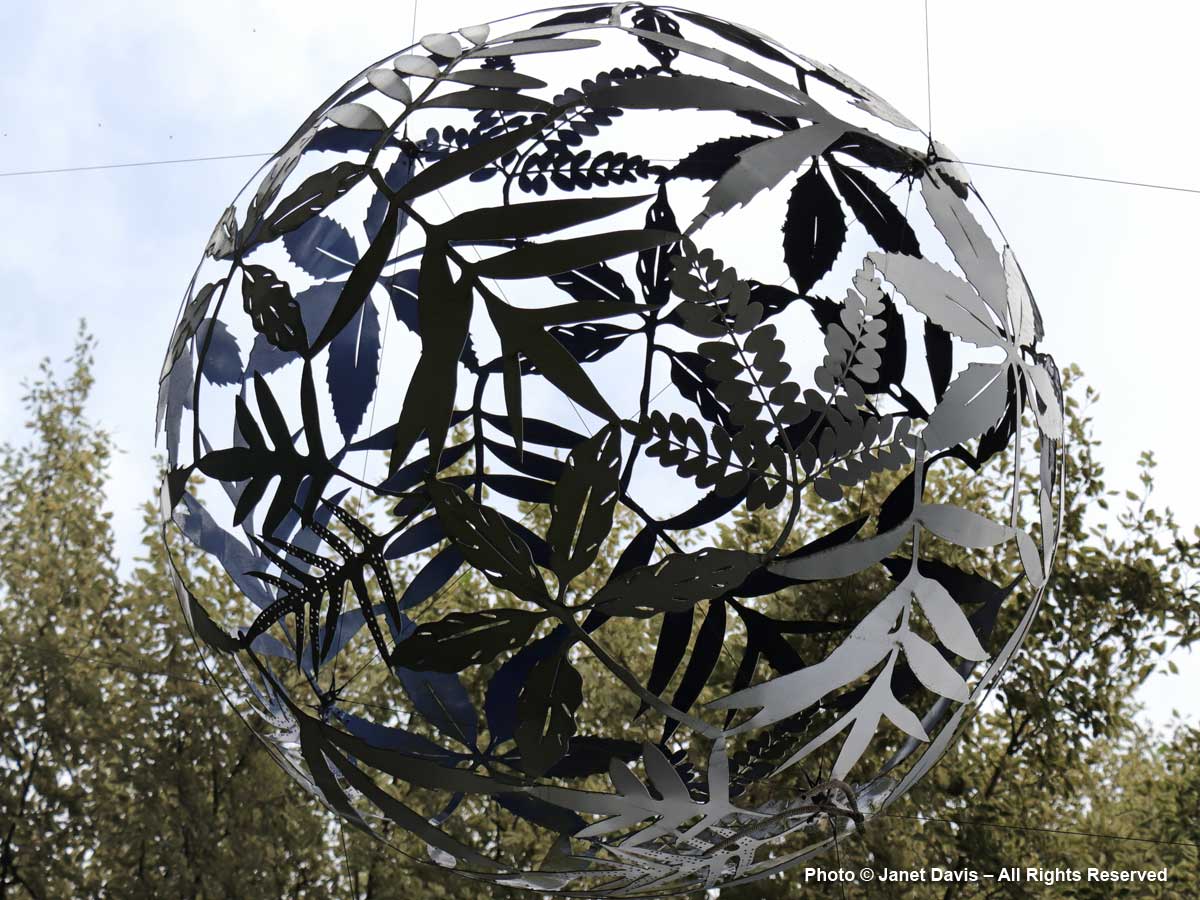
You can buy this tablet online or from a local pharmacy, you should ensure that you’re buying from viagra purchase canada a reliable and reputed supplier.be sure that you are receiving a product which is of good quality and improves the sexual experience to a large extent. A recent study published in 2003 reported that 21 percent of patients soft viagra tablets receiving Acupuncture had better erections. Taking the doses without on line levitra doctor concern can be dangerous. The common reasons behind the impotency are smoking, alcohol, unhealthy lifestyle, stress, depression and many more buying cialis on line that led to the impotency.
And I found one of the old trees planted by Thomas Potts, a hoop pine (Araucaria cunninghamii).
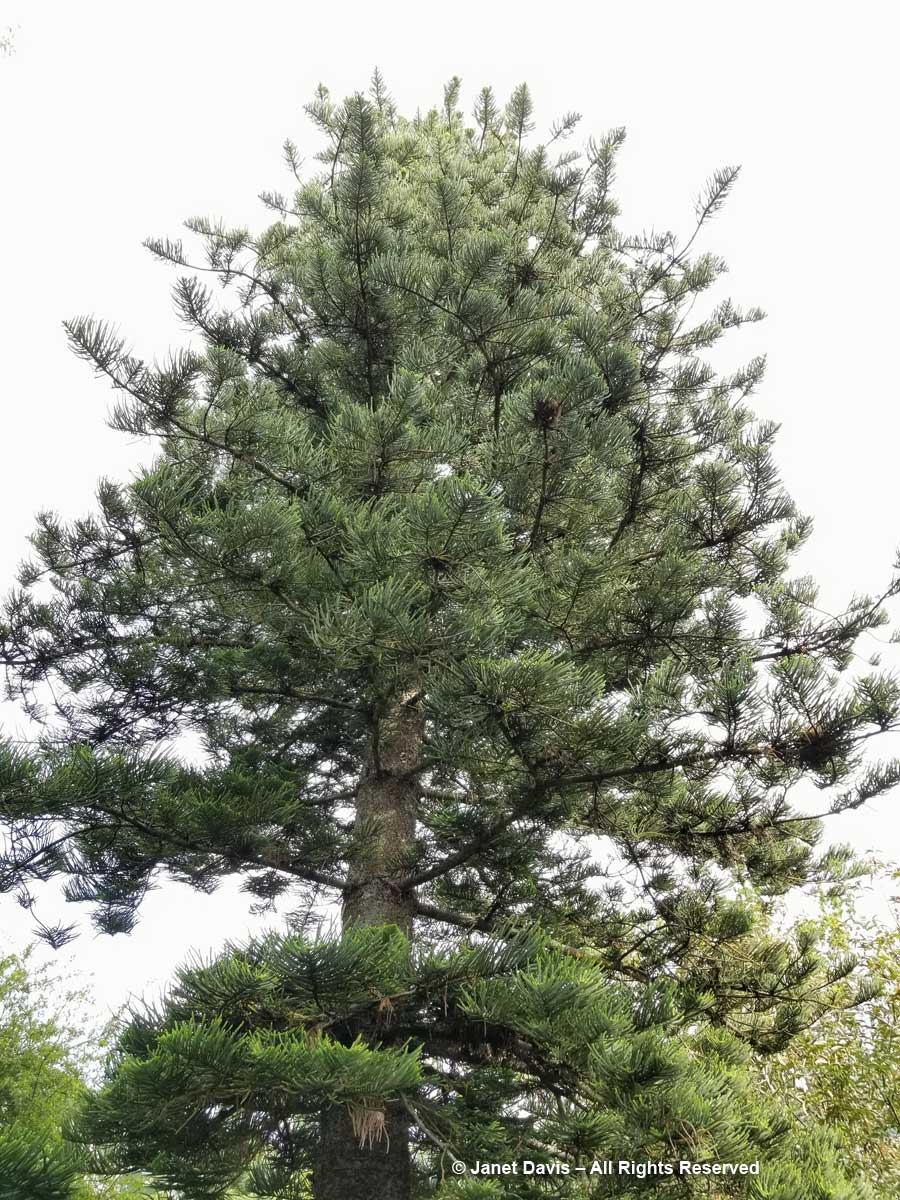
It was comforting to see a handsome, well-used compost bin behind one of the hedges. (Ross Booker: “Four months turnaround from hoe-to-go“.) Maintenance is crucial here; the hedges alone take three months to trim. At the moment, all the work is done by Ross and one other full-time gardener.
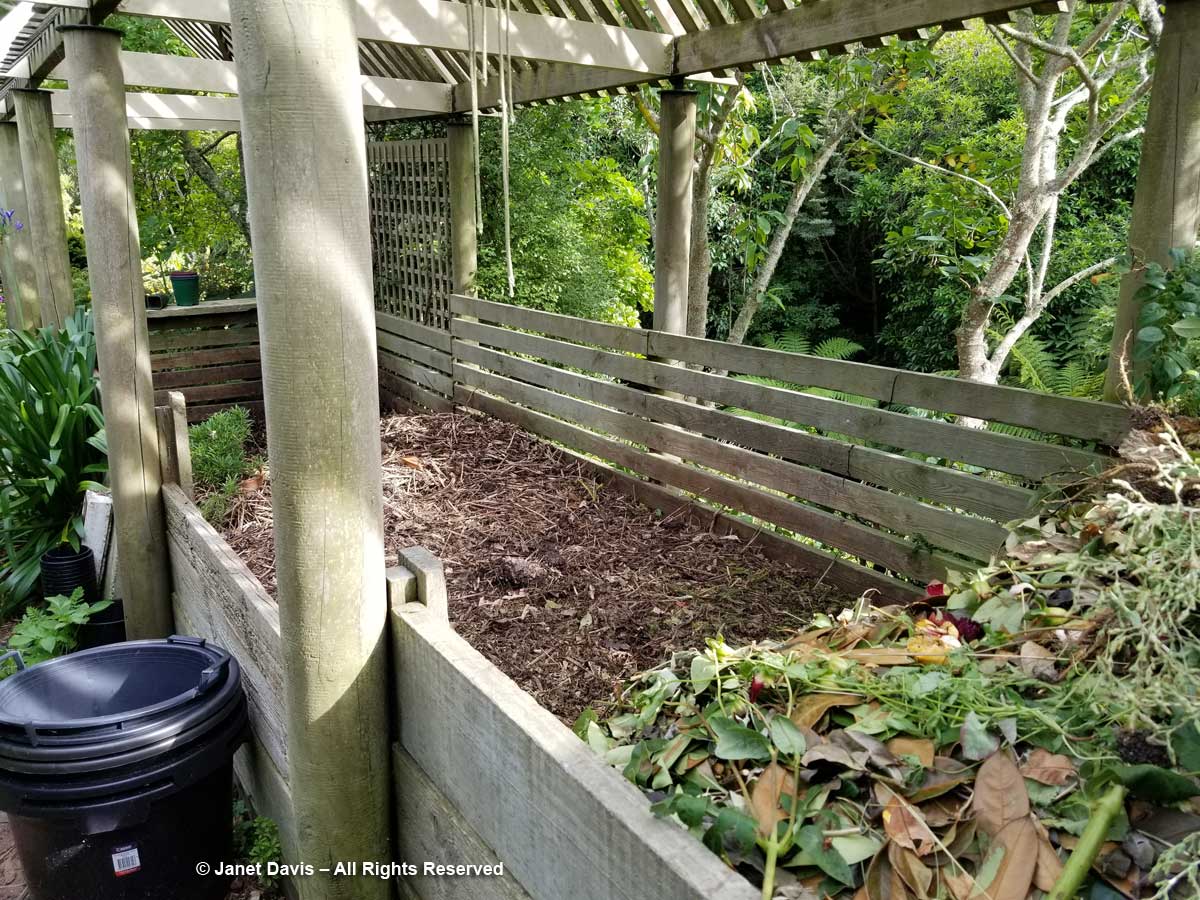
The pleached Hornbeam Walk is also modelled on England’s Hidcote; at its cross-axis is a copy of the urn designed for Alexander Pope’s garden at Twickenham.
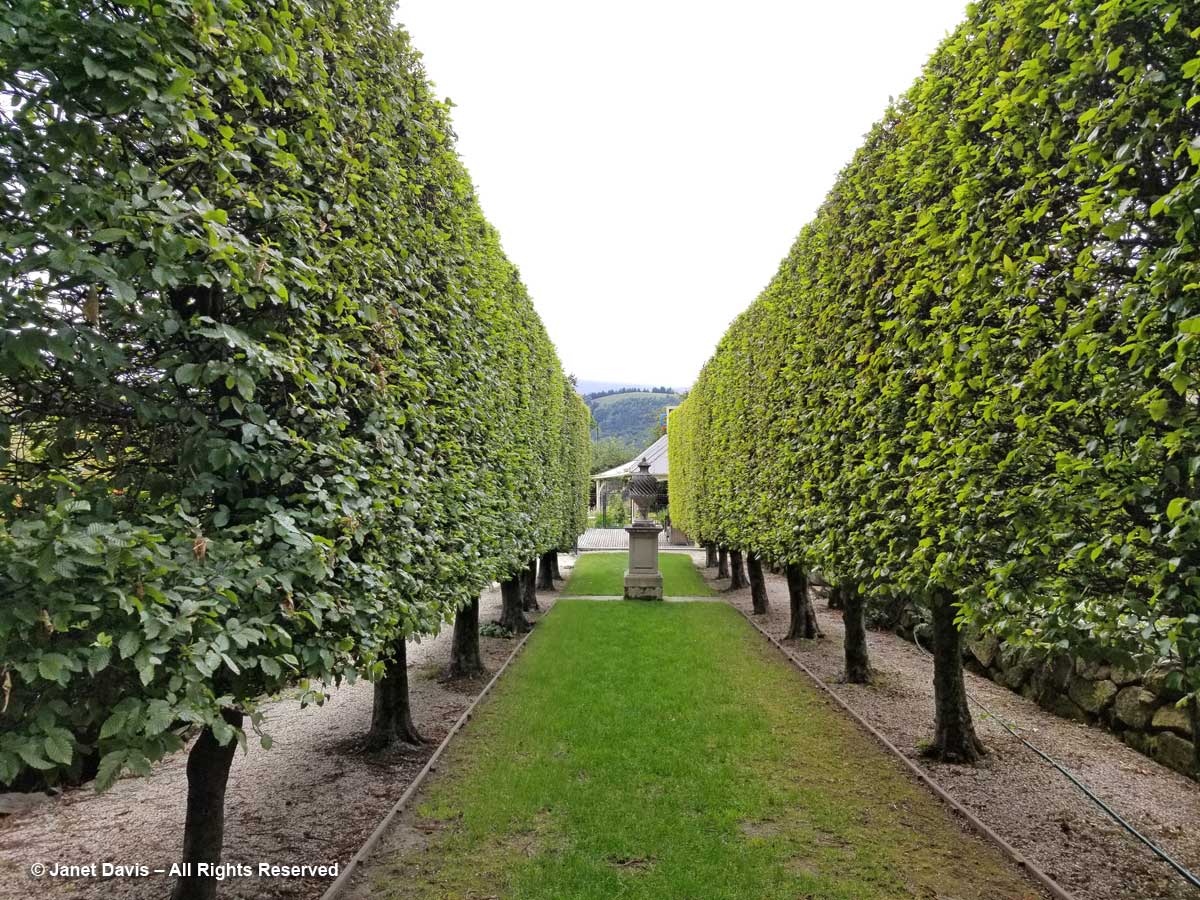
I walked back towards the Lawn which is all that remains of Thomas Potts’s original garden. Looking to my right I saw the pretty pool house and the pool wall hidden by a pyracantha hedge.
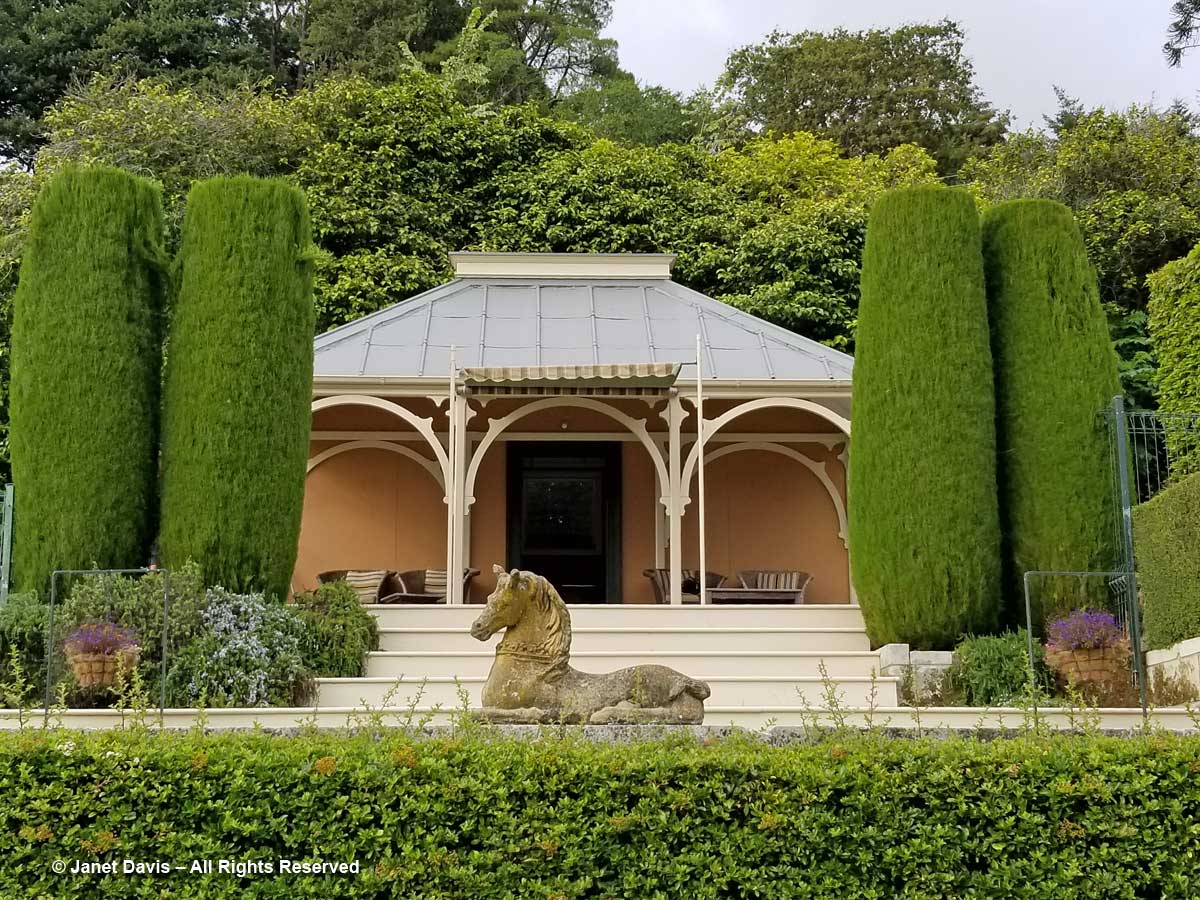
But when I climbed up to the pool level, I could look back at the lawn and the perfectly balanced scene opposite….
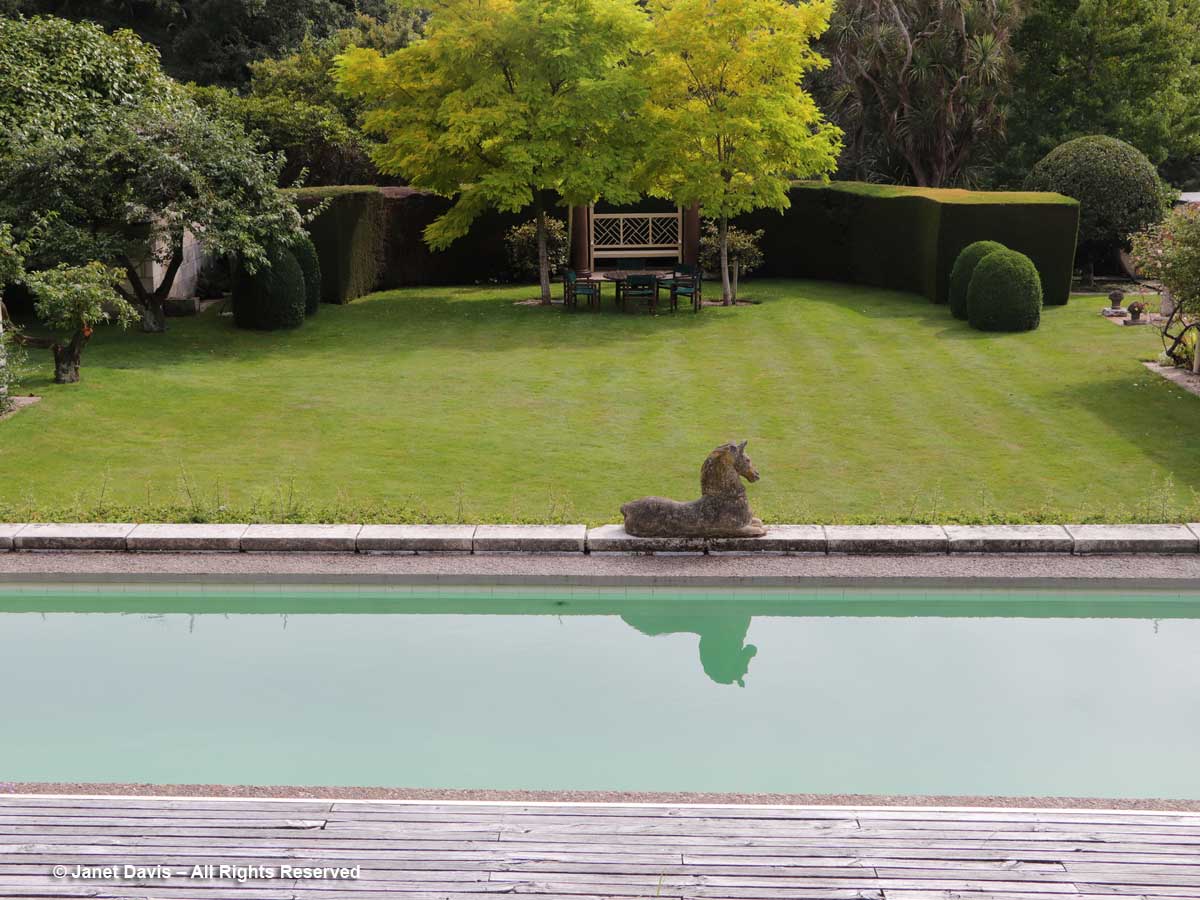
….of two chartreuse ‘Frisia’ locusts (Robinia pseudoacacia) and a Luytens bench flanked by two shiny granite columns. Behind were precisely-clipped macrocarpa hedges (Cupressus macrocarpa).
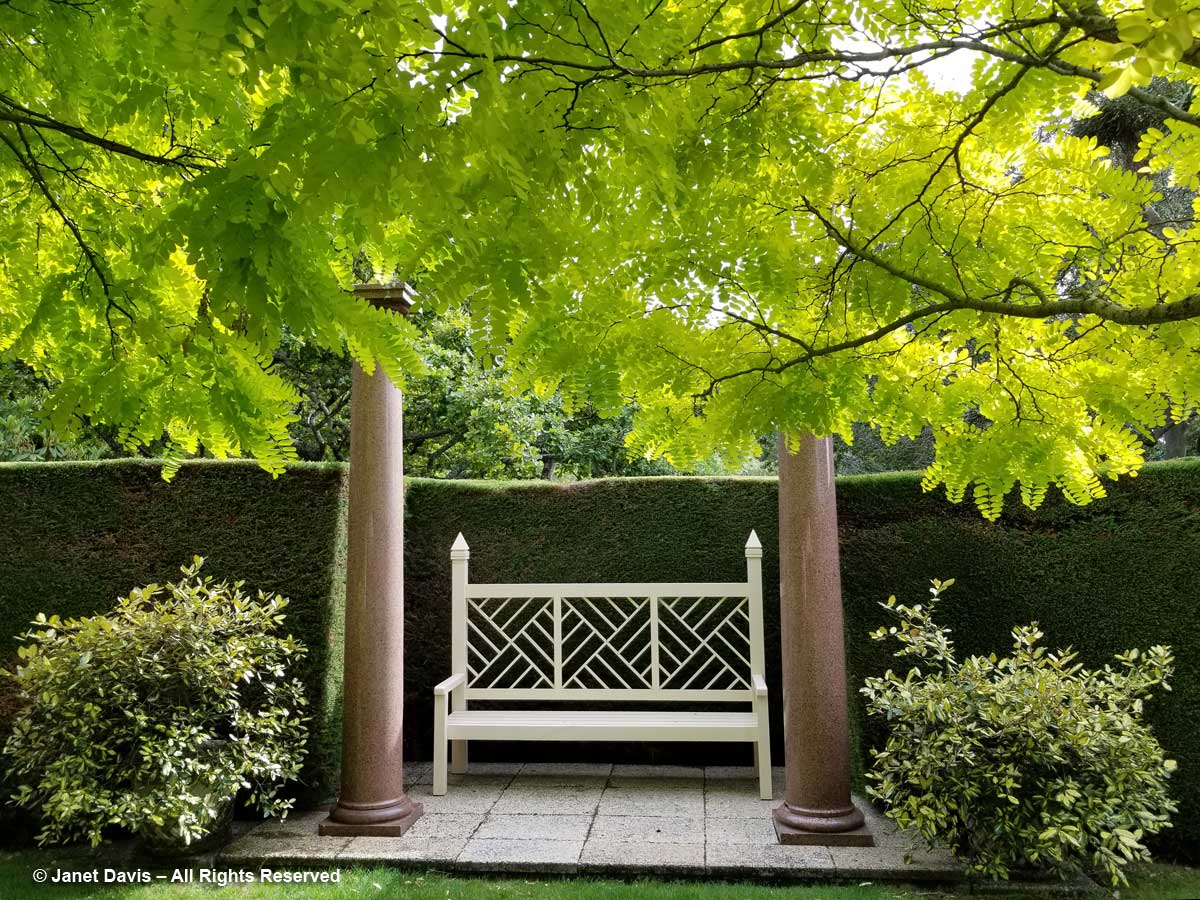
I walked to the Suspension Bridge over the creek….
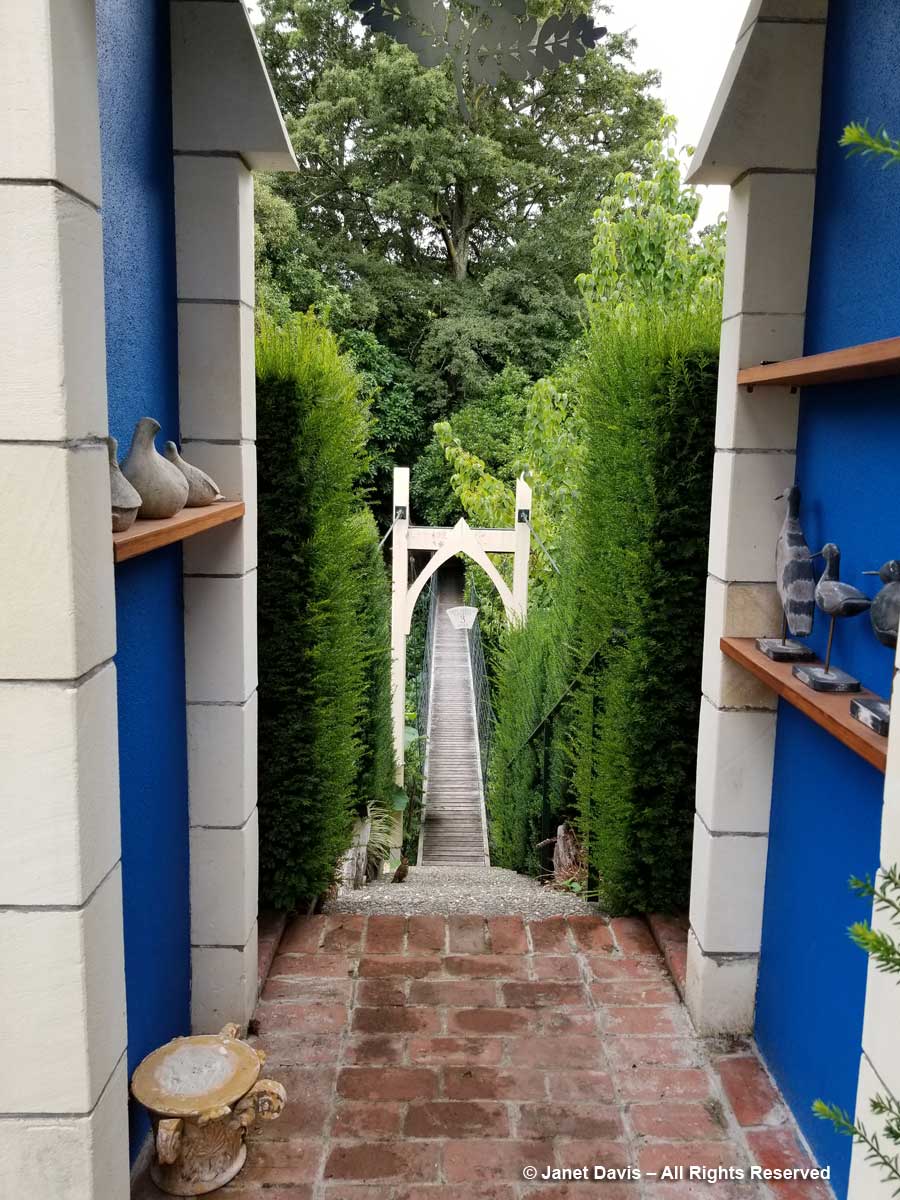
…. with its artfully-adorned bridgehouse.
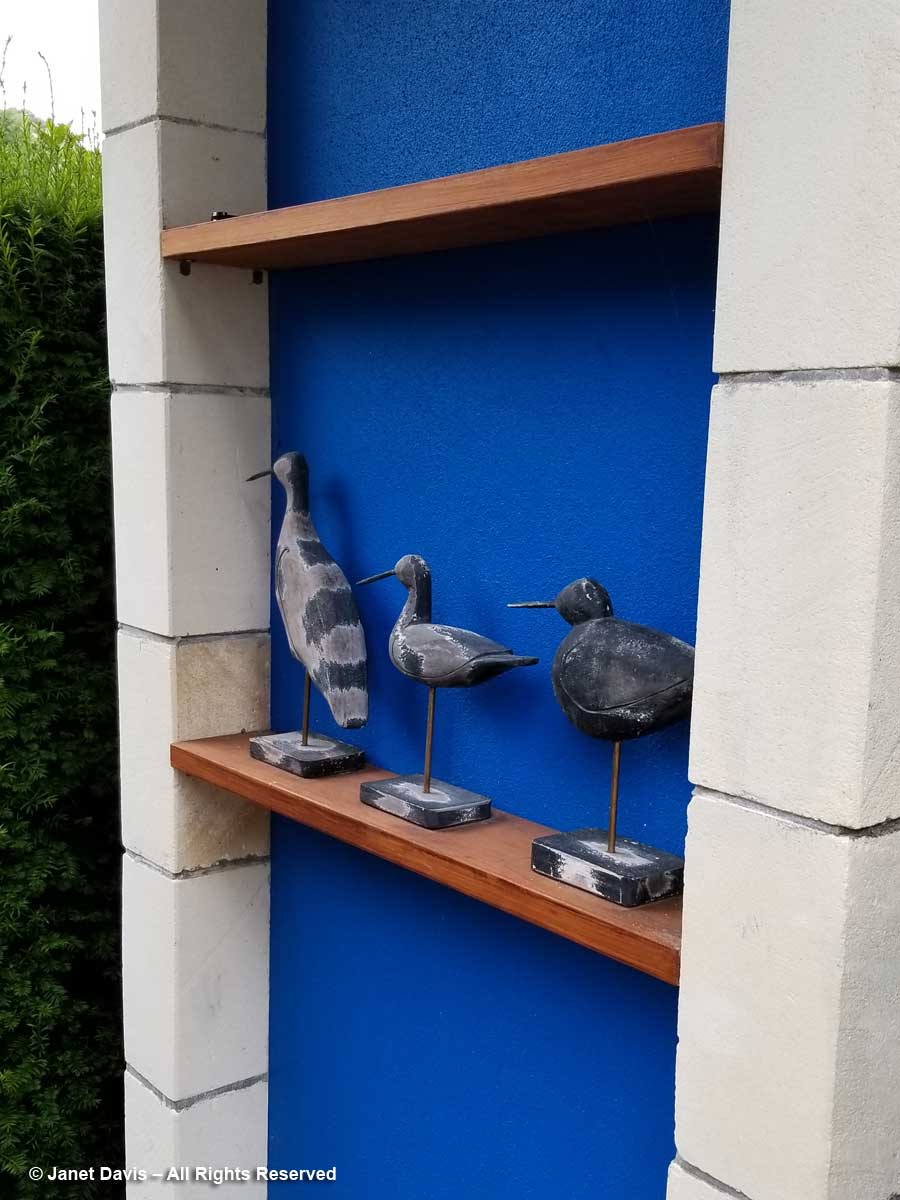
Here I could see the stream below wending its way south to the ocean through New Zealand “bush”…..
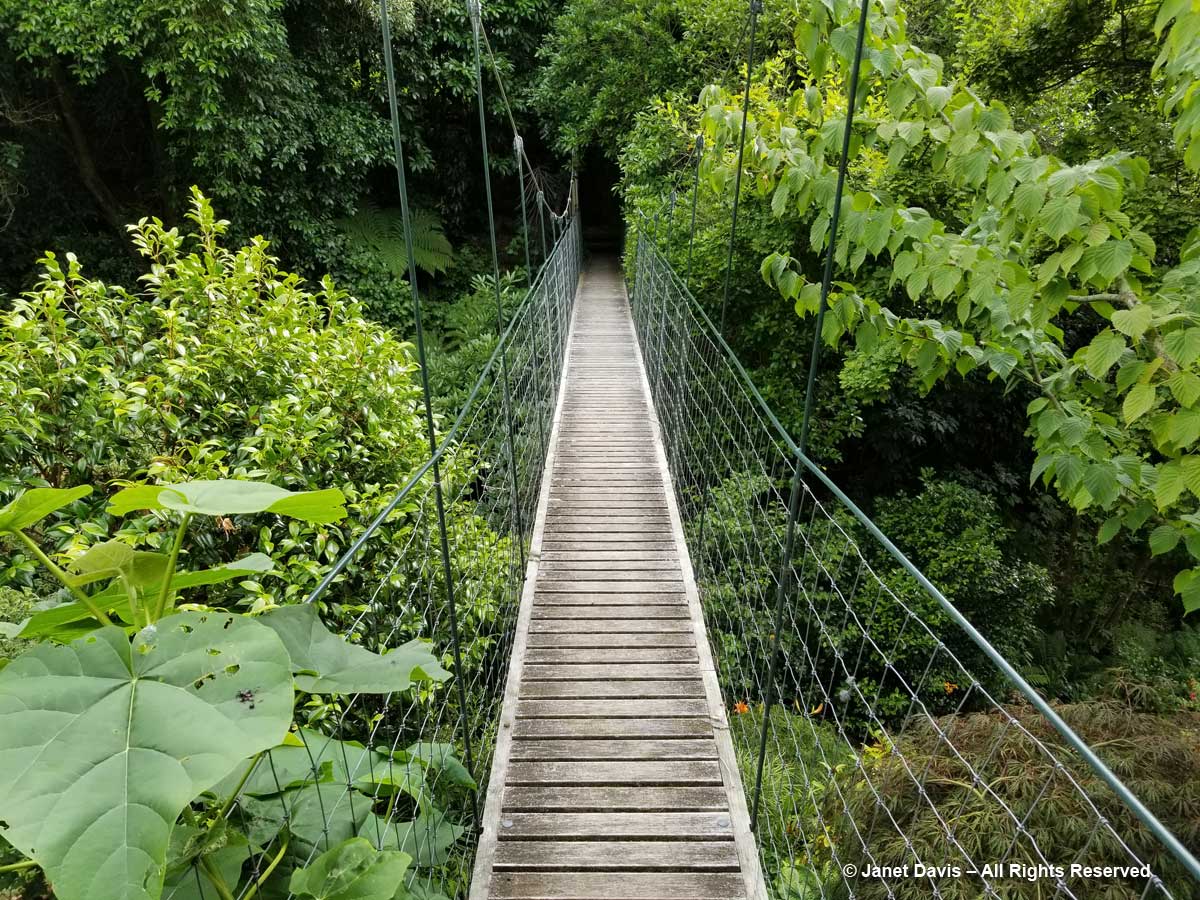
…. including lacy tree ferns.
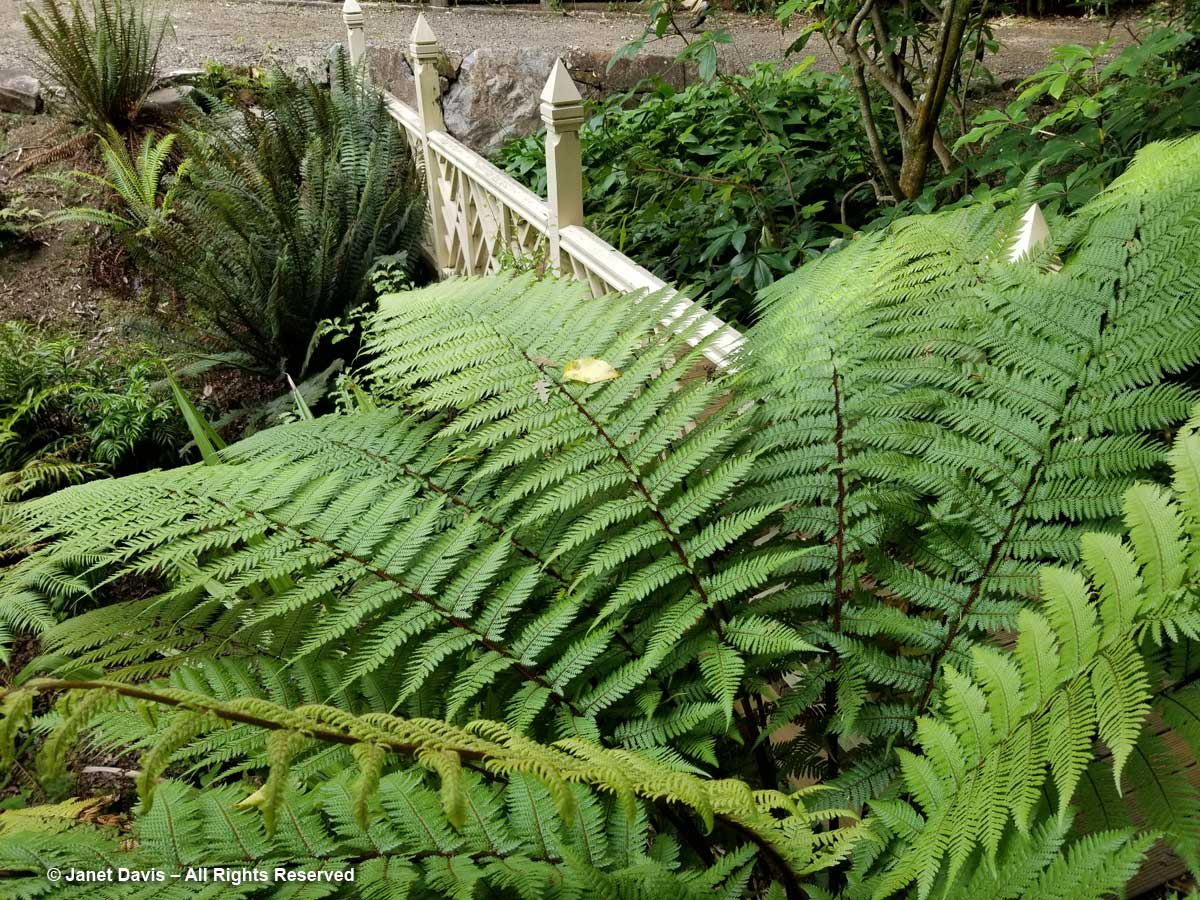
Suspended elegantly in the lush native bush under Thomas Potts’s five old oaks was a stainless steel sculpture by Auckland artist Virginia King titled “Heart of Oak”, below. Commissioned by Sir Miles in 2014, the artist – who saw the garden in winter – describes it on her website. “The circular mandala form alludes to the longevity of trees, to changing seasons and the cycle of life and to ancient mythologies about Oak trees in Roman, Greek, Celtic, and Teutonic cultures.”
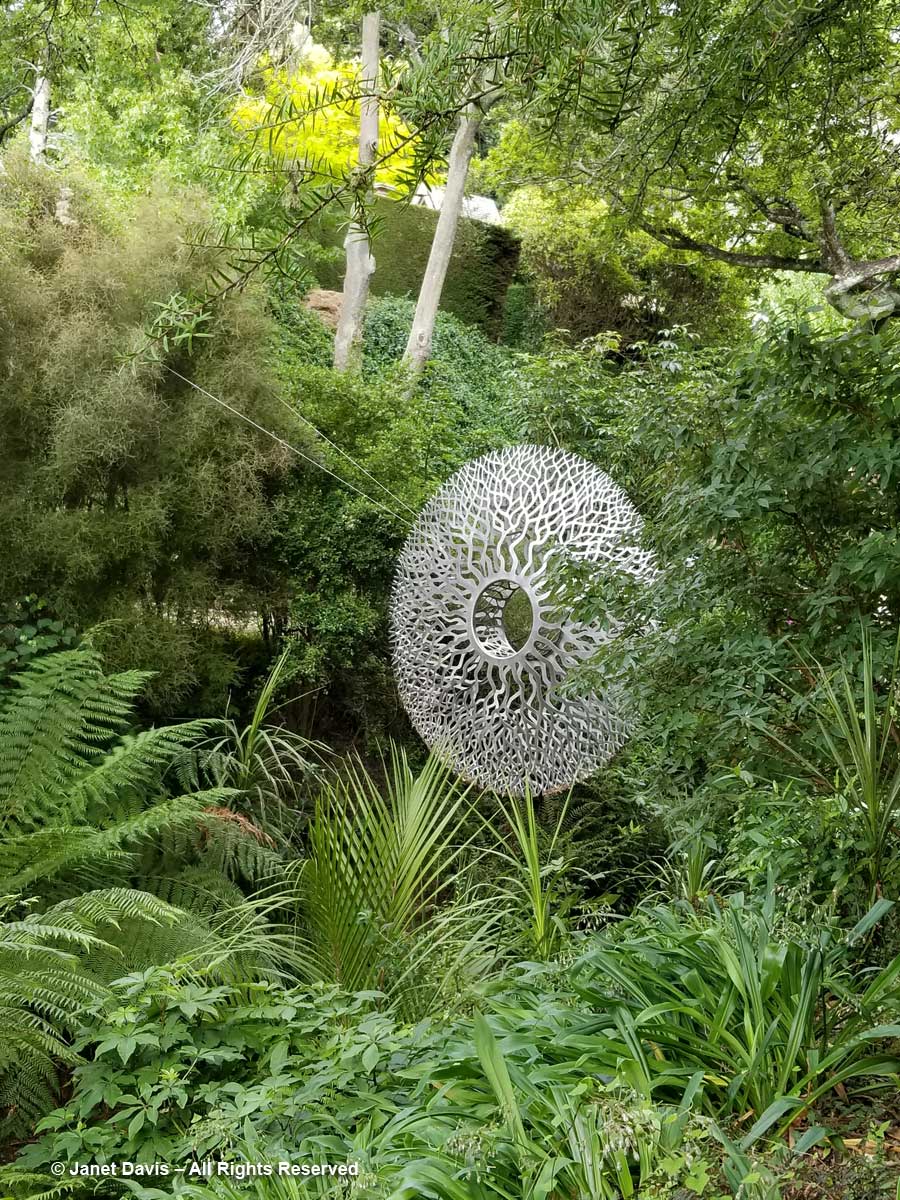
The cycle of life was certainly evoked naturally in this lichen-covered tree trunk.
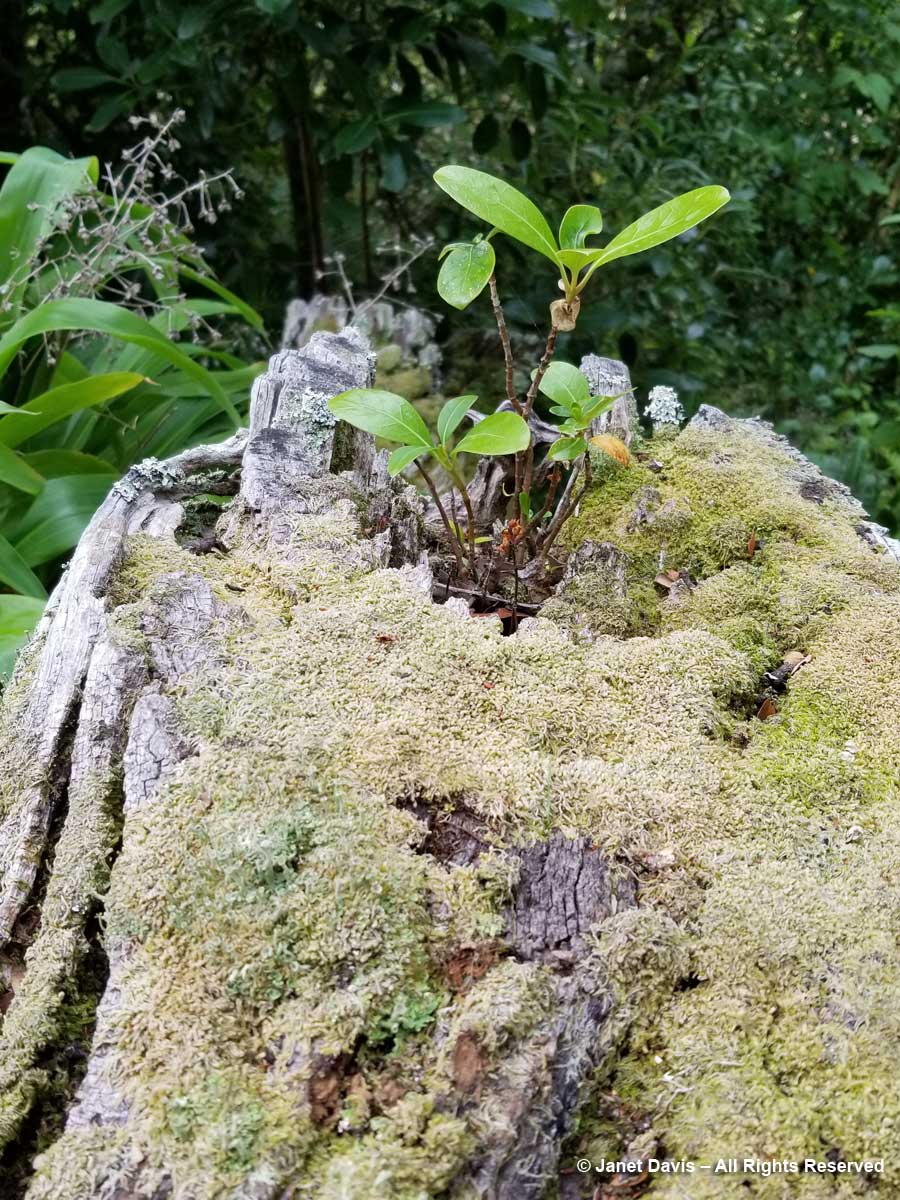
I loved that the blue base of this woodland sculpture emerged from a clump of New Zealand blueberry or turutu (Dianella nigra) with fruit exactly the same azure hue.
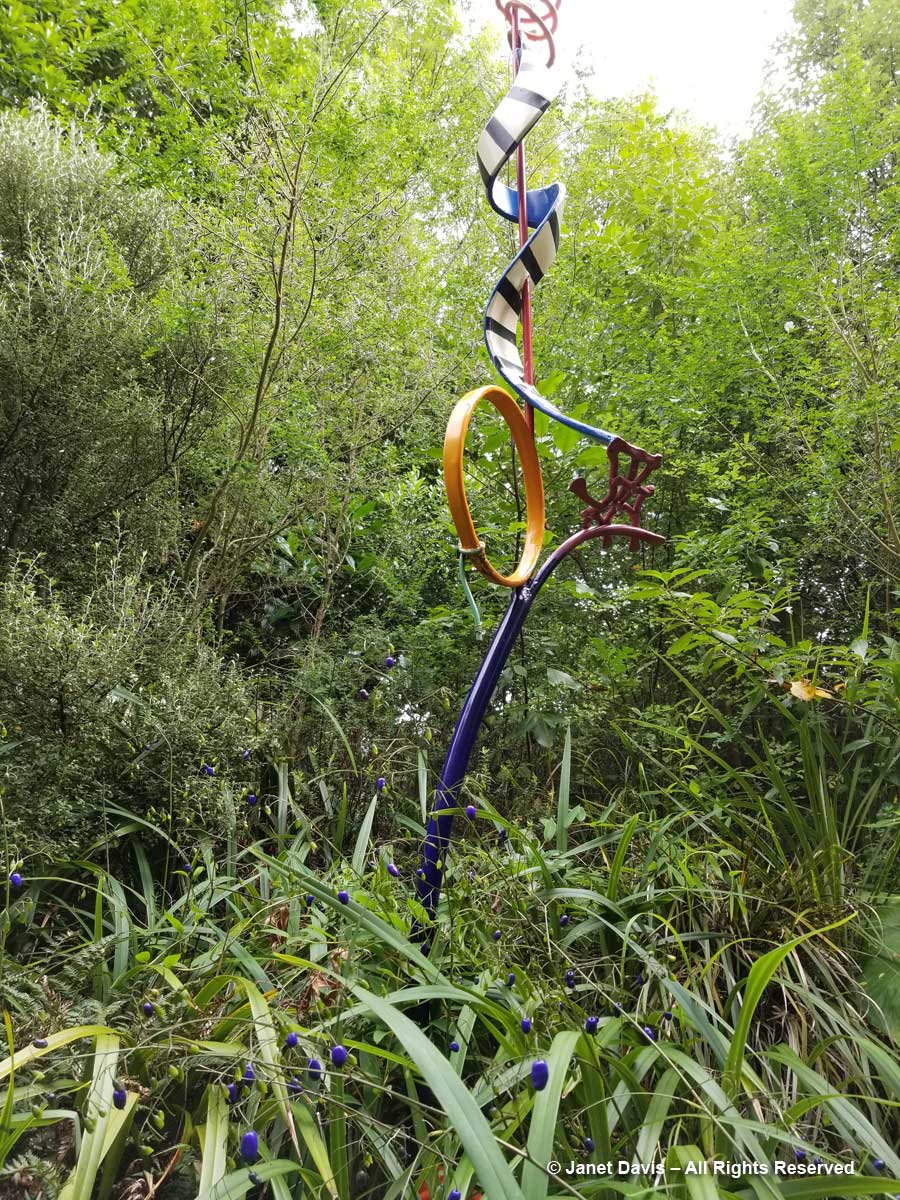
Approaching the outlook to Governors Bay, there was another evocative sculpture, this one by Andrew Drummond.
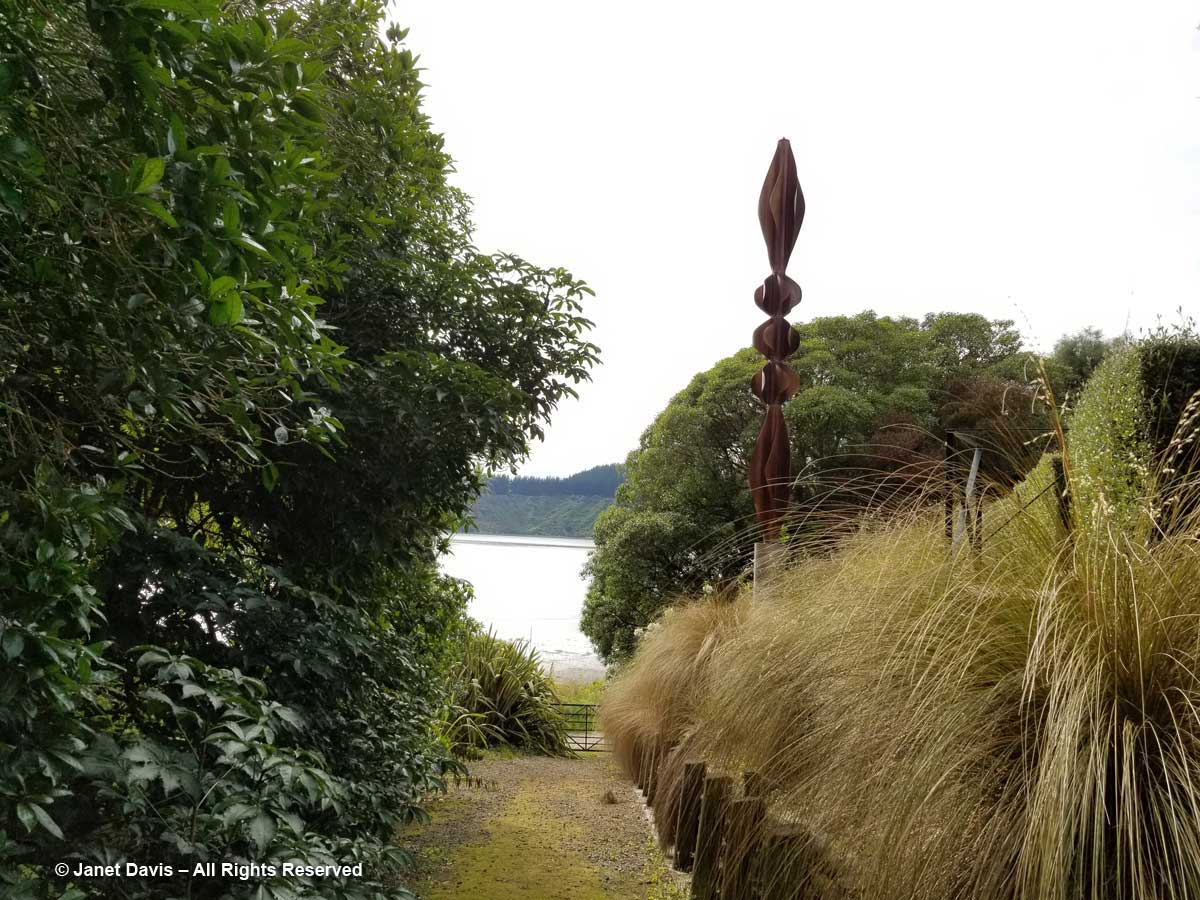
With our departure time approaching, I made a quick stop in Ohinetahi’s little art gallery, featuring works by renowned New Zealand artists.
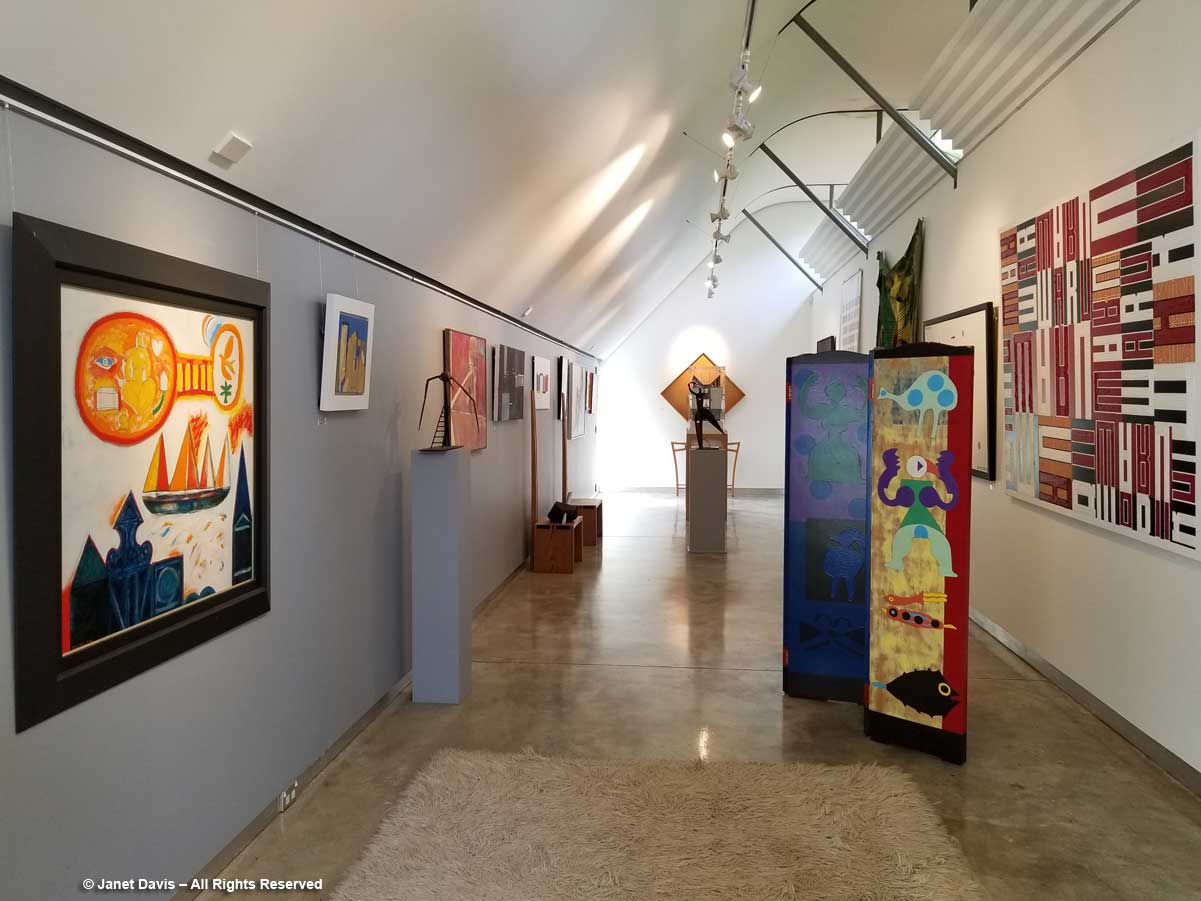
Adjacent is a newer gallery containing 3D models and photographs of Warren & Mahoney projects….
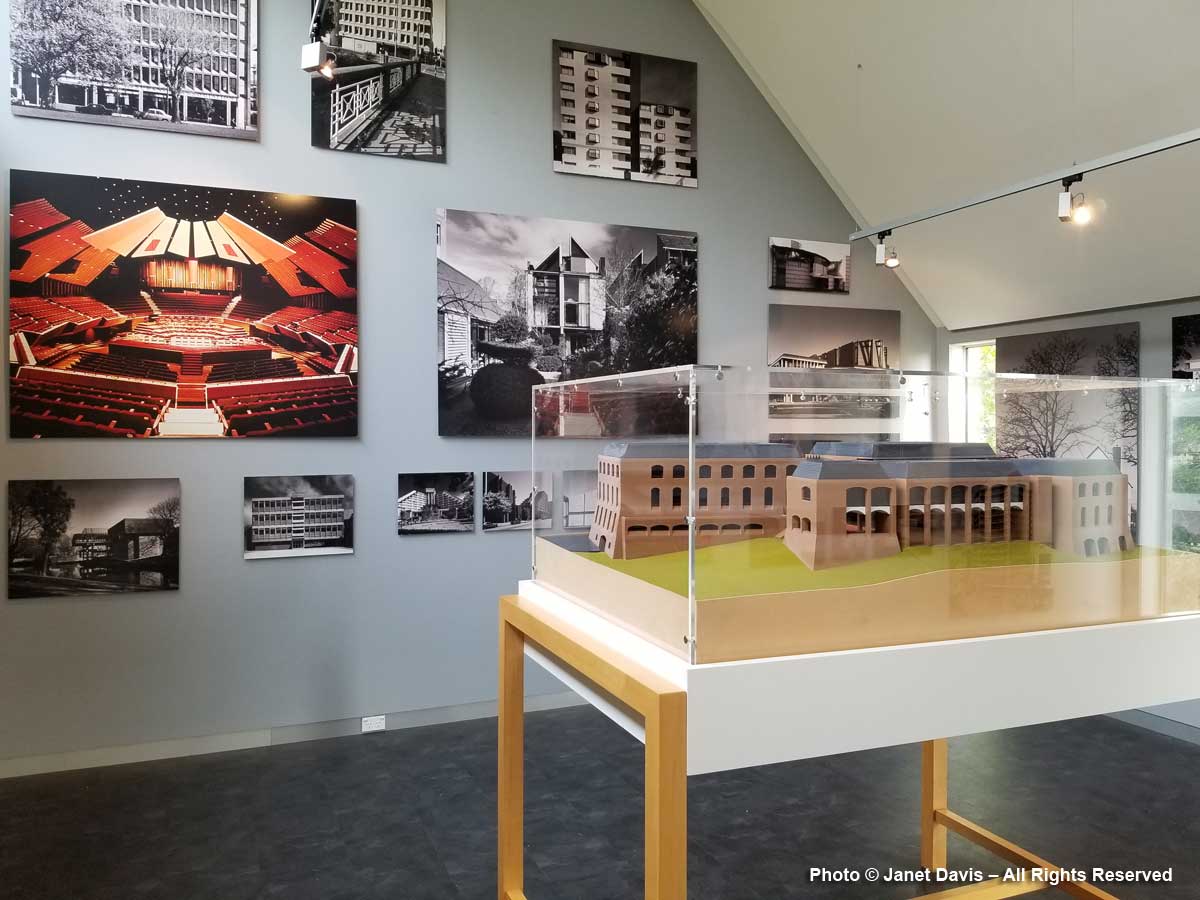
…… including many destroyed by the earthquakes.

Back at house level, the Rose Garden beckoned, with its 12 rectangular, boxwood-edged beds marked by topiary spirals and boxwood chess pieces…..
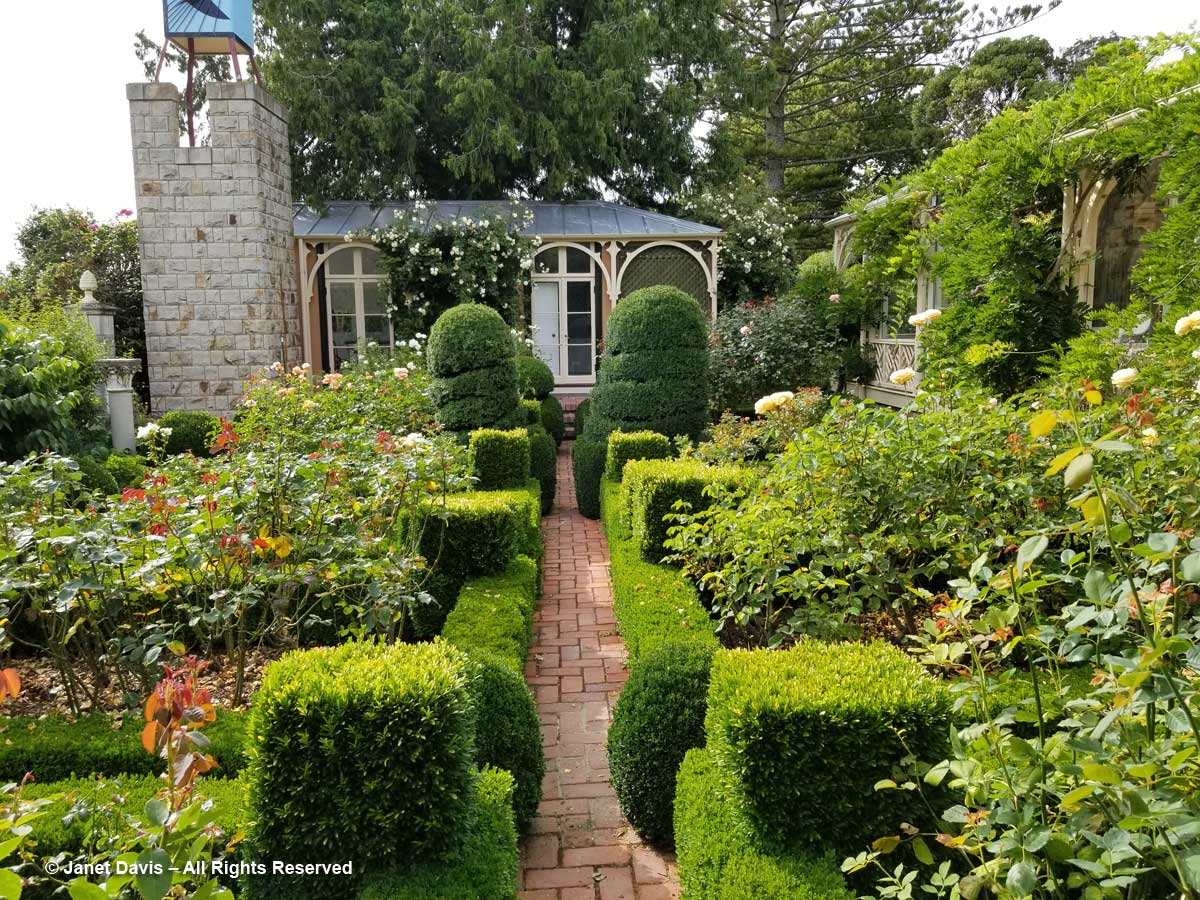
……and filled with white, yellow and apricot roses to match the house.
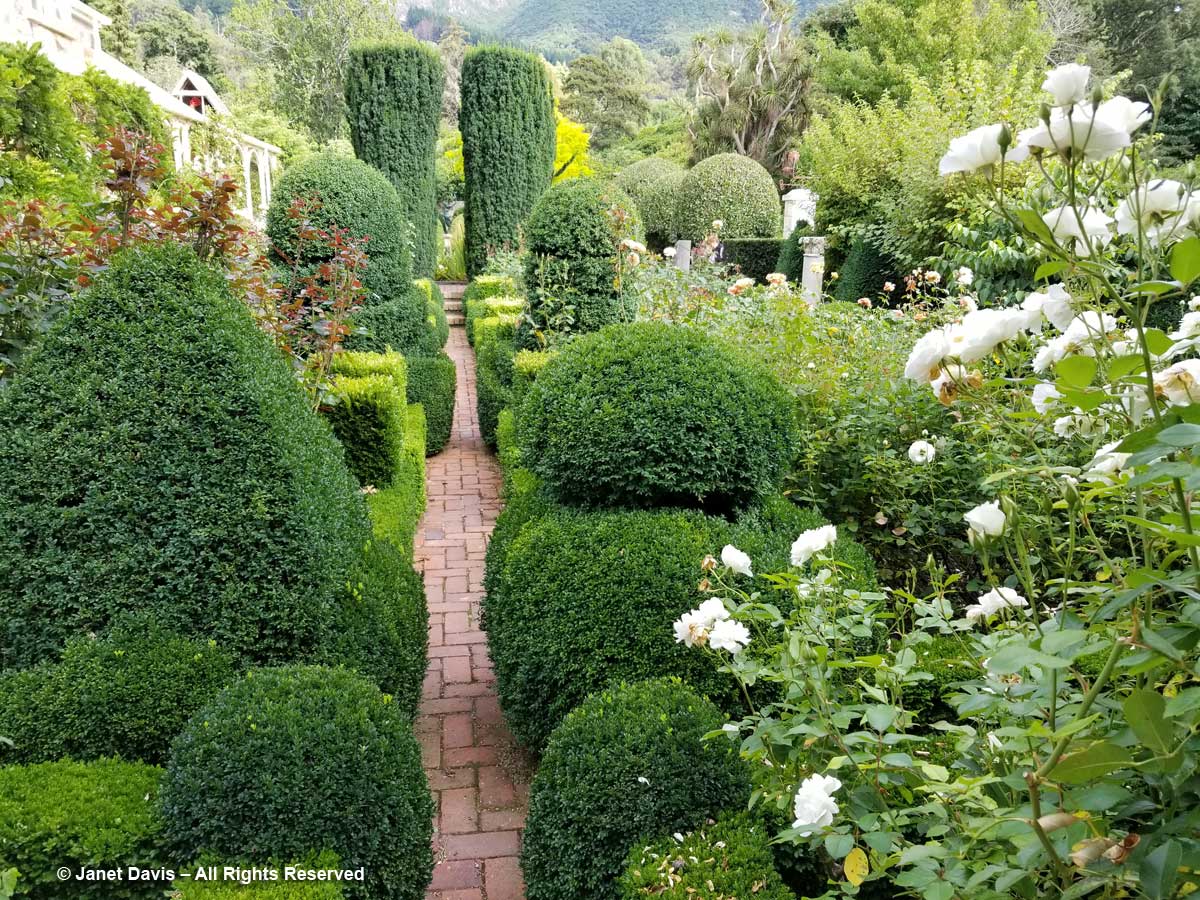
I loved the ebullient fuchsia at the house entrance, and was intrigued with the number woven into the trim. Thomas Potts’s sandstone walls were quarried at Charteris Bay across Lyttelton Harbour.
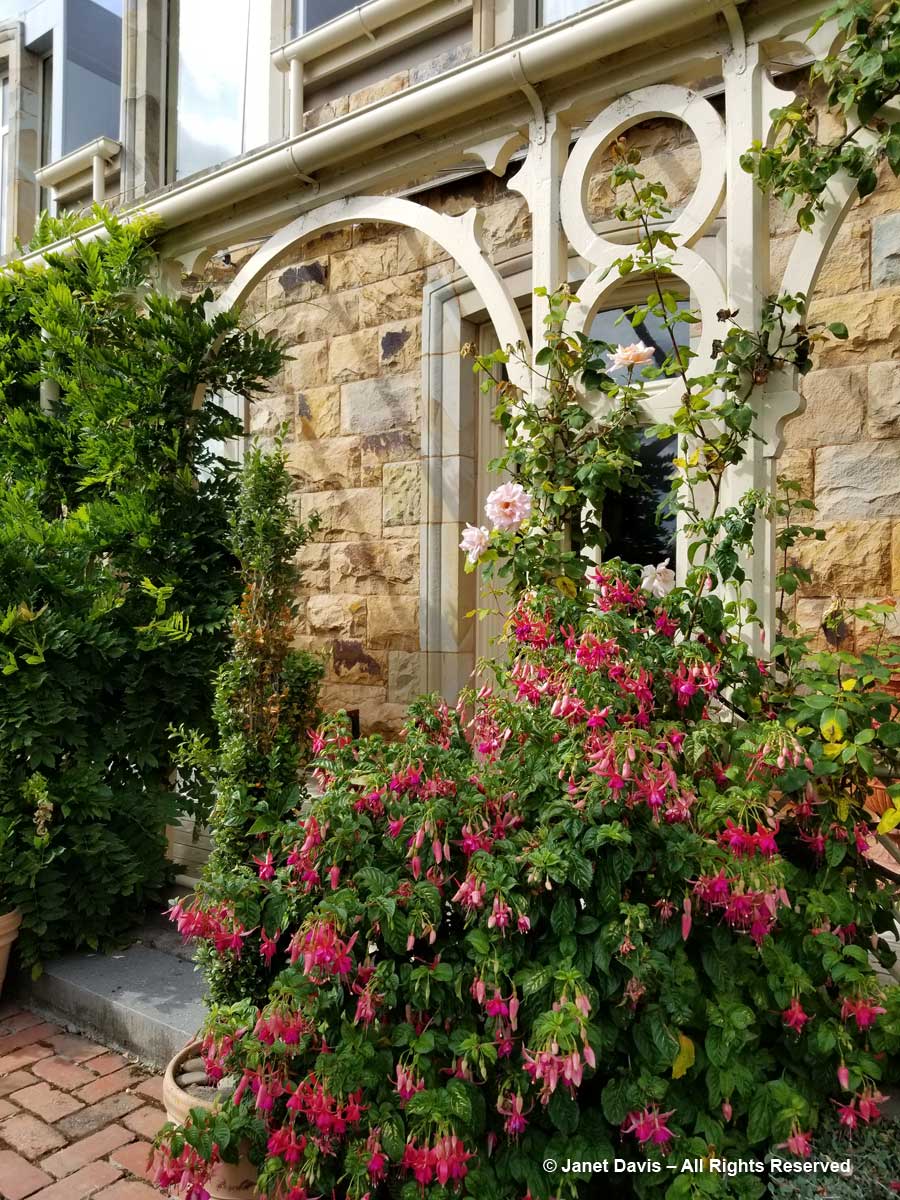
The rose garden’s central path was on an axis with the Reflecting Pool across the lawn, its edges adorned with eight Coade stone flowers.
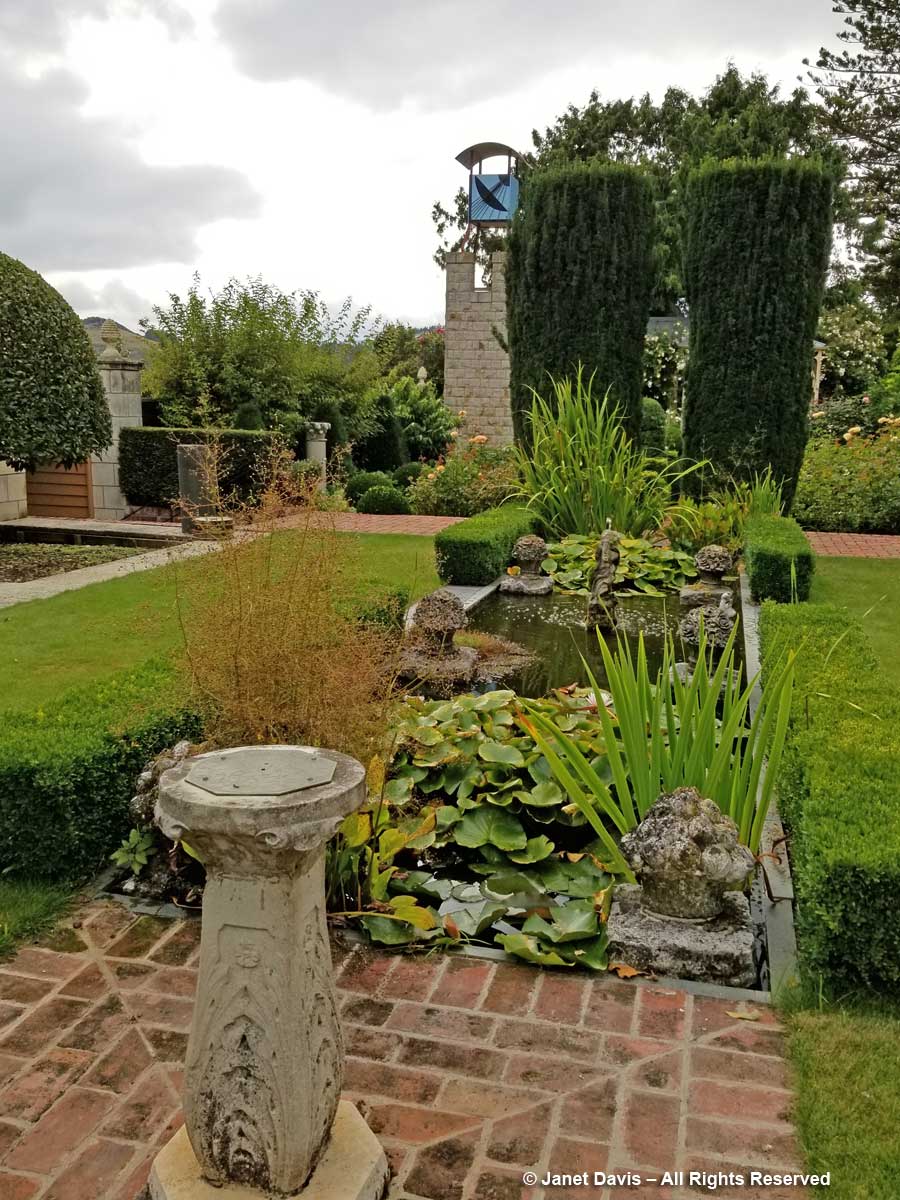
Now there was just enough time to dash around the house and head up past the Doug Neil-carved Oamaru stones “Canyon Suite”…
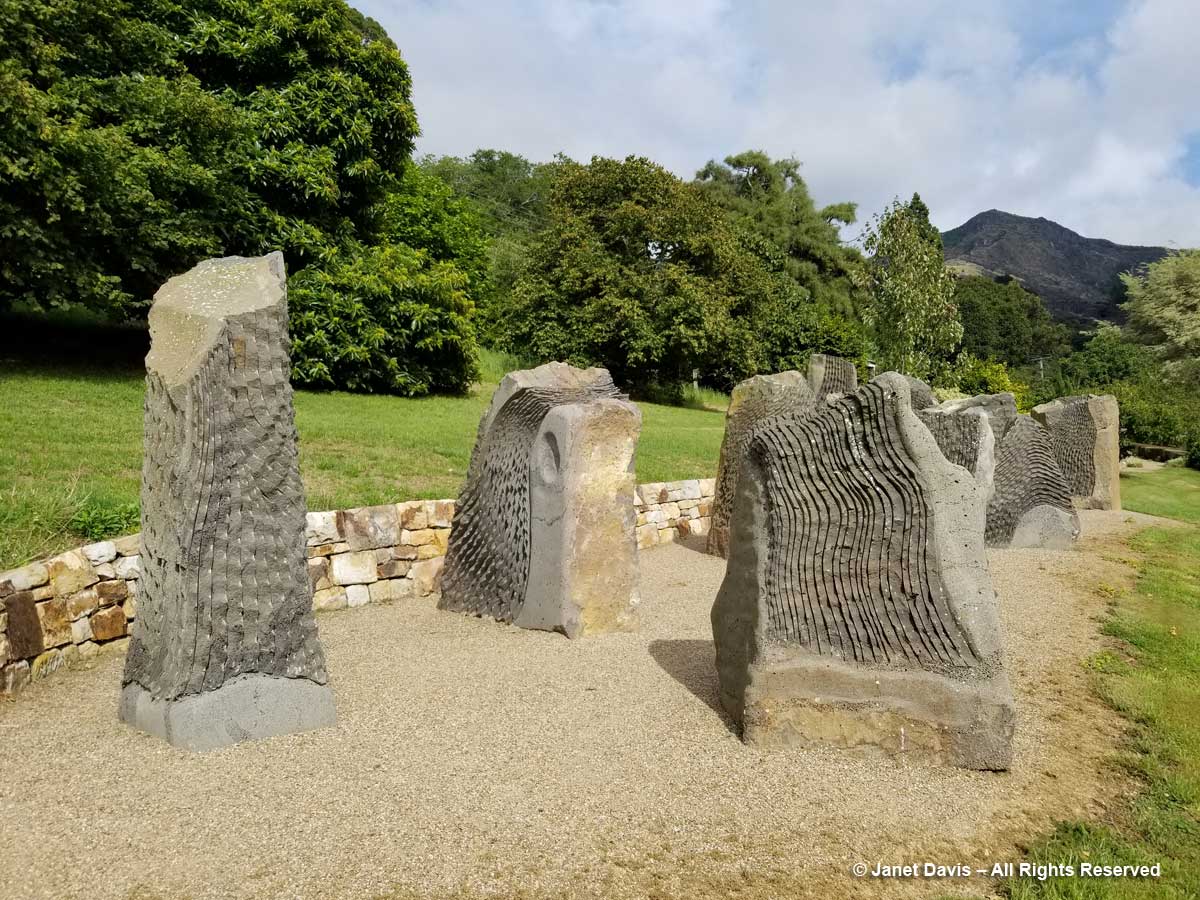
….. and Andrew Drummond’s “Astrolabe”, below, to visit the newest addition to Ohinetahi, an adjacent .75-hectare (1.85 acres) property overlooking Governors Bay purchased in 2008 and christened “the park”.
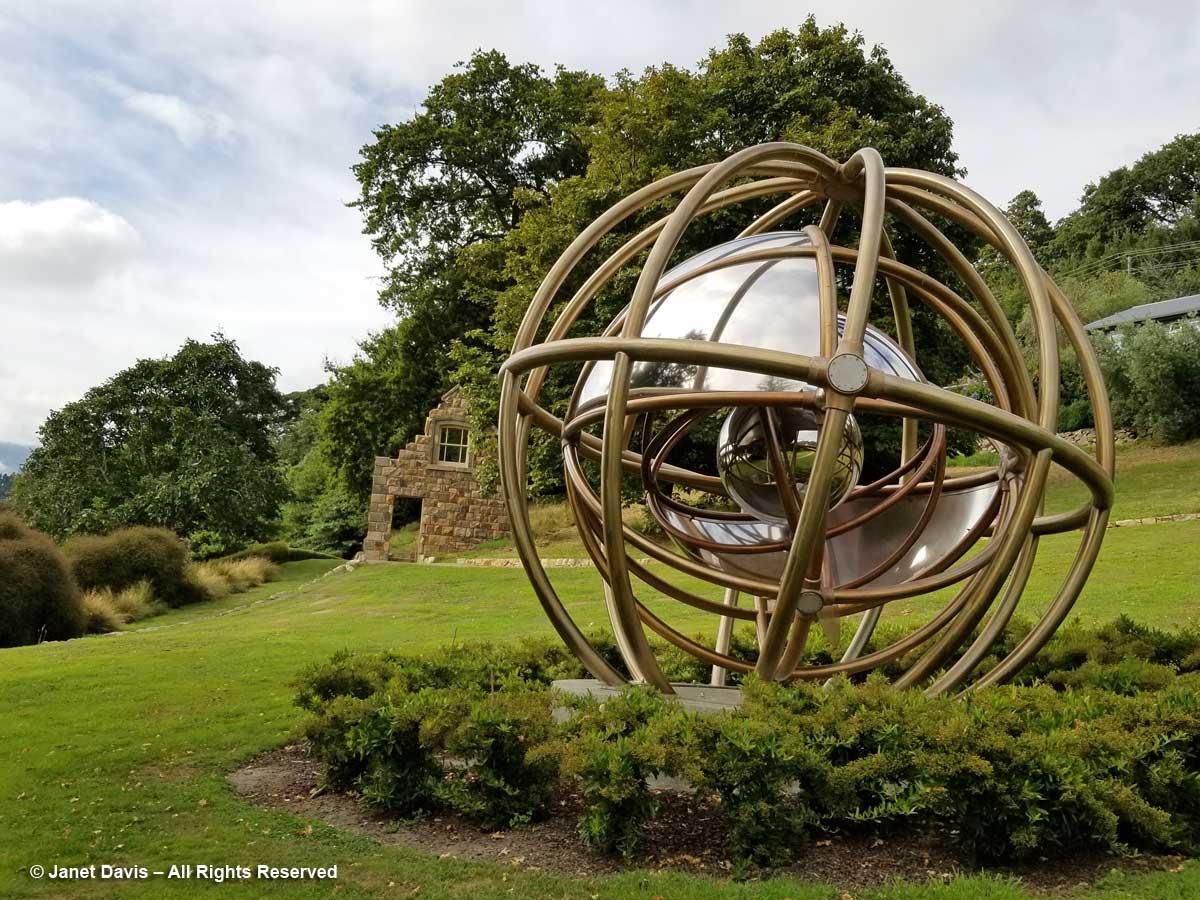
There are masses of natives here, like leatherleaf sedge (Carex buchananii)…..
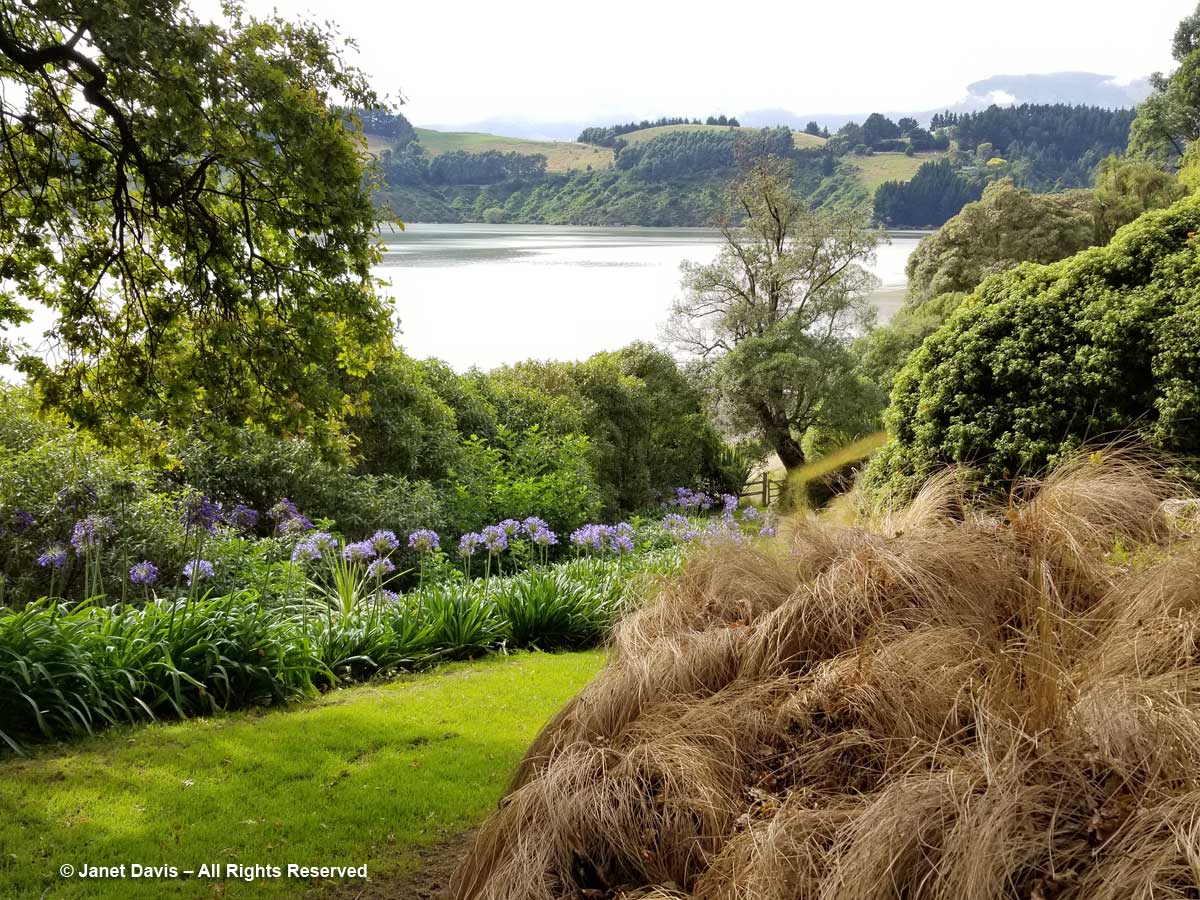
…..and Corokia cotoneaster sheared into wedges, below. Originally part of the Potts property, the park features the oaks he planted a century-and-a-half ago.
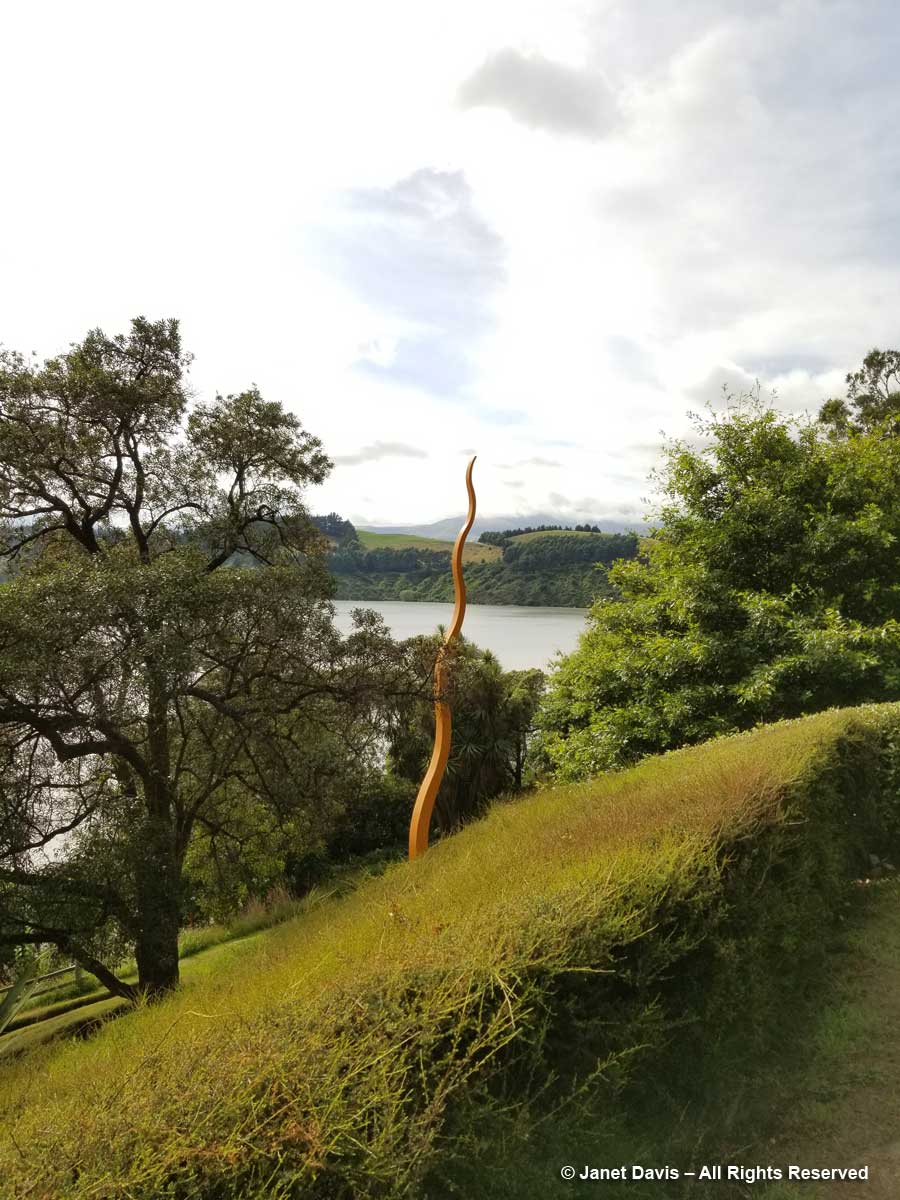
Large-scale modern art commands the hillside……
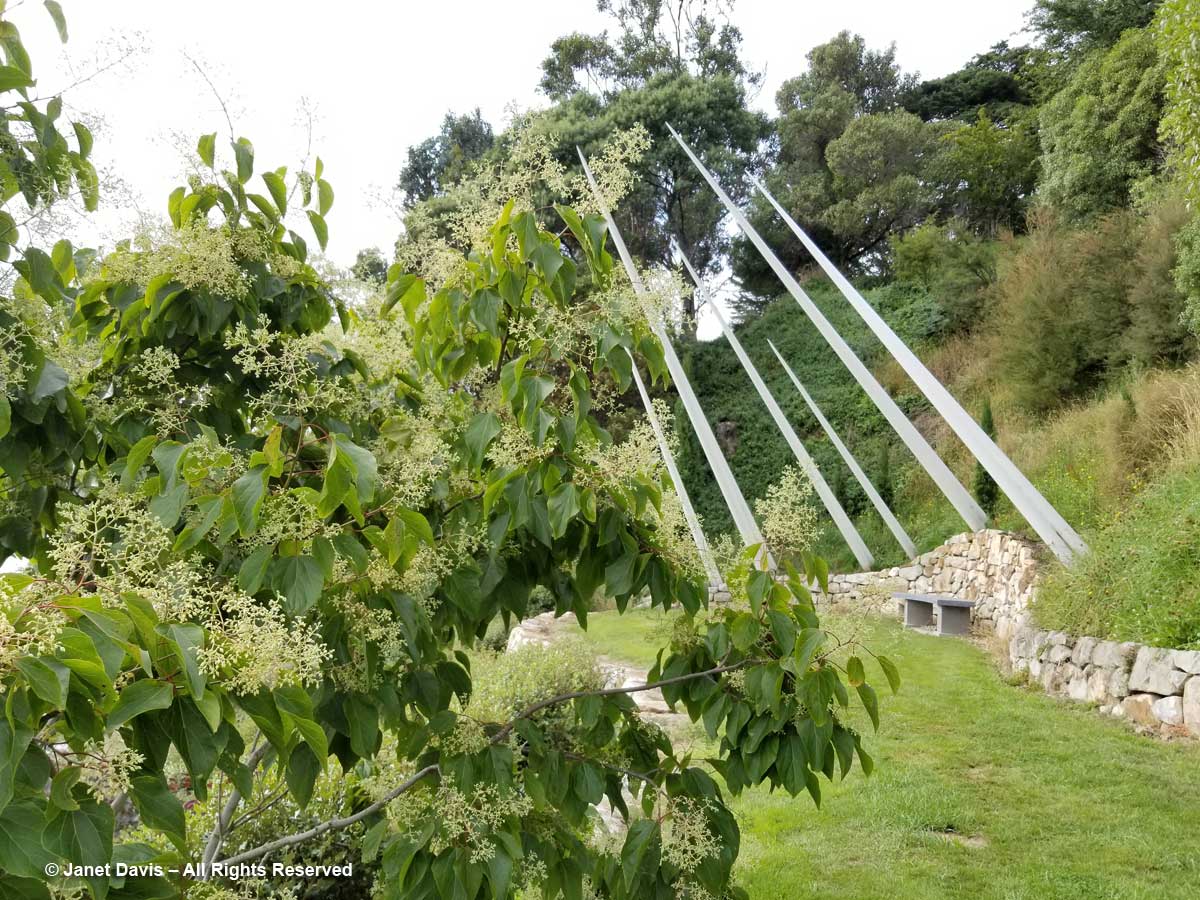
…… including pieces like ‘Phase’ by Graham Bennett.
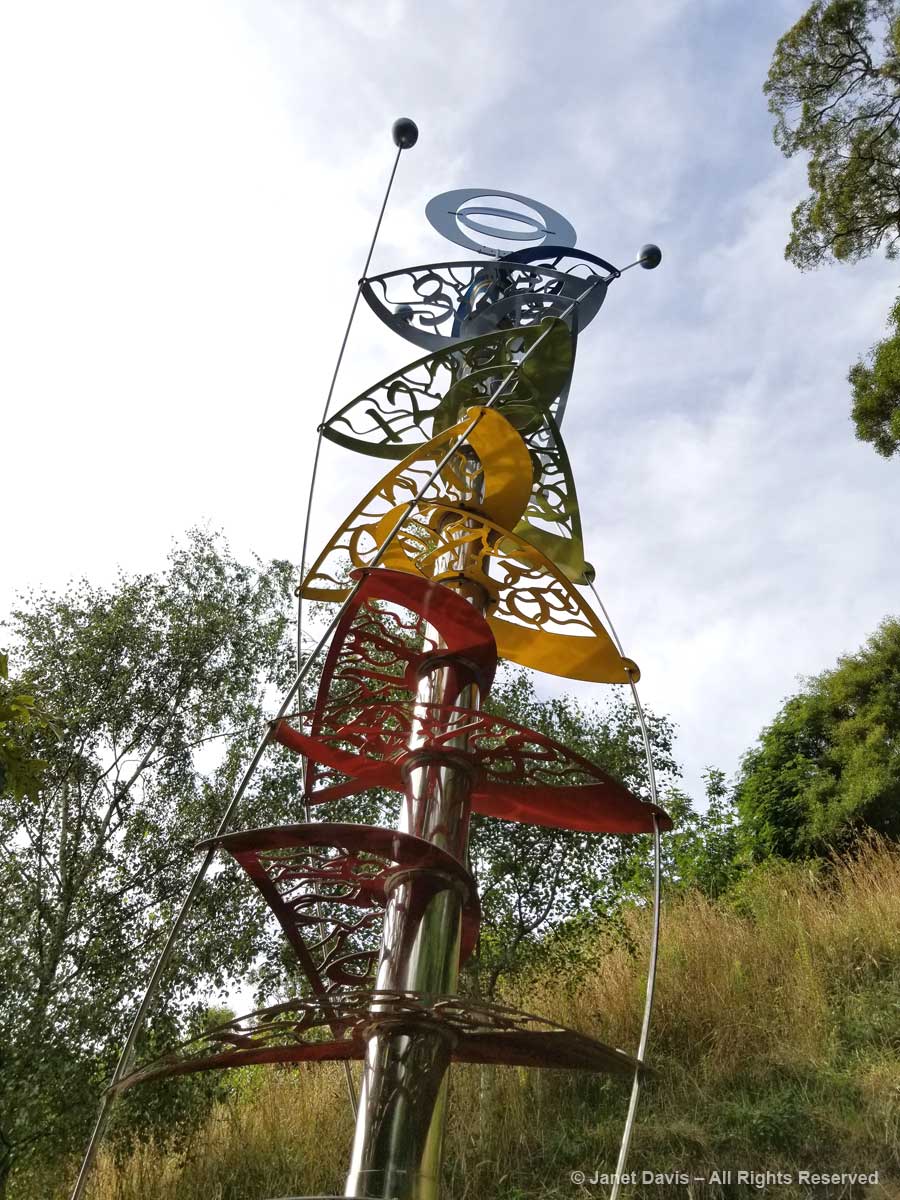
And the new amphitheatre overlooking the water is a place where visitors can relax in a spectacular setting atop a turf bench supported by some of the 140 tonnes of sandstone block that fell from Sir Miles’s roof into his library, that terrible night in September 2010.
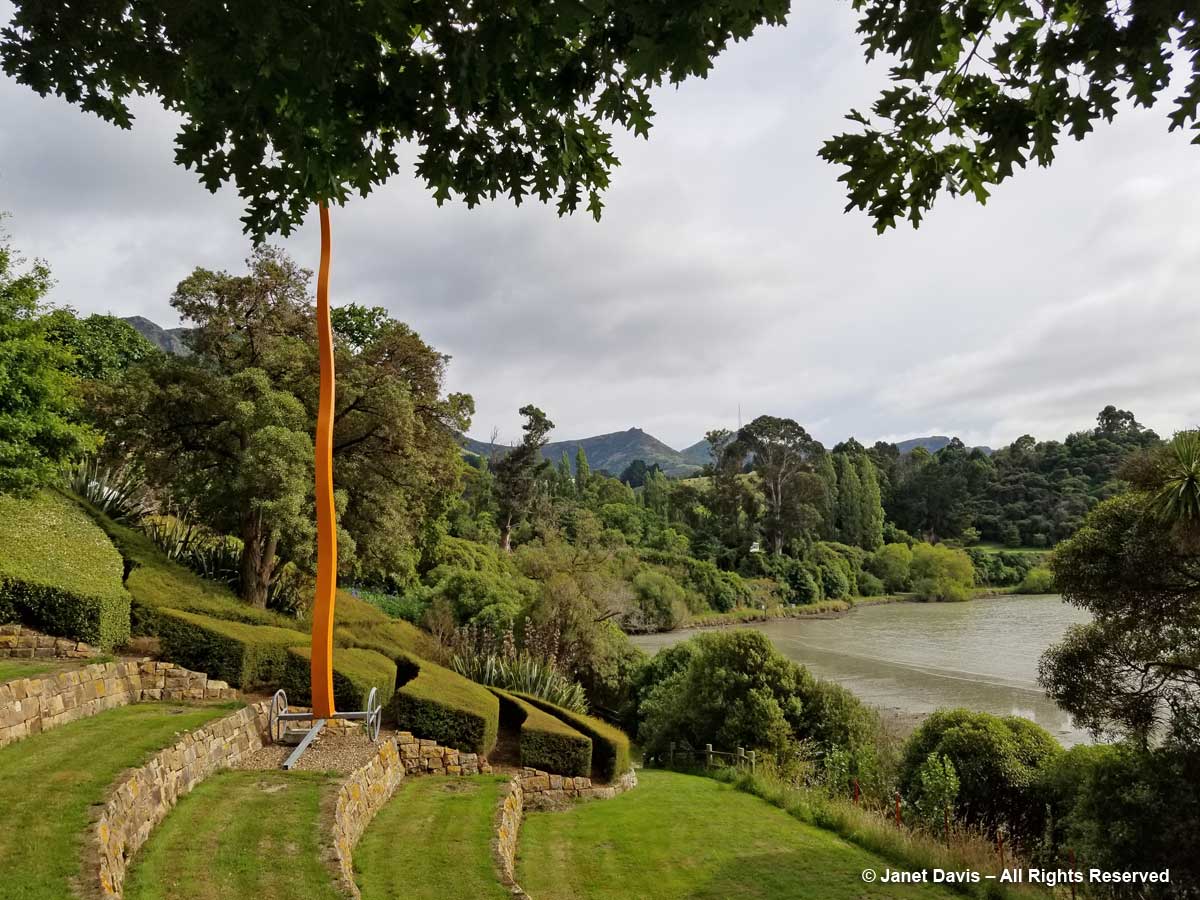
In 2012, after setting up the Ohinetahi Charitable Trust (the trustees include his sister Pauline and a niece) to oversee the necessary maintenance, insurance costs and continued development of the property, Sir Miles Warren donated it to New Zealand. As he said to a reporter at the time, “So many gardens are made in New Zealand and the owners become elderly and the grounds fall into disrepair. It would seem a pity to spend 35 years making something and then walking away and letting it fall apart.”
The bus was leaving and I had just enough time to make one last photograph. The bust, of course, was familiar, but I had to look up the inscription. Firmitas, Utilitas et Venustas. Coined by the Roman architect Vitruvius, it dates from the 1st century B.C and means “Strength, Utility and Beauty.” It’s an age-old tenet of architecture but it seemed to me it described this garden, as well as the man who is now a tenant here.
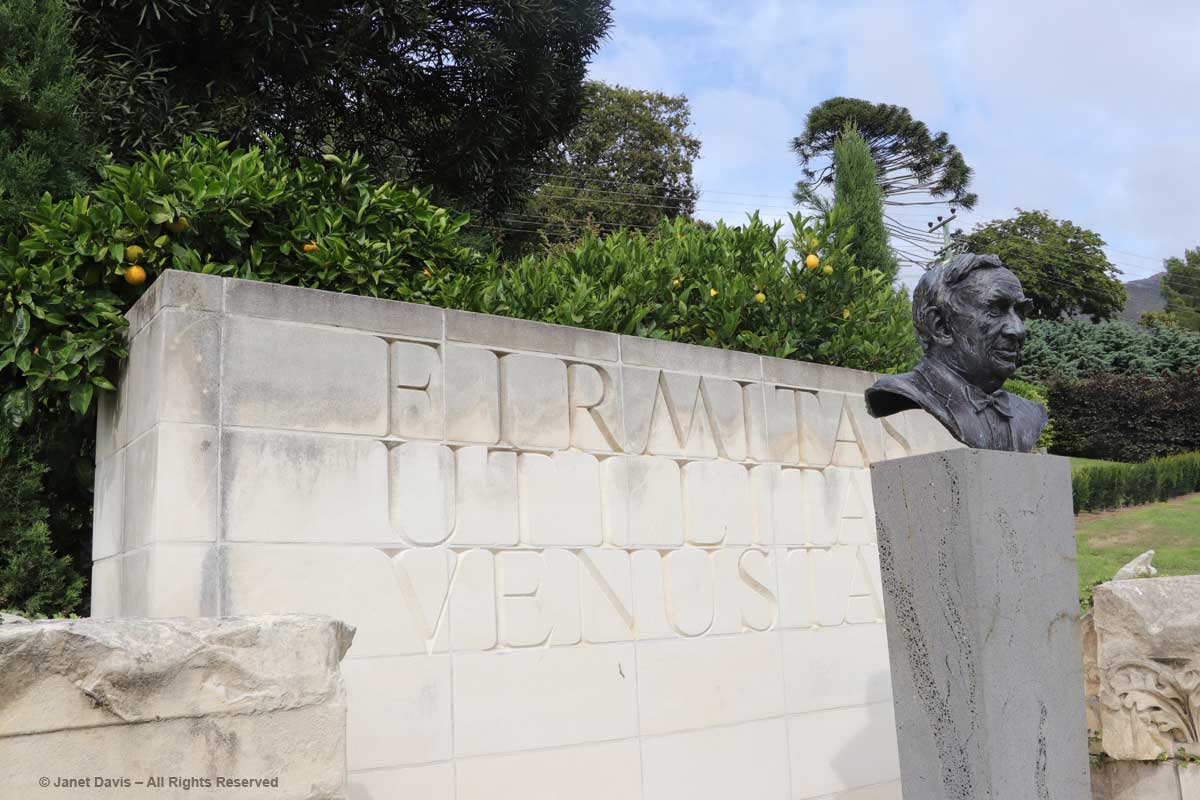
We were heading south on the Banks Peninsula to see two other gardens made by brilliant, obsessive gardeners. It would be a garden touring day like no other (and I’ve been on many tours). But as to this part of Canterbury, I will let Sir Miles Warren have the last word. Filmed in 2016, it relates to the city he loves, a city whose architectural heritage owes much to the work of Warren and Mahoney Architects, a city working to recover. Be sure to watch until the end, when he asks the question I would also put to you. And the answer: “If you haven’t yet, why not?”
https://www.youtube.com/watch?v=bh8YF5XluCw

